Maps & Merlot

African Safari Travel Tips: 20 Top Things to Know Before Going on Your First Safari
Welcome to the wild and wonderful world of African safaris! If you’re anything like me, you’ve probably dreamed about going on an African safari for as long as you can remember. The thought of being immersed in the breathtaking landscapes, encountering majestic wildlife, and creating unforgettable memories is simply irresistible. Well, guess what? I FINALLY had the opportunity to embark on my first safari, and let me tell you, it was an experience like no other. But here’s the best part: I learned so much along the way, and now I’m here to share my top 20 African safari travel tips with all of you.
From picking the right time to visit to packing the right gear, and from capturing jaw-dropping photographs to avoiding the less pleasant nuisances (dust, malaria), these tips will help ensure that your first safari is nothing short of extraordinary. So, grab your binoculars, pack your khaki, and join me as we delve into the 20 things you need to know before going on your first African safari!
This post may contain affiliate links.
Overview: African Safari Travel Tips
In case you need it, here are your top African safari travel tips and the best things to know before going on your first safari. I get into loads of detail below, but keep this list as a cheat sheet!
- Pick the Best Time to go on Safari
- Plan for At Least 1 Week
- Incorporate a Rest Day After Your Flight
- Plan for Laundry
- Dress the Part
- Prepare for Cold, Heat, Rain, & Sun
- Purchase (or Rent) Quality Camera Gear
- Take lots of Photos
- Bring Binoculars
- Decision Time: Private Guide vs. Group
- Wake Up Early
- Bathroom on Safari
- Prepare for Dust
- Be Medically Prepared
- Enjoy Sundowners
- Patience is Key
- Communicate with Your Guide
- Bring Cash for Tips
1. Pick the Best Time to go on Safari
Choosing the best time to go on safari is a key factor in ensuring an incredible wildlife experience. I went to Tanzania in the first week of September, precisely when the Great Migration of wildebeest was putting on its grand show across the Mara River. From July to October, millions of wildebeest, zebras, and gazelle journey across the Serengeti in the “Great Migration.” But the real showstopper is the river crossing—wildebeest braving crocodile-infested waters and avoiding rampaging hippos. One word of advice, though: during popular times like the Great Migration, top safari lodges and tour operators can fill up over a year in advance.

However, it’s important to note that the best time to go on safari may vary depending on the specific wildlife sightings you desire and the region you plan to visit. Each season and month offers unique experiences and opportunities, from calving season to the epic river crossings.
In general, the dry season, which typically occurs in winter months, tends to be high season; vegetation is thinner and wildlife tends to congregate around water sources, making animals easier to spot. However, it’s worth noting that the dry season can also be the busiest and most expensive period, as it attracts a larger number of tourists.
On the other hand, you have wet season, which typically occurs in the summer months. The landscape becomes lush and vibrant, and you have more newborn animals. For example, wildebeest calving season usually occurs in the Southern Serengeti in the January-March timeframe, so if seeing baby wildebeest is your ultimate goal, this is your time to go! Although game viewing can be more challenging due to thicker foliage, the wet season tends to have fewer crowds and lower rates for accommodations.
2. Plan for At Least 1 Week
Stay longer than you think! When it comes to going on an African safari, it’s crucial to allocate enough time for your adventure. While you may be tempted to squeeze it into a few days, trust me, you’ll want to extend your stay. The captivating landscapes and incredible wildlife sightings deserve more than just a fleeting visit – every day is different and catching sight of the animals in their natural habitats almost becomes addicting!
I’d recommend allocating at least a week to your safari adventure. Plus, the flights from the US tend to be ridiculous (I think ours was around 30 hours), so I definitely was not in any hurry to get back on the plane and rush home. You won’t regret it, and your safari experience will be all the more rewarding.
3. Incorporate a Rest Day
After a long journey to Africa, it’s essential to allow yourself some time to rest and adjust to the new time zone before embarking on your safari adventure. Consider scheduling a rest day upon arrival to recharge your energy and acclimate to the surroundings. Use this day to relax, explore the area, and get a sense of the local culture. It will ensure that you start your safari feeling refreshed and ready for the incredible experiences that lie ahead.
I am usually not one to pencil in a rest day, but I cannot stress this enough. I landed at 10pm the night before and in no way would have been ready to go on safari the following day. Instead, I caught up on sleep, enjoyed a fresh breakfast, and then spent some time at Kikuletwa Hot Springs. If you’re going on safari in Tanzania and flying into Arusha, I would highly recommend this as a chill day 1 option. This is one of the key African safari travel tips for first-timers.
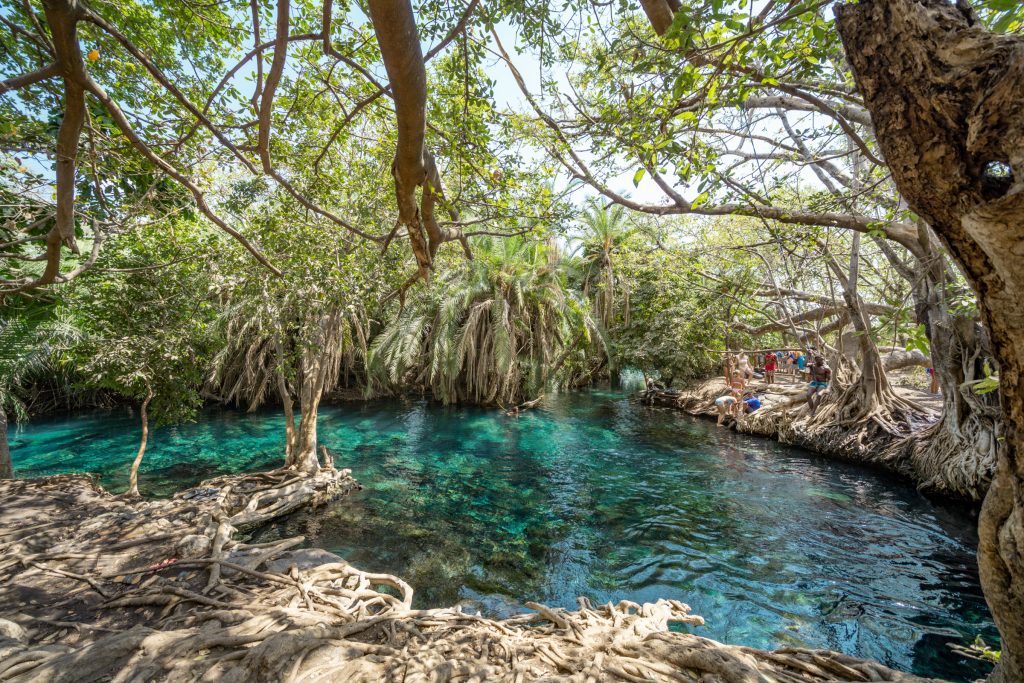
Recommended Tour : Kikuletwa Hot Springs Tour
4. Pack Light
When preparing for your African safari, it’s essential to pack light and efficiently. Keep in mind the baggage allowance on bush planes, as they often have strict weight restrictions. The restrictions also vary by airline. Some allow 15kg (33 lbs), while others allow 20kg (44lbs); some are super strict about hard-sided bags, while others are more lenient. It is definitely worth to investigate in advance.
When packing, choose versatile clothing items that can be easily layered and re-worn. This allows you to maximize your outfit options while minimizing the amount of luggage you need to bring. Plus, some safari camps offer laundry services, so you can refresh your clothes during your stay. I was able to get laundry done mid-trip, so I really only needed a handful of outfits. Plus, you can easily re-wear pants day over day.

5. Plan for Laundry
Speaking of laundry…when it comes to laundry on safari, many hotels offer convenient laundry services to keep your clothes fresh and clean during your adventure. However, it’s important to note that for cultural reasons, the staff do not handle the washing of women’s undergarments, so you’ll need to take care of these items yourselves.
Keep in mind that in more remote or mobile migration camps, laundry facilities might not be readily available, so seize the opportunity to do laundry when it’s offered. I had access to laundry at both of my traditional hotels, but it was not available at the migration camp. Making the most of the available options ensures that you’ll be able to pack minimally and have clean clothing throughout your safari experience.
6. Dress the Part
Dressing the part for a safari is one of the most talked about African safari travel tips. When venturing into the wild, it’s important to dress appropriately to adapt to the environment and weather conditions. Go for lightweight, breathable clothing in neutral colors such as khaki, light grey, light blue, and olive green. These colors help you blend in with the environment. If you’re wondering how in the world to look cute while rocking khaki, don’t worry! I put together a guide on what to wear on safari for women .
Related Post : What to Wear on Safari for Women: 10 Cute Safari Outfit Ideas
Choose long-sleeved shirts and pants to protect yourself from the sun, bugs, and prickly grass. Don’t forget a wide-brimmed hat to shield yourself from the sun’s rays and questionable hair days! Comfortable closed-toe shoes are a must for walking safaris, and I also preferred them even on game drives for whenever I exited the vehicle (bathroom time). Layering is key as temperatures can vary throughout the day, so pack a fleece for chilly mornings or evenings.

7. Prepare for Cold, Heat, Rain, & Sun
Africa’s climate can be unpredictable, so it’s crucial to come prepared for all types of weather conditions. While the days may be warm and sunny, the evenings and early mornings can get quite chilly. Pack a mix of lightweight and warm clothing, including long-sleeved shirts, fleece jackets, and a good pair of comfortable closed-toe shoes. Don’t forget a hat, sunglasses, and sunscreen to protect yourself from the African sun. Additionally, pack a raincoat in case of sudden rain showers.
During my time in Tanzania, I can confirm that I experienced 40 degree swings in temps during a single day, sudden downpours, tons of dust, and plenty of African heat. Being prepared for various weather scenarios ensures that you can fully enjoy your safari adventure, rain or shine.
8. Purchase (or Rent) Quality Camera Gear
Photography plays a significant role in capturing the magic of your African safari adventure. Invest in quality camera gear to ensure you can capture those memorable moments of hippos yawning, lion cubs playing, and rhinos charging across the Serengeti at sunrise (yes, we saw all of that!)
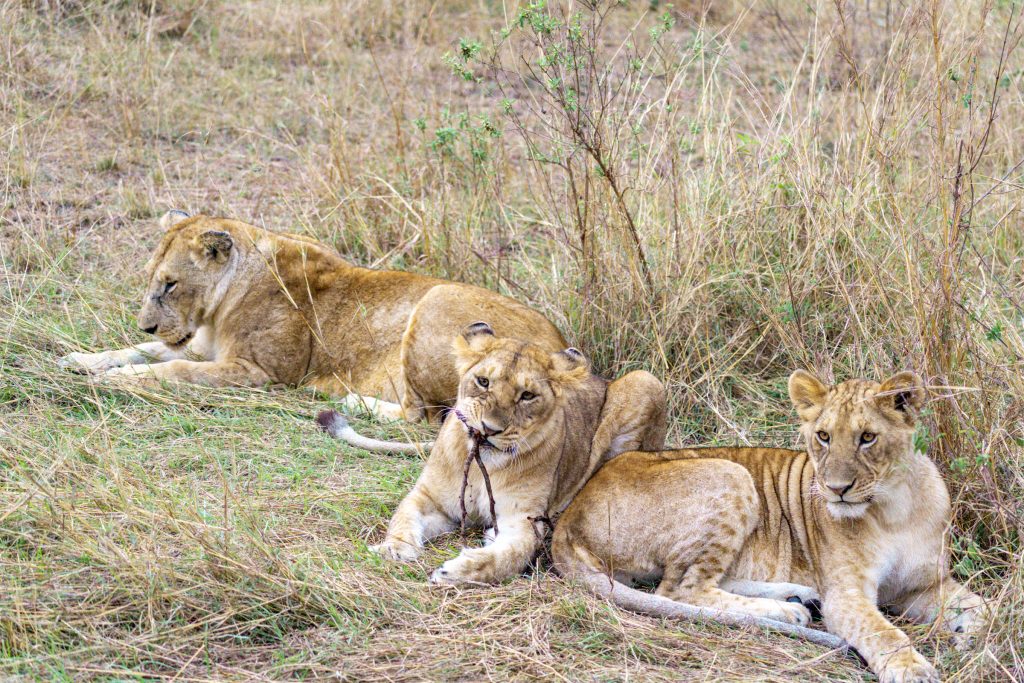
If you don’t have your own equipment, consider renting professional-grade cameras and lenses from reputable providers. Having the right gear will enable you to capture stunning wildlife shots and breathtaking landscapes. You may be tempted to quit your job and become the newest member of the Nat Geo photography team…I know I was! Make sure to familiarize yourself with your equipment before your safari, so you can make the most of every photographic opportunity. Safari photography is very different than my traditional travel photography (people and landscapes), so I’d definitely recommend exploring the best camera settings for safari photography and these African safari photography tips !
Related Post : Best Camera Settings for Safari Photography
9. Take Lots of Photos
Prepare to channel your inner wildlife paparazzi! On the first day of your safari, you might find yourself in a frenzy, snapping away at zebras like a camera-crazed tourist. And that’s perfectly understandable (and definitely what I did)! However, as the days go by and you’ve accumulated numerous wildlife photos, you’ll likely become more selective in snapping pictures. By the last day, the only times a zebra made it onto my camera roll was if it was an adorable baby, all fuzzy and irresistibly cute, and the one time when a zebra walked onto the airport runway in the Serengeti – that was a sight to see!
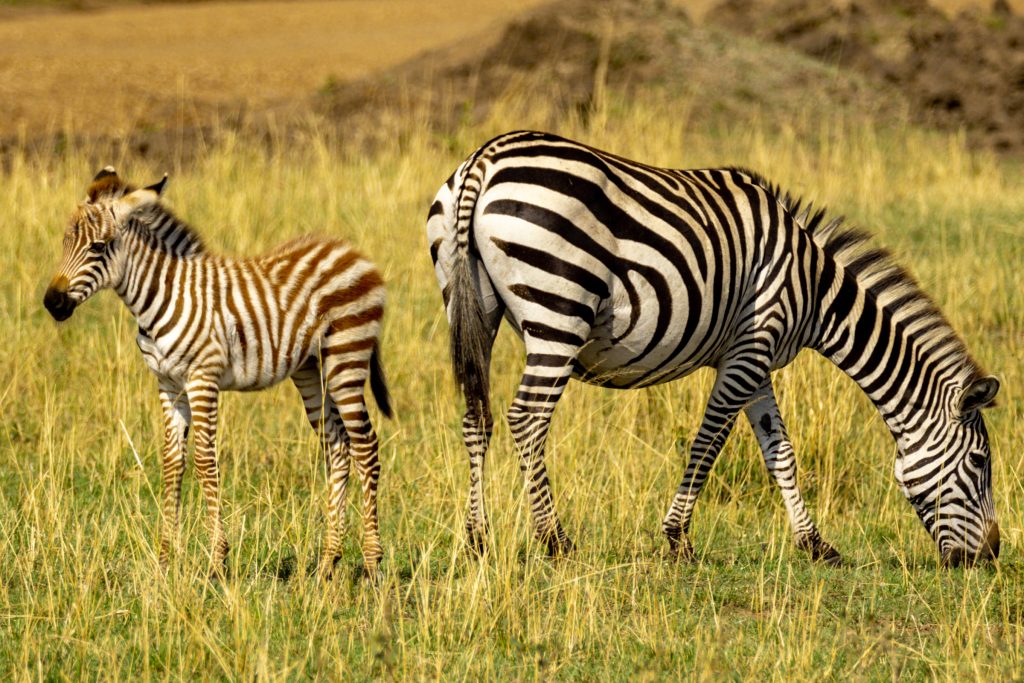
In any case, let your camera lens capture the extraordinary moments, the mischievous antics of wildlife (we got to see two male giraffes in a ridiculous neck-swinging fight over a female giraffe), and the jaw-dropping sunsets over the Serengeti. Get creative, experiment with different angles, and remember to take the time to appreciate the animals in person and not just through your camera’s viewfinder.
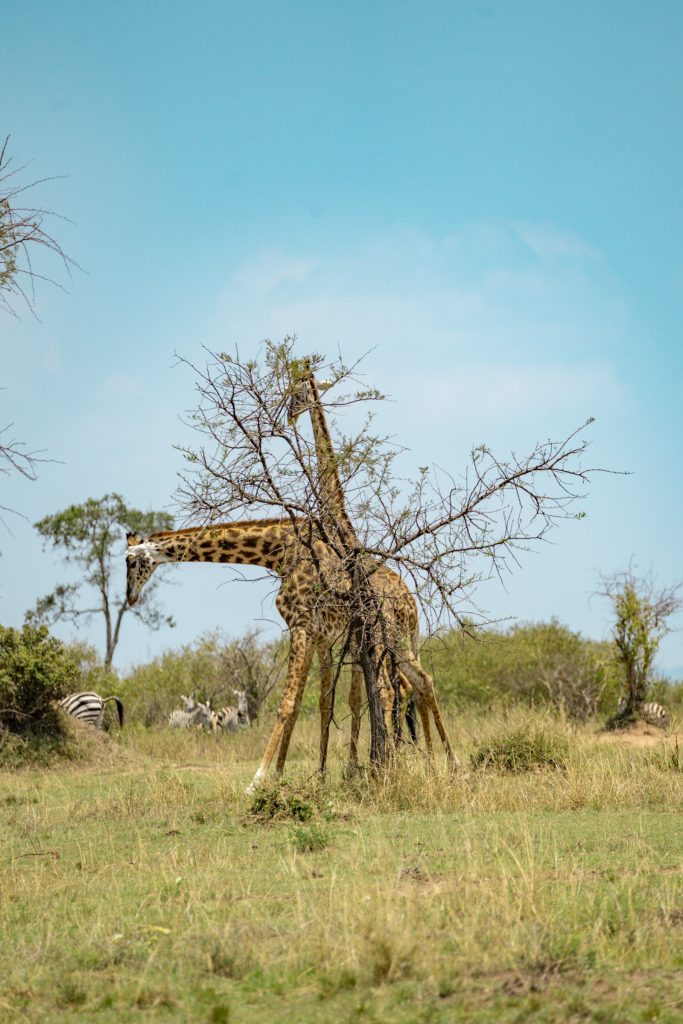
10. Bring Binoculars
Bringing a pair of binoculars on your safari is one of my top African safari travel tips. It allows you to get a closer look at the incredible wildlife that may be far off in the distance. Even with contacts, I have pretty horrendous eyesight, so my binoculars were an absolute lifesaver! We spotted our first lion through the binoculars and caught a good view of a leopard lounging in a tree, as well. Some safaris do provide binoculars for their guests, but it by no means a given, so I would recommend checking in before your safari.
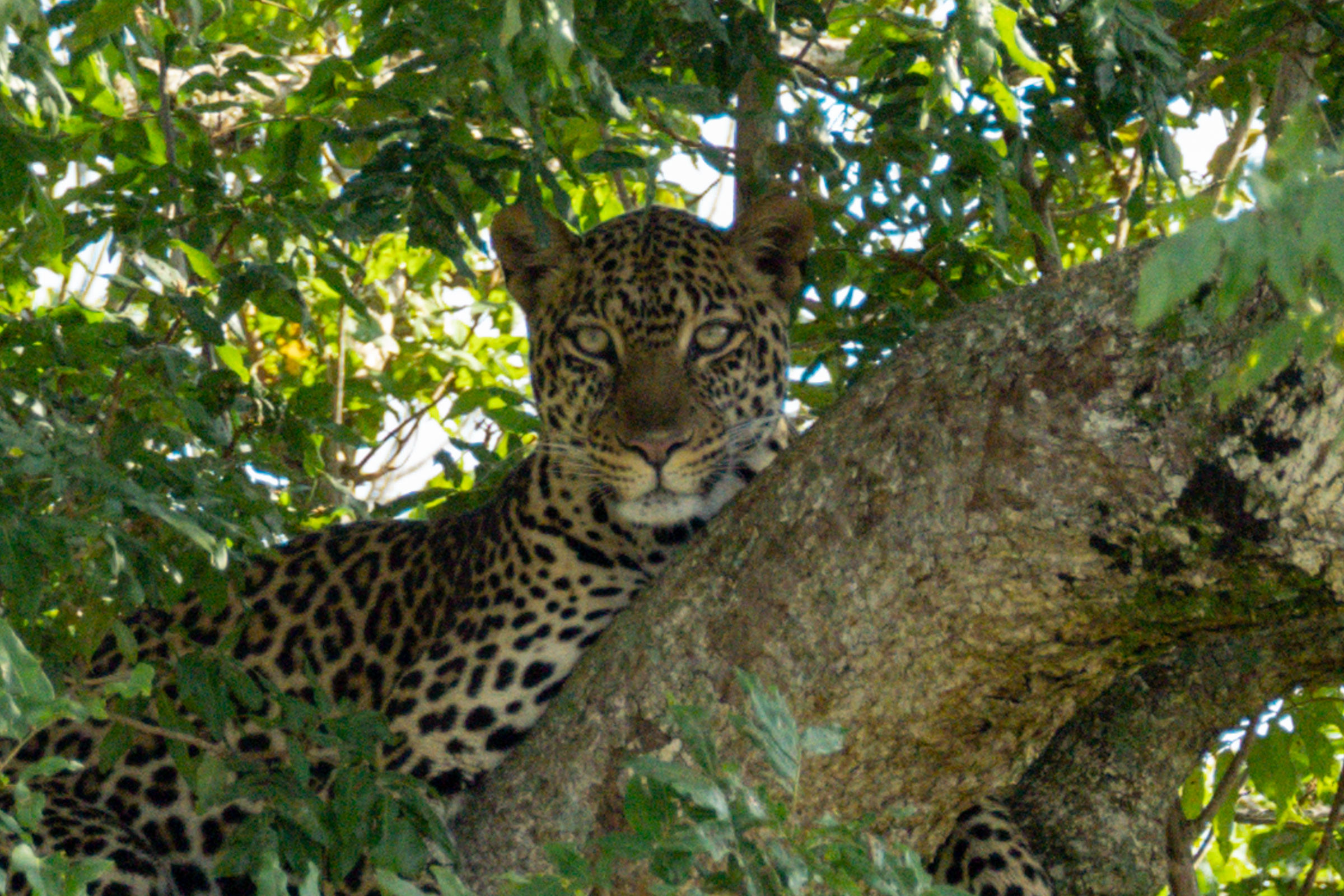
11. Decision Time: Private Guide vs. Group
When planning a safari, one important decision to make is whether to choose a private guide or group safari experience. Group safaris are typically slightly cheaper as the costs are shared among a larger number of participants. However, keep in mind that group safaris typically have fixed departure times and itineraries, which may limit your flexibility. Additionally, you’ll be sharing the safari vehicle with other travelers, all of whom may have different preferences. This can sometimes lead to compromises on the specific sightings or activities you’d like to prioritize. Another aspect to consider is the seating arrangement in the vehicle. With a group safari, you may not always get the best seat for optimal wildlife viewing or photography.
On the other hand, private safaris offer more freedom and flexibility. While they tend to be more expensive, you have the luxury of designing your own itinerary, choosing your preferred departure date and time, and tailoring the experience to your specific interests. You’ll have the vehicle all to your group, ensuring maximum comfort and the freedom to spend as much time as you desire at each sighting. For me, I decided on a private guide so that I could have all of the flexibility in deciding my itinerary. If you are comfortable with the higher budget, I would absolutely recommend this option.
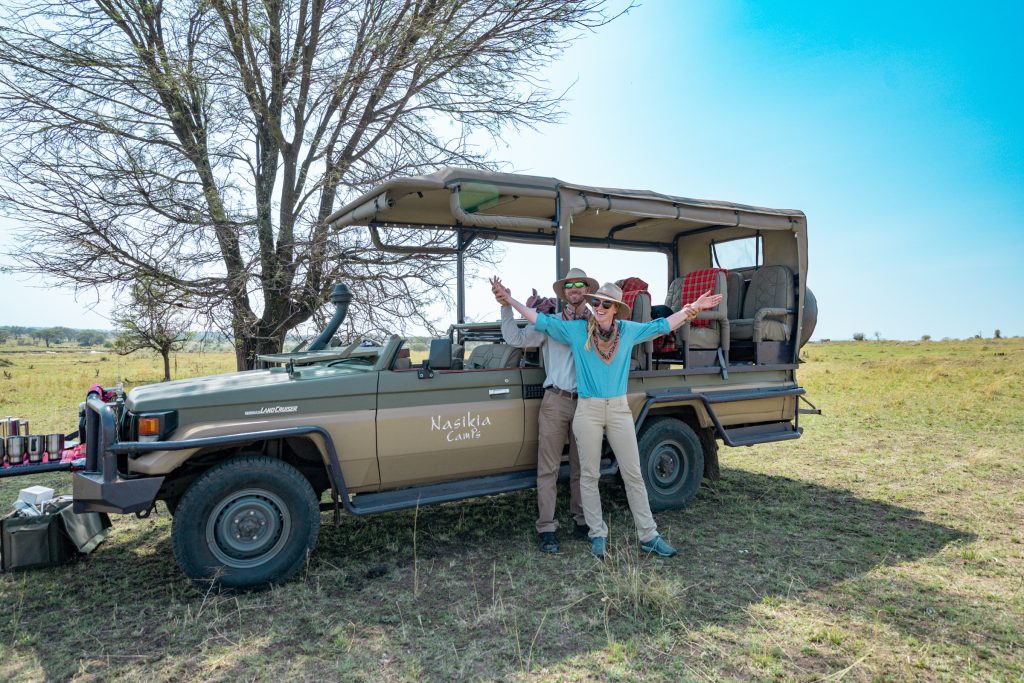
12. Wake Up Early
One of the most thrilling aspects of an African safari is observing wildlife in their natural habitat. Animals are most active during the early morning and evening, making these the prime times for game drives and wildlife viewing. Trust me on this…most times we saw lions during the day, they were stretched out and snoozing.
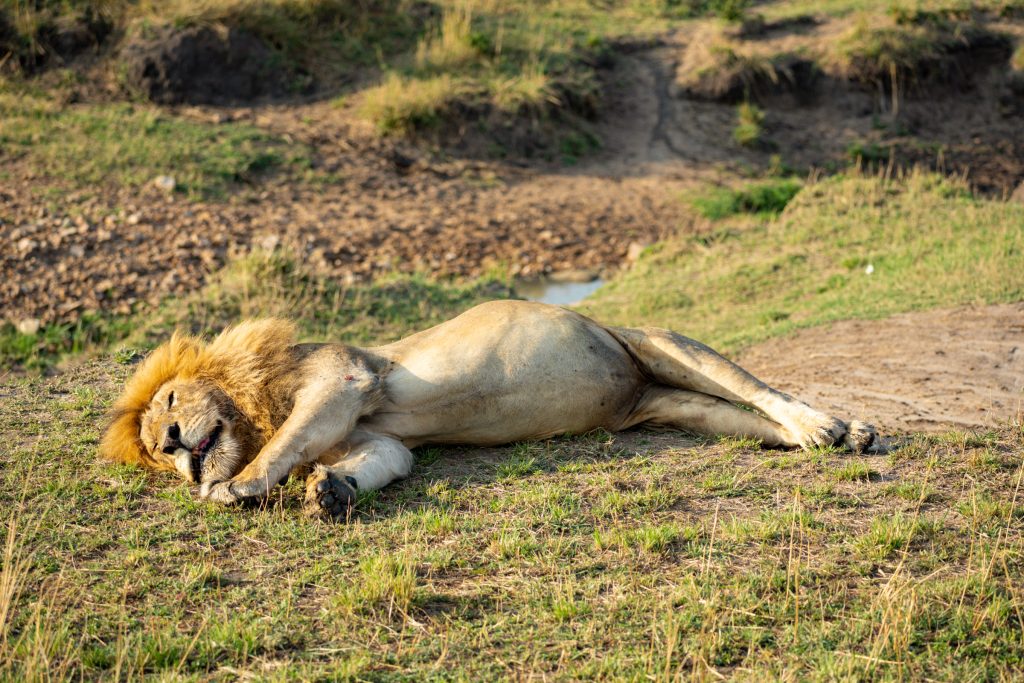
Set your alarm clock and embrace the early wake-up calls. By venturing out at dawn, you’ll have the chance to witness incredible animal behaviors, catch stunning sunrises over the Serengeti, and enjoy the peacefulness of the wilderness before the heat of the day sets in.
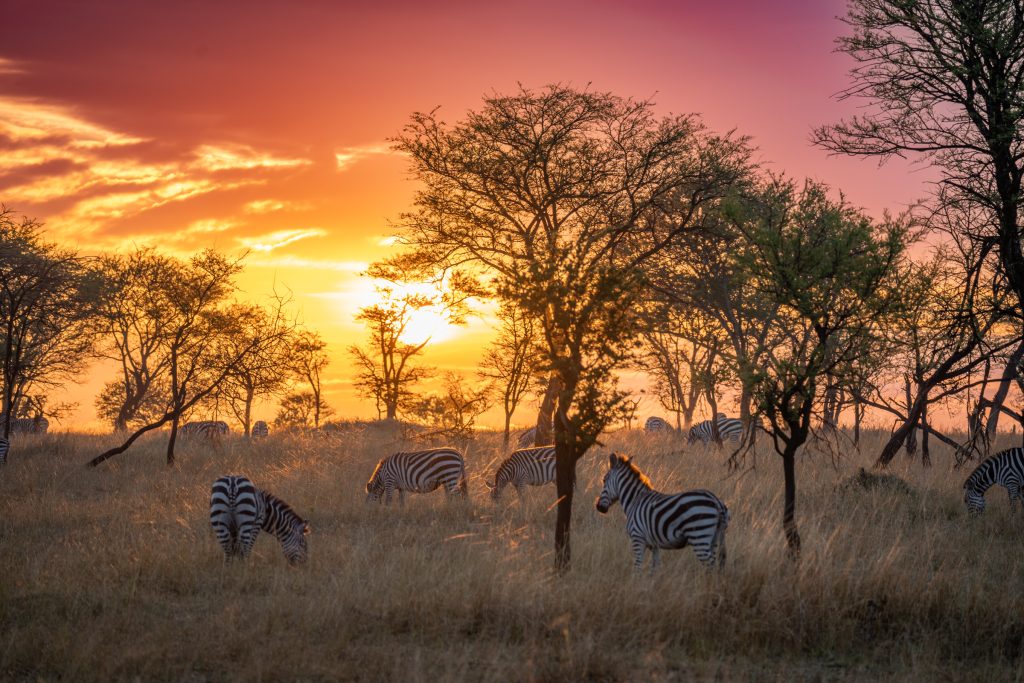
13. Bathroom on Safari
When nature calls on safari, it’s a unique experience that requires a bit of creativity. The bathroom situation in the wilderness is obviously quite different from the comforts of home. To give you an idea…my most common “bathroom” on the Serengeti was behind any number of tall termite mounds.
Remember, your safari guide is there to ensure your safety, and that even extends to bathroom breaks. Before bathroom breaks, they’ll scout the area to make sure it’s clear of any potential danger. Ladies, you might hear your guide suggesting to “pick a flower” as a discreet euphemism, while gentlemen may be asked if they’d like to “check the tires.” It’s all part of the adventure, so embrace the humor and follow their lead. Just remember to respect the environment and leave no trace behind.
14. Prepare for Dust
Dust, the not-so-glamorous companion on your safari adventure. As a contact lens wearer, I quickly learned the art of keeping my eyes protected from the ever-present dust. Carry extra contact lens solution, eye drops, and a spare pair of lenses, just in case. I’d also recommend keeping your sunglasses on – even when it’s not that sunny – they work great as an extra layer of protection for your eyes. A handy bandana is also helpful to pull up over your mouth during particularly dusty patches.
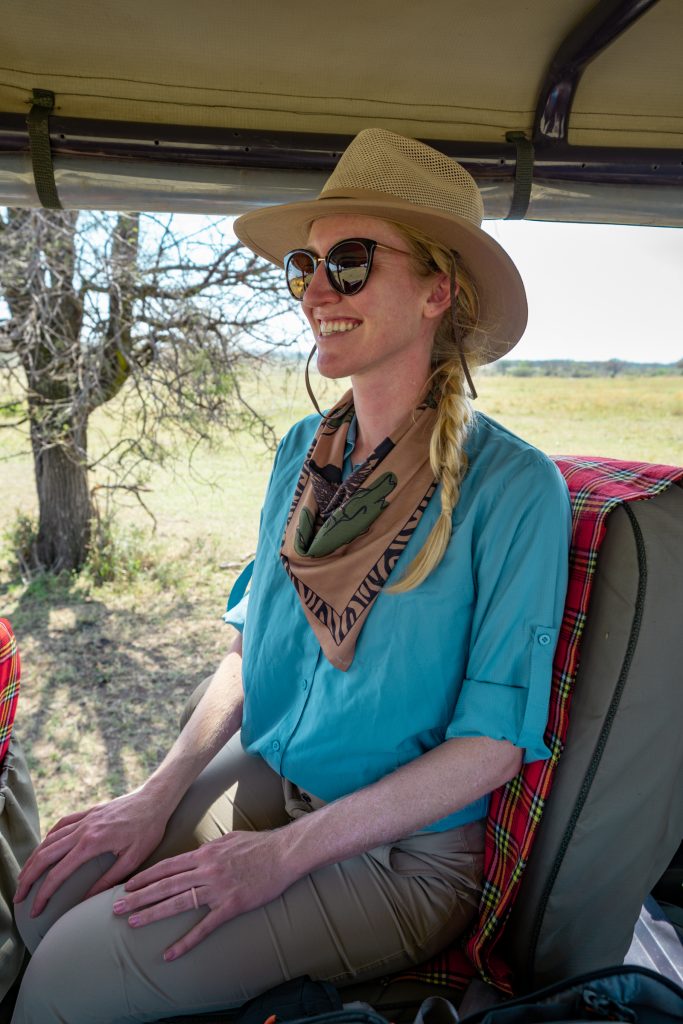
And don’t forget about your camera lenses! Dust has a sneaky way of finding its way onto them, causing potential smudges. Keep a lens cleaning kit in your day bag for quick lens cleaning, and keep your lens cap on when not using the camera. Remember, dust may be inevitable, but with a bit of preparation, you’ll be ready to conquer the dusty safari trails like a pro!
15. Be Medically Prepared
Being medically prepared is one of the key African safari travel tips for first-timers. Before your trip, make sure you visit a travel clinic or consult with your healthcare provider, and check the CDC’s recommendations to ensure you are up to date on any recommended vaccinations.
In addition, make sure to pack some bug spray to protect you from those pesky bugs and potential diseases they may carry. You won’t find a convenient CVS in the heart of the Serengeti, so it’s crucial to pack a well-stocked first-aid kit that includes essential items like band-aids, Cortaid, Advil, Pepto, and any personal medications you may require. Taking these precautions will provide peace of mind and ensure that you’re ready to handle any minor health concerns that may arise during your safari expedition.

Like this post?! How about…
14 Outstanding African Safari Photography Tips
16. Enjoy Sundowners
Ah, the magical time when the sun begins its descent over the Serengeti. It’s the perfect moment to unwind and indulge in a tradition long cherished by safari-goers – the legendary “sundowners.” Picture this: sipping on your favorite beverage, feeling the gentle breeze on your face, and toasting to the day’s wildlife encounters. This was definitely one tradition I could get behind. Cheers to nature’s happy hour!
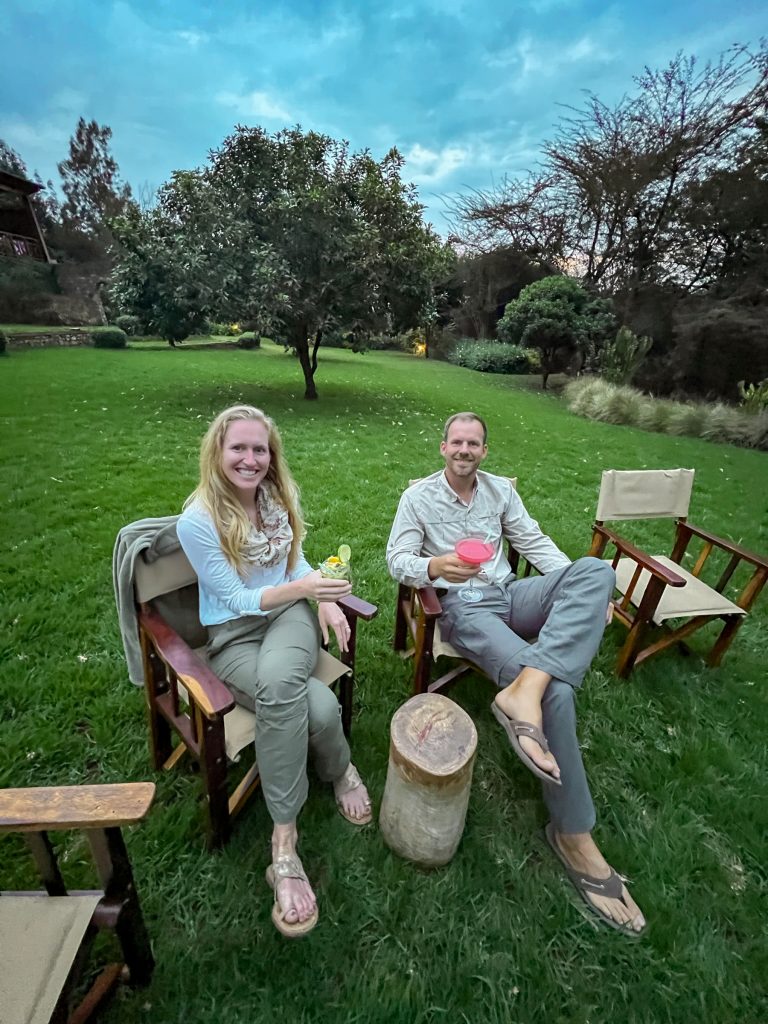
17. Snack Time
Snack time on safari is a delightful surprise that adds an extra touch of magic to your wildlife adventure. During my first game drive in Tarangire National Park, our safari guide announced a break for morning tea and snacks. I was totally unsure of what to expect considering that we were surrounded by water buffalo and in the middle of nowhere. Cue my surprise when we get hot tea, delightful biscuits, and more – all served on a checkered tablecloth! And it wasn’t just our first day…every morning and afternoon that we were out on safari, we were treated to a delightful spread for snack time. I was 100% on board with this custom!
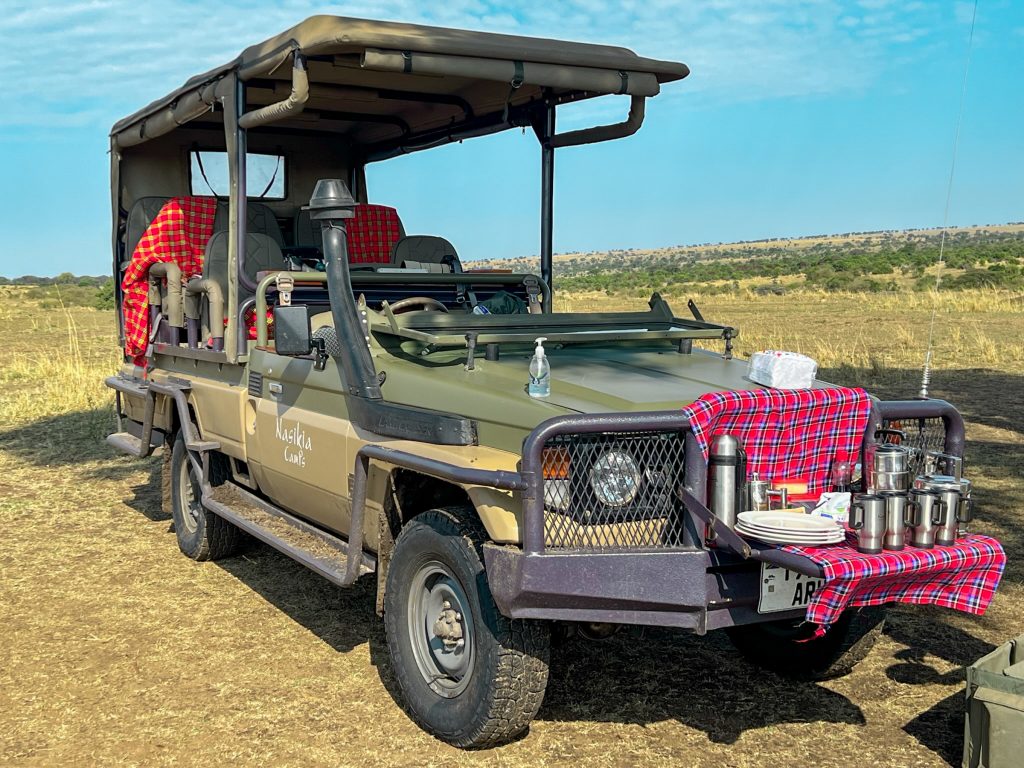
18. Patience is Key
When it comes to safari adventures, patience truly is key. Animals in the wild operate on their own time, and definitely don’t adhere to any schedule. It’s important to embrace this unpredictability and understand that the best sightings often come to those who wait. If you find yourself waiting at a specific spot during your game drive, trust that your guide has a good reason for it. Safari guides are experts in their field and have an uncanny ability to anticipate animal behavior.
To give you an idea…for the wildebeest river crossing (photo below), we waited on and off for nearly six hours! During that time, we would sometimes go and look at other animals, but we never strayed far from the river. We had seen smaller crossings while we were there, but this crossing was on a completely different scale with thousands of wildebeest all crossing at once. The crossing was a huge bucket list item for me, and I am SOOO glad that I had the patience to wait it out. Even if you impatient like me, remember that patience is one of the most important African safari travel tips.
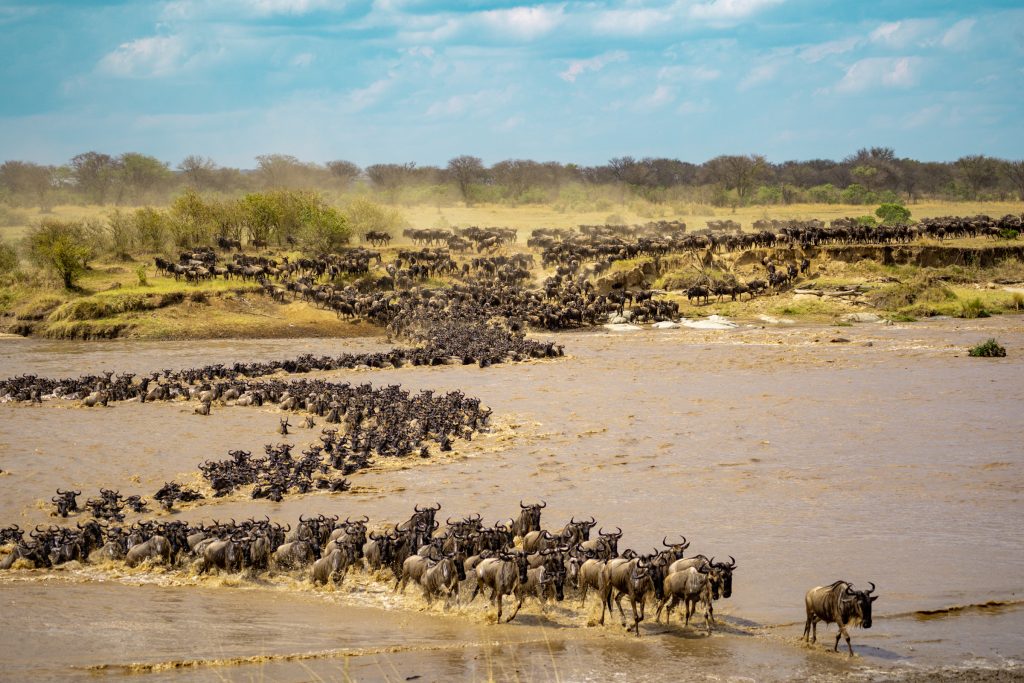
19. Communicate with Your Guide
When on safari, don’t hesitate to ask your guide plenty of questions. They are a wealth of information and have quite literally studied for years to become a guide. However, it’s important to be mindful of your surroundings and respect the environment. You do not want to be “that person” who disrupts the tranquility by loudly calling out or making unnecessary noise at inopportune times. Instead, observe quietly and engage with your guide at appropriate moments.
Aside from learning from your guide, you also need to respect your guide and follow all safety rules. Respecting the instructions of your guide ensures that you navigate the safari experience in a way that minimizes potential risks. Safari guides are well-versed in reading animal behavior and will maintain a safe distance to ensure that the animals’ natural behavior is not disturbed while still working to provide you the best safari experience possible. Remember that we are guests and need to respect both the animals and their environment.
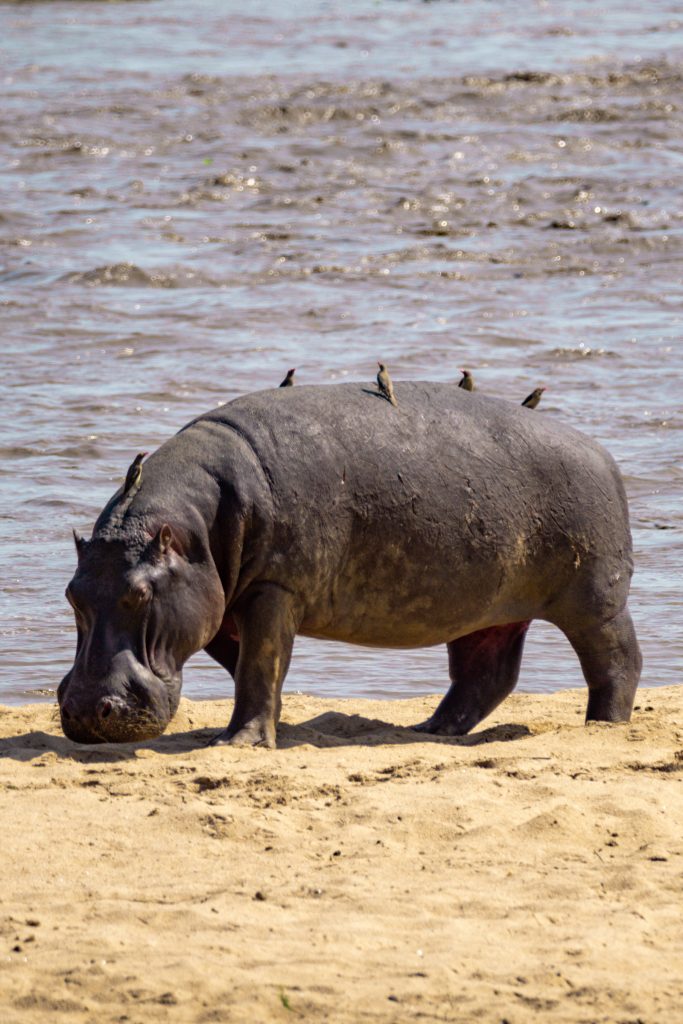
20. Bring Cash for Tips
The last of your African safari travel tips is to bring plenty of cash to tip! Tipping on safari is an important aspect, as it helps show appreciation for the exceptional service provided by the staff. While tipping practices can vary between countries and lodges, it’s highly recommended to have some cash on hand to tip the guides, drivers, porters, camp staff, etc. Based on your destination and level of stay, I’d look into tipping suggestions to ensure you’re offering an appropriate amount. Remember, tipping is not mandatory, but it’s a gesture of gratitude that can make a positive impact on the hardworking individuals who make your safari experience truly remarkable.
That wraps up my top 20 African safari travel tips for first-timers. With these African safari travel tips in mind, you’ll be well-prepared to make the most of your adventure. From choosing the right time to go, packing the essentials, and embracing the thrill of wildlife encounters, your journey into the wild promises unforgettable moments and treasured memories. Remember, being a first-timer is an opportunity to embrace the unknown and let the wonders of the safari unfold before your eyes. Happy safari-ing!
For some more travel inspiration, check out some of the posts below!
Tanzania : Kikuletwa Hot Springs: 14+ Things to Know Before You Go Safari Photography Camera Settings : Best Camera Settings for Safari Photography Safari Photography Tips: 14 Outstanding African Safari Photography Tips Safari Outfits: What to Wear on Safari for Women: 10 Cute Outfit Ideas Tented Safari Camps : Top 13 Things You Always Wanted to Know About Tented Camps Tanzania Itinerary : Tanzania 7 Day Itinerary
You May Also Enjoy:
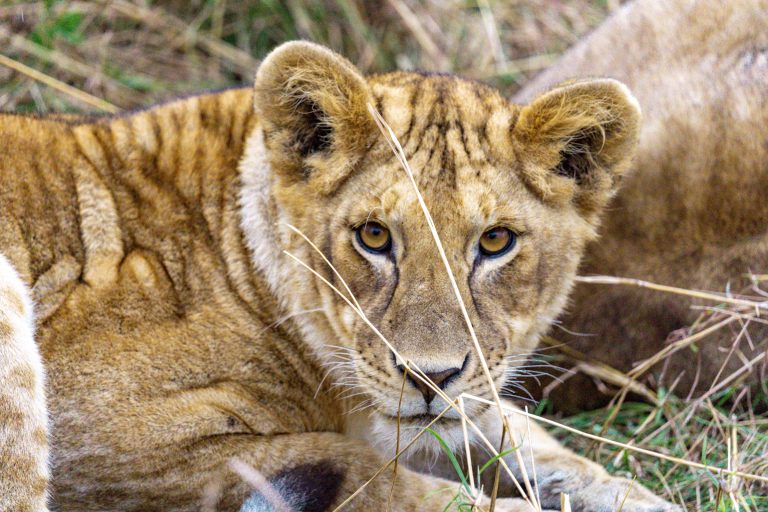
Best Camera Settings for Safari Photography
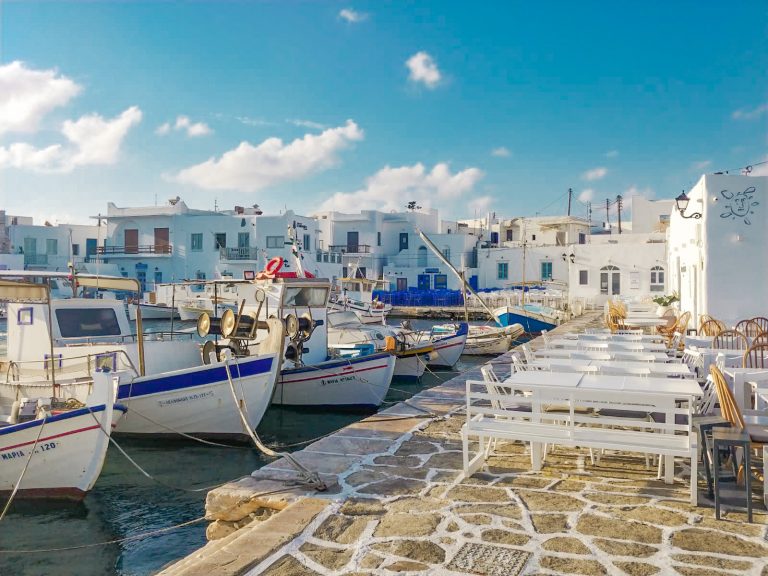
20 Best Things to Do in Naoussa, Paros
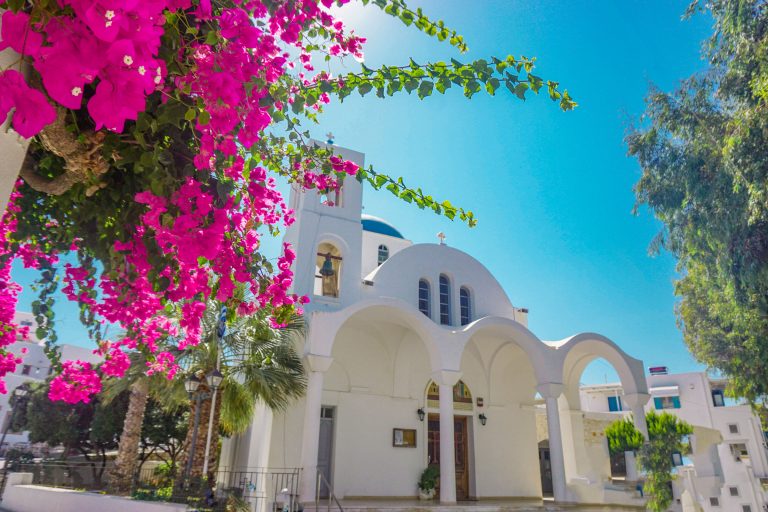
14 Best Instagram Spots on Paros (With Maps!)
Pin for later:.
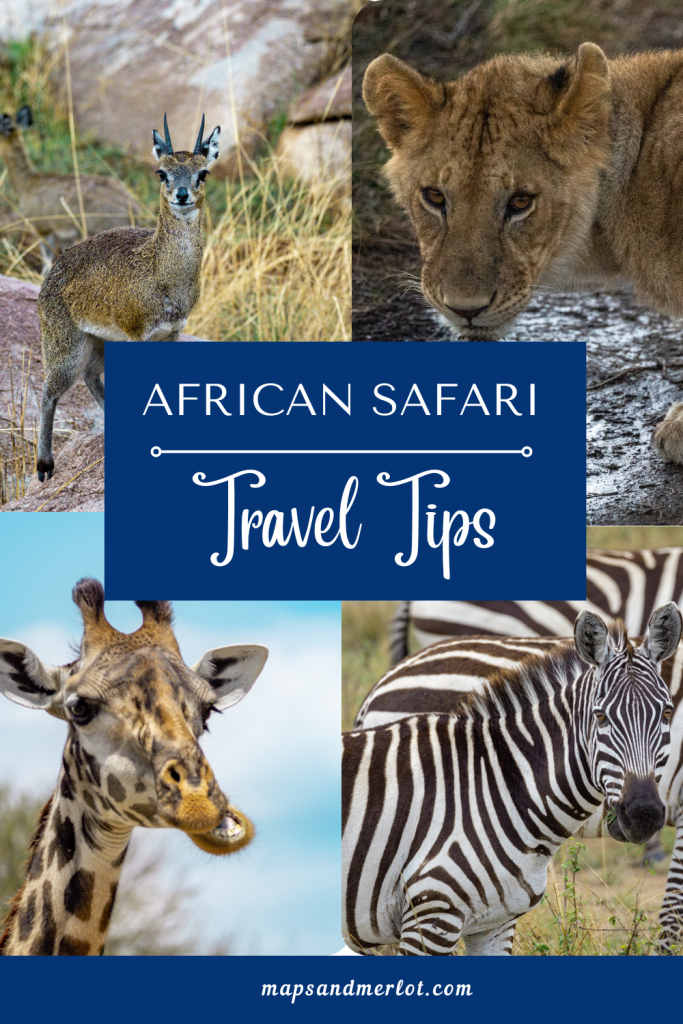

African safari tips: 20 things to know before going on your first safari in Africa
Planning to travel to Africa? Here are the important African safari tips that you should know before going on your very first African safari.
Going on an African safari for the very first time is a dream come true for many travelers. For most, the idea of traveling to Africa seems farfetched or something that could never happen given a number of reasons.
But when you finally see your dream coming to life, fear, and excitement all head straight through the roof at the same time.
With all that happening, realistic questions start kicking in on how you should actually plan or behave on your very first African safari.
Now as a first-timer, it’s not surprising not to know what to expect or better yet what to do on your first safari in Africa.
So that’s why I am writing this post to give you all the important African safari tips to prepare you as you enjoy Africa’s wildlife.
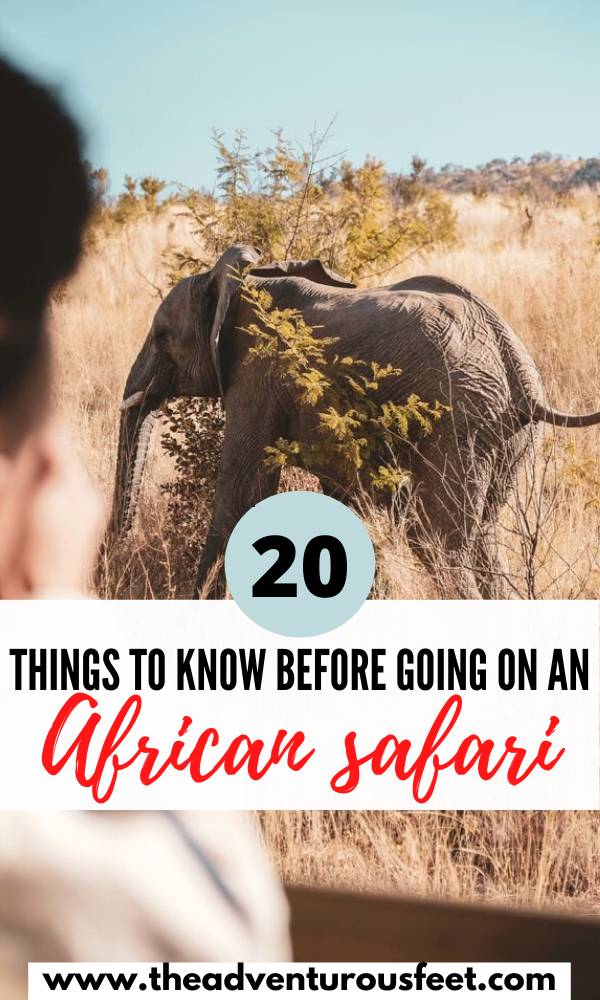
Disclaimer* This post contains affiliate links and I might earn a small commission if you purchase through them but with no extra cost to you. This commission helps to keep the lights on here. You can read our privacy policy for more details. Thank you for supporting the Adventurous feet
Why should you trust me to give you these safari tips for Africa? Well aside from the fact that I live in Africa, I’ve been on quite a number of incredible African safaris.
From the deep ends of Queen Elizabeth national park in Ugand a , and Chobe National Park in Botswana which boasts the highest number of African Elephants to the magical Okavango Delta, I can surely say that I’ve added a number of African safari tips to my sleeves that will be extremely useful for first-timers.
Now you might be thinking that having done a number of safaris in Africa, perhaps I get bored or something!
No, I still get so excited every time I go on a safari and every experience is different but incredibly rewarding.
I could literally visit all the National parks in Africa and still want to do more game drives. It’s a truly magical experience.
So before I get sidetracked into telling you how beautiful and exciting it is to go on a safari, let’s get to the important African safari tips that you came for to help you fully prepare for your once-in-a-lifetime adventure in Africa .
Read this before you go: 15 Things to know before traveling to Africa
Best African safari tips for first-timers
Here are the best African safari tips you need to know before your trip.
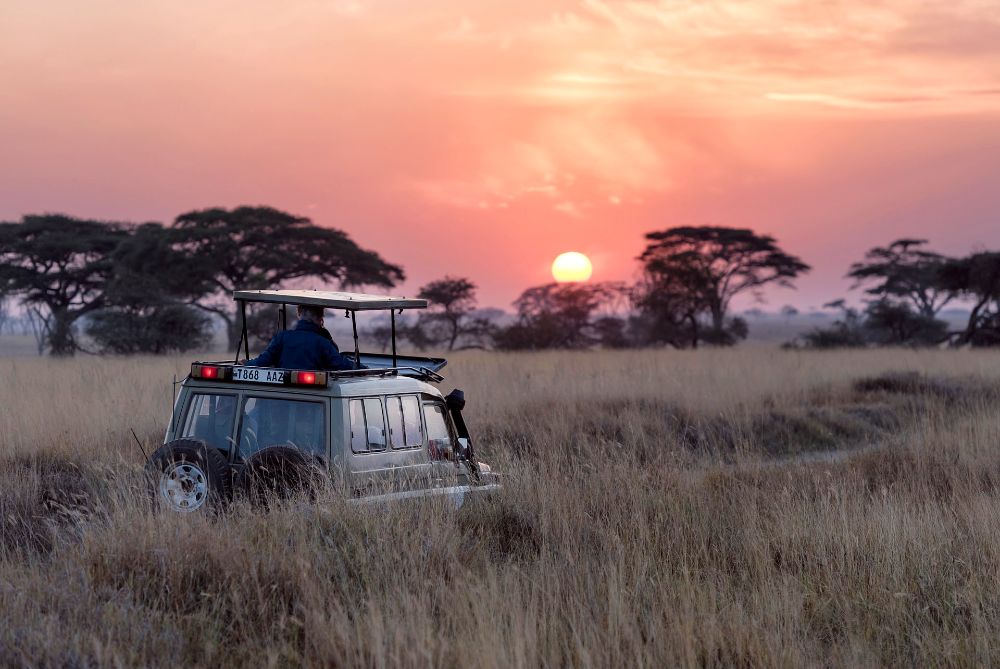
1. Find out the best time to go for an African safari
Although Africa’s wildlife will stay throughout the year, not every time is best for wildlife viewing and this is why you need to research the best time to go for a safari in that exact place you’re planning to visit.
The time of the year you visit can make or break your trip. Visiting in the rainy season will keep the animals hidden but will also hinder you from moving freely since the dusty and sandy roads of Africa will be extremely hard to dry on.
For example, if you plan to go for a safari in Uganda , the dry season (June, July, August, September, January, and February ) is the best time to visit since most animals head to the water holes to drink which makes animal spotting pretty easy.
If it’s the annual wildebeest migration you want to experience (which btw is the greatest wonder in wildlife that everyone should see), then you might want to consider either visiting Kenya or Tanzania in the dry months of June to October since both countries showcase this incredible wildlife spectacle.
I guess you now understand why it’s pretty important to choose the right season to go for an African safari. But generally, the drier seasons of most countries are the perfect time for wildlife viewing.
However, drier doesn’t mean summer in some countries. Take an example, Botswana’s dry season is their winter which makes the best time to visit between May and the beginning of October.
So don’t just generalize everything, get to know the best time to visit each African country individually to come up with a perfect itinerary.
Related post: Things to know before backpacking Africa
2. Wake up early
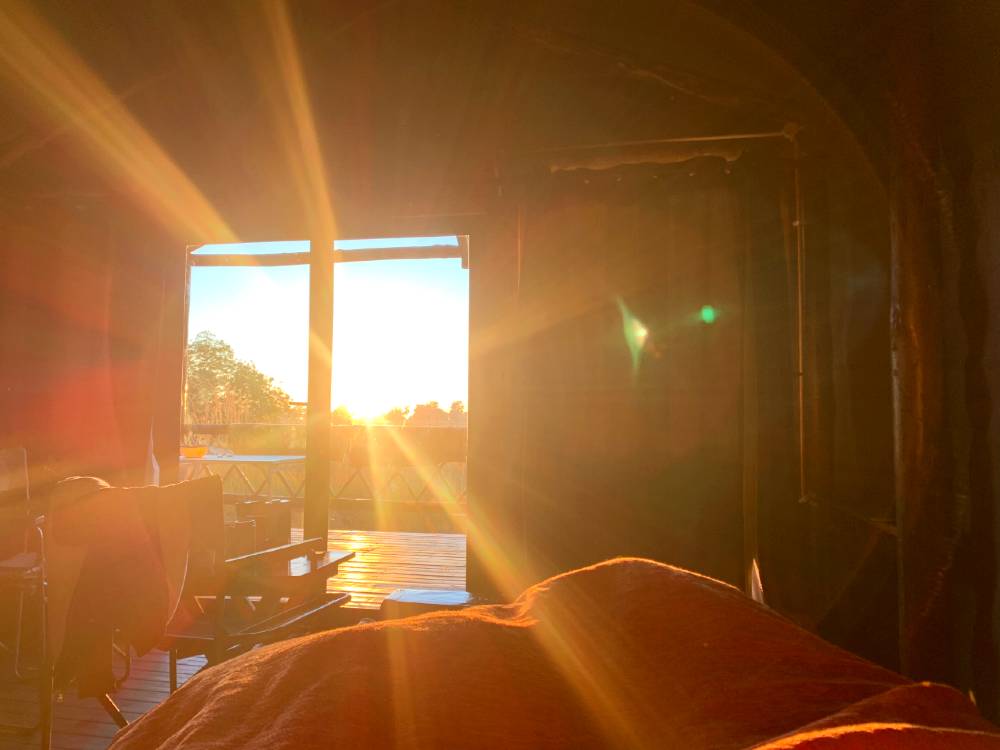
Other than getting that picture-perfect photo of the amazing African wildlife with a backdrop of the rising sun, there are high chances of spotting wildlife in the morning which is why it is crucial to wake up early.
Though the word “morning” might mean 10 am to some, wildlife viewing kind of morning is around 6 30 am – 7 am.
In the morning, wild animals are the most active hence moving closer to places where they can be spotted easily other than in the afternoon where they’re all taking shelter from the scorching sun.
And it’s for this reason that most game drives are during the morning hours and in the evening.
So get your day’s equipment ready the day before and if you’re not an early bird, turn on the morning alarm clock to witness the magical African wildlife unfold.
3. Be on the look-out to spot the wild animals
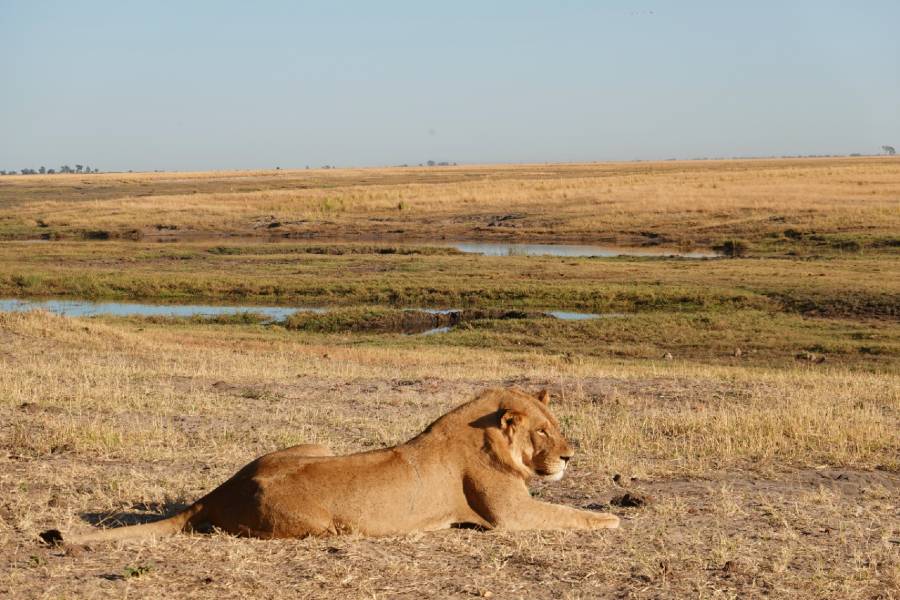
One of the important tips for an African safari for first-timers is to always be on the lookout while game-driving.
Safaris are absolutely different from zoos which means that you can drive a long journey without seeing the big fives.
Though some animals are pretty easy to see without even trying, big cats like lions, Leopards, are Cheetahs can be hard to spot.
So as you drive along, look outside vividly not to miss anything.
This is actually why it can be sometimes challenging to do a game drive alone since you have to drive and also spot the animals.
It’s always better to have someone with you or better yet hire a tour company which will make spotting animals easier.
Because when you miss seeing one, chances are that someone else in the touring car has seen it, and guides are usually more skilled at spotting the big cats.
Related post: Best countries to visit in Africa
4. Ask a lot of questions
Another tip for an African safari is to ask a lot of questions. If you’ve booked a game drive with a tour company, the tour guide assigned to you is there to answer all your questions.
So ask away and remember that there is nothing like a dumb question.
The only way you will get the most out of your trip is to be inquisitive as much as possible as that’s how you will learn about the African animals and the wild in general.
You can ask about the behaviors of some animals, what the guides think about them – literally anything you want to know and the guides are knowledgeable enough to give you answers.
Try to also be friendly with the guides as that will make them closer to you — something that will encourage them to share even beyond just the animals.
If you’re doing a self-drive, you can ask the lodge or campsite’s staff where you’re staying for anything you might want to know.
You can ask them where there are higher chance of seeing the big five at a certain time of the day or the best loops to take and they will be happy to give you answers.

5. Take your time to enjoy the wildlife
Africa boasts one of the most beautiful wildlife if not the best in the world and it would be a shame to rush through it during a game drive.
There is so much to see and different safaris will treat you to a different kind of landscape that you ought to appreciate.
When you spot animals, park your car, or ask your guide to stop to admire the animals. You might just get lucky to see some of the spectacular scenes if you take your time.
Whether it is seeing animals mating, fighting, or a lion chasing down its prey, all this can happen if you take your time to fully enjoy the safari.
However, taking your time doesn’t mean ”hogging” the animals for hours. If you were the first one to see a big cat and your car is right near it, don’t spend 2 hours there. Move on so that others can also enjoy it.
Related post: Must have adventures in Africa
6. Take lots of photos
While on a safari, make sure that you take lots of photos to relive your trip even years later but to also capture the incredible beauty that you can only find in Africa.
However, when I say take a lot of photos, I don’t mean going crazy and taking 500 photos of an elephant.
I have to say I was guilty of this on my very first safari. I always wanted to take the perfect shot and that put me over the edge – taking photos of everything and I mean everything.
However, taking lots of photos will mean that you have enough memory to store them. So carry these extra memory cards to make sure that you don’t miss capturing incredible moments due to limited memory.

7. Bring a good camera
While still about capturing the amazing wildlife on an African safari, you’ll need to take a good camera.
A good camera is everything on a safari to fully bring out the beauty that Africa boasts.
If you’re not sure which camera you should take on a safari, you can draw inspiration from this list of the best cameras for travelers.
8. Follow the rules and listen to your guide
Many times, your guide will give you a number of rules to follow and if you’re not going with a guide, there are always rules that the parks’ administration put up – make sure that you follow them.
Most of those rules are for your own safety and others for the safety of the wild animals.
Some of the rules might seem really “basic” but they can make or break your trip. A few of the safari rules to follow include;
- Not getting out of the safari car
- Not feeding the animals
- Paying maximum attention if you’re on a walking safari
- Not disturbing the animals – don’t get carried away by the excitement.
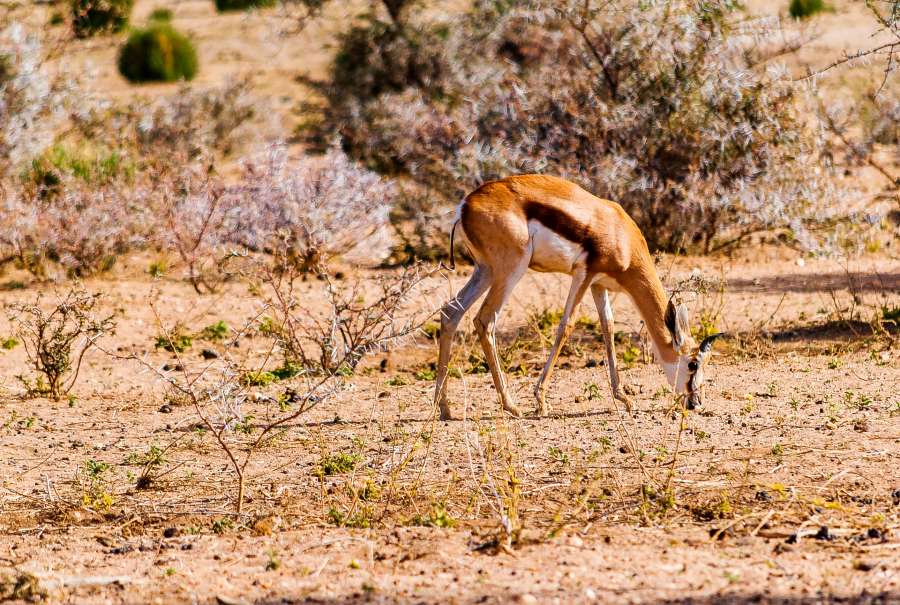
9. Stay safe at all times
An African safari is truly an amazing experience but it can also present a number of dangers if you’re not careful.
First of all, you’re in the habitat of wild animals which means that doing something that makes them feel threatened can lead them into attacking you.
So while enjoying the wild, make sure that you adhere to the park rules to stay safe. Some of the tips for staying safe on a safari include;
- Do not leave the marked-out game paths if you’re self-driving.
- Follow all the rules mentioned above.
- Roll up the car windows if the wild animals are so close to your vehicle.
- Walk away slowly if approached by an animal during a walking safari.
- Carry a first aid kit for any emergencies that may arise. This first aid kit is small enough to fit in your safari day back but has everything you might need.
Related post: Safest countries to visit in Africa
10. Stay healthy while on an African safari
While enjoying your first African safari, don’t forget to take care of yourself by staying healthy. Though it might be a bit hard to do on a game drive, there are a number of useful things that will help you achieve it.
Some of the tips for staying healthy on a safari include;
- Stay hydrated at all times. Carry a bottle of water to make sure you don’t run out. This travel compressible water bottle is perfect for an African safari.
- Take a mosquito repellant or antimalaria tabs. Malaria is still quite common in Africa despite the fact that each African government is doing everything possible to eradicate it. You can opt for this insect-repellant and consult with your doctor for anti-malarial tabs.
- Don’t allow yourself to get burned while on a safari, have sunscreen with you
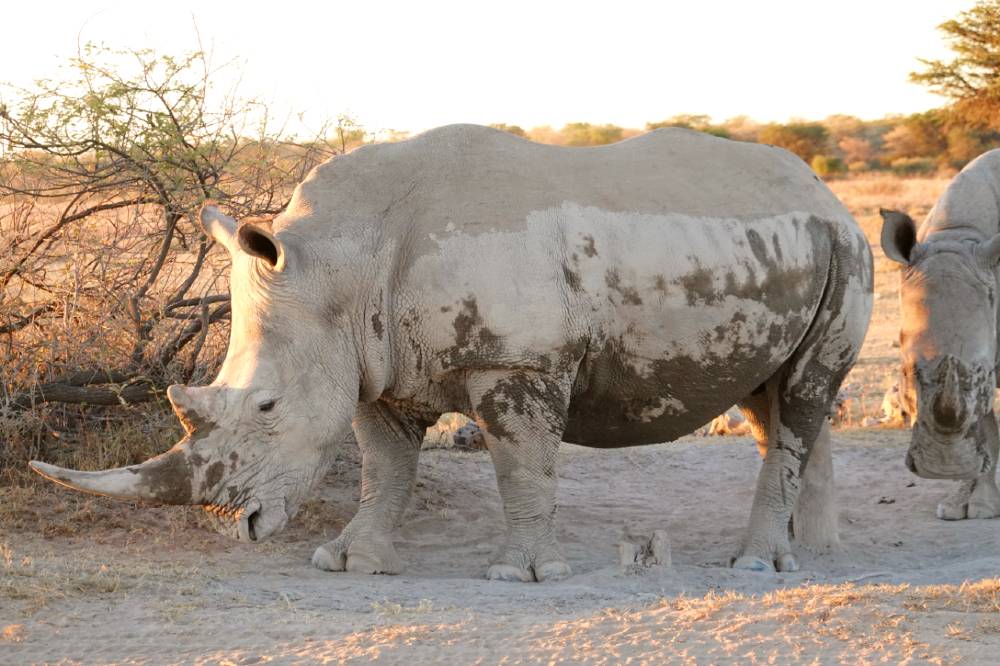
11. Do not miss the sunset game drive
Just like the early morning game drive, a sunset drive also presents higher chances of animal viewing.
This is because the heat of the day is gone and now the animals can come out of the shade making it easy to spot them.
Related post: The most famous landmarks in Africa
12. Take Binoculars
Binoculars are an essential item while on an African safari. They will help you get a good view of that far-away animal or bird that you can’t easily get to.
Though some people choose to improvise with their zoom camera lenses, I still believe that binoculars are way better. I remember I got soo jealous of people who had binoculars on my first safari.
This kind of binocular with a large Eyepiece and BAK4 FMC Lens will be perfect for an African safari. Since it’s on the high end of the budget, you can check out a variety of other binoculars from here if you’d prefer something cheaper.
13. You don’t have to wear Khaki from top to bottom
I know, you’ve probably read a number of articles online that say that you have to wear Khaki clothes all through. But no, it’s not necessary and there is no such rule.
In fact, I’ve never worn khaki attires on any of the African safaris I’ve been to and I’ve never had any issues at all.
However, though there is no rule about which clothes you should wear, you should stay away from bright-colored clothes.
Bright pink or orange clothes are not a good idea as they easily attract animals due to their sharpness hence making the animals curious and probably end up coming near you which can be risky.
So regardless of what you wear, stick to neutral-colored clothes. This tip is especially important when going for a walking safari.
Actually, even your tour guide will tell you in advance not to wear bright-colored clothes.
Some of the clothes to wear on an African safari include,
- Convertible pants . These breathable and light convertible pants are perfect for an African safari. If the heat gets too much, you can just zip off the legs, and if it gets cold, wear it as full pants.
- Columbia short-sleeved saf a ri shirt for men . It is comfortable and you’ll still look ”stylish” even when on a safari.
- You can pack a few Merino wool T-shirts . These ones for women and these for men will guarantee you extra comfort while on a safari.
- I am not really a fan of dresses or skirts while on a safari. So a pair of these leggings or convertible pants work well for me.
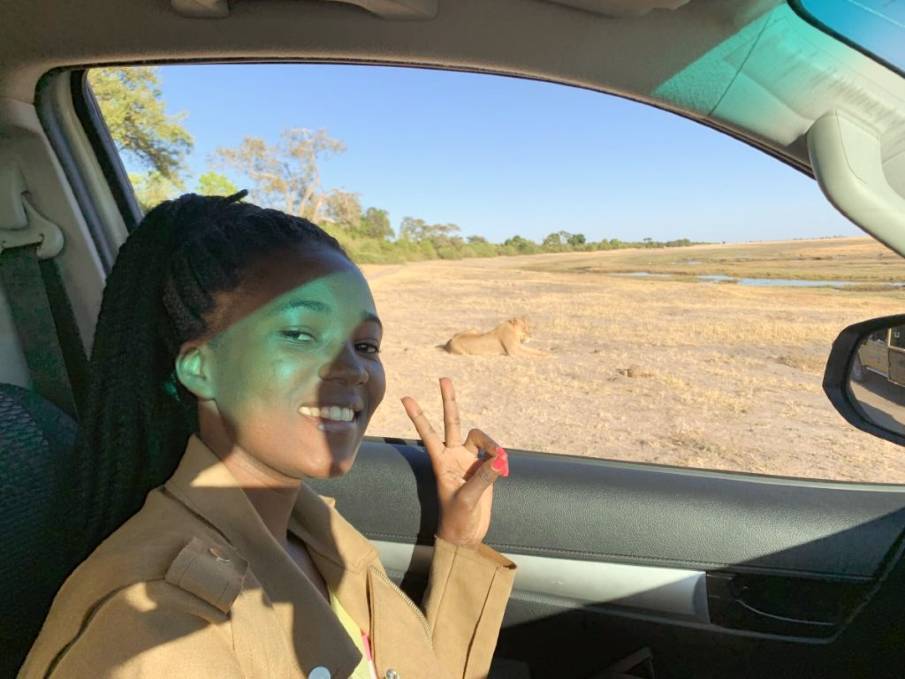
14. Take all the essentials
While going for an African safari, there are some things that should not miss in your daypack. These will help you stay refreshed and will protect you from the sun while enjoying Africa’s beauty
Some of the things that should be in your safari daypack include;
- Sunscreen: There is no doubt that Africa’s sun is incredibly hot, especially in countries near the equator. So make sure that you take sunscreen that has an SPF of 50+ to avoid burning. Buy the sunscreen before you go because it can be very pricey in Africa.
- A safari hat: I will admit that I am not a huge fan of a hat. In any case, my hair is always huge to be accommodated by the hat but it’s very helpful in blocking away the sun. This kind of safari hat will definitely make you feel like you’re rocking the wild while blocking the sun.
- Sunglasses: While still talking about the African scorching sun, take these polarised sunglasses to protect your eyes at all times.
- Chapstick: I can guarantee that your lips will dry while on a safari. So make sure that you take this chapstick to prevent that from happening and keep your lips moisturized.
- A compressible water bottle: Staying hydrated while on a safari is paramount. So carry this compressible water bottle to refill it before you head out into the wild.
- Bug spray : Don’t leave a bug spray while heading for a safari. Remember that you’re headed into the habitats of bugs so you should have something to protect yourself.
- A proper daypack: You’ll need a good daypack where all the above items will fit in easily. I recommend taking this Osprey daypack as it is small, light, and durable.
Those are some of the essentials you should have before you head into the wild but you can check out this complete Africa packing list to prepare fully.
15. Keep it quiet
I know the excitement of seeing your very first African animal especially if it’s one of the big five can be through the roof.
I mean I’ve seen them so many times but I still get excited every time I see one. So its totally understandable to be extremely excited but don’t let it go out of hand to the point of screaming,
Yes, some people scream when they get excited but this is the place where you have to contain it.
Always keep it low while talking with others and don’t try to scream at the animals.
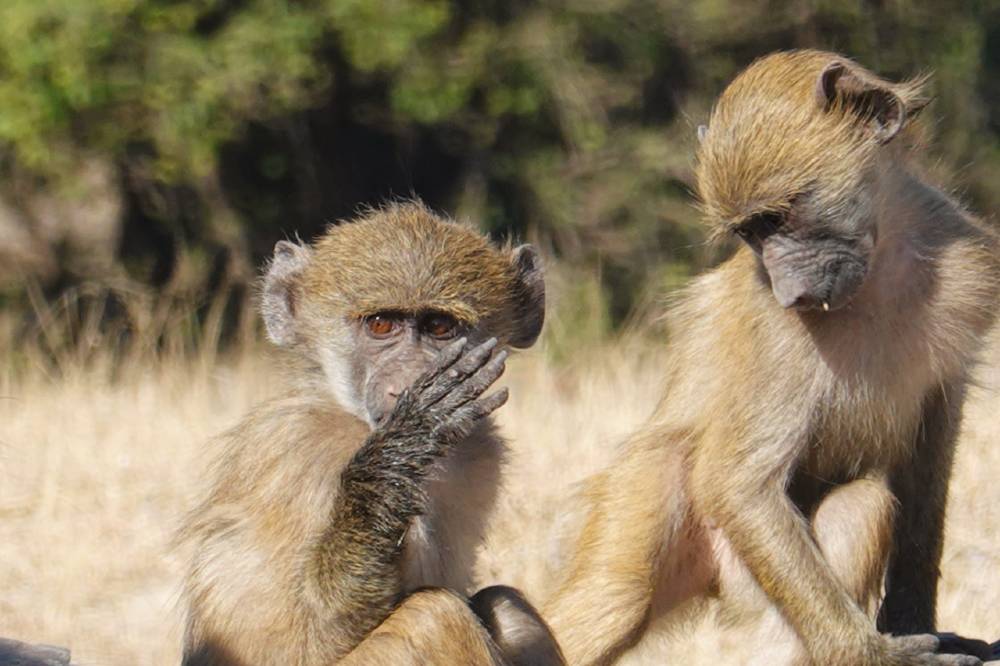
16. Respect the wildlife
Just like someone coming into your home, you’d expect them to be respectful and the same applies here.
As a guest in the habitats of the wildlife, you ought to be respectful of the wild.
This ranges from not littering around – it’s actually sickening to see people dumping trash in national parks and reserves. Don’t be that guy that I will give a ”what the hell are you doing ” kind of look.
Also, don’t try to manipulate the animals by acting inappropriately. I’ve seen some people make noises with their cars so that the elephants can trumpet.
Literally disorganizing the elephants for their own pleasure. But hey, don’t start running if they lose their cool and decide to charge you.
17. There is no guarantee that you’ll see the animals
One of the other things to know before going on a safari is that you’re going into a game park, not a zoo where animals are waiting for you.
Here, you’ll have to look for them which means that there is no guarantee that you’ll actually see them.
Though you’ll see some animals like elephants, and antelopes since they’re literally everywhere but big cats, not so much yet those are the ones everyone is always looking forward to seeing.
But if you don’t see all the big five on your first safari, don’t let your entire trip get ruined.
There is always a chance to see them on the next safari as almost all game drives present something different.
18. Where you stay during your safari matters

One of the things to know before an African safari is that where you choose to stay matters.
Not all the most expensive tented camps and lodges are in the perfect place. However, this also depends on what you’re looking for as an individual.
Whether you’d want to be able to see some wild animals close to where you’re staying or not which I bet you do since that’s the reason you went on a safari in the first place.
Some places are more likely to have animals nearby than others. So make research to find the perfect location.
To give you an example, while on game drives in Botswana , I never saw any Hyenas, but it showed up right at our campsite in the night and I finally got a chance to see it.
Elephants were daily visitors to our campsites and Hippos showed up once in a while. This goes to show that where you choose to stay impacts your first safari in Africa quite a lot.
On the other hand, lodging somewhere far from where wild animals are largely concentrated would mean that you always have to make long drives before you can start seeing anything.
So decide on where to stay during your African safari keeping those factors in mind.
19. Enjoy your first African safari
Lastly, enjoy the safari. Africa has soo much beauty that you have to enjoy every chance you get.
Be open-minded and friendly and I guarantee you’ll have the best experience ever.
Try to immerse yourself in the African culture, and be more understanding instead of focusing on the negatives. And when something goes wrong, don’t let it ruin your entire trip.
There you have it, folks! I hope that these tips for an African safari prepare you well as you encounter Africa’s wildlife for the first time.
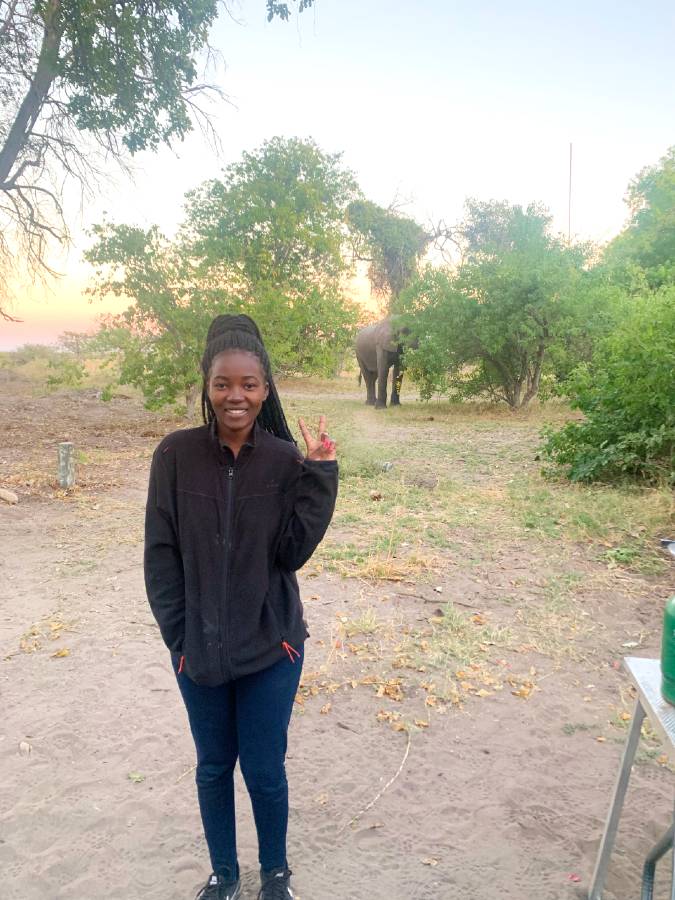
Ready for your African Safari trip, here are other things you should pack
Travel insurance.
It would be a mistake to travel to Africa without travel insurance. Anything can happen on the dusty road of Africa or in chaotic cities.
So make sure that you and you’re items’ safety is guaranteed by buying travel insurance.
Most travelers love World Nomads travel insurance as it’s easy to get a quote and the claiming process is not a rat race.
The other advantage is that it works in over 130 countries including those in Africa.
Universal travel adapter

Instead of taking different adapters for each African country which is very impractical and expensive, you’re better off taking this universal travel adapter.
Portable Power bank

Before going to Africa, make sure that you have a power bank like this so that you stay connected even on the go when your battery phone dies.
Microfiber travel Towel

I recommend taking this microfiber travel towel since it is lightweight, dries quickly , and is very absorbent. It’s much better than carrying heavy cotton ones.
Africa Lonely Planet Guide book

Get a general insight into Africa from experts by getting yourself a copy of this Lonely Planet guidebook .
Personal water filter

Safaris in Africa can mean going to places where it’s hard to get clean drinking water. So carry your own travel water filter to purify the water before drinking it.
Collapsible water bottle

In that same manner, carry yourself a water bottle so that you can refill it every time it runs dry.
This travel water bottle is collapsible and light which means that it won’t take up a lot of space in your backpack. Taking a water bottle will also reduce the use of disposable plastic bottles which is great for the environment.
Final Thoughts on What to Know Before Going on An African Safari
As I wrap up my essential Africa safari tips, remember that your trip will be as incredible as your preparation.
An African safari requires careful planning, respect for nature, and an open mind ready for unforgettable experiences.
With these practical Africa safari tips, I have no doubt that you’re now better equipped to handle the unique challenges and opportunities that await.
So, stay vigilant, respect the rules, and remember to soak in every moment of your adventure whether positive or out of your comfort zone. After all, an African safari is more than just a trip; it’s a once-in-a-lifetime experience, at least for most people!
More posts to inspire your wanderlust in Africa
- Safest countries in Africa
- Best countries to visit in Africa
- Bucket list adventures you must go on in Africa
- Tips for Backpacking Africa
- Essential tips for traveling to Africa
- Uganda destination guides
- Egypt destination guides
- Botswana destination guides
Was this post on the best safari tips for Africa helpful? Then Please pin it
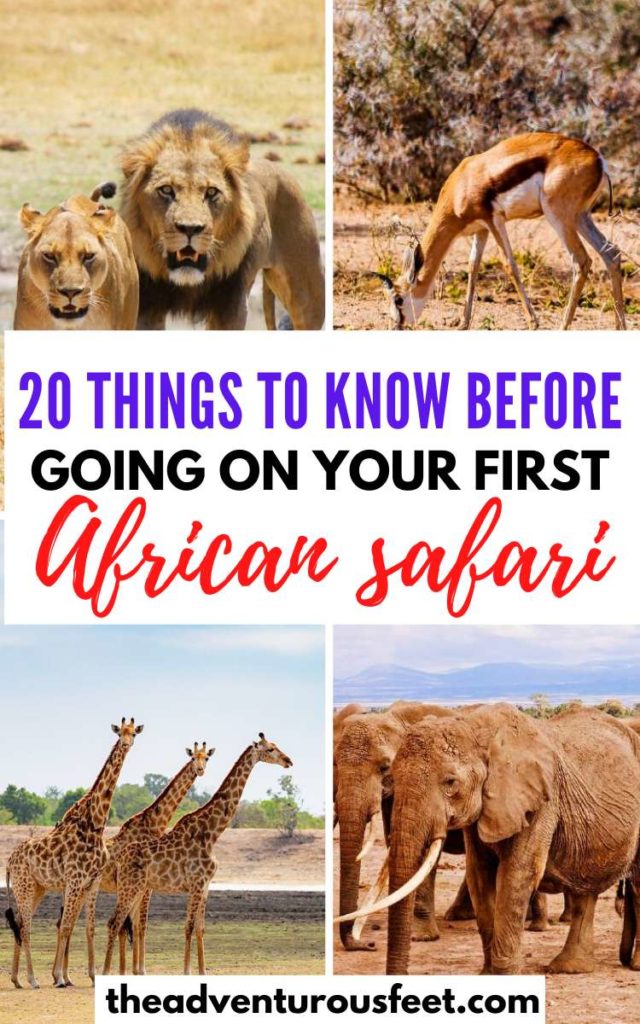
Similar Posts

Uganda Travel Tips: 22 Things To Know Before Traveling To Uganda
Planning a trip to the pearl of Africa? These Uganda travel tips will show you all the things to know before traveling to Uganda. Commonly known for Gorilla trekking, this (not so) little gem of Uganda has captured the hearts of nature and safari lovers who want to get up close with not only the…
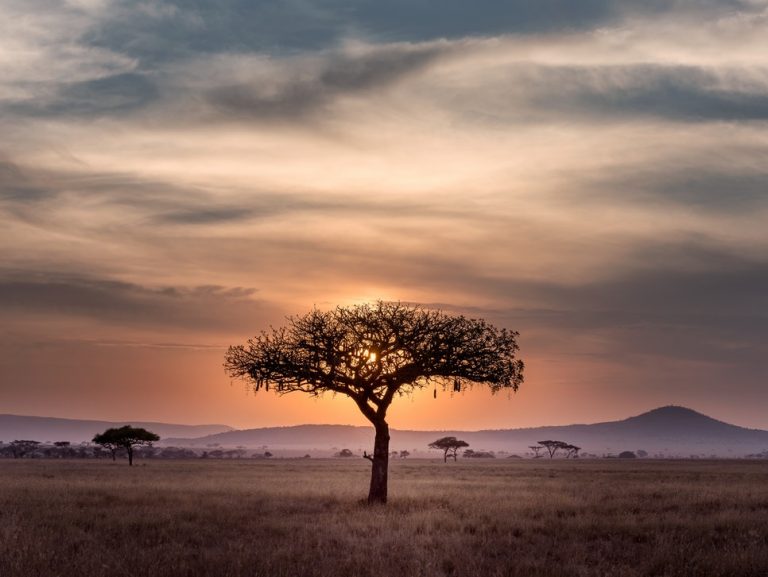
The top 13 safest African countries to visit
Looking for places to travel to in Africa, here is the list of the safest African countries to visit for an adventure of a lifetime. Before traveling to Africa, travelers, especially from Europe and North America, question whether it is safe to travel to Africa. It is no surprise that they question the continent’s safety…
![safari afrika tips 10 Fun facts about Uganda [not the boring ones]](https://theadventurousfeet.com/wp-content/uploads/2019/05/fun-facts-about-uganda-1-768x511.jpg)
10 Fun facts about Uganda [not the boring ones]
Want to know more things about Uganda that you probably didn’t know? Here are the fun facts about Uganda that will help you learn more about this Pearl of Africa. You’ve probably read about Uganda from; where it’s located, the average number of people, to the times of Idi Amin, to it being one of the…

Egypt Landmarks: 20 Famous Landmarks in Egypt You Should Visit
Planning to travel to Egypt? Here are the most famous landmarks in Egypt that should be on your Egypt bucket list from the Giza pyramids to the ancient temples. Home to the ancient Pharaohs and artifacts which are over 7,000 years old, Egypt is endowed with so much history and treasure that will fascinate anyone…

12 Common Myths and Misconceptions about Africa that are absolutely not true
Do you find yourself doubting what you’ve heard about Africa in the past? Here are the common misconceptions about Africa that will help you sort out the facts from the myths. As an African, a Ugandan to be exact, I sometimes don’t know what to do or how to behave when I hear about the…

Victoria Falls Activities: 10 Incredible Things to do at Victoria Falls
Traveling to Victoria Falls and wondering what to do? Here are the best things to do at Victoria falls plus Victoria falls activities that will bring out your adventurous side. The glorious Victoria falls also locally known as the Mosi-oa-Tunya, “the smoke that thunders” is located at the border of Zimbabwe and Zambia. With a…
Dear Esther Thank you for your good website and sharing your experiences. I am planing a trip to Kenya and I used a lot from this page. According to my time and budget, I am going to take a safari in Masai mara and choosing on of the lake Nakuru or Naivasha. According to your experience, which one is better in terms of view,sightseeing and which one is better for relaxation? Is there is there a boat riding option in Nakuru? Thanks a lot
Great and well written travel blog. Thank you very much for sharing such a great guideline.
Thanks for this great checklist. Although I’m originally from South Africa I can sadly say I’ve never been on a safari. Very disappointing I did go to Addo elephant park many years ago but I know realise living abroad how much I should’ve taken advantage of the great animal beauty on my doorstep. Definitely keen to visit North Africa for some incredible safaris in the future.
Thank you for your kind words Kaylini. It’s unfortunate that you weren’t able to go on any safaris but hopefully, in the future, you’ll be able to enjoy the amazing safaris in Africa.
Leave a Reply Cancel reply
Your email address will not be published. Required fields are marked *
National Geographic content straight to your inbox—sign up for our popular newsletters here

Everything you need to know before booking your first African safari
For many, a safari represents the optimal escape and lifelong travel dream. If you’re going to invest in turning this dream into reality, there are some things worth considering. Plus, we recommend five incredible wildlife itineraries for 2023.
From the first waft of dewy morning air to the gentle owl hoots that drift into camp after dark, there’s a satisfying natural rhythm to a day on safari in Africa. Even if you’re not normally an early riser, you’ll quickly fall into the routine of pre-dawn starts, lazy lunchtimes, active afternoons and mellow evenings, making the most of the best hours both for wildlife-watching and for chilling out. Deep at night, if you’re lucky, you may hear the distant whoop of a hyena, the rasping call of a leopard or the bassy roar of a lion.
But more often than not, you’ll sleep soundly, drunk on fresh air. Soon after you wake, you’ll head out into the wild, eager to discover what the day will deliver. Perhaps you’ll find yourself inching up on some rhinos, watching boisterous elephants bathe in a waterhole or spotting the youngest, cutest members of a mighty big cat dynasty.
If this sounds like the kind of escape you’ve been craving, but you’re puzzling over possible itineraries, what’s the best way to choose?
Green means go
While every luxury safari offers unforgettable wildlife encounters, there are plenty of options to consider. High-end African trips and settings vary hugely in their atmosphere and style.
Some itineraries, for example, are much greener than others. If you’re passionate about nature, you’ll want to make ethical choices, mindful of climate change and biodiversity, perhaps by minimising your time in the air. While every long-haul trip has a high carbon footprint, you can limit your safari’s impact by choosing a destination near an international airport and sharing a vehicle rather than continuing by taking domestic flights.
With superb wildlife-watching opportunities within driving distance, Nairobi makes an excellent starting point for a low-airmiles luxury safari. “You could head for the stunning mountains and waterfalls of the Aberdare range, where lions hunt giant forest hogs”, says Kenya specialist Richard Trillo of Expert Africa. “The tree-dotted plains of the Maasai Mara, which host East Africa’s annual Great Migration, are also within reach,” Richard adds.
There are other ways to dial down the net impact of your trip without compromising on quality, however. While carbon offset schemes can help compensate for your emissions, for a more targeted approach, you could book your trip through a specialist safari operator that has established working partnerships with African conservation charities.
“We’re proud to support South Africa’s all-female Black Mamba Anti-Poaching Unit, and Greenpop, a non-profit Sub-Saharan forest restoration and urban greening organisation,” says Marcelo Novais of luxury operator Ker and Downey Africa.
“We give all our clients the opportunity to donate to these worthy causes, since leaving a positive legacy is one of our core values,” he adds. Other deserving organisations include African Parks, the African Wildlife Foundation, Tusk and the World Land Trust.
Another effective way of maximising the benefits of your trip is to choose lodges that go the extra mile in their vicinity, doing more for environmental protection, community partnerships and rural development than merely covering park fees and basic wages. In Tanzania, the Elewana Arusha Coffee Lodge invites guests to visit the craft project they support, Shanga, where locals with disabilities upcycle glass, textiles and fishing wire into cute elephant cushions, jewellery and clothing.
When it comes to shortlisting properties, membership of Ecotourism Kenya, Responsible Tourism Tanzania, Fair Trade Tourism and the Global Sustainable Tourism Council are generally useful indicators.
Settling in
Once you’ve arrived in the bush, what will your surroundings feel like? Anyone who’s cautious about camping in the wilderness will be relieved to discover that most top-end operators put their guests at ease by focusing on creature comforts: cool drinks, gourmet dining, indulgently appointed private bathrooms and sumptuous beds, for example. As a rule, their staff — from the head guide to the housekeepers — are superb at their jobs.
That said, there are significant differences between, on the one hand, intimate, minimalist camps with just a handful of canvas tents and, at the other extreme, sizeable lodges featuring swimming pools, gyms and perhaps even a spa, photography hide, editing suite, research centre, library and observatory. It’s a matter of weighing up how close to nature you’d like to feel — hearing all those thrilling sounds in the night, for example — against the range of facilities and creature comforts you’d like to enjoy.
When deciding, honest opinions from people who know the properties well can be invaluable. “Our safari specialists always have detailed conversations with our clients to understand their preferences and offer advice”, says Liberty Gilmour of Audley Travel. “Conventional aircon, for example, is rarely essential: Zambia in May and high-altitude destinations such as Ngorongoro can be quite cool, particularly at night. If it’s hot, natural ventilation may be sufficient, but many camps also have solar-powered cooling systems.”
Whether opulent, nostalgic or quirky, surroundings that suit your aesthetic aspirations can elevate your experience. The family heirlooms that decorate Camp Jabulani in South Africa’s Kapama Reserve, for example, create a uniquely cosy atmosphere, while Xigera Safari Lodge in Botswana’s Okavango Delta is so proud of its collection of original pieces by contemporary African artists and artisans that staff offer art and design tours of the premises. To strike a contemporary note, Loisaba Lodo Springs in Kenya’s Loisaba Conservancy has rooms dotted with hand-stitched West African textiles and elegant upcycled Edwardian furniture.

Peaceful days
Almost every safari programme revolves around guided excursions called game drives, a name dating back to the days of Big Five hunting trips, but the style of the vehicles you ride in isn’t discussed as much as perhaps it should be. While some outfits settle for basic open-sided 4x4s, others invest in supremely comfortable, easy-access vehicles with charging points, dustproof storage space and a fridge. If you’re a keen photographer, top quality private vehicles are a must. Electric safari vehicles offer a particularly smooth ride; while still rare, they’re the future, and are starting to catch on.
Ila Safari Lodge in Zambia’s Kafue National Park offers the rare luxury of total peace and quiet. Founder Vincent Kouwenhoven, who has pioneered electric transport at Ila and its sister lodges in Zambia and Malawi, explains: “Our love for Africa led us to develop technologies that enable guests to experience the bush in near-silent, pollution-free vehicles, charged by our own solar panels. It’s an ecologically conscious way to watch wildlife and very calming, too. Instead of the engine, you hear birdsong.”
Some safaris also promise near-solitude in a vast natural landscape — an intoxicating feeling. One way to dodge the crowds is to travel during low season, the dates of which vary from location to location; alternatively, you could choose private reserves where the only vehicles you’ll see will be those of your fellow guests. As well as providing daytime activities, guides may offer night drives, using spotlights to search for nocturnal activity, such as birds roosting or lions stalking their prey.
For the ultimate in exclusivity, it’s possible to book an entire camp or lodge, with the staff handcrafting everything to your precise specifications, from wake-up times to the cocktails and canapes. According to Ash Jarvis of Best of South Africa Travel, exclusive-use properties work particularly well for mixed-generation families: “With their private game drives, multiple living areas, private pool and the undivided attention of the whole staff, including the chefs (fussy eaters welcome), they eliminate stress and ensure that nobody has to compromise. That’s what good family holidays are all about.”
The ultimate adventure
If serenity is your scene, you may be dreaming of floating over herds of zebras and wildebeest in a hot-air balloon, or wandering across the savannah on a bushwalk or cycle ride. The most interesting safaris offer a mixed programme of imaginative guided activities such as these, enlivening the days with little surprises: picnics in beauty spots, perhaps, or lantern-lit barbecues.
The possibilities depend, to a large extent, on your choice of location. In Kenya’s northern conservancies, for example, you could explore the semi-desert by camel, while in Rwanda or Uganda, the activity you probably won’t want to miss is venturing into the depths of the rainforest on foot for a precious one-hour audience with mountain gorillas.
On a gorilla trek, you’ll be guided by rangers at the top of their game — a hallmark of an excellent safari. A knowledgeable, communicative guide can transform any trip, keeping you safe, entertained and intrigued.
“The inside track is what you really want, whether that’s in guiding, photography or conservation”, says Will Bolsover of Natural World Safaris. “In-depth knowledge leads you beneath the surface, for true insights into how conservation works, how wildlife benefits and how you can contribute.”
Since quality time with experts is one of the ultimate luxuries you can enjoy on safari, some top-end safaris, particularly in Kenya and South Africa, include a philanthropic element, whereby in exchange for a substantial donation to a conservation fund, you gain access to specialists in the field, perhaps even helping collar predators or collecting DNA samples from juvenile rhinos. Conservation safari companies such as Great Plains and AWF Safaris can assist with this. There’s no better way to start unlocking the mysteries of the African wilderness.

Five luxury safari trips in Africa to try in 2023 and beyond
1. low-carbon luxury in kenya.
After a night at Nairobi’s fabled Giraffe Manor, travel overland to Solio Lodge in the Central Highlands to explore Kenya’s oldest rhino conservation sanctuary, then continue to Sala’s Camp, in one of the least-visited corners of the Maasai Mara. Eight days from £8,400 with Expert Africa. expertafrica.com
2. Take to the skies in Tanzania
Flip from park to park in style on a SkySafari, travelling by private plane and touching down at luxurious Elewana Collection properties. This classic circuit takes in Arusha, Tarangire, Ngorongoro and the Serengeti, for blockbuster wildlife-watching. Ten days from £8,300 with Sky Safari. skysafari.com
3. Family adventures in South Africa
South Africa has a host of prospects to suit muti-generational families. Delightful safari properties such as Morukuru River House team well with Cape Town, the Cape Winelands and the Garden Route. Fourteen days from £4,500 with Best of South Africa Travel. bestofsouthafricatravel.com
4. Clock the Big Five in the safari heartlands
To experience some of southern Africa’s most exclusive wilderness retreats, string together Bushmans Kloof in South Africa’s Cederberg region, Sossusvlei Desert Lodge in Namibia, DumaTau in Linyanti and Xigera in the Okavango Delta. Twelve days from £24,797 with Beyond Green. staybeyondgreen.com
5. Meet mountain gorillas in Rwanda
Nothing can prepare you for the surge of emotions you’ll feel when, after an exhilarating trek, you first encounter a family of gorillas in the rainforest. Combine your hike with game drives in Rwanda’s Big Five national park, Akagera. Eight days from £7,493 with Jacada Travel. jacadatravel.com
Published in the 2022 edition of National Geographic Traveller (UK) The Luxury Collection
Follow us on social media
Facebook | Twitter | Instagram
Related Topics
- ADVENTURE TRAVEL
You May Also Like

Affordable gorilla encounters in Uganda's Bwindi Impenetrable Forest

How I got the shot: Ben Pipe on coming face to face with a lion
Free bonus issue.

Free roam safari: a self-guided campervanning trip through South Africa & Eswatini

5 game drive alternatives, from cycling to horse-riding

Are South Africa’s captive lions inbred?

Who buys lion bones? Inside South Africa’s skeleton trade

4 incredible places in urgent need of conservation
- Environment
- Perpetual Planet
History & Culture
- History & Culture
- History Magazine
- Mind, Body, Wonder
- Paid Content
- Terms of Use
- Privacy Policy
- Your US State Privacy Rights
- Children's Online Privacy Policy
- Interest-Based Ads
- About Nielsen Measurement
- Do Not Sell or Share My Personal Information
- Nat Geo Home
- Attend a Live Event
- Book a Trip
- Inspire Your Kids
- Shop Nat Geo
- Visit the D.C. Museum
- Learn About Our Impact
- Support Our Mission
- Advertise With Us
- Customer Service
- Renew Subscription
- Manage Your Subscription
- Work at Nat Geo
- Sign Up for Our Newsletters
- Contribute to Protect the Planet
Copyright © 1996-2015 National Geographic Society Copyright © 2015-2024 National Geographic Partners, LLC. All rights reserved

African Safari Tips & Things to Know Before Going on Safari in Africa
By Author Jurga
Posted on Last updated: February 12, 2023
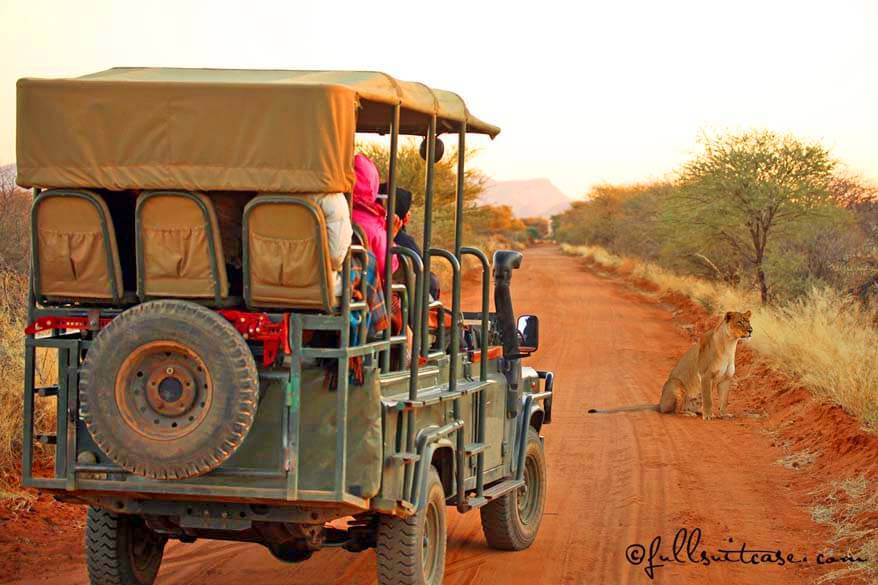
Going on safari for the first time you probably have many questions. There are hundreds of guides telling you where and when to go, so I’m not going to go into this. This post is intended to give you all kinds of practical tips which will help you prepare for an African safari no matter where or when you go.
From safari dos and don’ts, choosing between organized or self-drive game rides to safari packing tips. This post should answer all your African safari questions. Find out!
What you need to know before your first African safari
No matter how many pictures you have seen or what expectations you have, the very first moment you see African animals in the wild will be unforgettable .
I still remember ours as if it was yesterday. It was 10 years ago, on the very first day we arrived in South Africa. We landed in Johannesburg in the morning and drove straight to Kruger National Park. In the evening a couple of hippos showed up at the river, just meters away from the terrace where we were having dinner. It was such an amazing experience!
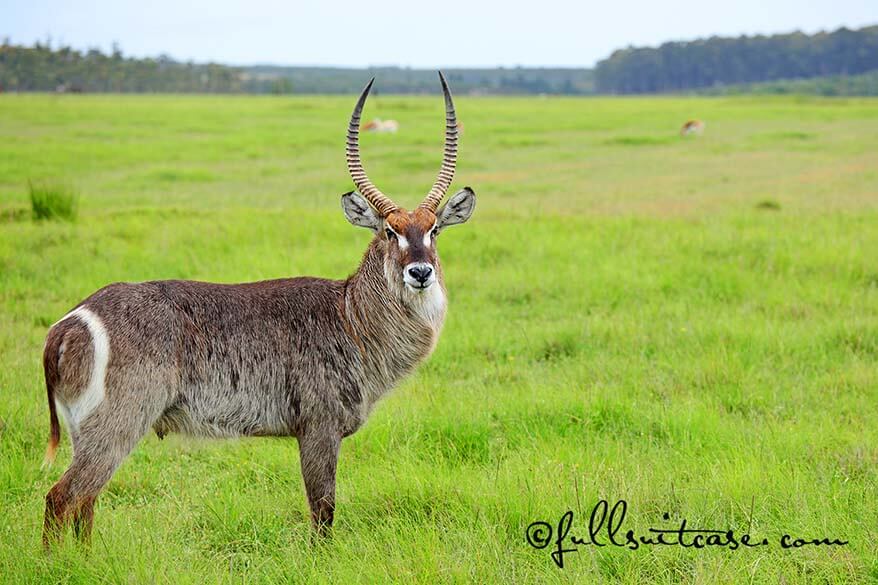
Now that I told you how great it is, I also feel obliged to tell you that not every moment of every safari will be the highlight of your trip . Far from that! You might be driving for hours and hours with not much to see. But then you will, you always do, and it will all be worth it!
Oh, and back to the amazing part. You WILL want to stay longer. Take my word for it, you will. Book a few nights extra. Flying to Africa is not cheap, so get the most out of your trip!
If you are traveling to Africa with kids, make sure to read this post as well: Everything You May Want To Know Before Taking Kids on Safari in Africa .
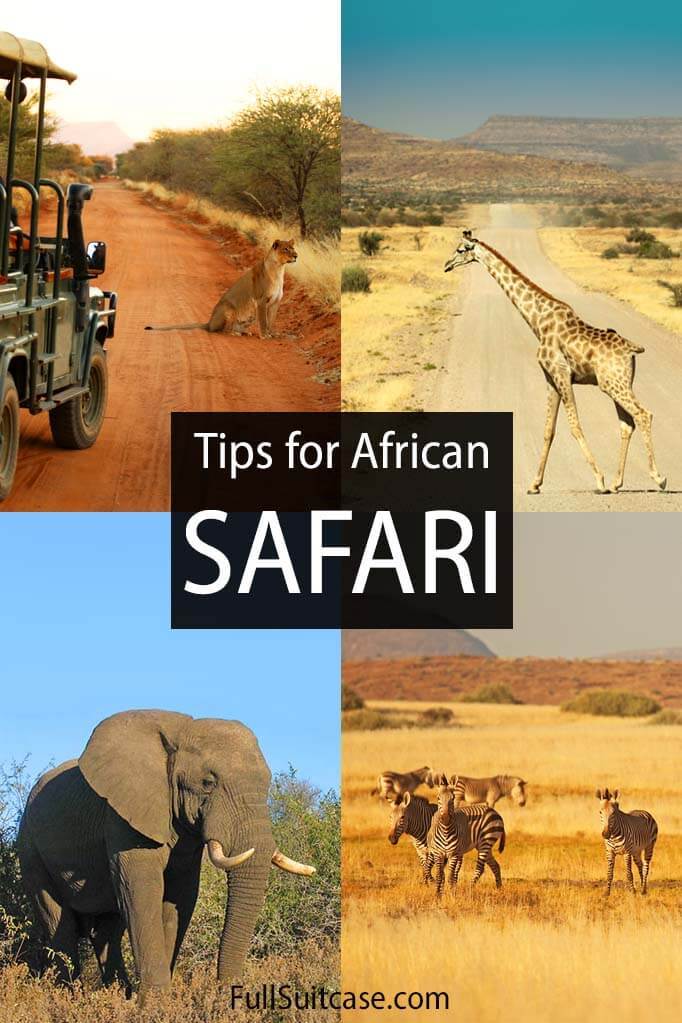
Safari Tips
1. be open-minded and flexible.
Every safari drive is unique and therefore unpredictable, so try not to stress about the things you cannot control. Sometimes you won’t see much, sometimes you’ll see a lot, sometimes the ride will take longer than expected, and sometimes it will be tougher than expected.
Be prepared for warm and for cold, for wind or sun, for mosquitoes and flies, and mostly for a rough ride.
While most of the time you will be driving on gravel or sand roads, sometimes the driver might decide to cross a river, drive through the bush, or cross a stone field… We did all of this when following a herd of desert elephants in Namibia and it was an amazing experience!
2. Follow the rules and stay safe
Stay in your car at all times, the rules are there for a good reason. Animals are very well camouflaged and often you don’t see them until it’s too late.
Don’t approach the elephants too closely, don’t make noise, keep your hands and your camera inside the car near the cats, and never stand between the hippo and the water. In fact, hippos are very aggressive and are the most dangerous African animals after mosquitos, so you don’t want to get them upset.
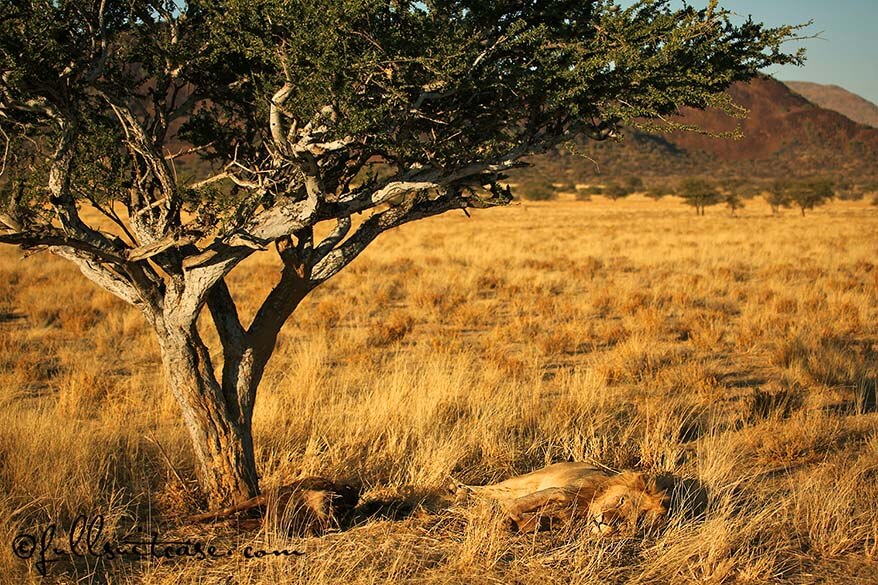
3. Ask questions
Most safari guides are very knowledgeable and you can learn a lot about animals and their behavior.
4. Ask to stop
You think you see something in the distance, but are not sure, or you want to take yet another picture of a zebra? Don’t be afraid to ask to stop the vehicle. The guides are there to give you the best safari experience.
5. Take lots of pictures
The first time you see a zebra you’ll probably take 25 pictures of it, the next time – 10, and by the end of the week you’ll hardly notice it. You can always delete the pictures afterwards and only keep the best, but take pictures when you can because you may not get a chance for a better shot.
Sometimes, you might get extremely lucky and see some incredible wildlife on the very first game drive. Don’t think that it will always be like that! Make sure to take pictures of everything you see because you never know if you’ll have another opportunity.
READ ALSO: Best cameras and lenses for safari Travel photography tips
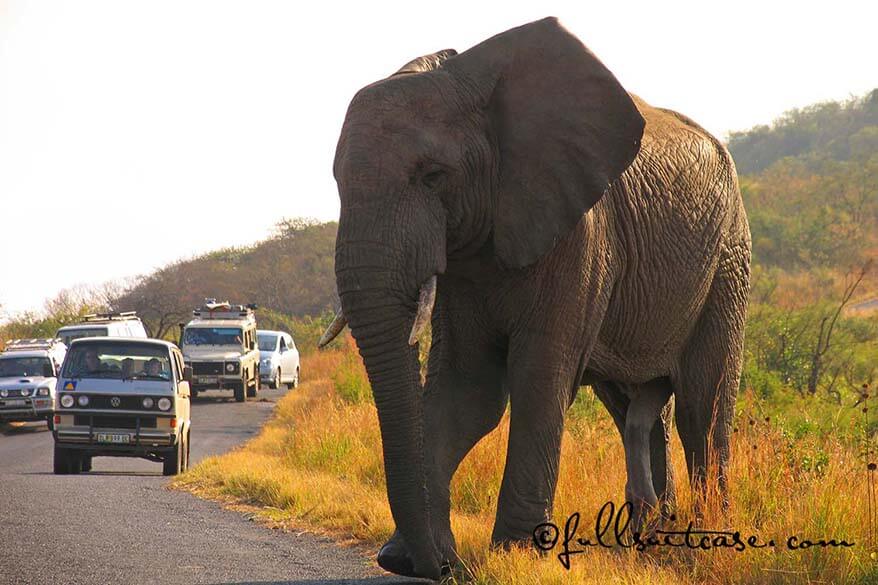
Guided safari tours vs. self-drive safari
Depending on the country and the place you are visiting, you don’t necessarily need to partake in an organized tour in order to see African animals in the wild . Kruger National Park in South Africa, Etosha National Park in Namibia – these are just a couple of examples of the parks you can easily visit on your own. Often you will see animals just next to the road, outside the parks.
We have been on numerous safaris in South Africa and in Namibia, and we have done both – safari rides with a guide as well as on our own. My advice for you is to do both. None of these formulas guarantee that you will see more animals; you just have to be lucky.
The first time we were in Kruger NP, we saw Africa’s Big-5 (elephant, rhino, lion, leopard, and buffalo) on the very first day. While we saw lots of different animals during a guided tour in the morning, we encountered 3 out of Big-5 later during the day when driving in our own car.
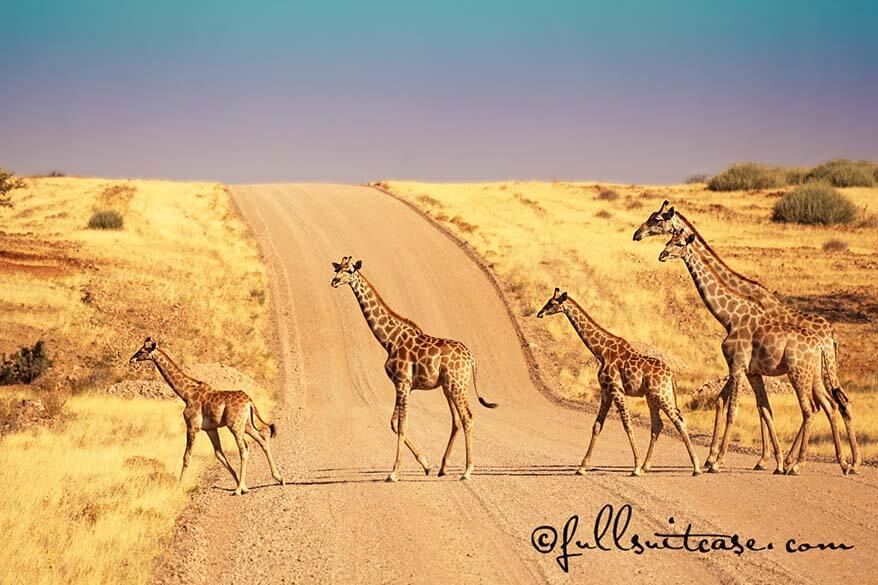
Advantages of guided safari tours:
No driving. You don’t have to drive and concentrate on the road, so it’s much more relaxing.
Better visibility. You sit higher, there are no windows and so you see everything better.
Knowledge. You can learn a lot about African animals from the safari guides. You quickly feel like an expert by being able to tell the difference between all different sorts of antelopes.
Expertise. The guides have lots of experience. They know where and when to look for certain animals and they often see them long before you do…
Communication . Safari guides constantly communicate with their colleagues and exchange information so they can bring you to the centre of the action in no time.
Accessibility. In some parks, private vehicles are only allowed to drive on certain roads while guided tours have fewer restrictions.
Kids are more engaged. It’s easier to get the children engaged and interested in the whole safari experience on an open jeep safari ride than when driving in your own car. Don’t listen to the people who tell you that young kids don’t appreciate safari. They do. You just have to find ways to get them interested and engaged. Get your kids a good pair of binoculars and play a game of who sees a certain animal first, and you are all set.
Picnic in African savannah and sundowners. Some of the very best memories of safari experiences we had were the ones where we had breakfast, picnic lunch, or a sundowner drink in the middle of an African savannah. It’s just something you have to experience at least once.
Night drives. You cannot go on a self-drive safari at night. You are not allowed to drive at night in the parks and it’s not a good idea to drive in the dark in Africa anyway. If you want to hear lions roar or see them hunt at night, you’ll have to book a night drive. I still have to meet the first person who actually thinks that night drives are worth it, but it’s a very unique experience. Don’t expect to take any pictures at night, just enjoy the ride and hope that you get to see some action.
It pays to travel to Africa with a big family or a group of friends. You pay for a regular safari ride and end up with a private driver and a whole big jeep for yourself because they don’t necessarily fill the jeep if they already have 4-6 places sold.
Very often, young kids are free of charge or get a discount as well. It’s not always the case however, so don’t count on it. If you want to be certain that you will be on your own, you have to ask for it and probably pay much more.
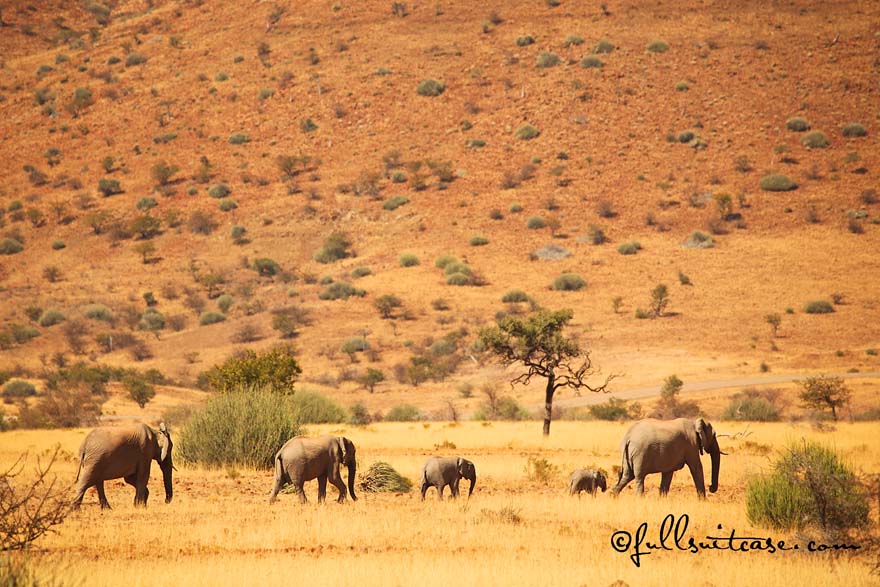
Advantages of a self-drive safari:
Flexibility. You can decide where you want to go and how long you want to spend at a certain place and don’t have to worry about being stuck with a group of 10 other people who take 101 pictures of a giraffe in all possible angles and still complain when the driver wants to go on. OR you can stay longer, follow and watch the animals as long as it suits you without having to worry about other people or a schedule.
Better pictures. Usually, you will have better chances to take pictures of the animals if you don’t have to compete for the best spot with the other people in the same vehicle.
Cost. Needless to say, a self-drive safari is much cheaper than an organized ride. Safari rides, especially private ones, can be very expensive. Sometimes it might be cheaper to stay at a luxury lodge with all-in formula (food and safari rides included) than having to pay for a hotel and safari rides separately.
Heating and air-conditioning. This might seem irrelevant, but wait till you sit in the open jeep driving 40 miles an hour before sunrise or after sunset. Or when you find yourself in an open savannah in the heat of the day with no shade whatsoever.
Children’s age is not an issue. Some safari rides will not permit children under a certain age, usually under 6. This is mainly because of the safety concerns in the proximity of predators. In your own car, you can take children of any age on a safari ride and you stop as close to the lions or leopards as you wish. Just try to limit the noise and keep the windows closed.
Kids entertainment. If you are traveling with very young children, they might not have much patience during long safari rides. It might be easier to keep the kids entertained in your own car. I rather have my kids watching the animals than playing games on a tablet, but we often listened to some children’s music during safari rides as it kept the kids quieter.
Some things to consider when booking a game drive
Duration of the ride. Make sure you are well informed about the duration of the ride. Some will only last an hour or two, while some others can take the whole day.
Time of the day. The very best time to watch animals is usually early in the morning or in the evening around sunset. This doesn’t mean you won’t see animals during the day. We saw lions with cubs, rhinos, elephants, leopards, cheetahs, and many other animals in the heat of the day.
So my advice would be to go looking for the animals whenever you have a chance. After all, that’s the reason you go to Africa, isn’t it? You may even want to consider a night drive, but don’t expect too much from it.
Size of the group. If you have a choice, always go for a smaller vehicle and a smaller group.
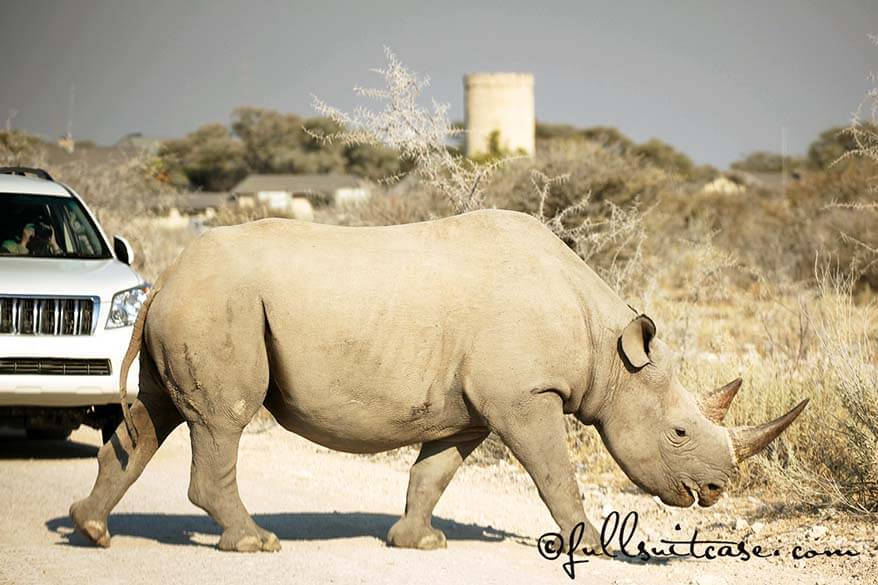
What to pack for an African safari
Soft-sided travel bags . Whether you are planning on taking a small plane in Africa or joining an organized tour, you better pack light and take a soft-sided duffel bag . Don’t take hard-shell suitcases to Africa, they are not allowed if you need to take a small plane or a group tour.
Here you can read about the type of travel bags that we use for our trips . Also, your bags WILL get dirty, so don’t feel embarrassed to take old luggage on a trip to Africa. Nobody cares.
Camera equipment . Take the very best camera you have and the best telephoto lens you can afford. 200mm is a minimum. You can take some pictures of the animals with your smartphone, but you can’t compare the quality of those pictures.
Pack at least 50% more memory cards than for the other trips of a similar duration. Always have extra batteries and charge them every time you can. Don’t forget a tripod. It will be of no use during safari rides, but you’ll see animals at the waterholes and other places as well. Here you can find more advice in regards to the best camera equipment for safari photography .
Electrical adapters . There is not one standard electrical adapter in Africa, so you should check which one you need depending on where you are going. Here is a list of a couple of popular African safari destinations and the plugs they use: South Africa and Namibia type D/M . Kenya and Uganda type G . Botswana, Zimbabwe, and Tanzania one of the previous two – type D or type G.
Binoculars . You cannot go on safari without binoculars. Well, you can, but it’s more fun if you have a pair. As a minimum make sure that children have their own binoculars .
Mosquito repellant with DEET .
Sunscreen and sunglasses
Small backpack is very handy to store all your belongings during long safari rides. Make sure it closes well, otherwise you’ll have sand over everything.
Drinking water and light snacks . You should always have some drinking water with you. Organized safari rides will often provide water and other drinks and sometimes snacks as well, but you might need to wait till they stop somewhere, so it might be more convenient if you have your own, especially if traveling with children.
Flashlight (always) and/or a headlamp (if camping). You will use a flashlight all the time and a headlamp is extremely helpful when camping.
First-aid kit, medication and a good travel insurance are essential for any trip to Africa. If you are prone to car sickness, you may want to take some medication with you. African roads can be really bumpy. Always take medication against diarrhea when you go to Africa and make sure you are ok with all the vaccinations. Depending on the area, you may need to take malaria pills as well.
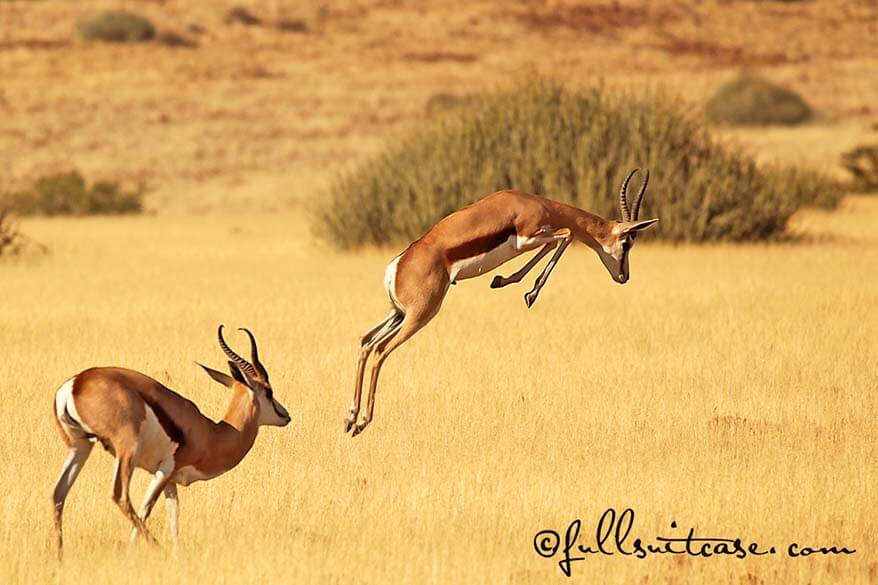
What to wear on safari and colors of clothing
Don’t pack too many clothes and don’t bother with brand new or special safari-style clothing. In Africa, you can wear pretty much anything. Whatever you wear, it will get dirty very quickly. You’ll get used to it.
It can get very cold or hot on safari, so make sure you are well prepared for both. Every time. It’s not because it’s hot when you leave for a ride at 3 pm that you will not be freezing cold on the way back after sunset.
Always dress in layers. I advise wearing closed shoes. Otherwise, your feet will be freezing cold in an open vehicle in the morning or in the evening. Most safari tours foresee warm blankets in the car, so don’t be afraid to ask for one if you are cold.
You don’t necessarily need to dress in khaki or light brown tints. Camouflage clothing should be avoided altogether as it’s considered military and is forbidden in some African countries. Wear comfortable clothes, preferably in neutral colors. But, as already said in my post about packing for Namibia , don’t worry about the colors too much, especially for the jackets as you’ll usually only wear them when it’s dark.
If you have to buy something new for your trip to Africa, then go for the neutral tints. Otherwise just pack what you have.
I saw people in pink, bright red, white, orange, and green jackets and sweaters on safari rides. In fact, I also wore a red jacket on safari in Namibia several times. It just happened to be the lightest jacket I own and I only wore it on safari when it was cold (=dark) so the color didn’t matter at all.

Safari clothing packing list
- Windproof jacket
- One or two (fleece) sweaters
- A pair of long pants, trekking pants are best, but jeans will do too
- 1-2 pairs of shorts or convertible pants as they give you more flexibility
- T-shirts or shirts for 7-10 days
- Closed shoes
- Swimming gear
- You may want to pack one smart outfit to wear for dinner, but it’s not really necessary in Africa. We stayed at a couple of luxury lodges during our trip and usually just wore jeans and a shirt, a blouse or a light sweater in the evening.
So, these are our safari tips for your first safari experience.
One last tip. Go on every single safari ride you can and make the very best of your trip. If I had hadn’t joined the very last ride the night before we flew home, I would have missed the rare opportunity of seeing a pangolin and a couple of lions with their prey.

More travel inspiration & tips for Africa:
- Best Things to Do in South Africa
- South Africa Itinerary
- South Africa with Kids
- Best Places to See in Namibia
- Namibia Itinerary
- Namibia with Kids
- Namibia Travel Tips
- What to Pack for Namibia
- Safari with Kids
If you found this post helpful, don’t forget to bookmark it and share it with your friends. Are you on Pinterest? Pin this image!
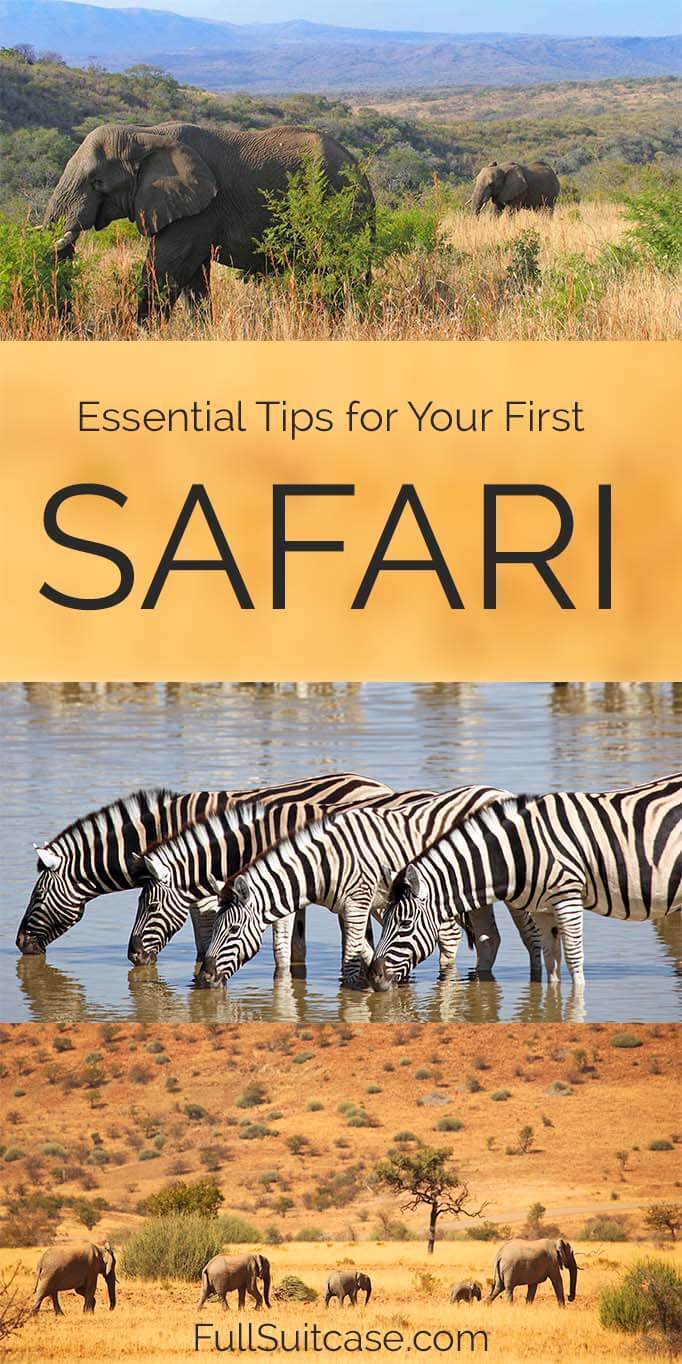
This site uses Akismet to reduce spam. Learn how your comment data is processed .
Wednesday 19th of July 2023
Really helpful, thank you. We are off to Kruger in August x
Thursday 20th of July 2023
Glad to help, Pol. Have a great trip!
Saturday 15th of April 2023
Thank you so much for sharing all these precious tips to prepare foe a safari. I’ll be going to Kenya in mid-September 2024 and I have started to prepare mentally fort this trip. So your tips are greatly appreciated.
Sunday 16th of April 2023
Glad to help, Suzanne. It will be an amazing trip for sure!
Wednesday 19th of October 2022
That was great!! So many good tips to know about. Thank you!
Thursday 20th of October 2022
Glad to help. Enjoy your trip!
Martha Harvie
Saturday 12th of March 2022
One of the best summaries I have read. Our safari has been cancelled twice due to Covid so looking forward to the tour later this year (2022).
Monday 14th of March 2022
Fingers crossed you can finally make it happen this year, Martha! Have a great trip!
Simon Peter
Wednesday 2nd of September 2020
Thank you for sharing this information. I am a tour operator in Uganda and this info is also applicable for safaris here. Except I would emphasize neutral colors more and staying away from red as some animals see red as blood and may charge.
Thursday 3rd of September 2020
Thanks for sharing your experience, Simon.
The Practical A-Z Guide to Going on Safari
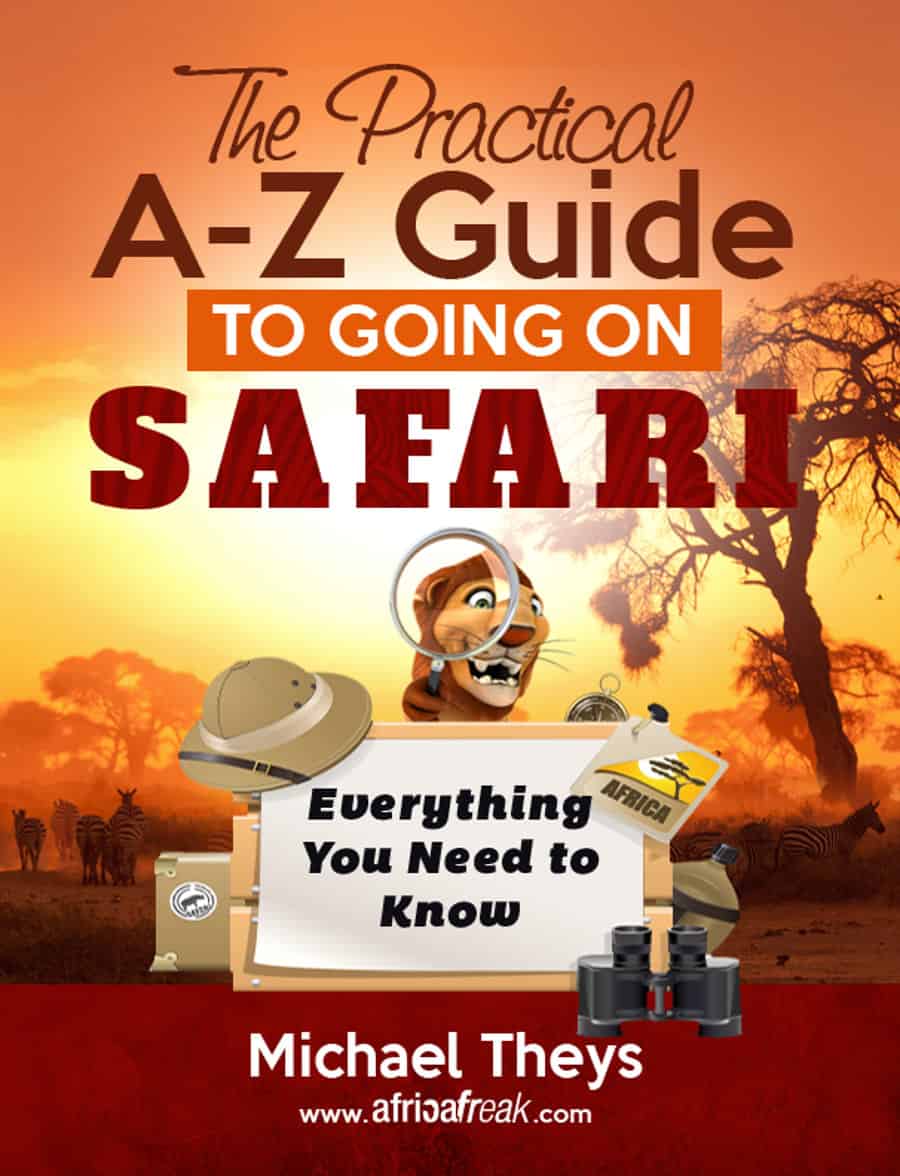
“ You Are About to Fall in Love… with Africa and the Call of the Wild… Here’s the Last Safari Guide You’ll Ever Need!”
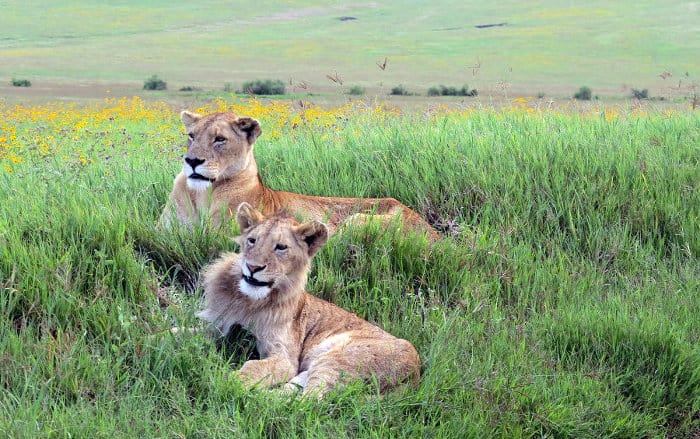
“The only man I envy is the man who has not yet been to Africa — for he has so much to look forward to.” (Richard Mullin)
Table of Contents
What is Safari?
The practical guide to going on safari, a = accessories, b = binoculars, b = baboon protection, b = big five, c = clothing, d = debit and credit cards, e = electricity plug converters, e = emergency toilet paper, g = great wildebeest migration, h = handwash, i = insect repellent, i = insurance certificate, k = kilimanjaro, l = leave the fashion at home, l = luggage, m = malaria medication, n = neutral colours, o = ornithology, p = patience, p = packing light, p = passport, p = photography, q = quenching your thirst, r = random safari activities, r = respect the environment, s = sun protection, t = tipping, u = u.s. dollars in cash, v = vaccinations, v = visas for travel, w = walking safaris, w = wifi (or lack of), x = x-rated wildlife situations, y = yellow fever certificate, z = zzzz….
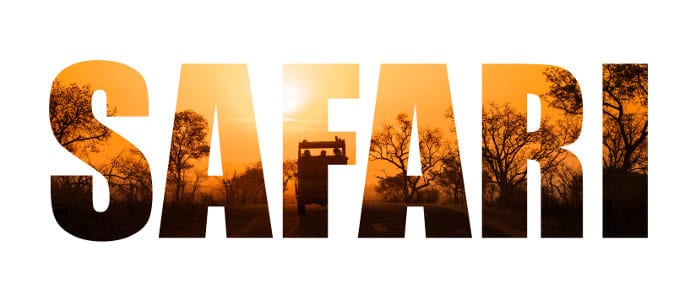
From the wildebeest covered plains of Tanzania to the elephant filled forests of Botswana, safari is the world’s great escape into untouched wilderness. It’s an immersion in the wild, one that takes you away from urbanscapes and into a realm where people are merely visitors.
Africa offers one of the world’s final remaining untouched natural landscapes, offering huge areas that have forever been the haven of wild mammals.
Going on a safari offers an immersion into this world.
It’s far more than sightseeing.
On an African safari you feel as if you are part of the landscape .
You open your senses to nature in all its drama and charm.
It’s something that I first experienced when I was just a child.
And it’s something that’s never left me.
Because once you’ve been on safari, you’ll want to go again and again .
Understanding safari further can be done through exploring the origins of the term. In Swahili, safari means “long journey” , a reflection of how the experience isn’t just about seeing a few animals.
Safari is nothing like a zoo. The animals aren’t in cages. These are wild fenceless landscapes where anything can happen. It’s unpredictable and it’s always intimate . Wild scenes play out just meters from your eyes, like lions taking down zebra or rhinos roaming around waterholes.
A safari isn’t about arriving with a tick-list or saying that you saw a few wild animals. It’s about going on a journey through Africa and discovering nature’s unmistakable rhythm.
But with safari there are always so many questions. From the basic concerns about safety – what happens if a hyena comes into the camp? – to practical details like what to pack , what accessories are needed , how to stay healthy , and even how to say hello .
This practical A-Z guide is designed to answer all these questions, covering everything you need to know for a safari journey. It’s based on the years of experience I have of going on safari and over 23 years of living in Africa.
With this guide I hope you will be fully prepared for landing in Africa and going off on your own safari adventure .
“If there were one more thing I could do, it would be to go on safari once again.” (Karen Blixen)
Easy Peasy from A-Z
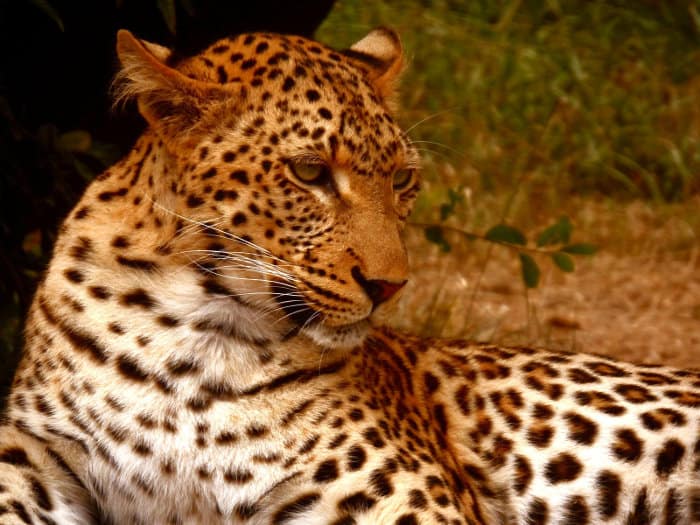
As the title suggests, this practical guide is an easy A – Z run through of everything you’re going to need on an African safari.
With this you should be fully prepared for anything the landscape or wildlife can throw at you, including the thieving baboons.
And who better to introduce it all than a majestic leopard photographed in Namibia’s Etosha National Park .
Small things that make a big difference
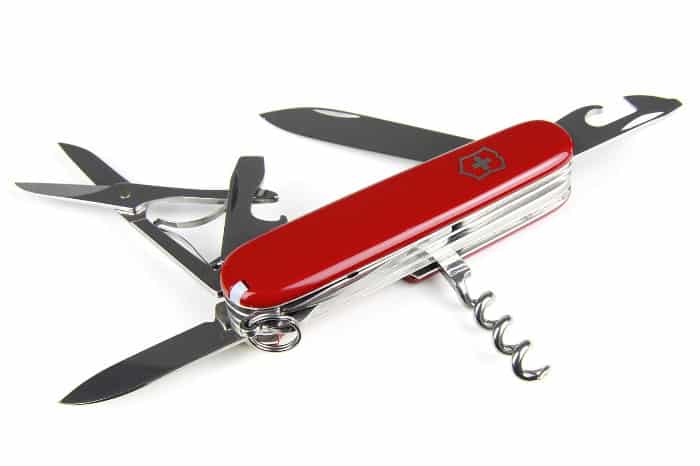
Pack for any trip and it’s easy to get preoccupied with the big things, like bags, shoes and sleeping bags.
But for a successful African safari, it’s usually the little things that really make a difference .
Here’s a few items that you shouldn’t leave home without:
- Swiss army knife or other penknife. This really comes in handy when you’re in the bush, from uncorking a bottle of wine to cutting up rope to tie down your tent. Or perhaps there’s a roadside stall selling huge ripe mangoes.
Maybe a sundowner bottle of beer needs opening when you’re gazing over the waterhole. In rural African landscapes, where there’s little around, a penknife is an essential item.
- Money belt . There’s various popular sayings in Africa that run along the lines of “once the fruit is ripe, you need to eat it.” In another language it means “if there’s an opportunity, you have to take it.” These metaphors can be applied to your travels in Africa.
It’s very unlikely you’ll get robbed, as long as you don’t present an opportunity. A hidden money belt keeps your cash and travel documents safely stowed away , so nobody is eyeing up the wallet that bulges out of your back pocket, or a handbag filled with all your valuables.
There are many models of money belt, like Travelwey, Landing Gear, Eagle Creek, or my personal favourite, the Pacsafe RFIDsafe 100 . It’s compact enough to hide under your clothing and has two zippered compartments.
- Combination lock or padlock. Suitcases usually have their own locks but you may need a combination lock for a duffel bag or backpack. A three-dial combination lock should be fine; it’s more of a deterrent than anything else.
Increasingly common is Pacsafe wire meshing that can be fitted around backpacks and duffel bags so nobody can get inside. This is very useful when you’re taking buses or local transport, especially overnight.
“Reminds me of my safari in Africa. Somebody forgot the corkscrew and for several days we had to live on nothing but food and water.” (W.C. Fields)
A major priority on a safari packing list

On an African safari you’ll be looking out for the big things and the small things , from herds of 50 elephants to tiny exotic birds that flutter around Acacia trees.
In most national parks, your safari vehicle isn’t allowed to travel off the trail, which can lead to frustration when the action is taking place far away.
Binoculars always come in handy, whether it’s scanning the trees for a leopard, getting a close-up of a kill, scanning the savannah for your next move, or admiring the intricate feathers of a tropical bird.
Here are ten things to consider when buying your safari binoculars :
1. Brand . There’s a huge amount of choice out there. I trust and recommend Zeiss , Canon , Bushnell , Pentax , Swarovski , Steiner , Leiva , Tento and Fujinon .
2. Cost . A reasonable pair of binoculars can be found for US$100. Anything else isn’t really worth it. Expect $200-300 for a good pair that’s guaranteed to last. The Pentax Papilio and Nikon Monarch are good entry binoculars. You can also find cheap second-hand pairs online.
3. Eye Relief . Eye relief refers to the optimal distance between your eyes and the binocular’s eyepiece. If you wear glasses, look for an eye relief of at least 15mm .
4. Field of View (FOV) . This is the width of the view at a particular distance. In general, the greater the magnification, the narrower the field of view. For an African safari, choose a pair with a field of view of at least 330ft at 1000 yards .
5. Magnification Power . Binoculars are fitted with a series of numbers, like 8 x 42 or 10 x 50. The first number represents the magnification . A figure of 10 means the image is ten times bigger than seen with the naked eye. For tracking fast moving objects like birds or running mammals, don’t consider magnification greater than 8x . 10x or greater is better for general animal spotting and when you need to scan the horizon .
6. Lens Size/Aperture . The second number represents the diameter of the lens ; the larger the number, the bigger the lens and the more light the binoculars can take in. This is important in fading light and for making the scenes more colourful. For optimal results, consider fully multi-coated lenses .
7. Shock Resistance . It can be bumpy in a safari truck so you’ll want protective rubber or synthetic housing that prevents scratches on your binoculars.
8. Waterproofing . Waterproofing isn’t just about protection from dropping the binoculars in a hippo-filled lake. It protects them against moisture , humidity , and the swirling dust that inhabits many safari landscapes.
9. Weight and Size . There’s a trade off here. Compact binoculars are lighter and easily transported, so great for birdwatching . But larger binoculars offer greater magnification , precision and image detail .
10. My Personal Recommendation . I’ve had my Russian Tento army-type binoculars for over 15 years and they’ve probably been the best ever safari buy (thanks dad).
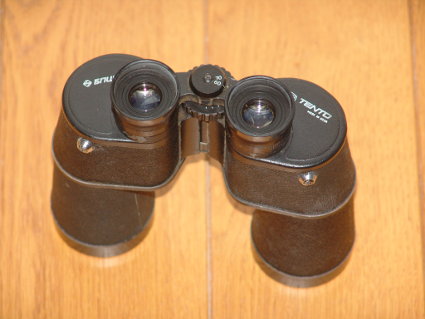
Some personal favourites to get you excited
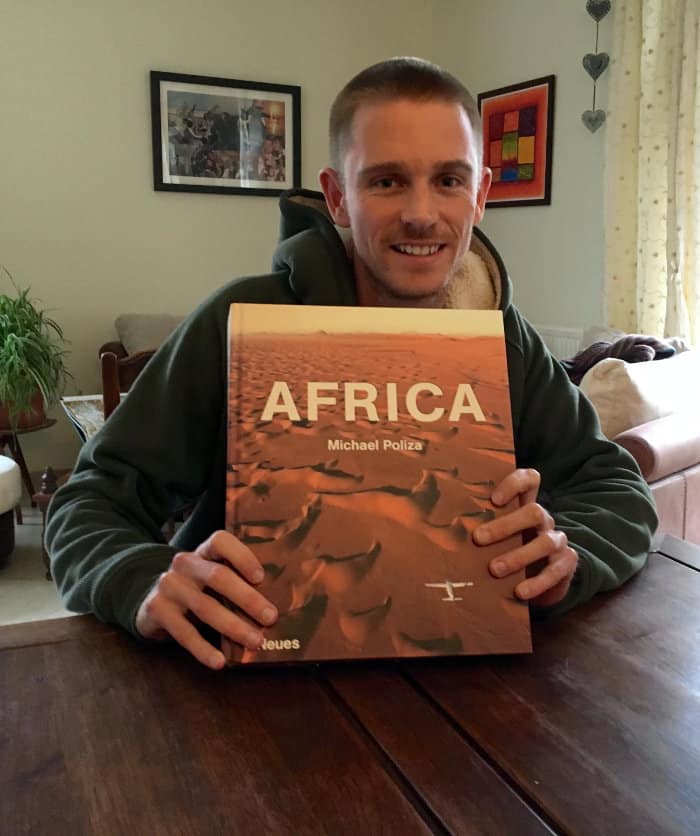
I’m not suggesting filling your bag with a lot of hardback illustrated books, but there’s some amazing literature that will really inspire you to visit Africa . Plus, a couple of field guides are an excellent accompaniment to a safari.
With those in your backpack, it’s easy to recognise animal behaviour and exactly what you’ve just seen. The following are some of my personal favourites :
Illustrated Books
- Africa , by Michael Poliza – A photography masterpiece with sublime illustrations and jaw-dropping images. One glance and you’ll fall in love with Africa.
- Serengeti: Natural Order on the African Plain , by Mitsuaki Iwago – I got this book from my parents when I was only a child. It made me immediately fall in love with Africa’s extraordinary wildlife. Mitsuaki is a real artist with his camera.
Field Guides
- Birds of East Africa , by J.G. Williams and Norman Arlott – An indispensable guide with 1283 species and 650 colour illustrations.
- Larger Illustrated Guide to Birds of Southern Africa , by Norman Arlott , Phil Hockey , Ian Sinclair , and Peter Hayman – Recently updated, this is the most comprehensive guide on its subject.
- The Safari Companion: A Guide to Watching African Animals , by Richard D. Estes – This book is like having a personal guide with you on safari, as it’s full of information about behaviour displays, vegetation zones, and what to look out for when you spot all the big mammals.
- Signs of the Wild , by Clive Walker – This is my bible for Southern Africa safari. It contains detailed information on the spoor and signs of all Southern African mammals, plus stunning illustrations, distribution maps, and an environmental glossary.
- Larger Animals of East Africa , by David Hosking and Martin B. Withers – It was one of the first safari guides I ever bought. It’s got great illustrations and is very easy to use. Perfect for a first-time safari.
Travel Guides
- Lonely Planet – There’s both an East Africa and Southern Africa multi-country guide by the LP. If you like the Lonely Planet style then these are good travel companions. I wouldn’t recommend their Africa guidebook as it squeezes over 50 countries into 1000 pages, so there’s very little detail.
- Bradt – Bradt’s various country guides are more in-depth and authoritative than the LP and it was Bradt that published the first ever guidebooks to various African countries. The major downside is that there’s no up-to-date regional guide, so you’ll need to buy a separate guidebook for every country.
Safari Tales
- Don’t Look Behind You! A Safari Guide’s Encounters with Ravenous Lions, Stampeding Elephants, and Lovesick Rhinos , by Peter Allison – The title says it all and you really feel like you’re on an Africa adventure with the narrator.
- Whatever You Do, Don’t Run: True Tales of a Botswana Safari Guide , by Peter Allison – Read this and you’re certain to put African safari at number one on your travel wish-list.
- Out of Africa , by Karen Blixen – A biography of living in Kenya and developing conservation.
- Born Free: A Lioness of Two Worlds , by Joy Adamson – The original and still the best book on the complexities of wild versus tame.
General African Literature
- Things Fall Apart , by Chinua Achebe – A harrowing tale of what happened when white colonization entered West Africa.
- The Whale Caller , by Zakes Mda – A surreal novel about a South African whale caller who falls in love with a migrating whale.
- The Shadow of the Sun , by Ryszard Kapuscinski – 40 years of stories from a Polish journalist who lived all across the continent. Beautifully written and focuses more on the positives than many other journalist biographies.
- Half of a Yellow Sun , by Chimamanda Ngozi Adichie – A stunning story of love, tradition, modernity, and civil war.
“I never knew of a morning in Africa when I woke up that I was not happy.” (Ernest Hemingway)
Protection for when animal meets man
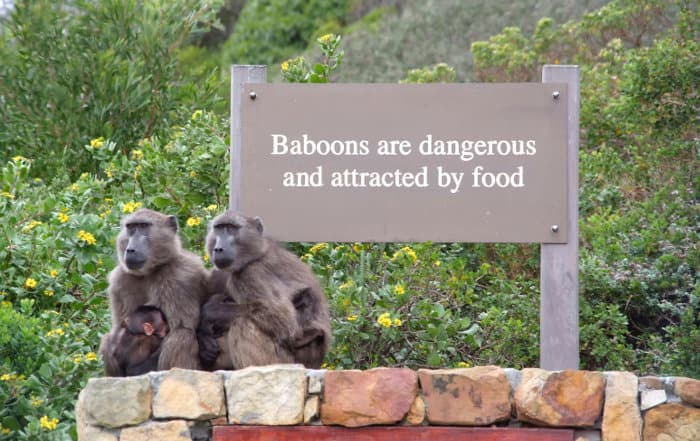
Baboons are amusing. They run around in troops, jump through trees, ball and shout, and generally make an entertaining safari highlight. But they’re cheeky and impudent thieves , always ready to jump at an opportunity to run off with your food.
So you always need to be vigilant and bring your mental baboon protection. Baboons have a habit of hanging around any place where there’s people and food, notably the entrance gates to national parks and public campsites.
Their tactics involve jumping through any open windows , shouting , and running away with your packed lunch box. And they don’t just steal bananas and stale bread.
Baboons are experts at rummaging through your belongings and stealing the items of culinary luxury you brought for the safari.
So how do you protect yourself from baboons?
Firstly, always keep the windows to the safari truck closed when you’re parked, even if you’re inside (it’s pretty scary when a baboon jumps through the open window and you’re still inside the vehicle).
Secondly, don’t walk and visibly carry any food whenever baboons are around.
And finally, but most important, stand your ground if a baboon snarls at you – they just want to scare you away so they can thieve your goodies!
* Tales From an African Safari Guide
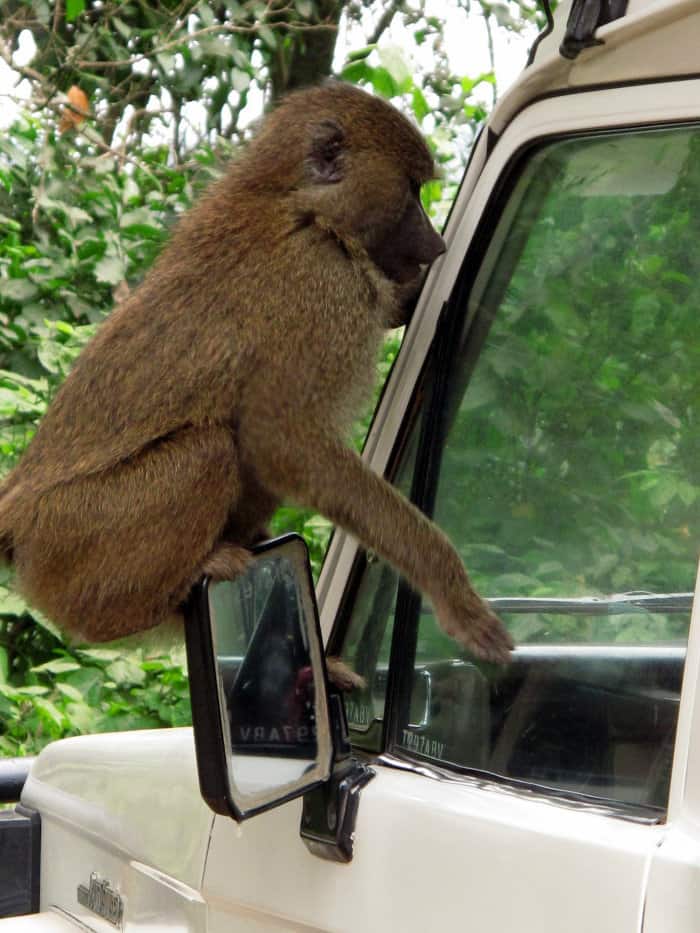
On one of my first ever jobs I was waiting at the entrance gate to Ngorongoro Conservation Area in Tanzania. There were baboons everywhere and I told everyone explicitly to keep the windows closed and not walk around with food.
One of them opened the window to take some close-ups of the baboons as they climbed over the vehicles. I was buying the entrance tickets when suddenly, a piercing scream came from the car park.
A young baboon had jumped through the open window and the commotion alerted three much larger members of the troop. There were now four baboons in the vehicle! I had to run out with a stick, open the door and scare them away. All on my third ever safari as a guide!
I went to inspect the damage. The baboons had ignored the sandwiches and fruit. Instead they’d stolen my two tubes of Pringles , the only vegetarian packed lunch, and half a kilo of gourmet Dutch cheese – essentially the only items I couldn’t replace.
Going beyond the safari favourites
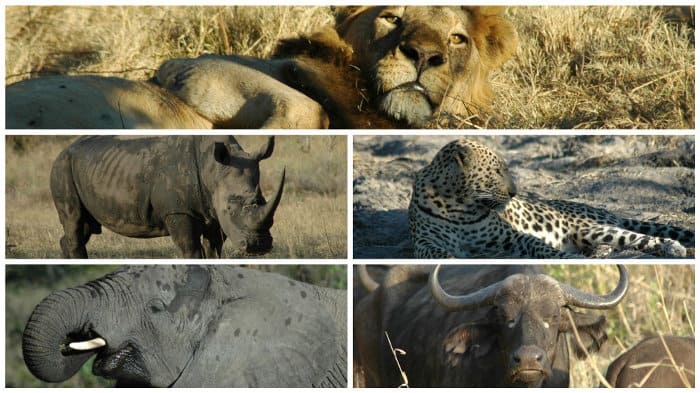
Okay, so you can’t pack them, but knowing the big five is the starting point for your exploration of the wildlife in Africa . The big five is a big buzzword in the safari industry, yet it’s got a menacing history. It’s actually a hunting term .
These five animals were famous because they were the hardest to hunt , as it was only these five that would attack back when they were getting hunted. Fast-forward 100 years and it’s these big five animals that are revered as the premier sights on an African safari.
The big five are lion , leopard , elephant , rhino , and buffalo . And I’d like to see anyone who could squeeze any of these into a backpack.
Of course, seeking out these majestic animals is going to be at the heart of your safari experience. But don’t get too preoccupied. There’s far more to safari than just five animals . Some national parks have over 100 different mammals while others have herds of zebra or wildebeest that number over 100 000.
A safari offers a complete immersion in the wild and you’ll be surrounded by nature’s weird and wonderful, so don’t think it wasn’t a success because one of the famous big five didn’t get a tick on the list.
* Tales From My African Safaris
The first animal I ever encountered in the wild was a black rhino in Nairobi National Park. Everyone had said not to expect too much, so I hadn’t even thought about any of the big five. It crossed the road right beneath our eyes – not a bad safari start don’t you think? Perhaps you can see why I was hooked from the first moment!
Get dressed for safari success
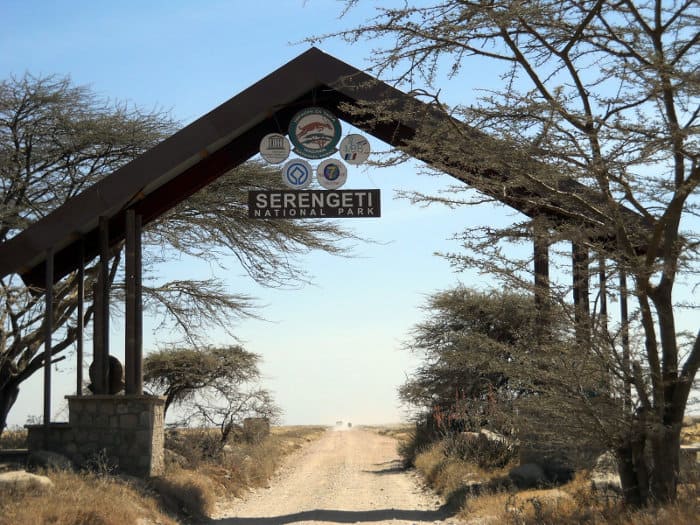
The African savannah can be dusty , windy , scorching hot , surprisingly cold , and when it rains it “really” rains . Two adjacent national parks can have very different climates and conditions.
So what do you pack?
Before considering the packing list, let’s first consider the basics of safari. The climate can be harsh and unpredictable, the landscape is rough and rugged, while the adventure takes you to remote wilderness that’s hundreds of miles from any paved road.
So to get dressed for safari success, think first about practicality and comfort . You’re not going to be impressing giraffe on a nightclub dance floor or showing off a designer swimsuit to a wading hippo. So never bring your best clothes .
Instead, whatever you bring needs to reflect the challenging conditions of a safari. Here’s a rundown of a comprehensive safari wardrobe , all of which is recommended in neutral colours (see N for why!):
- A couple of lightweight jerseys and a warm lightweight fleece – Early mornings and late evenings can be chilly, especially when you’re in an open safari vehicle.
- Short and long-sleeved button shirts – I normally pack two of each. The long sleeves are important against the sun and insects.
- T-shirts – Pack a few so you always have clean options in the evening.
- Shorts – Two or three pairs are enough as long as they are durable.
- Durable long trousers – These are especially important if you’re going to be walking through the bush.
- Zip-off safari trousers – Yes, I know they’re not fashionable but they save luggage space and are highly practical.
- Jeans – Although they are bulky and heavy, I like to bring a pair which I can change into during the evenings.
- Underwear – I’m not going to make any suggestions here!
- Poncho – They’re lighter and more practical than a raincoat and can serve both as a rain cover for you and your belongings. It’s also an effective windbreaker.
- Swimsuit – If a camp or lodge has a pool then it’s usually got an incredible view. Just don’t go swimming when local wildlife is taking a drink!
- Sarong / kikoy / Maasai shuka – An excellent accessory that can be used as a blanket, sun protection, or to keep you warm against the wind.
- Thermal long johns , gloves , scarf , beanie – Required in winter when you’re on safari in Southern Africa.
- A multi-pocket gilet – This is especially useful for photographers.
- Shoes – See S for what you’ll need.
- Socks – Thick comfortable ones to wear underneath your shoes.
Now, you might be thinking – especially if you are female – that all this makes for a drab and conservative wardrobe. So let’s accessorise. Two or three lightweight coloured scarves or wraps are a great way to add some glamour to a safari outfit. Combining this with some vibrant local jewellery or bead necklaces works really well.
For guys , a colourful evening shirt helps inject some vibrancy into the outfit. When packing your wardrobe consider that you will need different clothes for the actual safari activities and for the evenings . After a long day in the bush you’ll want to shower and change into clean fresh clothes for the evenings.
Yes, they do work
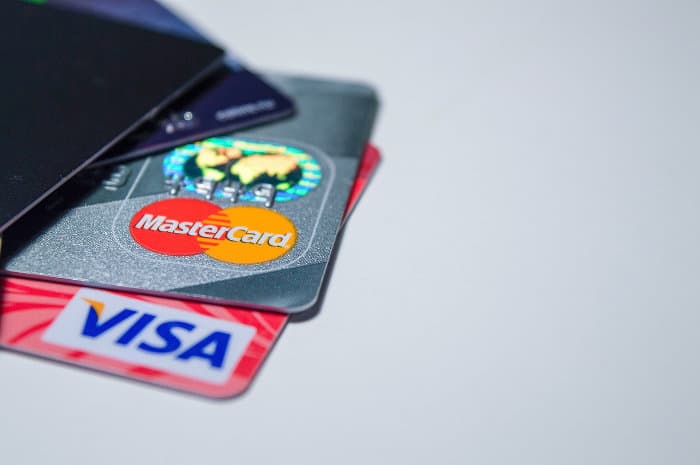
Many people think that Africa is a backwards completely undeveloped continent where the locals are still trading with kola nuts or seashells. The world’s media doesn’t tend to document the progress that Africa has made.
Banks and ATMs can be found across the continent , especially at major airports and in big cities. Not all of these will take foreign cards, but there’s at least one bank in every country that will accept plastic.
Visa is the most readily accepted. Mastercard also works in a smaller percentage of banks. It’s difficult to find ATMs that will take American Express or Maestro , especially when you’re in East Africa .
Whenever I withdraw the equivalent of $200 I feel like a rich man. I’m not being bigheaded here. The highest denomination note is often worth less than $5 . So the ATM has to dispense a lot of notes and my wallet is almost bulging out of my pocket.
It’s also hard to completely rely on ATMs, because the traveller’s nightmare dictates that the bank machines will only stop working when you’ve completely run out of money. So remember to also see U = US dollars .
Because you’ll need to recharge the camera
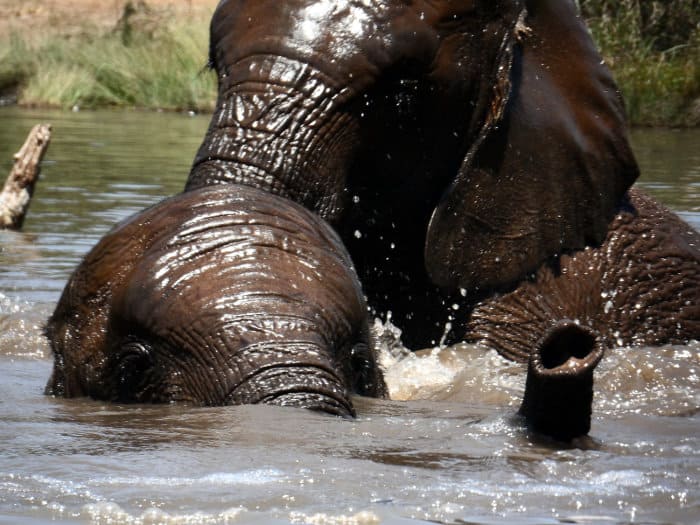
The first time I visited South Africa I almost threw my plug adapter away. It was one of those international adapters that supposedly work in every country. Except, they don’t work in South Africa. Or Namibia. Or Botswana. Or Swaziland. Or Lesotho. Wow, the list goes on.
In Southern Africa they have these strange bulky three-pin sockets that aren’t found anywhere else in the world. So the typical international plug adapter is completely redundant. Fortunately, you can buy an adapter at the airport when you arrive.
It’s good to buy one as soon as you arrive , because plug adapters aren’t the easiest things to find when you’re camping in the bush and elephants are calling from the forest.
In Southern Africa, many places already have European two-pin adapters that are fitted into the wall. You can never guarantee this. Although you can probably guarantee the camera battery going dead at the only place without a two-pin adapter.
Many safari vehicles are fitted with USB chargers and some also have standard plug sockets. These are great for recharging on the go, especially if you have two camera batteries or need to charge up a GoPro or video camera.
The majority of East Africa uses British-style square three-pin electricity sockets . So an adapter that works in the UK will work fine in Kenya, Tanzania, or Uganda.
You never know when…
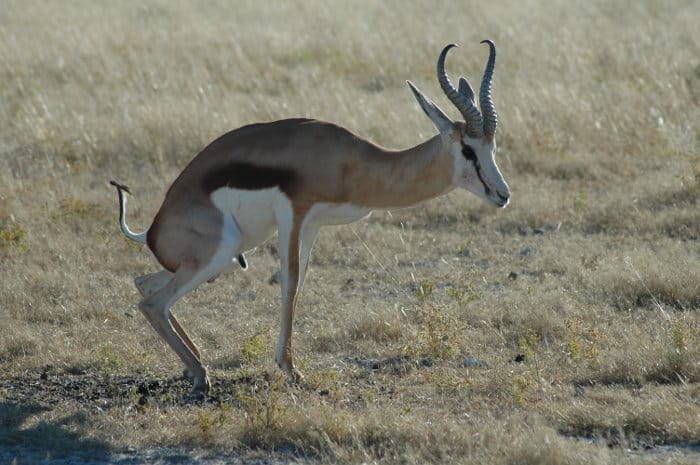
Some people picture an African safari and imagine going to the toilet in the forest and wiping with their hand. Well, going to the toilet in the trees is going to be dangerous when there’s elephant herds roaming around. There are toilets, a mix of the seated and squat varieties.
But there isn’t always toilet paper , especially at remote toilets in national parks. Now, the important thing about emergency toilet paper is keeping it in an accessible place . When you need to go you don’t want to rummage to the bottom of your backpack. Or start cursing because your toilet paper hiding place was too effective.
I like to keep a couple of sheets in my back pocket, just in case. Or sometimes I put half a roll in the side pocket of my daypack. And here’s the most important rule of emergency toilet paper: replace what you’ve used . Nobody wants to turn to discarded plane tickets or insurance certificates when they’re on the toilet. 😉

I always like to tell my guests about the different styles of toilet they can encounter, like composting toilets, squat toilets, the hole in the ground, and the at-one-with-nature. One morning I was watching out for animals when a guest wanted to find a discreet place to do what he needed to do – being male makes these things much easier.
It was the heart of the dry season and the urine created a little puddle on the savannah. Within two minutes there was a Beisa oryx slurping it all up. Everyone was baffled. But I was unsurprised because nothing is wasted in the bush and a tourist’s urine is an excellent source of salt.
Bring a few luxury items for your safari
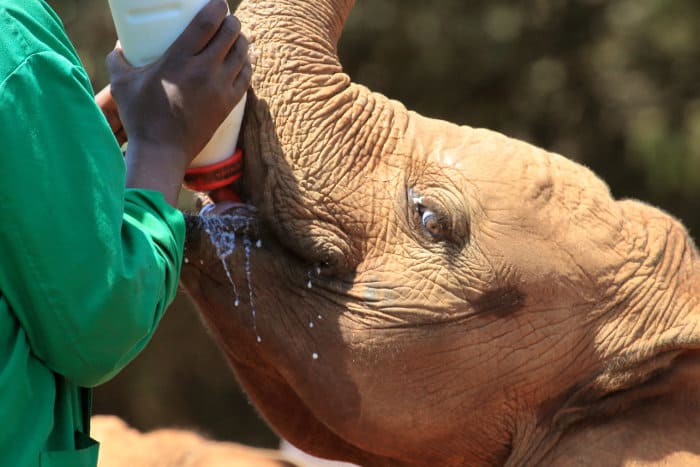
Safaris range from the cheap and cheerful to the ultra luxurious. Unfortunately, there’s not many of us who can afford the high-end safaris and staying in $1000-a-night camps . These luxury safaris come with gourmet meals and snacks, so there’s no need to pack any extra food for your safari.
However, taking a cheaper safari often means sacrificing good food for getting a better price. The menu might be five days of pasta and sauce, or a week of the same basic staples that can be cooked on the fire. There’s nothing wrong with this food, but I find that it can get a little monotonous.
So it’s good to pack a few luxury items for a sweet or savoury snack in the bush. There’s a few things you’ll struggle to find in local African supermarkets, especially nice chocolate or cheese . You might also want to stock up on some chips or nuts .
Bringing a few luxury items means poor quality food isn’t a problem – just don’t leave it within reach of any monkeys …
“Africa is mystic; it is wild; it is a sweltering inferno; it is a photographer’s paradise, a hunter’s Valhalla, an escapist’s Utopia. It is what you will, and it withstands all interpretations. It is the last vestige of a dead world or the cradle of a shiny new one.” (Beryl Markham)
Where and when to catch nature’s greatest show

An African safari always delivers immersive highlights of wild drama and staggering impressions of scale. Nowhere is this better illustrated than the great wildebeest migration , the largest gathering of wild mammals anywhere on the planet .
It’s an annual phenomenon that’s appeared on many wildlife documentaries, concerning 2 million animals migrating around the grass plains of the Serengeti ecosystem. There’s wildebeest, zebra, and Thomson’s gazelle, all of them chaperoned by a hungry collection of predators.
The scale is mind-boggling. In one panorama there’s hundreds of thousands of animals, all slowly grazing and moving across the landscape. Get closer and you can take in all the little details, like zebra resting on each other’s backs, wildebeest mock charging to demonstrate their virility, or cheetah stalking a baby gazelle.
Nature’s greatest show roams between two adjacent and fenceless parks: Tanzania’s Serengeti and Kenya’s Maasai Mara . Witnessing it is about being in the right place at the right time.
From late-December to March , the wildebeest calve on the nutrient-rich grass of southeastern Serengeti. With so many young calves around, this is the prime time to spot the big cats hunting. There’s cheetah , leopard, lions, hyenas , vultures, and a few diminutive hunters you might not have heard of before.
From March to June the herds start migrating north across the Serengeti. They move off in five to seven waves, each big group taking a slightly different route across the flourishing grass. These months are best for seeing the herds on the move, although note that April and May is also the rainy season in the Serengeti.
Sometime in July , the herds start to congregate besides the Mara River. They can wait for days before one wildebeest builds the courage to cross the river and 100 000 follow. It’s a precarious crossing as crocodiles wait in the water and the currents are too strong for the older weaker wildebeest.
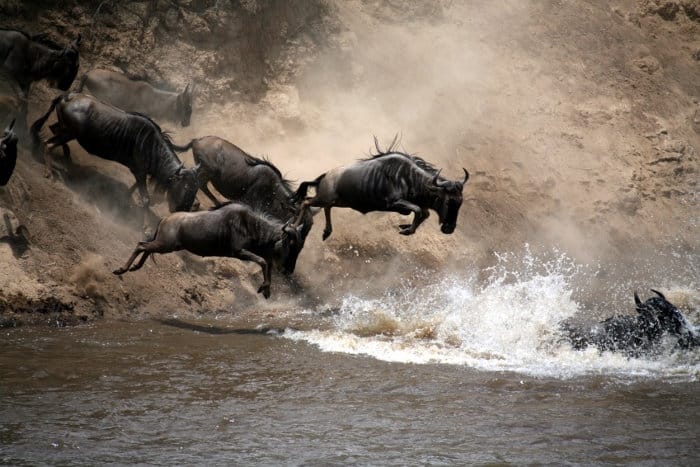
And when they arrive on the other side? Lion prides and other cats are licking their lips in anticipation. July and early-August is best to see this dramatic river crossing from the Serengeti to the Maasai Mara. Then from August onwards , you’ll need to be in Kenya’s Maasai Mara to see the big herds.
By now, they’re all grazing and getting fat on the fresh grass, before the females lead the charge back south to the calving grounds, where the cycle repeats itself for another year.
The sun doesn’t take prisoners

While it might look pretty when it dips behind the horizon and paints the sky all shades of orange, the African sun is intense and pretty dangerous. Rather than malaria, it’s the African sun that’s most likely to have you feeling ill on an African safari.
Safari isn’t a place for four hours of sun bathing next to the pool. Spend two hours with your head in the sun and it will be spinning. So a good wide-brimmed hat is one of the most important things on the packing list.
It needs to be wide enough to keep the sun off your face and the back of your neck , especially if you intend to go on a walking safari. While they might not look particularly fashionable, there’s a reason that so many people wear identical looking safari hats.
But don’t worry too much if you can’t find one at home. Almost all African airports sell typical wide-brimmed safari hats so you can pick one up when you arrive.
While the typical safari hat isn’t particularly fashionable or alluring, there’s plenty of alternative options that can add some jazz to your safari outfit.
For girls , floppy straw sun-hats are lightweight and provide excellent shade cover.
For guys , Panama hats or sturdy real leather cowboy hats are a little more chic than the standard fare sold at the airports.

The anti-bacterial kind
Just imagine: you’re driving through the savannah and the wind is sending dust everywhere, covering everything in a thin veil of brown. There’s no waterhole for miles and there’s a brown layer of sweat on everyone’s face. And now it’s lunchtime, and your dusty fingers are about to wrap themselves around a sandwich.
A small tube of anti-bacterial handwash is an essential little addition to a safari daypack. A quick squirt from the tube and you’re ready to enjoy your lunch, rather than worrying about how many strange germs and dust particles are accompanying the meal.
An absolutely essential item on the packing list

Insects are tricky. They can turn any safari into an itchy nightmare as they ravish your ankles and feast on the skin around your legs. So insect repellent is perhaps the most important item on your packing list . You’ll need to apply it every late-afternoon , in preparation for when the mosquitoes hover around at dusk.
You’ll also need it on in the early-morning , especially for an early game drive. And it’s not just mosquitoes . Protection against things like tsetse flies also makes insect repellent absolutely essential.
So what is a good mosquito repellent? Ideally, look for a product that contains at least 20% DEET , the active ingredient in the repellent. Some brands have insect repellents with 50% or even 80% DEET. However, some people don’t like DEET as it’s a chemically manufactured substance.
There are various natural alternatives. Citriodol is produced from eucalyptus oil. Citronella is excellent although it’s hard to find repellents that use it. Picaridin is very pleasant, relatively odourless, and has a gentle clean feel.
DEET is still the most effective in keeping the insects away, but these natural remedies just feel nicer on the skin.
A recent addition to the market are insect repelling wristbands , available with both DEET and natural repellents. Wear them on your ankles and wrists and they can be extremely effective. Just remember to remove them when you’re in the shower, otherwise you’ll wash away all of the repellent.
Insect repellents come in various sizes and styles, like gels, sprays, creams, or roll-ons. Personally I feel that too much is lost with the sprays, as half the bottle misses your skin when you spray it on.
I like to carry a small pocket-sized bottle of repellent cream with me, because there’s always one day when you forget to put on your repellent and the insects start biting.
“If you think you are too small to be effective, you have never been in bed with a mosquito.” (Betty Reece)
Ensure immediate attention in an emergency
Hospitals in developing countries work a little differently from those at home. The first question they ask when you arrive is not “what happened,” but “who is going to pay?” Medical treatment isn’t free and the hospital will want some proof that the costs can be covered.
You will probably be able to cover the costs. But what if you don’t have cash, they don’t accept Visa, and the nearest ATM is 150 km away? In an emergency it’s important to get immediate treatment.
Carrying a copy of your insurance certificate helps ensure that the doctors will treat you straight away. It helps to have the insurance company’s emergency phone number on the document so that they can make immediate contact if anything needs to be clarified.
Some elementary Swahili for visiting East Africa

Africa has over 1000 languages and 3000 tribes , so it’s not always easy to communicate in a local dialect. Swahili is the main language of East Africa and while it won’t be everyone’s first language, it’s a language that almost everyone can speak in the region.
Learning a few simple words is an easy way to endear yourself to the locals. It’s a real show of respect if you attempt to use a few words. The great thing about learning Swahili is that you speak it pretty much as it is written, so there’s no funny phonetics like many other languages.
Thank you = Asante
Hello, how are you = Jambo
Reply to Jambo = Sijambo
Hello, how are you (informal) = Mambo
Reply to Mambo = Poa
How are you (general) = Habari
Reply to Habari = Nzuri
Welcome = Karibu / Karibuni (to welcome more than one person)
Have a good journey = Safari njema
Where’s the toilet? = Choo kiko wapi?
Go away! = Nenda zako!
No worries = Hakuna shida (although Hakuna matata is also correct!)
Lion = Simba
Buffalo = Nyati
Elephant = Ndovu / Tembo
Leopard = Chui
Rhino = Kifaru
Cheetah = Duma
Hyena = Fisi
Crocodile = Mamba
Hippo = Kiboko
Snake = Nyoka
Giraffe = Twiga
Warthog = Ngiri
Zebra = Punda milia
Baboon = Nyani
Wildebeest = Nyumbu
I was staying at a lodge by the river in Ruaha National Park and it wasn’t fenced off. So wild animals were roaming around. It was almost dark and my mother and sisters walked from the chalet to the restaurant. Maasai warriors usually accompany guests but for some reason they weren’t there.
On the way they bumped into a lone buffalo bull , and solitary buffalos are known for their aggressive behaviour. I’m not sure if my mother had time to shout “nenda zako” (go away), but luckily one of the staff members arrived and scared the buffalo away with some stones. They certainly got a huge fright!
Scaling Africa’s highest mountain!

Kilimanjaro is a majestic symbol of Africa, an old volcano that towers some 5895 meters above the plains of Northern Tanzania. Mounting to the snow-dappled summit is one of the continent’s great travel challenges and experiences. But it’s not easy.
Climbing to the peak takes at least five days , although realistically you should count on six or seven days. Summiting Mount Kilimanjaro is only possible on an organised tour and the majority of these leave from the Northern Tanzanian town of Moshi . Porters carry your bags and all your food, so you only need to carry a daypack.
There’s now six different routes to the top but 90% of climbers take either the Marangu (Coca-Cola) or Machame (whisky).
Marangu takes six days and is the only route that offers accommodation in mountain huts. It’s not the most scenic as it ascends and descends on the same trail. You can also do it in five days, but this seriously increases the risk of altitude sickness.
Machame takes six or seven days and is far more scenic , with a different loop up and down the mountain always bringing sublime panoramas. It’s widely considered a more difficult climb but is extremely scenic, with accommodation at public campsites.
For something a little different, consider the Lemosho route , a seven-day camping trail that starts from the West then descends to the South.
Expect to pay a minimum of $250 per day for a climb, with something around $350 per day being more realistic .
On the Africa Freak website you can find articles on what to pack for a climb, an unbiased guide to all the different routes , and an interview with someone who has climbed Kilimanjaro .
Wildlife doesn’t care about trends or labels
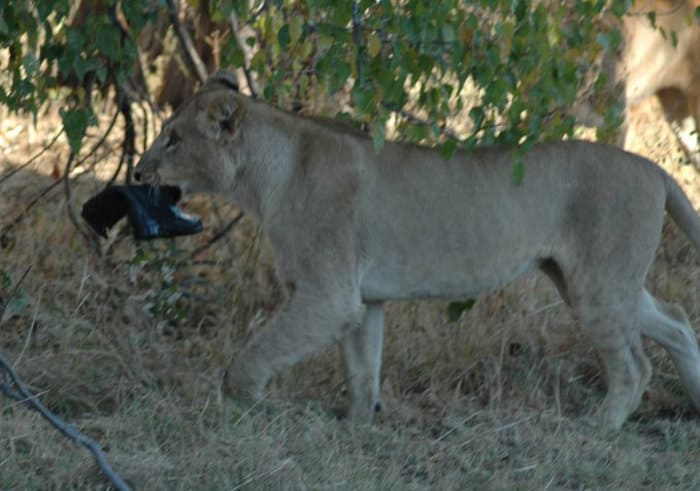
I’ve seen some crazily dressed safari-goers over the years and many people who seem to be competing for wearing the most impractical safari gear in history. There’s been haute couture animal prints hot off the Milan catwalk, Prada stilettos getting stuck between the slats of wooden decks, and $300 silk scarves getting ripped to shreds by thorn bushes.
I’ve even witnessed a set of Victoria’s Secret lingerie draping from the branches of an Acacia tree – it must have been stolen by vervet monkeys! And guess what, elephants and zebras don’t have a clue about high fashion or trends. They can’t tell if you’re wearing Lacoste from H & M.
When it comes to safari, there’s a good chance that what you wear is going to get ruined. So it’s not the place to be sporting your finest labels and most expensive clothes. Things will get dusty, sweaty, dirty, and covered in flying thorns from the vegetation – so practicality should always come above fashion when it comes to packing your bags.
Night sounds on safari can be extraordinary. Especially when an entire herd of buffalo comes storming through campsite, chased by a pride of lions! That’s what happened to me at Keer Keer Camp in the Timbavati.
What a symphony it was! We could hear one of the beast’s struggle as it went down in a fight for survival. To our astonishment we found the carcass the next day, less than 300 meters behind the camp and surrounded by six lions feasting.
“You know you are truly alive when you’re living among lions.” (Karen Blixen)
What to choose for an African safari
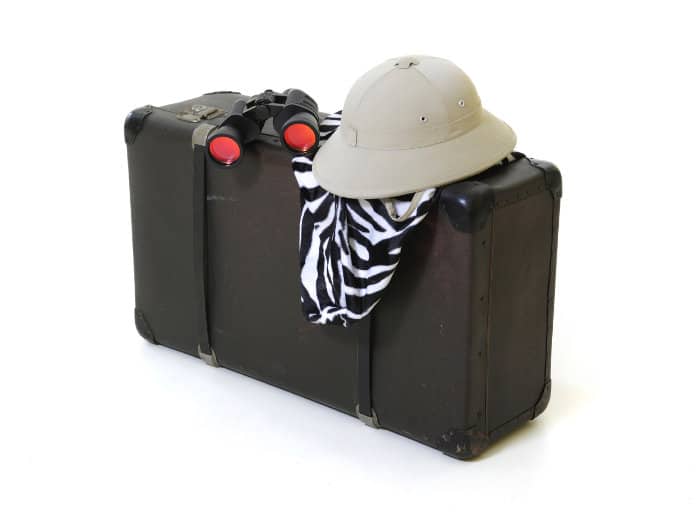
When all your safari gear is ready there’s another question that crops up. What to pack it in? If it was any other holiday then the type of luggage wouldn’t really matter; all the bag needs to do is survive the plane journey. But on an African safari things can get a little more complicated.
Your luggage is going to be coming with you on the journey, so it will be bumping around the bush and getting squashed into the back of Land Cruisers. Ideally, you’ll want to bring something that is both strong and can be easily squashed .
I find that duffel bags are perfect for this. I also prefer to only take bags with YKK zips as these are very strong and more secure.
Perhaps you already have something strong, secure, and squashable. If you don’t, what’s wrong with your existing luggage? Many suitcases are simply too inflexible . They take up too much room for how much they fit in, which is a nightmare when guides are trying to squeeze things into a safari vehicle or stash a bag beneath a seat.
Many cheap suitcases also aren’t strong enough . They need to survive getting thrown around and absolutely covered in dust. And those handy little wheels? They’re not that useful when the ground is as rugged and rough as the African savannah.
That’s why I like a sturdy duffel bag that can be squashed down but also expanded to fit in any last minute souvenirs at the end of a safari.
Your health depends on this

Somewhat bizarrely, malaria has actually helped Africa’s safari destinations stay wild and untouched . When the colonial invaders arrived they were fearful of areas where malaria was rife, so they didn’t turn places like the Serengeti into an area for farmland.
Fast forward and there is still some threat from malaria in Africa. Insect repellent is the most important factor in reducing the risk. If you don’t get bitten by a mosquito then you can’t contract malaria. So being cautious and applying the repellent is essential.
Camps and lodges should already come with mosquito nets so make sure you spend the night underneath it and not on top of it – sometimes that’s more problematic if you’ve had a few too many drinks!
I actually prefer not to take antimalarial medication . I’m not a fan of these medications and try to avoid them as it’s difficult to keep taking it for prolonged periods.
But I’m definitely not going to advise that you do the same. Contracting malaria has deadly consequences and you should get recommendations from your doctor .
Antimalarial tablets are especially recommended for anyone on their first trip to Africa. Not everywhere in Africa carries a malaria risk. Unfortunately, almost all the main safari destinations do. You can find country specific malaria maps here .
No antimalarial medication is 100% effective and there is no vaccination. There’s generally three types of antimalarial medication and they must be taken throughout the trip, plus a week or so before and after the trip. Again, your doctor will advise.
Malarone (atovaquone/proguanil) is a daily medication widely regarded as having the least side effects; it’s also the most expensive.
Doxycycline is a daily medication that is widely taken but some suffer side effects such as sun sensitivity and migraines.
Mefloquine / Lariam is only taken weekly but a higher proportion of people suffer from its side effects ( not recommended ).
“Everything in Africa bites, but the safari bug is worst of all.” (Brian Jackman)
The importance of blending in with nature
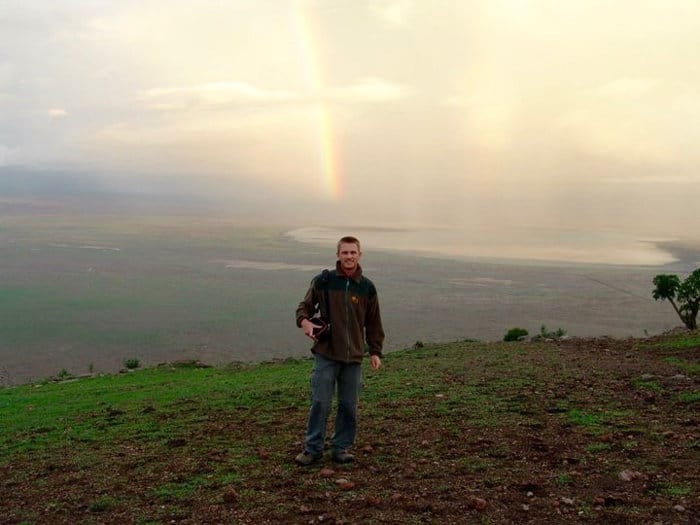
Ever wondered why everyone is wearing such drab colours on their safari photos? Or why wildlife presenters are always in khaki safari outfits? It’s not about fashion or everyone shopping at the same safari outfitter. Neutral colours are essential as they allow you to effectively blend into nature .
That’s not that important on a game drive as the animals see a vehicle, not the people in it. But on a walking safari , neutral colours enable you to become part of the landscape and not disturb the wildlife.
That means you can get closer to the ungulates .
And it also means you don’t annoy any of the dangerous mammals like rhino or buffalo.
Bright, flashy colours stand out against natural landscapes, so animals will run off when they see you. Furthermore, neutral colours can absorb dust far better than bright colours; a khaki shirt still looks khaki after driving through the savannah, while a bright red shirt will probably have turned khaki anyway!
So what are the ideal neutral colours for safari travel? There’s khaki , olive , mushroom , stone , and acacia . All these are extremely effective at enabling you to fully blend into the landscape.
Now here’s another essential packing tip. Avoid dark blue or black clothing at all costs . Yes, they might be relatively neutral, but these colours attract insects like mosquitoes and tsetse flies. The latter can be vicious and bite through your clothes.
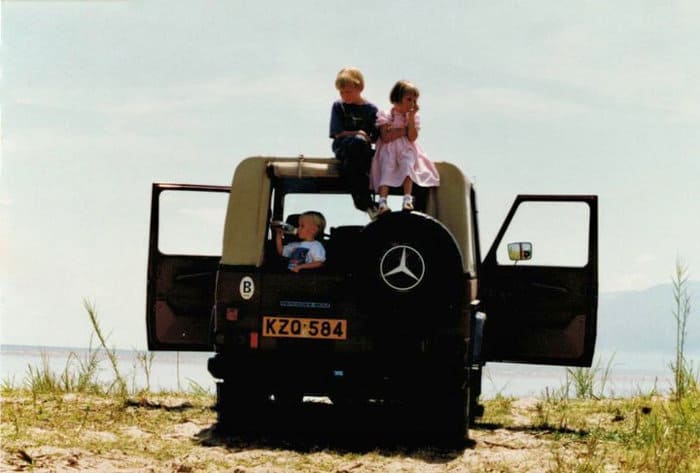
When I was a child, tsetse flies would sometimes get trapped in our jeep. And I remember that my two sisters and I were literally on a mission to exterminate them. We’d use some tissues (we called them “chimiques” – French word for “chemicals”) to squash them against the car windows.
I can still recall the agonising sound of the poor little creatures as we squeezed them in style: a real carnage! Not the most enjoyable thing to picture I must admit, but we were just kids at the time and to be honest it was rather painful when they managed to strike; so we simply couldn’t sit around doing nothing.
Remember to also look up on an African safari
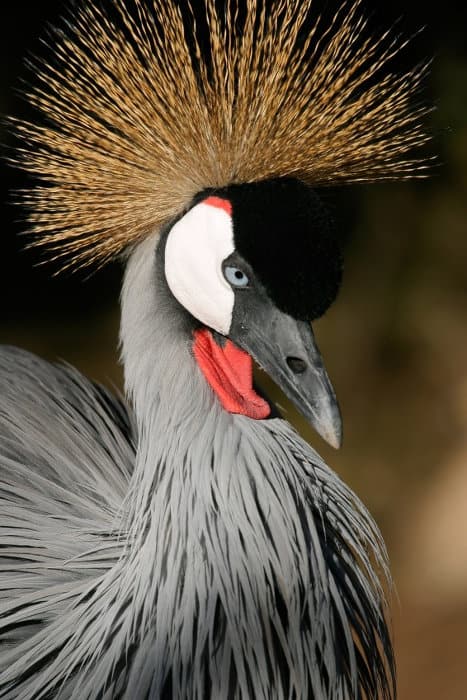
With the impala skipping and the hyenas roaming it’s easy to spend the whole African safari with your eyes to the ground. It’s the famous mammals that attract most people to safari and these normally live on the ground.
I’ve often fell into the rhythm of eagerly scanning the grass and only checking out the animals that live at ground level. But what about the trees and the sky? Africa is a birdwatching paradise and some national parks have over 500 different species .
They range from the exotically colourful to the boisterous and noisy, or the cute and curious to those with bizarre mating displays. Eagles soar overhead, vultures rest on high branches, while tiny tropical birds flutter above the savannah. And if you don’t look up you’ll miss it all.
While finding the big mammals is usually at the core of the experience, ornithology offers an added treat on any safari journey.
Some of my personal favourites are the African fish eagle , the majestic emblem of Zambia; the intriguing helmeted guineafowl ; the stunning bristly crown of the great crowned crane (pictured); then the rainbow colours of the lilac-breasted roller . There’s some inspiring photos and other examples of iconic African birds on the Africa Freak site.
“There is something about safari life that makes you forget all your sorrows and feel as if you had drunk half a bottle of champagne — bubbling over with heartfelt gratitude for being alive.” (Karen Blixen)
Good things come to those who wait…
Everyone goes on safari dreaming of the famous images from the wildlife documentaries, like buffalo herds clashing with lions, trunk-swinging elephant babies, or leopards pouncing on black and white zebra stripes. There is a good chance that you’ll see these beautiful safari scenes, but you can’t expect to see everything in the first hour of your first ever game drive.
At lodges and camps, I’ve heard many people complaining and saying that they “didn’t see anything . ” When I ask them to clarify, they say something like “well, we only saw two rhino, lots of elephants, and loads of buffalo.” Then I ask them to clarify further and they say “oh yes, there were zebra and gazelle and warthogs and hippos and crocodiles…”
When people say they “didn’t see anything” it usually means they didn’t see one of the big cats . Safari is unpredictable and you can’t expect to find every animal on every game drive. It’s not an unsuccessful safari just because you didn’t see a leopard.
So rather than get preoccupied with finding all the animals, pack plenty of patience and prepare to be amazed by the unexpected . Safari isn’t just about saying “I saw a rhino.” By being patient you can fully enjoy the natural show created by these incredible mammals.
So rather than zoom off, stop and enjoy your intimate access to the behaviour of Africa’s wild animals.

I remember being 12 years old and visiting the Serengeti in Tanzania. I was playing around with my cousins and standing on a small kopje, a rock that looks a little like Simba’s in the Lion King. Suddenly I got attacked from behind by an unhappy hyrax .
I must have been disturbing his nap or challenging his kingdom because he clearly wasn’t happy to see me! It just shows that wildlife can turn up when and where you least expect it.
Always keep it under 15kg!
Safari involves traveling between different destinations and staying in a variety of different lodges and camps. You’re constantly on the move, either in the safari vehicle or sometimes flying between national parks. So everything you pack is going to be accompanying you .
International airlines have big luggage allowances but the small planes that connect safari destinations have fairly strict 15 kg limits – there’s simply not enough space on the plane to accommodate bigger bags.
Similarly, while safari vehicles can be spacious, you don’t want all that space getting filled with multiple suitcases.
You want to be relaxed and comfortable. Not cramped and having to step over a backpack to get in the car. Don’t worry, you will be able to get your laundry done in Africa so there’s no need for packing 15 of everything .
Three important tips regarding your passport
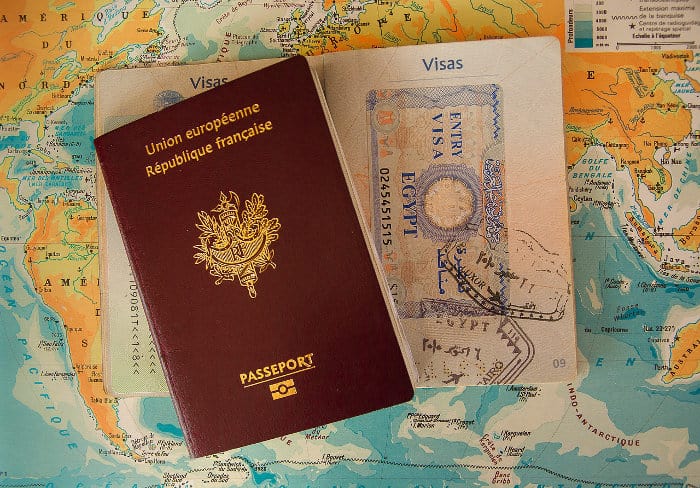
Everyone needs a passport to visit Africa. So I’m not presuming that you might forget it. But there’s three important things to consider :
1) Make sure your passport is valid for at least six months after your planned departure from Africa date.
2) Most countries require you to have two blank pages in your passport , although the immigration official may only use one.
3) Always carry a colour photocopy of your passport and keep a backup file online using a site like dropbox . You can also email yourself a copy of your passport for easy reference.
“…few can sojourn long within the unspoilt wilderness of a game sanctuary, surrounded on all sides by its confiding animals, without absorbing its atmosphere; the Spirit of the Wild is quick to assert supremacy, and no man of any sensibility can resist her.” (James Stevenson-Hamilton)
Document the wonders of Africa
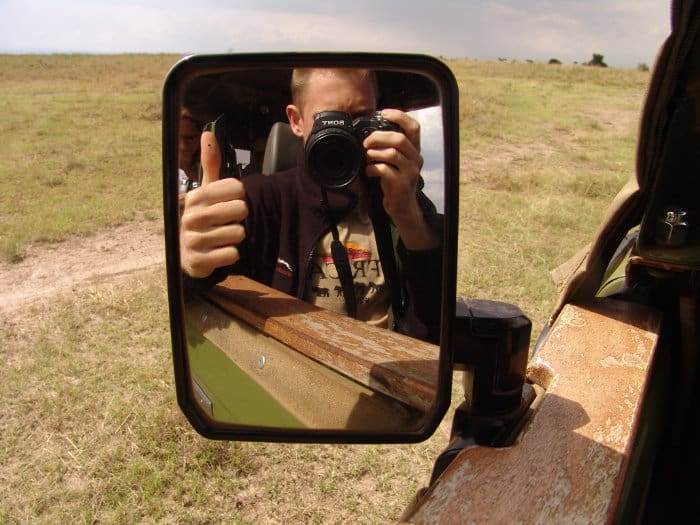
I’ll be honest. Photography is not my specialist subject . I’m the guy who usually prefers taking pictures with eyes wide open rather than the camera shutter. And while I’ve taken a few great snaps of safari, they won’t come close to wonderful photographers like Kerry , Gerry , Morkel, Greg , Andrew and Uwe .
In general, I’m a person who is enjoying the safari and taking a few photos of what comes along. But I have taken thousands of photos. So here’s five easy tips to help you decide the kind of equipment to bring on your safari.
1) Objective of the safari? Are you a serious photographer looking for incredible shots? Or just coming to enjoy the experience and capture some memories from the safari?
If it’s the former, you’ll need to have a good DSLR with at least two lenses . Great wildlife photography is challenging so you’ll need quality equipment that’s up to the task.
2) Lenses and zoom . While safari offers intimate encounters with wildlife, you won’t be able to get three meters away from all the animals. Most wildlife keeps a respective distance . So a good zoom lens is essential, whether you have a compact camera or a DSLR.
Use wide angles (18-35 mm) for picturesque photographs and super zoom lenses (18-200 mm usually does the trick; 28-300 mm for best results) for animal portraits and close-ups.
3) Stability . Zoom into the wildlife and it will be difficult to get a sharp image without some form of tripod. Standard tripods can be bulky and impractical when in a safari vehicle. So consider lighter ones that can be attached to a vehicle roof.
A great option is a pillow pod camera support ; these are portable and provide a soft cushion for resting your lens.
4) Extra memory cards . On some safaris I’ve taken well over 1000 photos. And I’ve seen lions and elephants before so I don’t need to photograph every single one.
On a first-time safari, some people can take tens of thousands of photos. So you’ll definitely need a spare memory card .
NB : Find out what might happen when you’re not fully prepared for the “unexpected” (watch Kai’s incredible video footage below).
5) Portable charging . Many safari vehicles have electricity outlets so you can charge on the go . It’s very handy for ensuring you don’t miss any of the action.
At the Serengeti National Park entry gate my father was in urgent need of going to the bathroom. He decided to choose a bush not very far from the car. About five minutes after he had come back I looked around. There was a huge male lion standing in the exact spot where my father had done his business. It was very close and a pressing need that could have been costly.
Hydrate, hydrate, hydrate
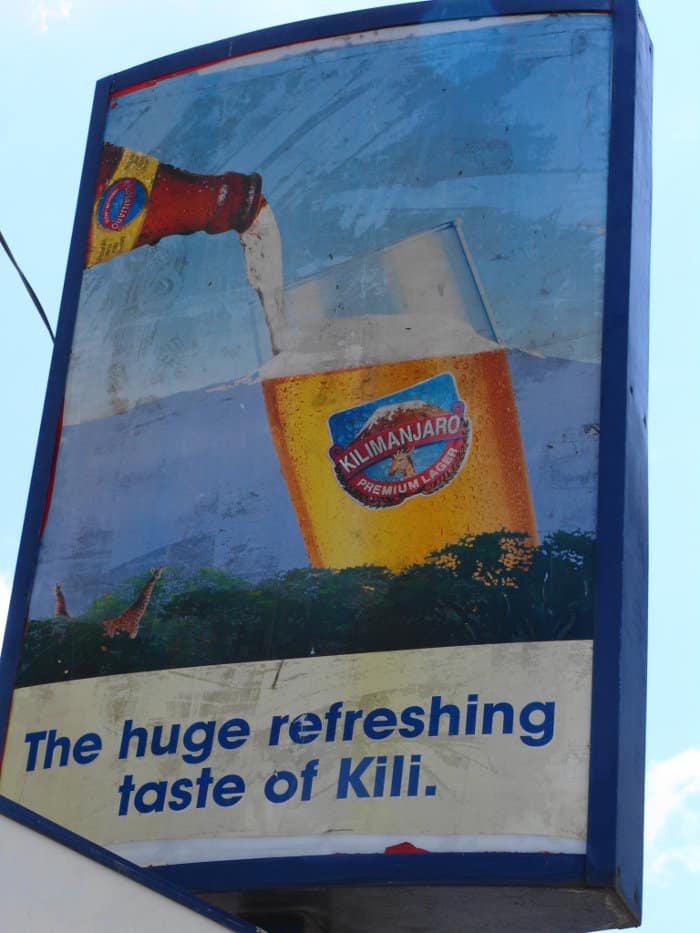
Perhaps the greatest health concern on an African safari is dehydration . Africa is hot and you’ll need to be drinking at least two litres of water a day , every day. Dehydration is a slow torture and once you’re dehydrated there’s no going back.
I like to take my own durable water bottle with me at all times. But on a walking safari, I would also recommend a bladder hydration pack .
If you have to remove the bottle from a backpack, then you reduce the willingness to drink. Yet with a pipe hanging over the shoulder , drinking water is always accessible and it helps you stay hydrated.
Mix up the itinerary and see Africa from different angles

For many people, safari is about driving around and checking out all the weird and wonderful wildlife in its natural habitat. Game drives are the core of most safari itineraries and they’re a wonderful opportunity to explore a landscape and all its residents.
Elephant herds, hippo pods, lion prides, monkey troops, giraffe towers; game drives allow you to cover large distances and discover a variety of habitats.
But game drives aren’t always the only means of exploration. Many safari destinations permit a variety of safari activities , each offering a fresh perspective on the landscape and the wildlife.
Where possible, consider an itinerary that incorporates these different activities. While you’ll be seeing the same wildlife, there’s a very different feeling to these experiences.
Nighttime game drives are always thrilling, encouraging you to follow audio clues and listen to the sounds of the savannah . While your field of vision is diminished, remember that a lot of wildlife won’t see you coming. So you can get much closer than normal.
For example, it’s completely black and you can hear rustling. Yet only when the guide switches on the spotlight do you discover that the two rhino are just five meters from the vehicle. Walking safaris (see W ) are another intimate and exhilarating experience.
How about a safari from the air in a hot air balloon or small plane ? It’s a great option for appreciating the scale of Africa’s large national parks and wilderness areas. From the air it’s easy to take in the raw splendour of the environment and pick out all the different herds that roam freely across the landscape.
To get further inspired about safari from air, how about seeing what a scenic flight over the Okavango Delta looks like? Or rising above the African plains on a balloon safari?
Horse riding and bicycle safaris are also possible in some reserves, usually those where there isn’t any threat from predatory cats. They’re a chance to blend into the landscape and get impossibly close to many animals.
Being in the saddle means you become part of the environment , rather than a noisy vehicle that’s interrupting it. So the herds don’t run away and you might be surrounded by hundreds of zebra or wildebeest.
“Africa – You can see a sunset and believe you have witnessed the Hand of God. You watch the slope lope of a lioness and forget to breathe. You marvel at the tripod of a giraffe bent to water. In Africa, there are iridescent blues on the wings of birds that you do not see anywhere else in nature. In Africa, in the midday heart, you can see blisters in the atmosphere. When you are in Africa, you feel primordial, rocked in the cradle of the world.” (Jodi Picoult)
Listen to the guide and never break the rules

Safari is very safe. Except that is, if you don’t respect the environment and ignore the rules . There are sporadic stories of tourists getting dragged through a car window and eaten by lions. Or of elephants flipping a vehicle filled with tourists.
Almost exclusively, these dangerous incidents happened because the tourists didn’t respect the wildness of the environment . Lions, elephants, and many other African mammals can be extremely dangerous.
They will accommodate and accept your presence. But leaving the car window open when approaching a lion pride is like leaving the fridge door open when you’ve got a pet cat. It’s an opportunity to eat and cats don’t usually ask permission.
Likewise, camera flashes are a great way to wind up nature’s largest land mammal. But an elephant will give two clear warnings before it charges , flapping its ears and stamping its feet to show irritation and annoyance.
So when an elephant flips a vehicle, it means that a) the tourists didn’t respect the rules about using the flash and b) they didn’t respect the behaviour of the elephant.
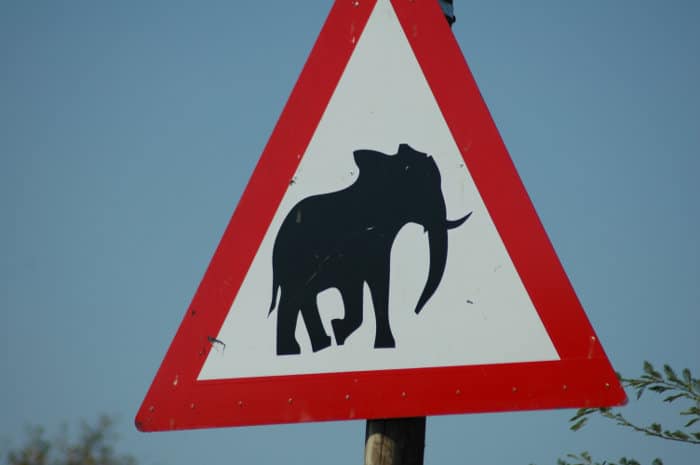
Respecting the environment is about respecting that you are just a visitor to this wild mystical realm . It’s about respecting that safari isn’t about interaction but observation and exploration .
That means not stroking lions, inciting elephants, feeding baboons, riding zebras, or challenging hyenas to a laughing contest.
It also means respecting the wildlife and staying quiet whenever you encounter any animal. Here are some more practical do’s and don’ts when you’re on safari:
- Pack out all your rubbish .
- Stick to the designated trails and definitely don’t wander off on your own .
- Do not feed any of the wildlife .
- Only drive on allowed roads and stick to the strict speed limits .
- Don’t hang out of any vehicle .
- Never take anything out of a national park.

Some recommended places to buy the best safari products
After a few years of trial and error I’ve narrowed down the list of good online safari shops to four. These shops stock almost everything you’ll need for a safari wardrobe along with the accessories that are essential for your adventure.
- Africa Adventure Safari Products – Buy books, clothing and travel gear to take on your trip.
- Kendrick Imports – Kendrick imports unique merchandise from Africa and claims to have personally road-tested everything they stock. It’s especially useful if you’re looking for Rogue outdoor gear or safari clothing.
- SafariQuip – The travel equipment and adventure gear shop. Their motto is “if it doesn’t work we don’t stock it”.
- The Safari Store – The specialist supplier of safari clothing, safari luggage, binoculars, safari books and safari accessories.
Other outdoor adventure stores to consider (for last-minute shopping in South Africa ): Cape Union Mart , Outdoor Warehouse , and Drifters .
Think about practicality and comfort
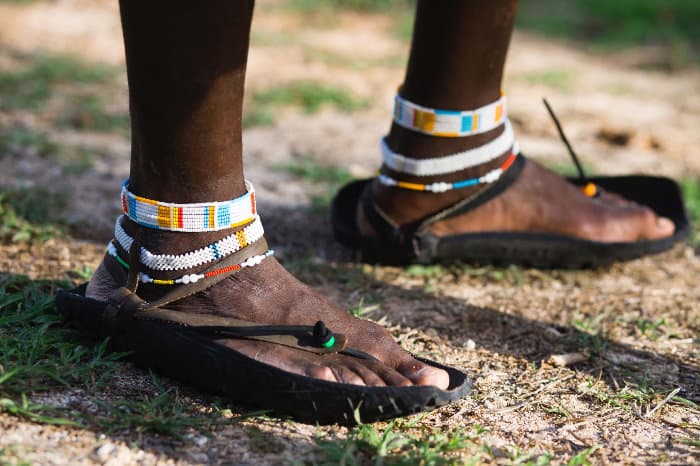
Most people come on African safari with their big thick walking boots, despite the fact that the most walking they’ll do is from the lodge to the car. There’s a presumption that the African savannah demands the biggest and most durable footwear around.
But did you know that San bushmen hunt animals barefoot? Or that Maasai warriors wear shoes that are made from disused car tyres? Of course, the savannah can be full of thorns, so I’m not recommending wearing slippers on safari.
Yet there’s no need to bring heavy uncomfortable footwear unless you’re actually going to be doing some walking on the safari.
For vehicle-based safaris it’s best to think about practicality and comfort . Safari vehicles in East Africa have pop-up roofs , so you’ll be standing on your chair to get a great view over the landscape. And you don’t want big dirty footprints all over the seat.
So shoes that are easy to slip on and off are good. If you’re just doing small walks around the camp then sneakers are more than adequate. Walking boots are very restrictive and sweaty in the heat, so your friends won’t be too happy when you take them off and smell out the vehicle or tent.
Plus, the funky scents can attract wild animals when you leave shoes outside the tent! I like to pack a pair of heavy-duty waterproof “bush slops” or sandals , which are good enough to handle walking in light bush and practical for staying cool on game drives.
It’s a different story if a walking safari is part of the itinerary. Then you will need something a little more durable . The landscape is rugged and uneven, so sturdy walking boots that cover your ankles and help protect against strains are a good idea.
Don’t worry about fashion or looks . Practicality and comfort are always the most important factors when choosing shoes for an African safari – just check out the tale of high heels below.
In the evenings it’s always nice to slip into a fresh pair of non-safari shoes – i.e. footwear that isn’t covered in thorns or all sweaty from the day. Basic flip-flops are good for walking around the camp and a pair of slip-on tennis shoes are even better as they protect your feet from the evening mosquitos.
During the great wildebeest migration I took clients to a luxury tented camp in Kenya’s Maasai Mara. It was a place for luxury clientèle and many of the female guests came to the restaurant tent in evening dresses and high heels . I felt a bit out of place in my dust-stained shirt, even if a wild lion could be heard shouting in the distance.
After sunset it was incredibly dark, with just the crackle of the fire and the piercing wheeze-honk of hippos keeping everyone company. Out of nowhere there was a loud scream . When the rangers shone their torch they found a female guest collapsed on the grass.
Walking back to the tent in the dark isn’t easy in high heels, especially on a landscape as uneven as the Mara. The lady had tripped and somehow managed to face-plant a pile of buffalo poo .
Turning red just isn’t cool

It’s almost impossible to go on a safari and not see a handful of tourists who are horribly sunburnt . The logic is simple and so many people fall for it. Many think that the sun in Africa is the same as the sun at home. Which technically it is, but the effect is very different.
The savannah isn’t a place for tanning oils or waltzing around thinking that the red burn “will turn brown later.” Not respecting the sun can lead to days of painful misery , and that goes for locals as well as tourists.
Namibia’s Himba tribe concoct sunscreen out of ochre and butterfat, while the Zulu people smear their faces in an orange-brown natural suncream made from the earth. So why do so many tourists come to Africa without sunscreen?
Factor 30 is the absolute minimum you should consider packing. Anything less can’t compete with the sun’s UV intensity. The African sun burns quicker than it does in Europe or America. Bring one main bottle of sunscreen and then one pocket-sized bottle that easily fits into your daypack.
Everyone has their favourite brands and there’s plenty of choice at shops in the West. Unfortunately, there’s only limited choice once you arrive in Africa. Bottled sunscreens for the local market often contain whitening, and while nobody wants to go red, few people want to turn whiter than they already are.
Good sunscreen is imported so it’s rare to find shops or pharmacies with more than just a couple of rudimentary options. Sunscreen is always the number one item on my packing list, because, well, I definitely don’t want to turn the same colour as a baboon’s behind (trust me, it’s not pretty).
“I’ve taken many guests to Botswana’s Central Kalahari in search of the zebra migration. 50 000 zebra are on the move but locating them in the desert isn’t easy, especially given the scorching desert mirages that always hang on the horizon.
I always remind my guests about sunset and wearing sunscreen. Not everyone listens. After a week on safari I take guests back to the city and some can’t believe their eyes. They almost turn into a zebra , with their whole body being white, except for a very dark brown stripe on their arm.
When you sit in the same place in the safari vehicle the whole time, one arm is always in the sun! So when I remind people of sunscreen I now make sure to tell them about also applying it to their arms.
Crucial for the nighttime trips to the toilet

When you’re camping in the bush, there’s a procedure to follow if you need the toilet at night. First , listen . Spend a minute checking if there’s anything rustling or moving around outside. Open the tent . Now shine a torch around the area , making sure there are no wild animals between you and the toilet.
Only now is it safe to leave the tent . Going to the toilet in the night isn’t the only reason a torch is an essential item on the packing list. Many camps don’t have electricity, so a torch is the only way to see where you are going , or even work out where the zip for the tent is.
I prefer a small lightweight torch that’s easy to carry. I also pack a head torch , which is handy in the evenings around the camp. Make sure it has a solid on-off switch that’s hard to accidentally push when the torch is in your bag – nobody wants to find that the torch is out of battery when the camp is surrounded by buffalo.
Rewarding those that create exceptional experiences
While working in the safari industry is considered a very good job in Africa, guides and staff get paid relatively low salaries . Tipping is an expected part of going on safari and many tour companies will offer guidelines on how much you should tip.
The problem is that tipping should always be reflective of the experience , rather than something that’s demanded. So I always like to tip dependent on how a guide or driver has made my experience. If they are good I tip well. If they’re not good then it seems odd to provide a large financial reward.
Realistically, it’s good to budget around 10% of the safari cost for tips . You might not end up giving all this out. But it always feels nice to reward great service.
“Nothing but breathing the air of Africa, and actually walking through it, can communicate the indescribable sensations.” (William Burchell)
Emergency money…just in case

The traveller’s invisible law says that something will happen to your bank card only when you’ve run out of cash. And then you’re stuck in Africa, with no debit card, no cash, and not much that can be done about it.
I always like to keep a small stash of U.S. dollars hidden away in my bag. U.S. dollars are the most usable foreign currency anywhere in Africa ; they can be easily changed and even used to directly pay for goods and services.
Having $100-200 provides peace of mind and ensures there’s a back up for the time when your debit card gets chewed by an ATM.
Getting covered before you arrive
I’m not a doctor or a health physician, so I’m not going to recommend the vaccinations you will need for your trip. That’s something that can only be advised by your own doctor . However, after years of living in Africa I’ve had many different jabs and inoculations so I’m going to pass on my experience.
For most countries in Africa, doctors recommend vaccinations for hepatitis A, hepatitis B, tetanus, typhoid, and diphtheria. For Kenya , Uganda and a variety of other countries you’ll also need a yellow fever vaccination and certificate (see Y ).
This website is excellent at providing more detailed information for each individual country.
Some countries require advance planning
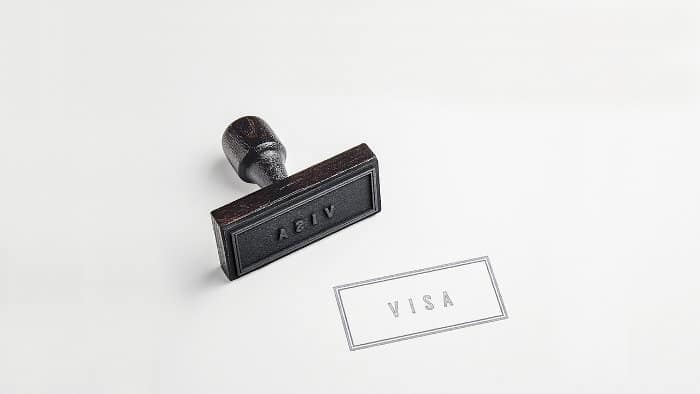
Entry and immigration requirements vary across Africa and whether you need a visa in advance will depend on your destination .
None of the main safari countries should pose any challenges if you have an E.U. , U.S. , Canadian , or Australian / New Zealand passport . But they might require advance planning.
Here’s a quick list with information that’s correct as of January 2022 .
Botswana – No visa required for a 30 day stay.
Ethiopia – Visa required. Can get it on arrival at international airports. Must get it in advance when arriving by land.
Kenya – An e-visa is required which must be obtained in advance from immigration.ecitizen.go.ke .
Lesotho – No visa required.
Malawi – Visa upon arrival.
Mozambique – Visa required. Realistically, this should be obtained in advance.
Namibia – No visa required for stays of up to 30 days.
Rwanda – Visa upon arrival.
South Africa – No visa required, but check the special requirements if you’re travelling with children.
Swaziland – No visa required.
Tanzania – Visa upon arrival.
Uganda – Visa upon arrival.
Zambia – Visa upon arrival.
Zimbabwe – Visa upon arrival.
==> Get Your Africa Visa Online Here!
“One cannot resist the lure of Africa.” (Rudyard Kipling)
Intimately experiencing it all from ground level
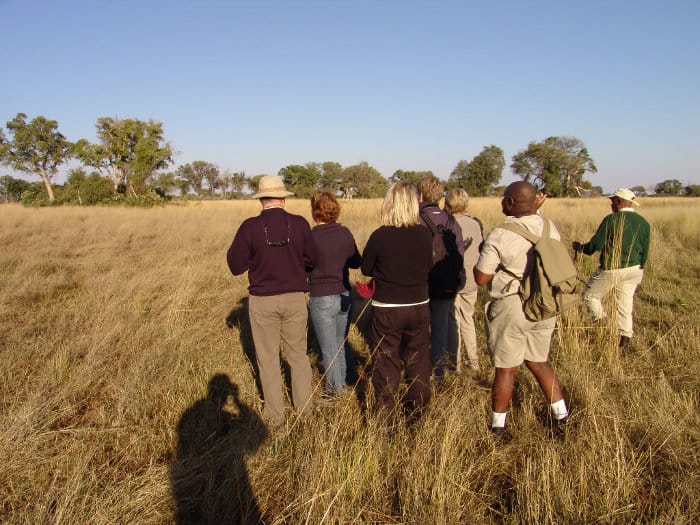
Walking safaris offer an exhilarating experience . Step, step, step, slowly you wander through the bush, usually with a local tracking guide who picks up on all the subtle clues.
Everyone can recognise a paw print in the sand.
But local trackers can feel the print and immediately tell you the size and sex of the hyena and exactly how long ago it passed along the trail. By following these local trackers you can seek out many herds and animals. And everything looks a lot bigger when you’re also at ground level.
Walking safaris are always intimate . You’re less of a threat on foot, so wildlife doesn’t necessarily run away. They also offer a true appreciation of size.
Hartebeest and gemsbok are impressive animals weighing almost half a ton. Only from the ground can you acknowledge just how big they are.
In some countries it’s also possible to take walking safaris that track rhinos or even elephants, rare treats on any trip to Africa.
On a walking safari near Kruger National Park we came across the remains of a buffalo. I had forgotten all about it, but when we returned later in the afternoon a huge male lion was finishing his supper.
It still gives me goose bumps thinking we had been there a few hours before and hadn’t seen any sign of his presence. And then this huge lion was literally licking the blood from around his lips.
Leave your devices at home and forget about Facebook
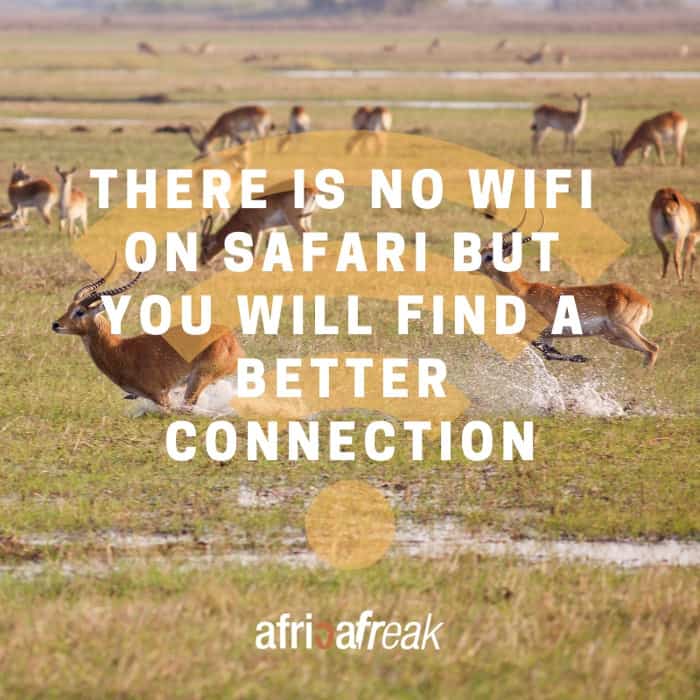
It often amazes me the number of tourists I hear complaining that a camp or lodge doesn’t have wifi . They’re on an African safari, 200 km from the nearest town, overlooking a waterhole filled with hippos and buffalo herds, and they are worrying about their Facebook status?
Sometimes you just have to let go.
First , there’s the practicalities of getting wifi in the middle of the wilderness. On a safari you enter vast untamed plains where the rhythm of life is dictated by the rains and the battle between predator and prey. So it’s hardly a place for interrupting everything with technology.
Secondly , one of the great charms of a safari is the absolute escapism . You’ll hear lions roaring at night, antelopes grazing beside the tent, and hippos grunting from the river. And that’s much easier on the ears than the ping that accompanies a Whatsapp message.
Trying to use wifi on a safari is always frustrating. Even when it is available, it’s torturously slow, especially if you want to upload photos or check a data-heavy Facebook news feed. And while you’re trying to connect the iPad you’re missing out on the procession of wildlife that’s roaming around.
It’s better to forget about the screen and fully settle into the wilderness. There’s a whole world going on before your eyes and it’s far more alive than the virtual world!
Encountering nature’s wildest animals
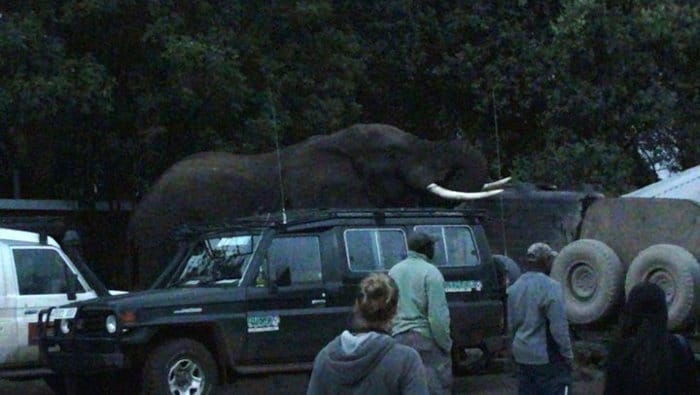
Africa can be a wild continent where dangerous cats run free and hippos live in the rivers. But it’s not completely wild. There are no lions on the airport runway and no rhinos wandering through villages. So the X-rated wildlife situations don’t start the moment you land.
However, in these wild landscapes there are always moments when you hold your breath and hope that one of Africa’s great mammals doesn’t take an interest. Such incidents provide a reminder that you’re just a visitor and this is their realm. And they always provide memories that will linger on for years.
On one safari I experienced an elephant that roamed into the camp and started rummaging through our bags . He stole a tube of Pringles and went through a bag with my friend’s iPhone! You can watch a video of this surreal experience here .
One year I crossed the border between Botswana and Zimbabwe. Although you’re not supposed to, I always liked to take photos at the border posts, next to the sign that says “welcome to …” It’s always a great memory. After crossing into Zimbabwe I walked up the road to snap the iconic green sign that declared I was now in Zimbabwe.
From my left came a loud trumpet sound . People weren’t the only ones crossing this border. The border post was on the migration route of hundreds of elephants. And this big pachyderm wasn’t happy that I’d got in the way.
I quickly ran back to the safety of the border guards, who were rolling around the floor in laughter after witnessing what happened. From then on, I’ve always respected the signs that say no photography at the border.
Fundamental if you’re visiting Kenya or Uganda
Yellow fever is a deadly disease that’s slowly disappearing from Africa. Fortunately, there’s an easy vaccine for yellow fever. However, this vaccination isn’t optional . In countries where yellow fever is prevalent, you’ll need to present a certificate of yellow fever vaccination at immigration.
Without one, they won’t let you in. Or you’ll have to get the vaccine from a nurse at the border post. The yellow fever certificate is required for anyone visiting Kenya or Uganda . It’s also usually asked for when visiting Zambia .
The most enchanting night’s sleep you’ll ever have
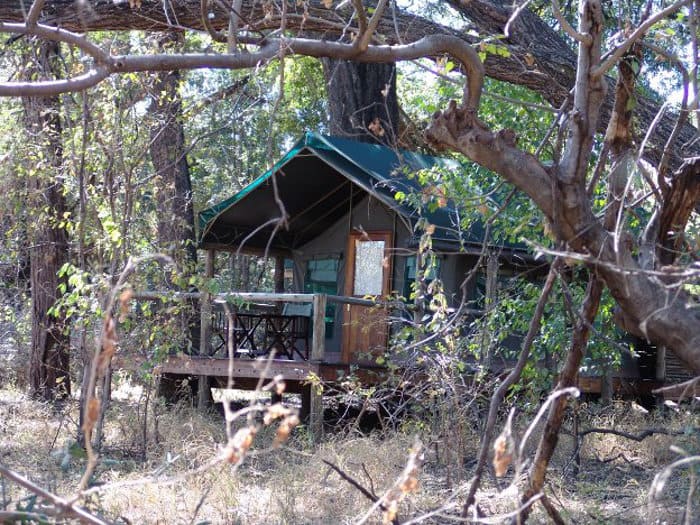
When the thrill of the game drive has slowly evaporated away and the nighttime fire is down to its last embers, you’re led in bed waiting to sleep.
Suddenly a noise .
A soft rustling sound.
Something is next to the tent.
You listen intently in the darkness, waiting for the sound to gently drift away.
Now another noise.
Some elephant trumpets are echoing from the distance.
Now a hippo’s wheeze-honk and the strange cry of a monkey .
More sounds are added to nature’s nighttime lullaby as you lie transfixed in the tent.
Don’t pack the sleeping tablets.
Don’t bring earplugs.
Falling asleep on a safari is one of life’s most enchanting experiences .
The safari hasn’t ended just because you’re in bed.
Nature’s chorus will keep you company and provide a reminder of exactly where you lay your head.
“To witness that calm rhythm of life revives our worn souls and recaptures a feeling of belonging to the natural world. No one can return from the Serengeti unchanged, for tawny lions will forever prowl our memory and great herds throng our imagination.” (George Schaller)
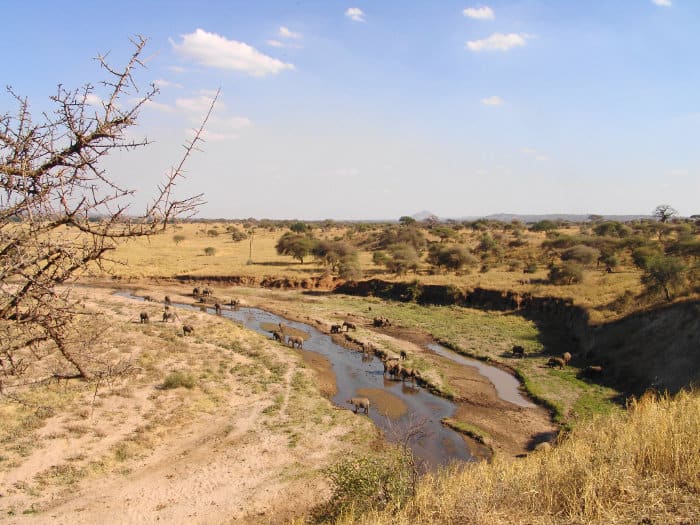
“When you leave Africa, as the plane lifts, you feel that more than leaving a continent you’re leaving a state of mind. Whatever awaits you at the other end of your journey will be of a different order of existence.” (Francesca Marciano)
Safari Njema (have a safe journey)!
Still around?
Congratulations for making it this far! 🙂
You deserve a little gift.
*** Download Your FREE eBook Copy of the Practical A to Z Safari Guide Here! ***
(right click and “Save Link As…” to save it to your computer)
Ready to Plan Your Dream Safari?
Get Your Free Quote Here!
- Destinations
- Winery Directory
African Safari Planning Guide: 20 Tips To Prepare and Book a Safari
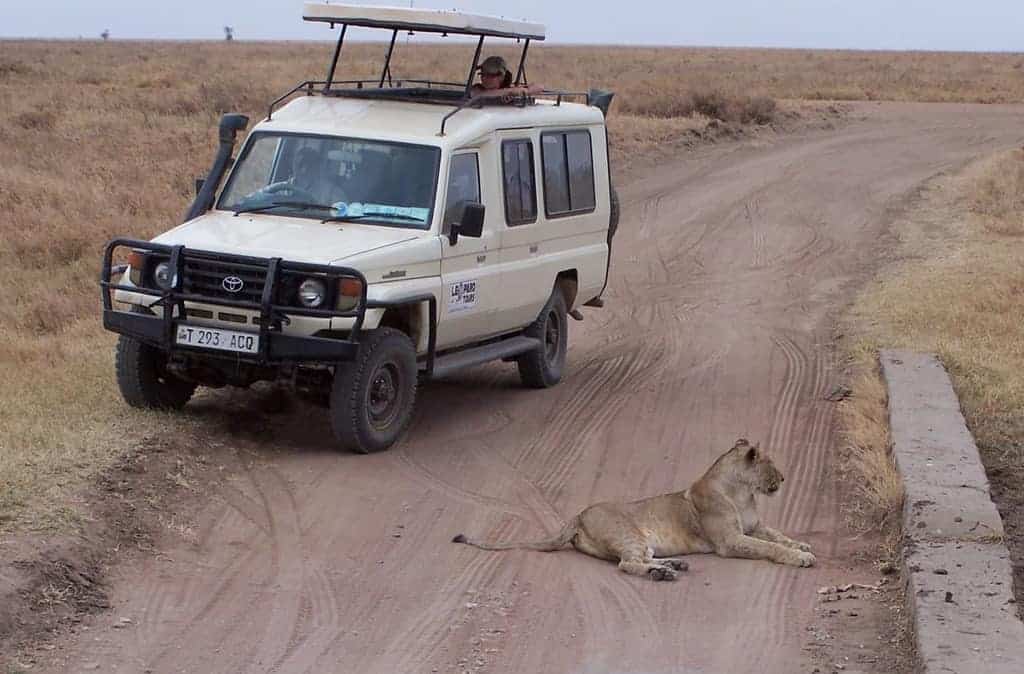
How To Plan a Safari
Are you dreaming of an African safari trip, or maybe you already have one planned? Here are 20 tips to help you plan your trip and manage expectations. While many of these tips will be helpful for any African safari trip, they are primarily focused on Tanzania and Kenya .
Select a Quality Tour Operator
Experienced guides with knowledge of the terrain and an understanding of the animals’ movements will maximize your safari adventure by increasing your wildlife encounters. Here are some of the most highly rated safari tour operators you might consider booking with.
There are many tour operators to choose from at a wide range of price points. The type of safari you choose, the time of year, and duration will factor into the cost. Mid-range and luxury safaris average around $350-$750 per person per day. Many ultra-luxury options are available where the accommodations alone may cost $1,500-$2,500 per night. When comparing prices ensure to review all inclusions, such as whether the lodging, guides, transportation, meals, and park fees are included. Entrance fees for adults at many parks range from ~$50-$80 per person per day.

When to Safari
Wildlife viewings are always plentiful, but seasons and wildlife patterns vary throughout the year and may be different depending on which country or countries you plan to visit. For example, June and July are generally your best months to witness the wildebeest migration in the Serengeti National Park. The wildebeest calving season, where an estimated 8,000 calves are born each day, typically occurs around February in the Serengeti. The migratory animals generally cross the crocodile and hippopotamus infested waters of the Mara River in Kenya around August through September.
Safari Resorts
Communicate with your tour operator ahead of time so you know what to expect at your resorts. Many safari resorts are located in the national parks virtually in the middle of nowhere. All of the resorts we stayed at were luxurious and uniquely designed and decorated. Many of our rooms were in individual cottages, huts, “tents”, or other separated structures. While our safari resorts were all very different, we experienced many commonalities. We were always welcomed with the warmest hospitality and graciously catered to and spoiled beyond measure. We were often greeted with smiling faces offering us freshly squeezed cold juice and a damp towel to clean off the dust.
Beds : Our beds were protected by a netting enclosure to help keep the creepy critters away. Underneath our sheets, as we crawled into bed were hot water jugs keeping the bed warm and toasty during the night. The heat was very calming and relaxing after a long day of safaris.
Hot Water : Hot water is not always consistent and may be rare in budget hotels. All of the lodges we stayed at had at least some hot water. At one of our lodges, we were given a card that outlined the limited time slots during the day when hot water was available. The lodge we stayed at before hiking Mount Kilimanjaro only had hot water available for about 5 minutes at a time.
Armed Escort : When returning to your room after dinner, expect to be accompanied by an armed escort to keep guard of lurking buffalo or other wildlife.
Overeating : Most of the lodges served full 3-course meals 3 times per day. The African-inspired meals were plentiful, varied, and delicious. While we had picnic lunches while we were on game drives, any time we returned to a lodge for lunch, a gourmet feast was waiting for us. Bush dining was offered at many of the resorts and is an experience you should try at least once during your safari vacation.
Resort Style Pools are offered at many of the lodges.
Common Swahili Words and Phrases
We always try to learn at least a few everyday basic phrases and greetings whenever traveling to a foreign country. While both Swahili and English are widely spoken in Tanzania and Kenya, knowing even a few words in Swahili is often well-received.
Swahili is one of my favorite languages. The words sound fun and put me in a good mood listening to them. I don’t think it’s possible to say “Jambo!” meaning “Hello” without smiling at least a little. Here are a few other basic phrases to get you started:
Asante sana – Thank you very much
Karibu – You’re Welcome
Choo – Toilet
Kwaheri – Goodbye
If you’re a 90’s kid, or otherwise loved The Lion King movie, you already know a little bit of Swahili. Hakuna matata translates to mean “no problem” or “no trouble,” and was a phrase we heard and used frequently. Other Swahili words from the popular animated movie include: Simba meaning lion, Rafiki meaning friend, and Pumbaa translating to foolish.
What to Wear
What to wear on a safari has little to do with fashion, although you can be as stylish as you like. You want to avoid wearing colors or patterns that may scare or confuse the wildlife or possibly get you into trouble with law enforcement.
Color Dos and Do Nots: Lighter, neutral-colored clothing with breathable quick-dry fabrics are your best options. Earth tone colors such as khaki, tans, browns, and olive green are excellent options because they blend in with the landscape. Bright colors are believed to scare animals and make them hide, which would defeat the purpose of going on a safari. We were informed tribal men often wear bright red as they believe it will scare the predatory animals from preying on their cattle. Your color options are more important if you’re doing a walking tour than during a game drive, but it’s always a good idea to give yourself the best chance to see wildlife.
Black and dark blue should be avoided as blood-sucking tsetse flies tend to be attracted to these colors. White may turn tan or khaki by the end of the day and may startle wildlife as it is reflective. Don’t wear animal printed clothing, which is prohibited at some zoos, as it can confuse animals. Wearing a pith hat/helmet may be offensive as symbolic of colonial rule. Wearing camouflage may cause unwanted questioning (or worse) by police and is illegal in some countries for anyone other than official military personnel to wear.
Quick-drying fabric is important as driers may be hard to come by. To avoid purchasing single-use clothing, I bought long-sleeve button-down shirts that were breathable and fast drying that were ideal for hiking, fishing, and hot boating days and then wore a tank top underneath. I also purchased quick-drying pants that converted into shorts, although I often preferred staying in long pants because of the dust and bugs.
Shoes : Close-toed shoes protect you from pesky critters. If you’re doing a walking safari, you’ll want sturdy well-broken-in hiking shoes.
Accessories : Wide-brimmed hats and sunglasses are important to help protect your face and eyes from the harsh sunlight. Bandanas, scarves, or something similar come in handy to help prevent dust from getting in your mouth and nose. Some even bring surgical masks.
If your safari trip takes you on smaller single-engine charter planes, packing light may be necessary. You should confirm weight and size limitations with the airline company. The small planes we flew on during our first trip to East Africa had a luggage weight limit of not more than 33 pounds, including any carry-on luggage and purses. There was also a size limitation not to exceed ~14.5 by 27 inches as larger bags cannot fit through the cargo door. If you absolutely must travel with additional luggage, purchasing a premium class seat or an extra seat may be an option.
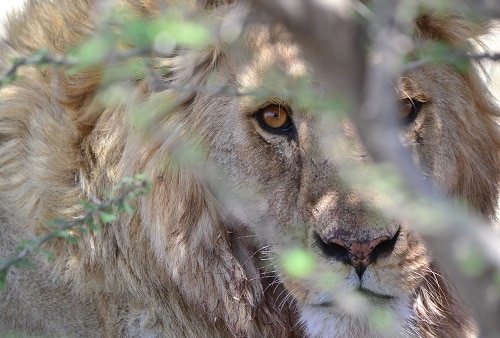
The Excitement of the First Wildlife Encounter
Seeing your first animals in the wild typically ignites excitement. While we had been told stories of how many animals we would see and how close they would get, it’s hard to appreciate the amount and closeness until witnessing it firsthand. Our first two sightings were an elephant and then a buffalo. Both were over 20 feet away and partially hidden by trees. We stood up through the roof of our safari vehicle frantically snapping pictures and staring in awe. Our guide encouraged us to continue onwards with the promise those were only the beginning. By the next day, we would not have looked twice at most animals that far away, unless it was one of the big cats or a rhino.
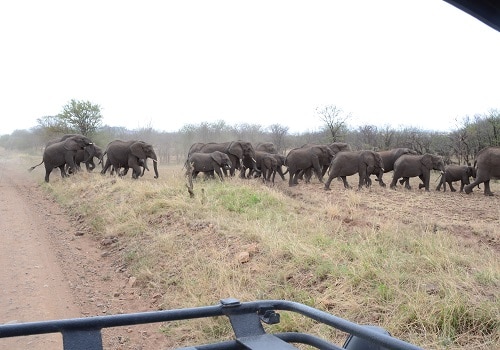
Animal Spotting
While bountiful wildlife is nearly guaranteed to greet you throughout your wilderness journey, you may not see every type of animal. The longer your safari holiday, the better your chances. Different parks are home to different animals. The most frequently sought after animals include the “ Big Five ,” which refers to the lion, leopard, rhinoceros, elephant, and buffalo.
Elephants, giraffes, zebras, wildebeests, buffalos, hippos, hyenas, baboons, gazelles, impalas, topis, and even lions (since they are often seen in prides) are generally easy to find and often can be seen in extremely close proximity to your vehicle. Cheetahs are commonly seen solo or in pairs. Leopards and then rhinoceroses may be the most difficult to spot.
The anticipation is high each day since you never know what surprises await you on a safari. Be on the lookout for wildlife throughout your safari experience. While the guides are excellent at spotting them, the more eyes searching only increase your chances of seeing highly sought after wildlife. Remember to talk in soft voices to avoid scaring the animals away.
Seeing a Kill is Rare
Manage your expectations. Being in the right place at the perfect time to witness the predatory cat stalk and kill its prey isn’t a common occurrence on a safari. It is, however, exciting to sit there in anticipation and maybe witness a chase.
Best Viewing Time of Day
Viewing wildlife is typically better earlier in the morning and later in the day. It is common to return to the lodge to eat lunch since many animals rest midday. Most of the lions and cheetahs we encountered during our safaris were lounging underneath the shade of a tree mid-afternoon.
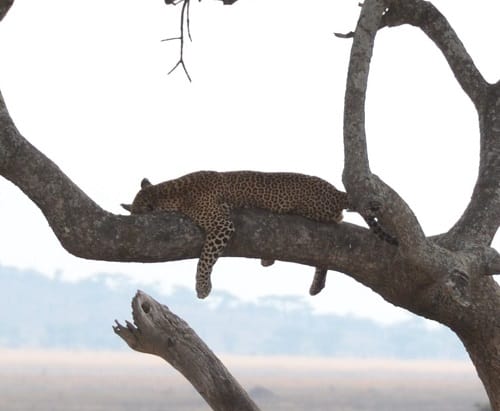
Bumpy and Dusty Roads
Driving is on the left side of the road in Tanzania and Kenya. Many roads are bumpy and dusty, especially within the parks where the roads are unpaved. Potholes and animal crossings are common. Make sure your mouth, nose, and eyes are covered and close your windows as you are passing or being passed by another vehicle as this often causes you to be engulfed in a cloud of dust.
Keep Car Windows Closed When Leaving Your Vehicle
Remember to close your car windows when departing your vehicle. Monkeys or other wildlife may let themselves in if you forget and destroy the vehicle. We saw this happen at a picnic stop when a family left their vehicle to use the restroom and left their windows open. Keep your hotel room doors and windows closed, as well.
Biting tsetse flies, mosquitoes, and other bugs are sure to tag along on your safari at least some of the time. Some of the bugs bite right through your clothes. Covering up and wearing insect repellent, especially in the evenings, will help. There’s even bug repellent sprays you can apply directly to your clothing. The bugs were only bothersome to me during a couple of days.
Public Bathrooms
Whenever a public bathroom is available, use it. The bathrooms are few and far between but were generally available by park entrances and designated picnic areas. The restrooms in the parks in Tanzania and Kenya typically had the option of at least one regular Western toilet along with squat toilets in the other stall(s), which are essentially little more than a hole in the ground.
Bring your own tissues/toilet paper and hand sanitizer (or other liquid soap) and keep them with you as many bathrooms were lacking in one or both. Our guides always had excess toilet paper and hand sanitizer, but I always prefer being prepared with my own supply.
Safety While on Safari
While safaris are generally very safe, it’s important to respect the wildlife and follow your guide’s instructions to maintain safety. Always stay in the vehicle during your safaris, unless you are at a designated area tourists are allowed to walk around.
When you are walking around, be mindful of where you step. If searching for an outdoor bathroom spot, ask your guide’s advice and don’t venture too far. Venomous snakes and scorpions may be in the bush. The big cats camouflage in the surroundings and may be closer than you realize. Buffalos, while herbivores, are extremely aggressive and dangerous toward humans.
If you need to walk around at night while at your lodge (such as to and from dinner), make sure a guard escorts you. There are generally no fences and wildlife can be anywhere. It was not unusual to see lions lounging or buffalos wandering very close to our lodges.
Keep your distance from hippos. While hippos appear very calm, they can be very aggressive, territorial, and are the most deadly large animal to humans in Africa. We watched enormous crocodiles shy away from approaching hippos defining their territory.
Upgrade Your Camera
This is a trip worth investing in a better camera or renting one. Having fast autofocus and a longer lens will help you obtain great photos of moving wildlife and/or wildlife that is a little farther away. My only regret from my first safari trip was not having upgraded our camera. After upgrading to a 200mm lens on my second safari trip, we wished we had a longer lens, such as 600mm .
Having a small tripod or a beanbag is helpful when taking pictures from the safari jeeps. A bigger tripod was impractical except at the lodges. Bring extra batteries and camera cards with you while out on safari.
Visas and Vaccinations
Check the websites for the Embassies of Tanzania and Embassy of the Republic of Kenya and their visa websites for the most current information, vaccination requirements, as well as any travel restrictions.
The CDC has a list of recommended vaccinations in Tanzania and Kenya . I recommend a visit with your local travel clinic in advance of your trip. At least one of the recommended vaccinations we needed required a series of applications. We needed to take the malaria pills at least a couple of days before our trip started and needed to continue taking them after we returned home.
Food and Drinking Information
Review the CDC’s eating and drinking safety recommendations to reduce the likelihood of travelers’ diarrhea and other diseases. For Tanzania and Kenya, the CDC recommends not drinking tap water, ice made with tap water, or eating undercooked fish, meat, or eggs, and raw or unpeeled fruits and vegetables that haven’t been washed in clean water.
Remember that not drinking the tap water includes not even using the water to brush your teeth. Most, if not all, the hotels we stayed at kept bottled waters by the sink in the bathroom, which served as a helpful visual reminder not to use the tap water. I’d recommend doing this even if your hotel does not as turning the sink on to rinse your toothbrush can be second nature.

Plastic Bag Ban
Check the status of whether and to what extent plastic bags are prohibited before traveling, as more and more countries, such as Tanzania, Kenya, and Rwanda, have plastic bag bans.
Get Articles Like These Directly in Your Inbox!
Subscribe to Winetraveler and receive notifications when new articles are published. It's free!
Email Address
Sign Me Up!
Login to view more Articles
Leave a comment, ask a question or share a review cancel reply, you might also like, best mornington peninsula wineries & wine tours for 2024, ultimate guide to visiting châteauneuf-du-pape’s best wineries in 2024, 16 best wineries to visit near rome in 2024, 15 best mclaren vale wineries & wine tours to try 2024, 15 best things to do in cape town during 2024, 7 day kenya itinerary: luxury safari & the big five, how to spend one week in tanzania, cheers to free membership.
Explore new paths. Travel expertise from locals and wine industry experts.
Get free access to all the goods:
- Exclusive articles
- In-depth itineraries
- …and more

Tips for Going on a Safari in Africa
Written By: The Planet D
Updated On: February 8, 2024
Ever since watching Africa the Serengeti on IMAX in 1994, we’ve had dreams of spying herds of wildebeest migrating across the massive Serengeti plains. Going on Safari in Africa is unlike anywhere else on earth. We’ve seen wildlife around the world , but we are never as excited as when we see a lion in the wild or a herd of elephants crossing the great plains. It can be exciting and overwhelming when planning an African safari. It is a trip of a life time and on everyone’s travel bucket list. To help ease the stress, we have compiled some tips to help you prepare for an African safari.
Table of Contents
African Safari Tips
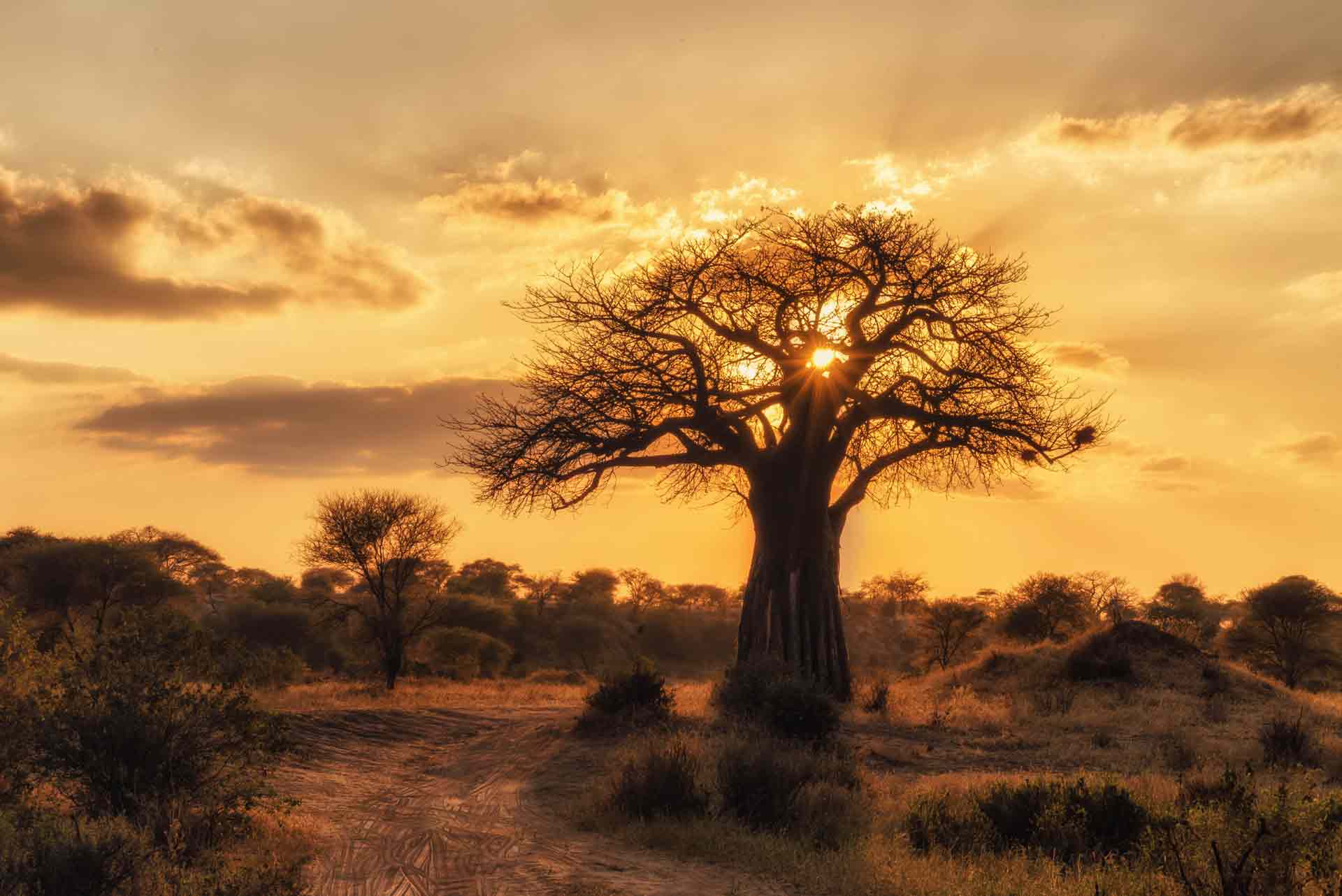
We’ve taken safaris in Africa from Kenya to Tanzania, South Africa and Botswana. We have done the down and dirty three day budget safaris, luxury private game lodges in South Africa and tented camps on the Serengeti. What type trip you choose is up to you, but no matter which way you decide to go, you will love going on safari in Africa!
1. Choose Where You are going on Safari
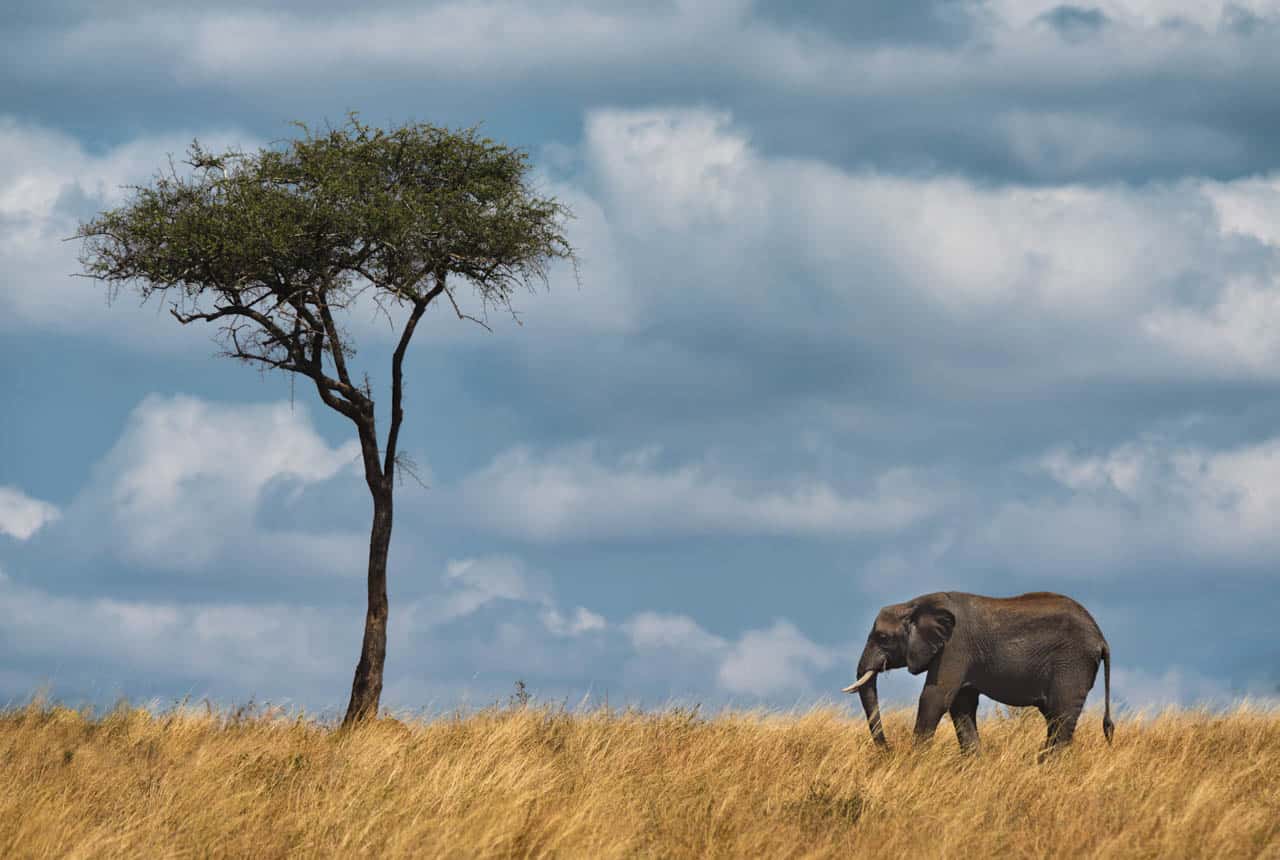
Africa is a huge continent and there are so many places to go on safari. The main places for an African safari are in Kenya, Tanzania, and South Africa. Other amazing places for safaris in Africa are Botswana, Zambia, Uganda and Zimbabwe.
Safari in Tanzania
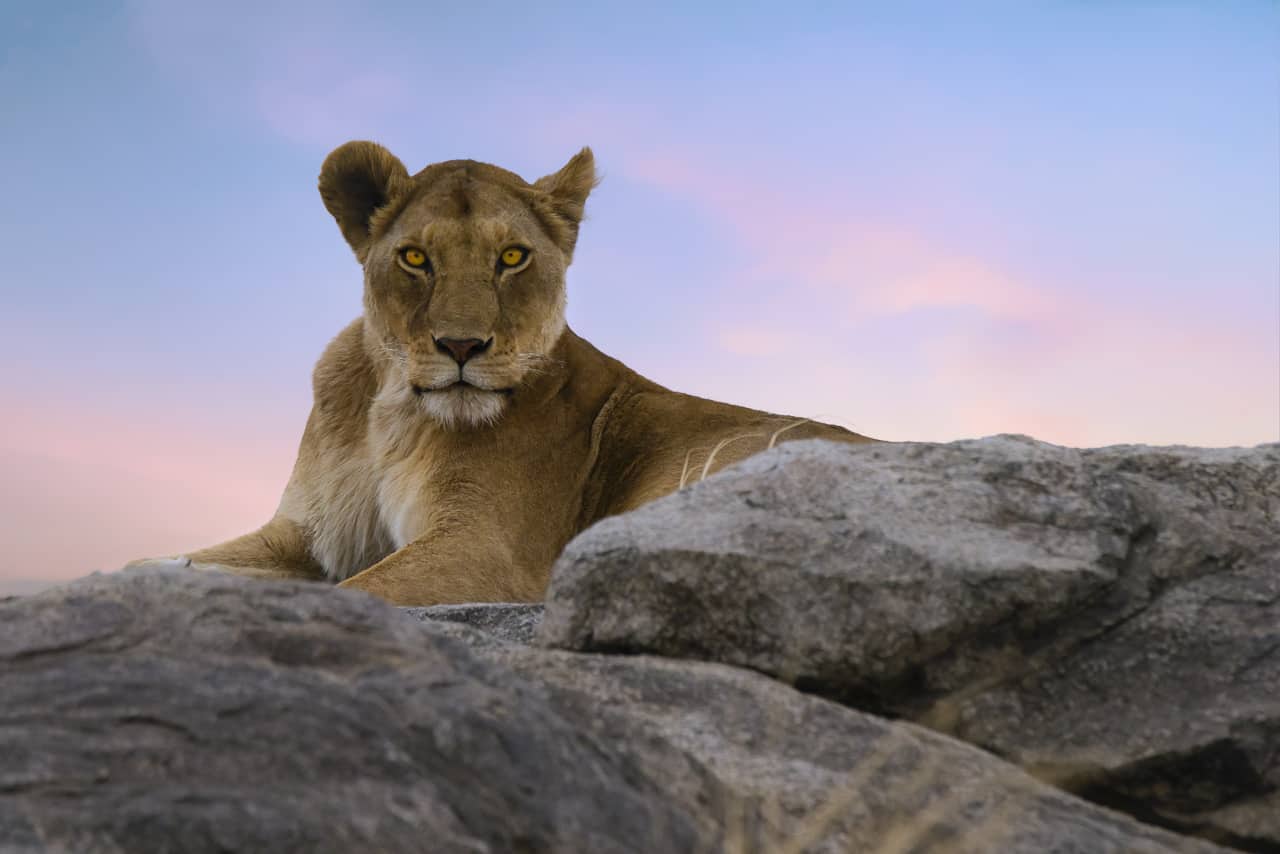
Tanzania is famous for the Serengeti National Park which has all the Big 5 species (Buffalo, Rhino, Elephant, Lion, Leopard) plus all the wow animals like cheetahs, hippos, zebras and wildebeest. But there is also plenty of other safari destinations and national parks. Read African Safari Animals: 34 Photos to make you want to visit Tanzania
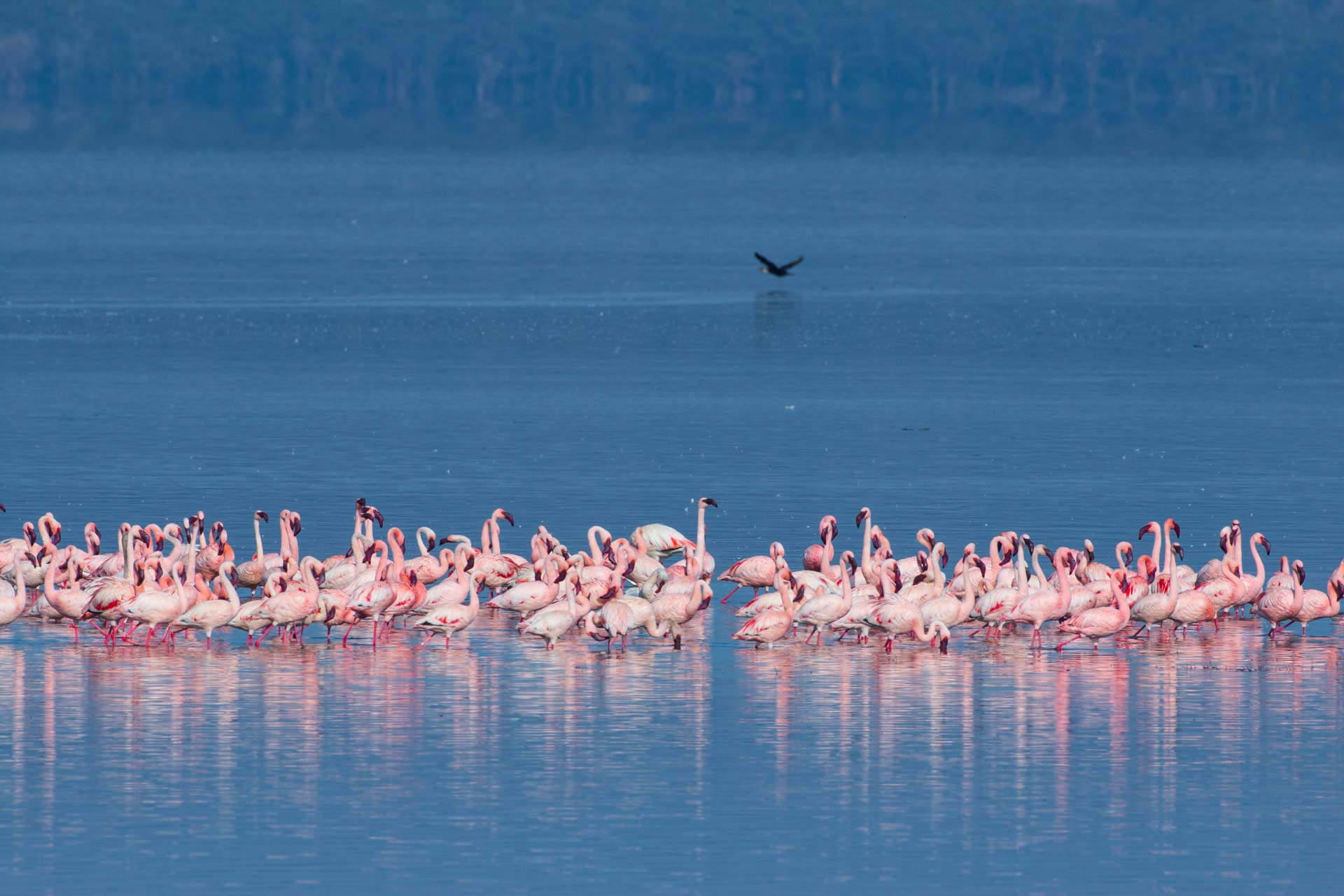
Lake Manyara is famous for thousands of flamingos congregating on the saline lake and you’ll see plenty of giraffes and monkeys. In Tarangire National Park you have another classic safari destination with the usual suspects roaming the plains, and there is the Disney-like fairytale land of Ngorongoro Crater that has rhinos, lions, buffalo and elephants living in harmony within a giant volcanic crater. Gombe Stream National Park is the place to see Jane Goodall’s famous chimpanzees. Read more about 18 Amazing Things to do in Tanzania – Dream Trip
Safari in Kenya
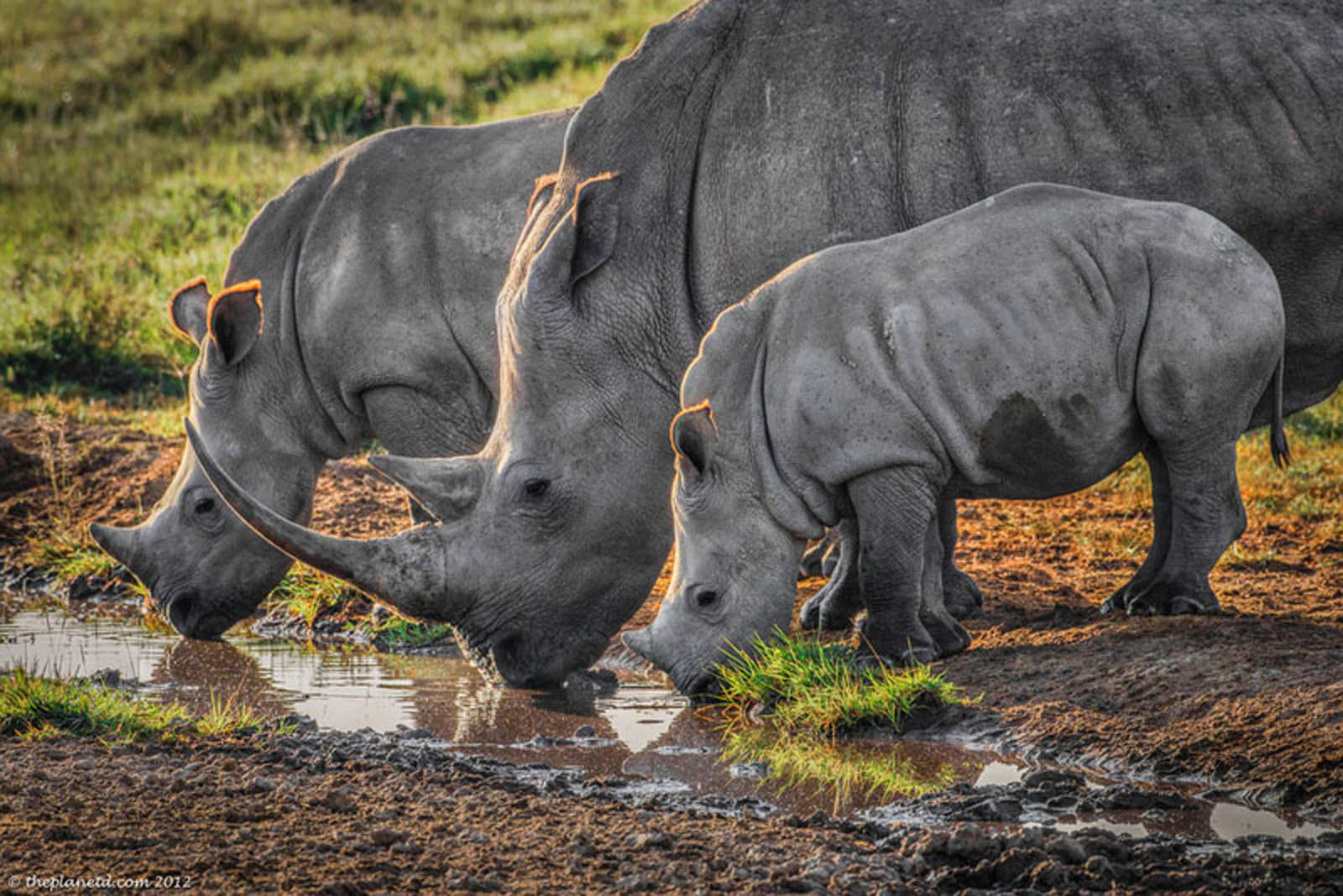
A safari in Kenya is very similar to Tanzania. In fact, the Masai Mara shares its border with Serengeti National Park. Both of these national parks are the definitive African savanna safaris with vast plains, wildebeest migrations and the Big 5. Read more: Kenya Safari – The Masai Mara Experience
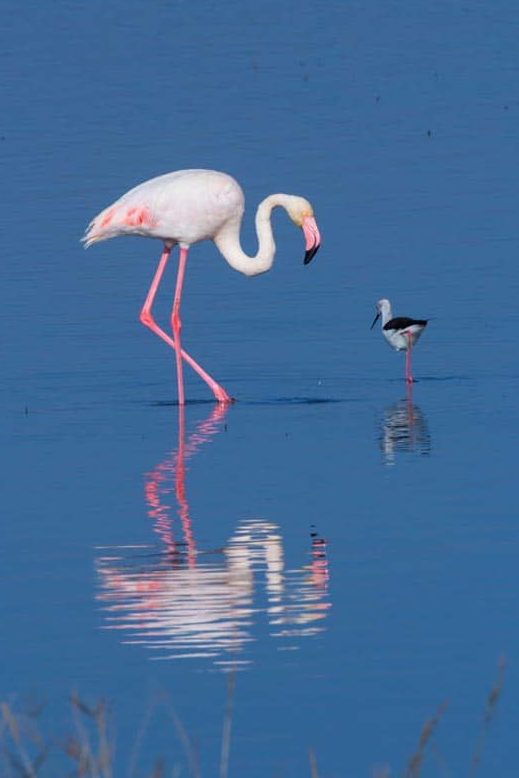
And as in Tanzania, the Masai Mara isn’t the only place to go on safari in Kenya. Lake Nakuru is beautiful and famous for its rhino population. It is also the place to see flamingoes and other bird species. Amboseli National Park sits at the foot of Mount Kilimanjaro and has an enormous elephant population. Read More: Incredible Kenya Pictures an Amazing Visual Journey
Safari in South Africa
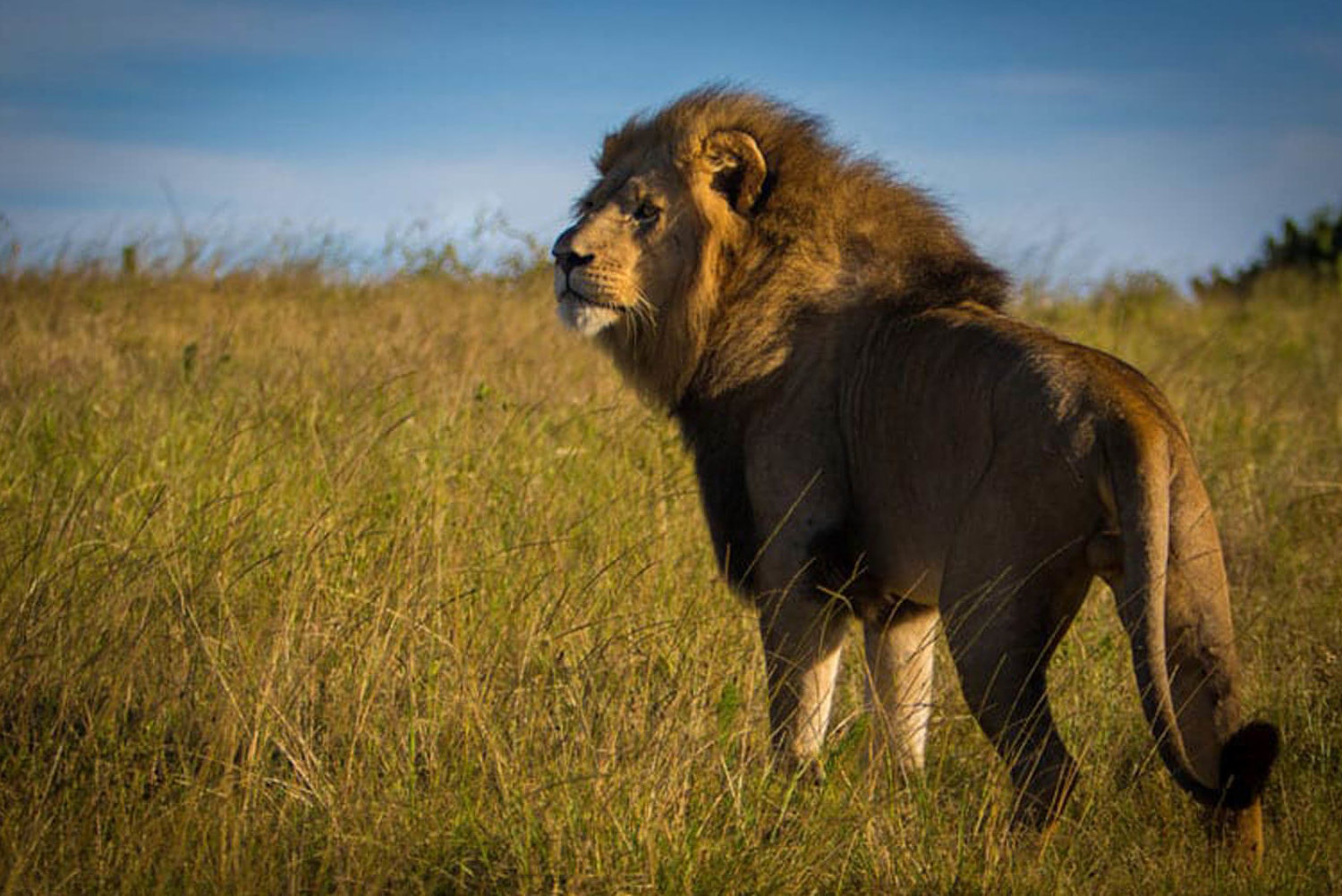
A Safari in South Africa is very different from the other safaris in Africa. South Africa is filled with private game reserves. There are many different ranches covering thousands of acres of land where you are almost guaranteed to see the Big 5. Luxury camps built on private ground make for a luxurious experience. With rangers to take you out on daily game drives. Read more: Spectacular South Africa Wildlife Photos
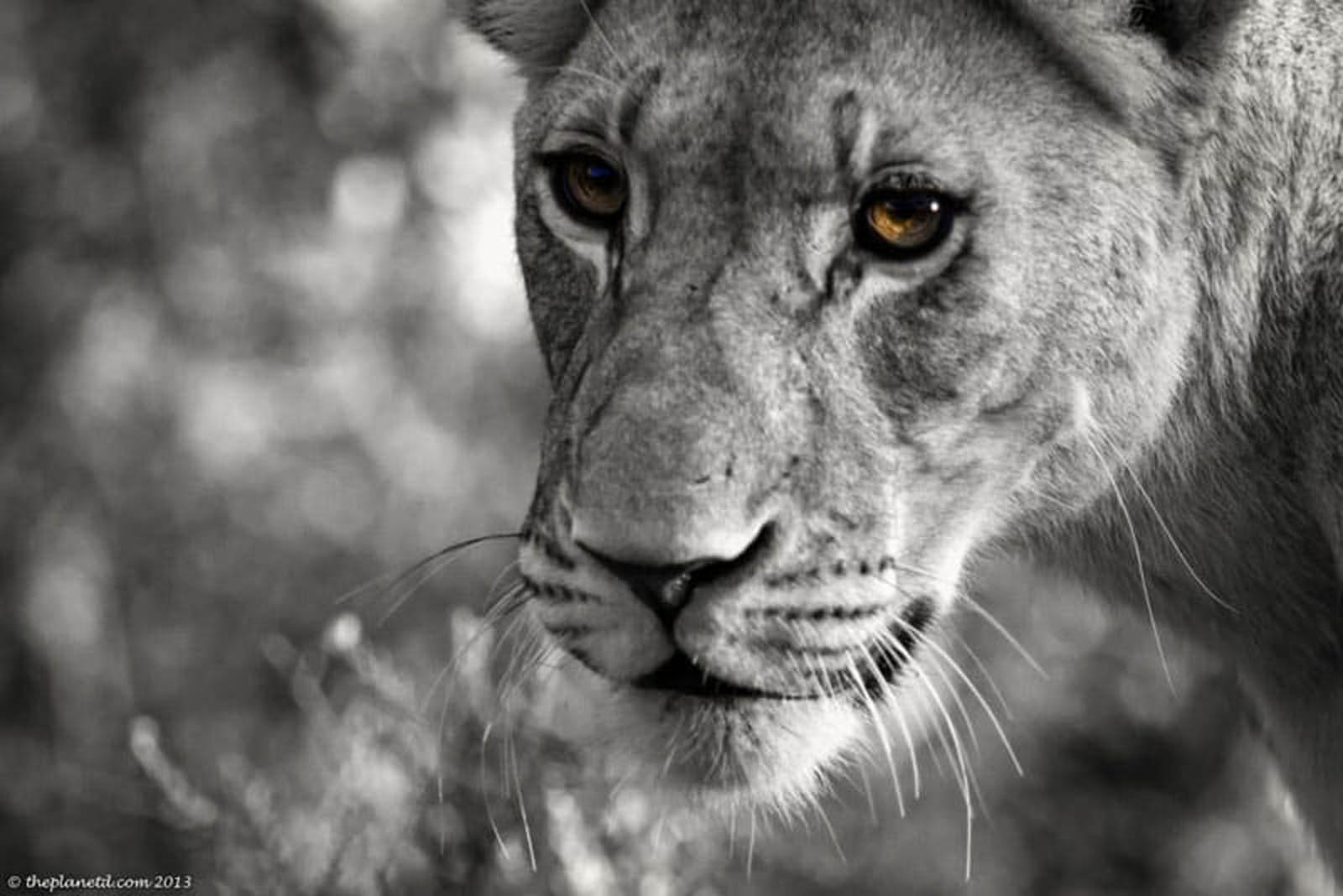
South Africa also has national parks to view wildlife. Kruger National Park is the most popular place to go on safari in South Africa. You can do a self drive through this park in search of African wildlife for a very unique experience. Read more: Best Things to do in South Africa
Self drive safaris offer more freedom, but it can be more difficult to spot the wildlife in the first place. That said, you can go at your own pace, and you don’t have to compete with other people for views.
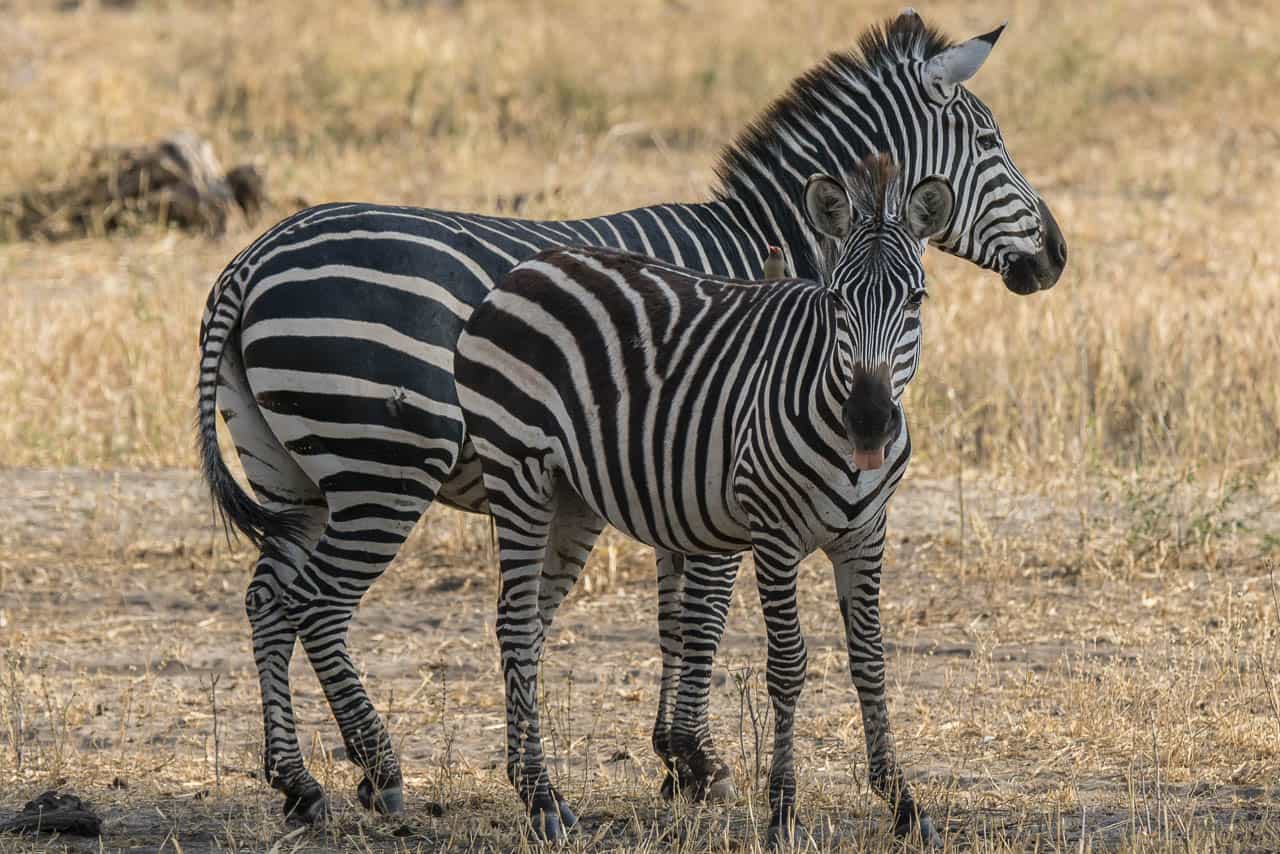
Hluhluwe & Imfolozi National Park is a wonderful safari destination covering coast and wetlands. Here you’ll see wildebeest, zebras elephants and hippos. But it is most famous for its rhino population.
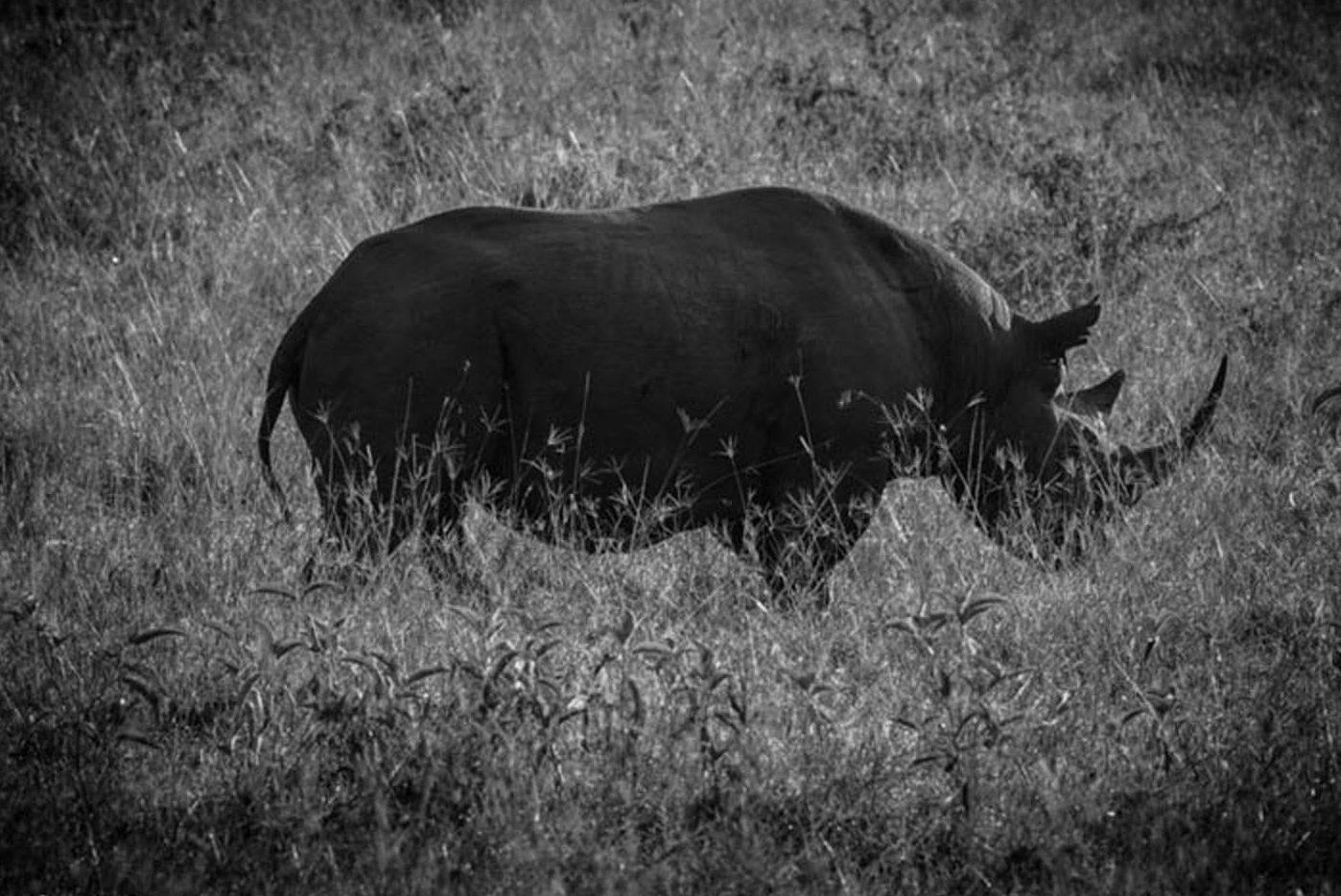
We took a safari on horseback here making for one of the most unique African safaris we’ve ever done! As we sat on horseback, zebras ran circles around us with wildebeest following suit. Read more: iSimangaliso Wetlands – Horse Safari
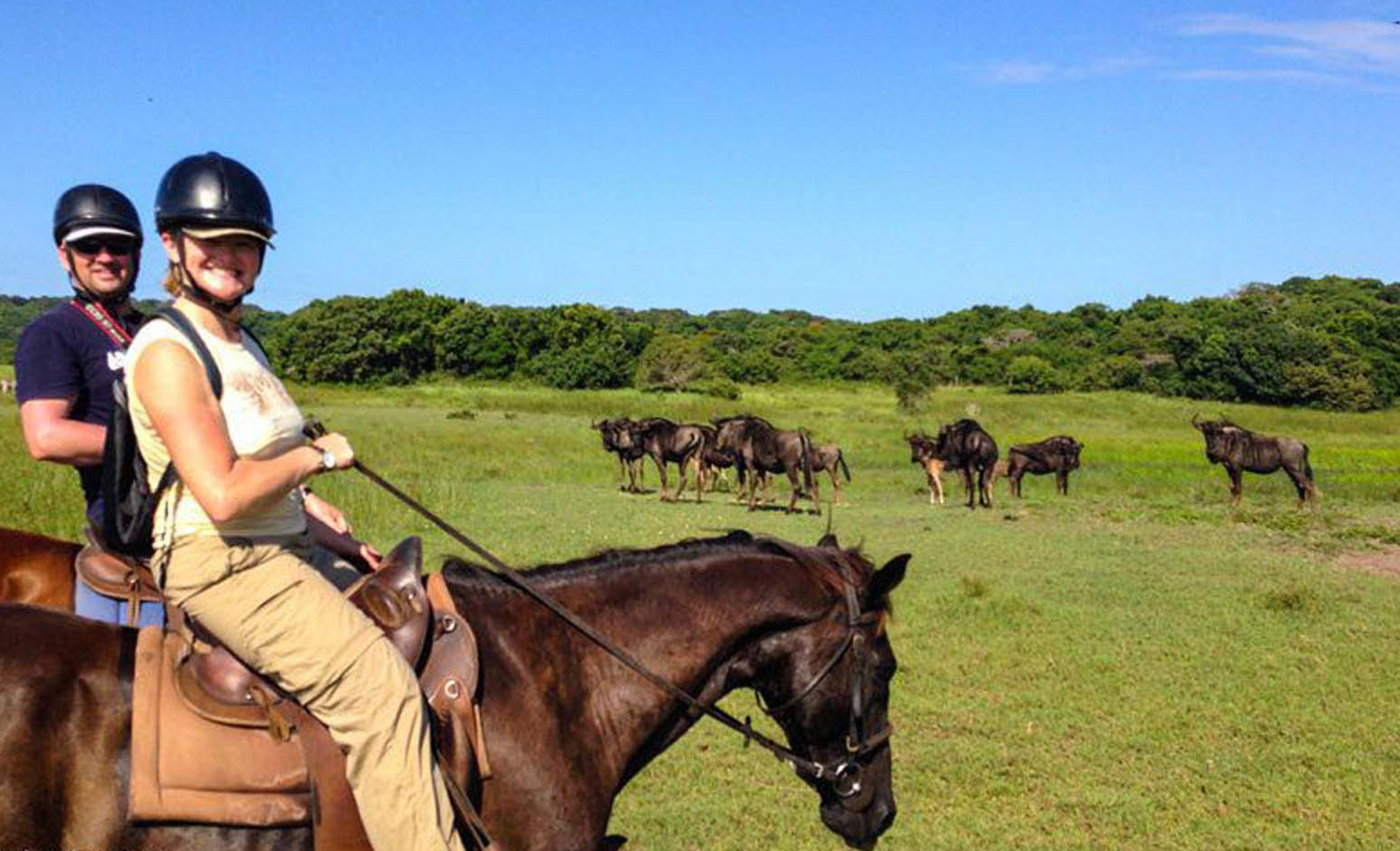
The iSimangaliso Wetlands in South Africa is fantastic for hippo and crocodile spotting and Addo Elephant Park is – you guessed it famous for elephants! Pilanesberg National Park is another national park to see rhinos and other famous African wildlife. Read more: 28 Reasons Why South Africa Should Be on Your Bucket List
Other places to go on Safari in Africa
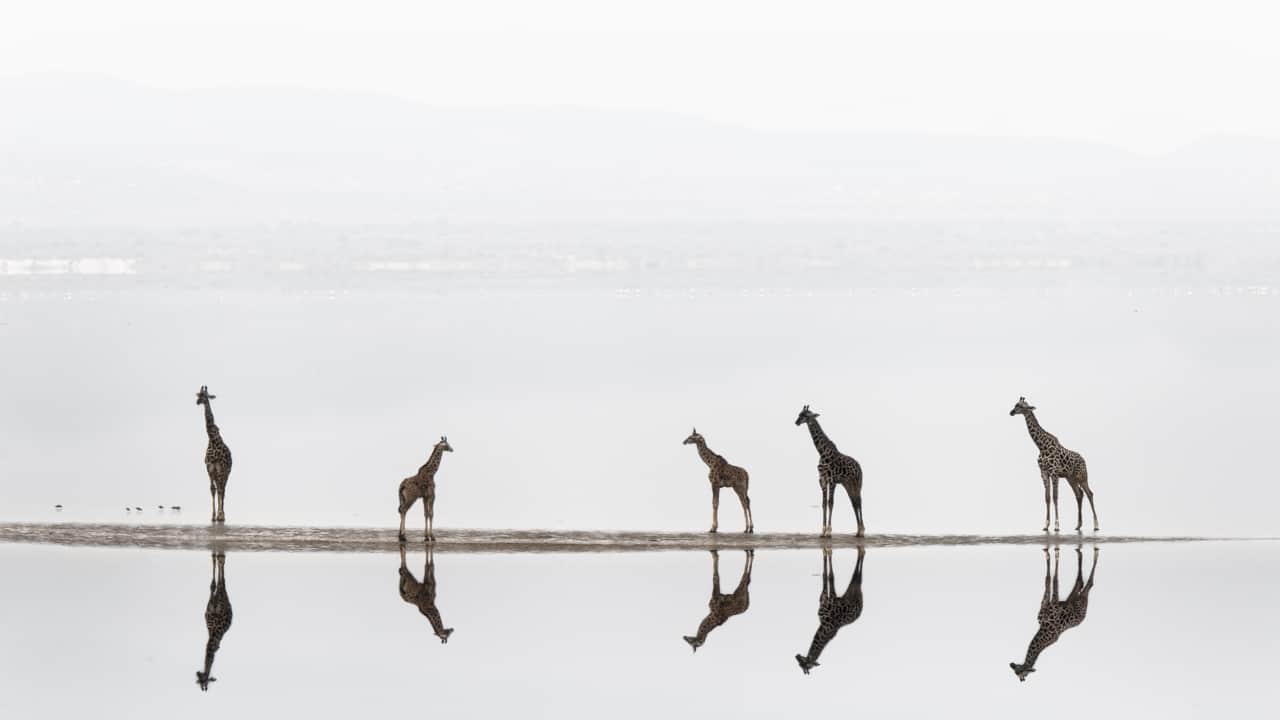
Africa has an abundance of wildlife throughout the continent and there are many countries that have wildlife experiences.
- Rwanda, Uganda and the DRC are popular choices to see gorillas and chimpanzees, but you can also see the typical Africa species of animals here too.
- Botswana is known for its river safaris in Chobe National Park and the Okavango Delta. These areas are teeming with wildlife. The Okavango Delta is a good place to spot cheetahs.
- Zambia offers incredible safaris along the Zambezi River and Zimbabwe has good wildlife viewing at Mana Pools National Park. Many safaris here cross the borders to Botswana.
- Check out: 27 Best Places to Visit in Africa
Once you have decided on your destination, it is exciting to start planning.
2. Choose Your Budget
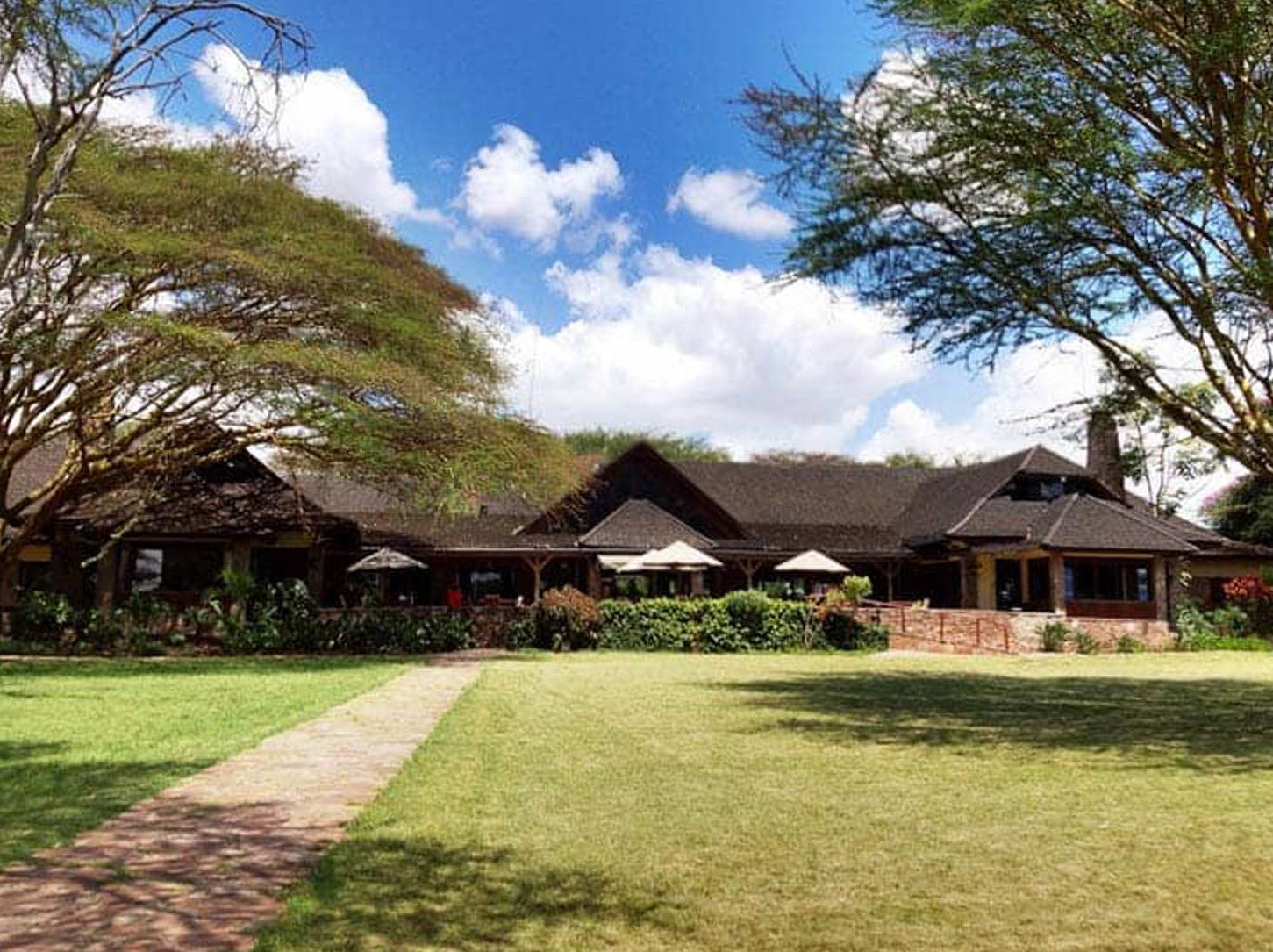
When choosing a safari in Africa you will need to determine your budget. There are several different budgets for an African Safari.
- Budget Safaris start at about $1500 and offer basic accommodation. Usually these safaris are for students and the younger crowds.
- Mid-Range safaris can range from $3000 – $6000 and cover many different safaris and national parks, plus have a variety of accommodations and offer game drives.
- Luxury safaris start at $10,000 and have luxury tented camps and accommodations, private or very small group game drives and cater to your every need.
We have experienced safaris with all three budgets and each was wonderful in their own right. It all depends on where you are in your life, what you are in the mood for and what your travel style is.
3. How to Choose a Safari Company
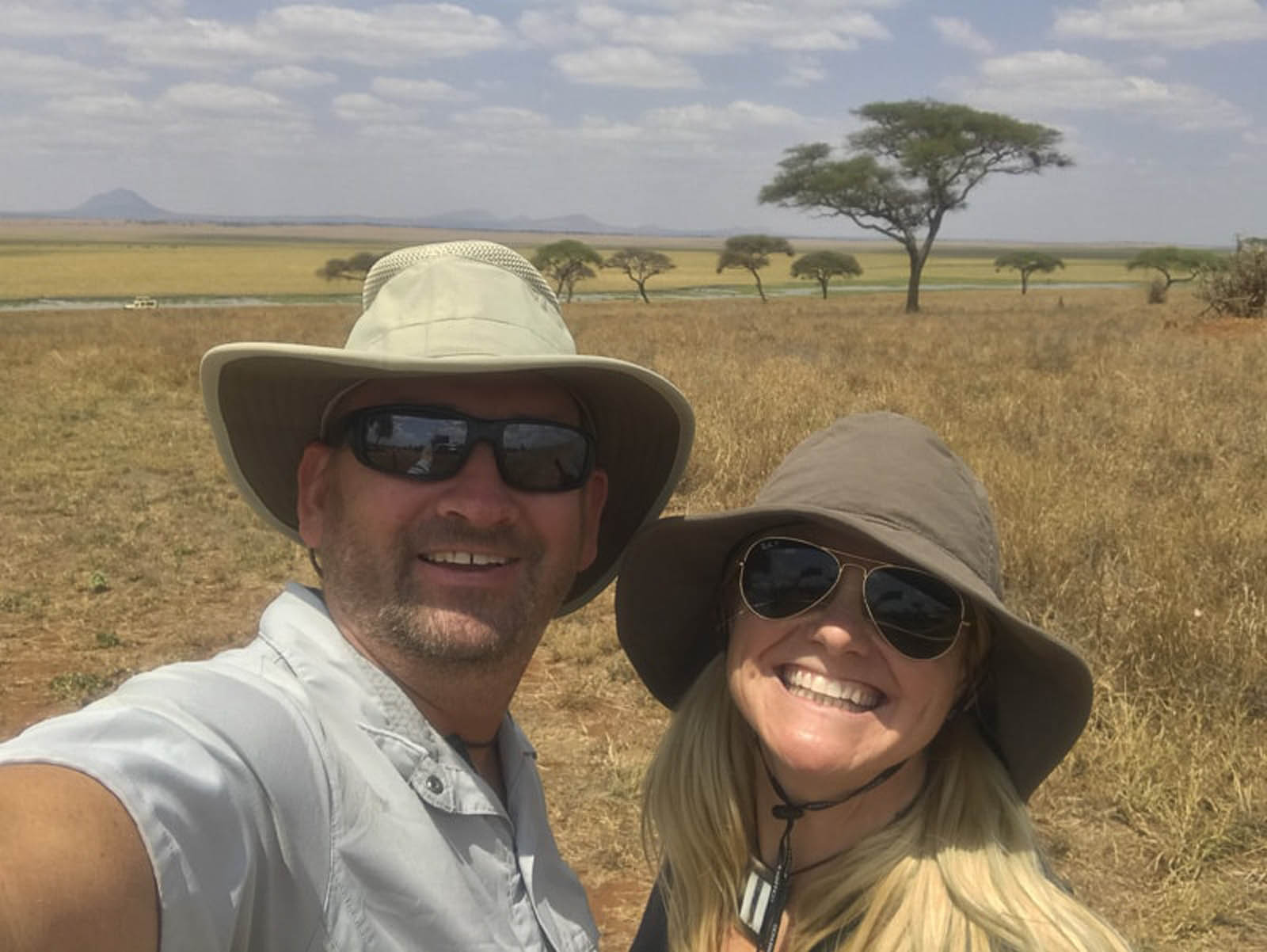
There are so many companies to choose from that run safaris in Africa. We can recommend a few, but it is important to do your own research. Do they cater to your age and demographic, are they in your budget, and do they follow responsible tourism practices? We have used local guides and well known companies to go on safari in Africa and they have all been fantastic. Just make sure to ask a lot of questions and do your research.
When choosing a safari company, it can be as easy as doing a simple Google search. The regular suspects like GoAhead Tours , Intrepid Travel, Go2Africa and National Geographic will all pop up, but if you want to look around, that is a good thing. We had an amazing private safari with Wilderness Zones Safaris in Kenya owned and operated by local guide James Makau. You should never settle on the first thing you see and should do your research to compare prices and experiences.
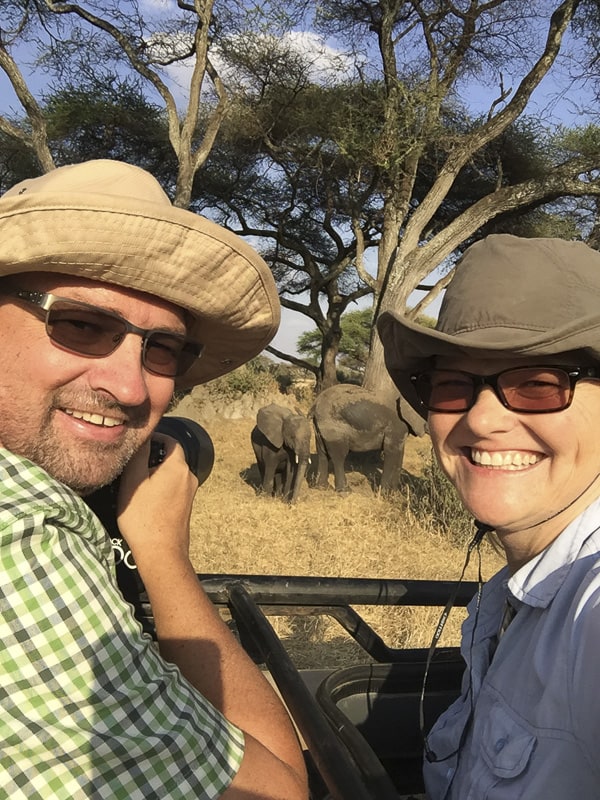
When searching for a company check the reviews, the age of the company is always a good thing to look for, check to see if they are a part of an organization and ask for some recommendations. It is easy to ask questions on social media or to check out travel blogs and places like TripAdvisor.
Our Safari in Tanzania with Go Ahead Tours was one of the best safaris we ever experienced. We had like-minded travelers in our party in a similar age bracket to ours.
4. What is Your Travel Style?
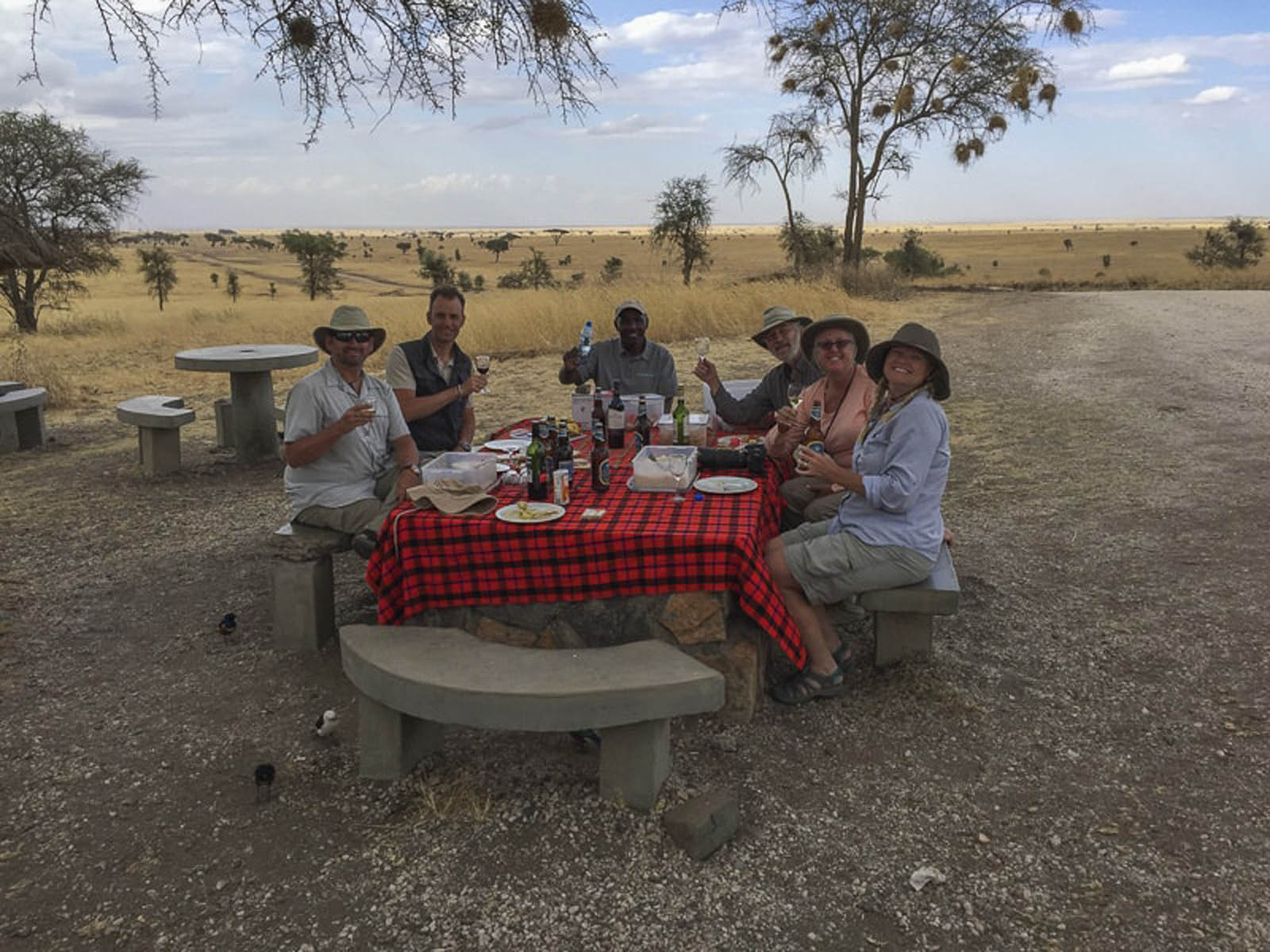
Think about what type of travels you enjoy? Do you want luxury trips that will fly you between parks? Or do you love being in nature experiencing overland travel in tents and lodges? Do you only want to see wildlife, or are you looking for other things to do? Check out: Incredible Kenya Pictures an Amazing Visual Journey
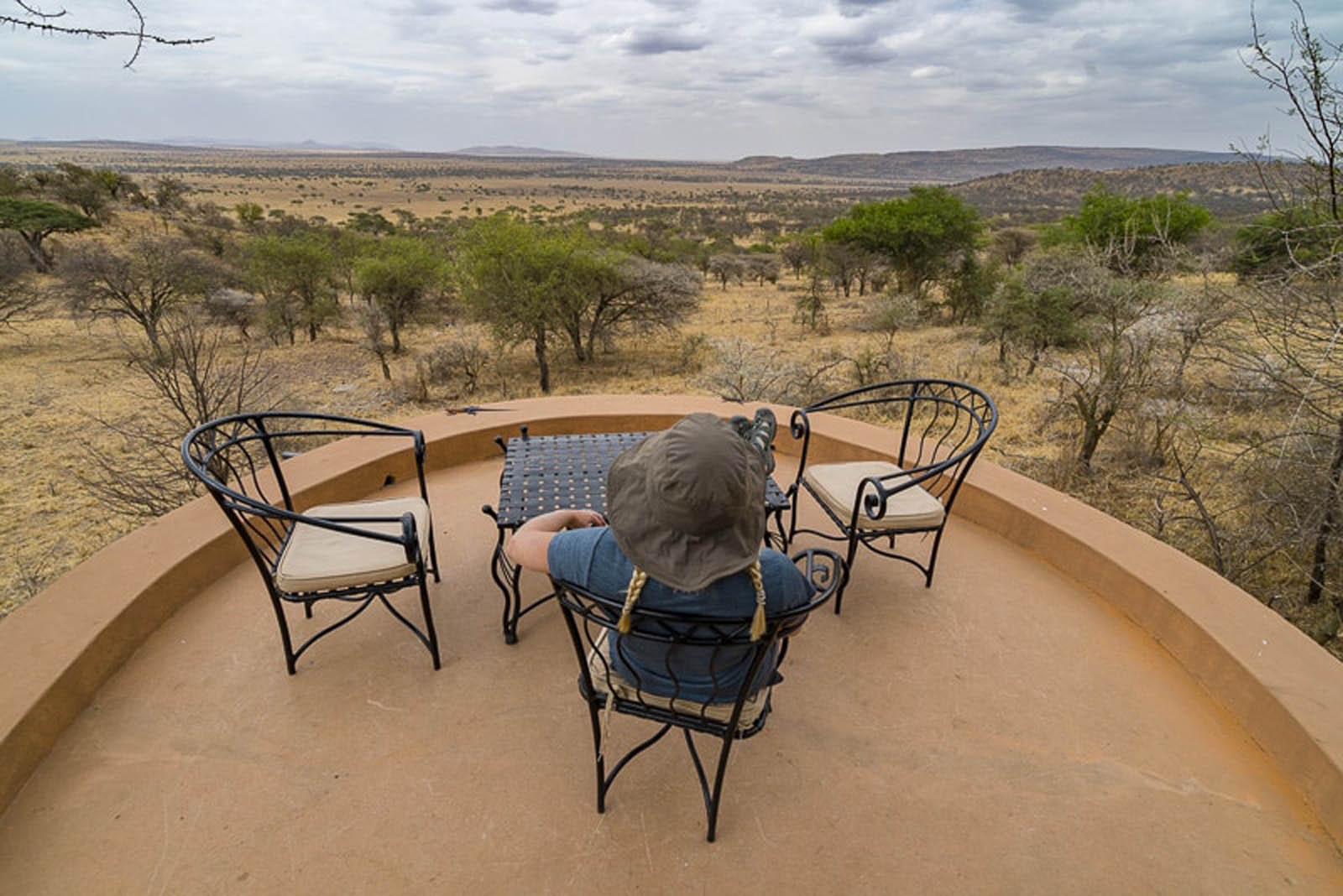
If you only want wildlife viewing, it is easy to book a local tour company to take you out on game drives. We have simply walked down the street looking for a wildlife game drive and booked strictly by going with our gut and feeling about the company.
Experiences
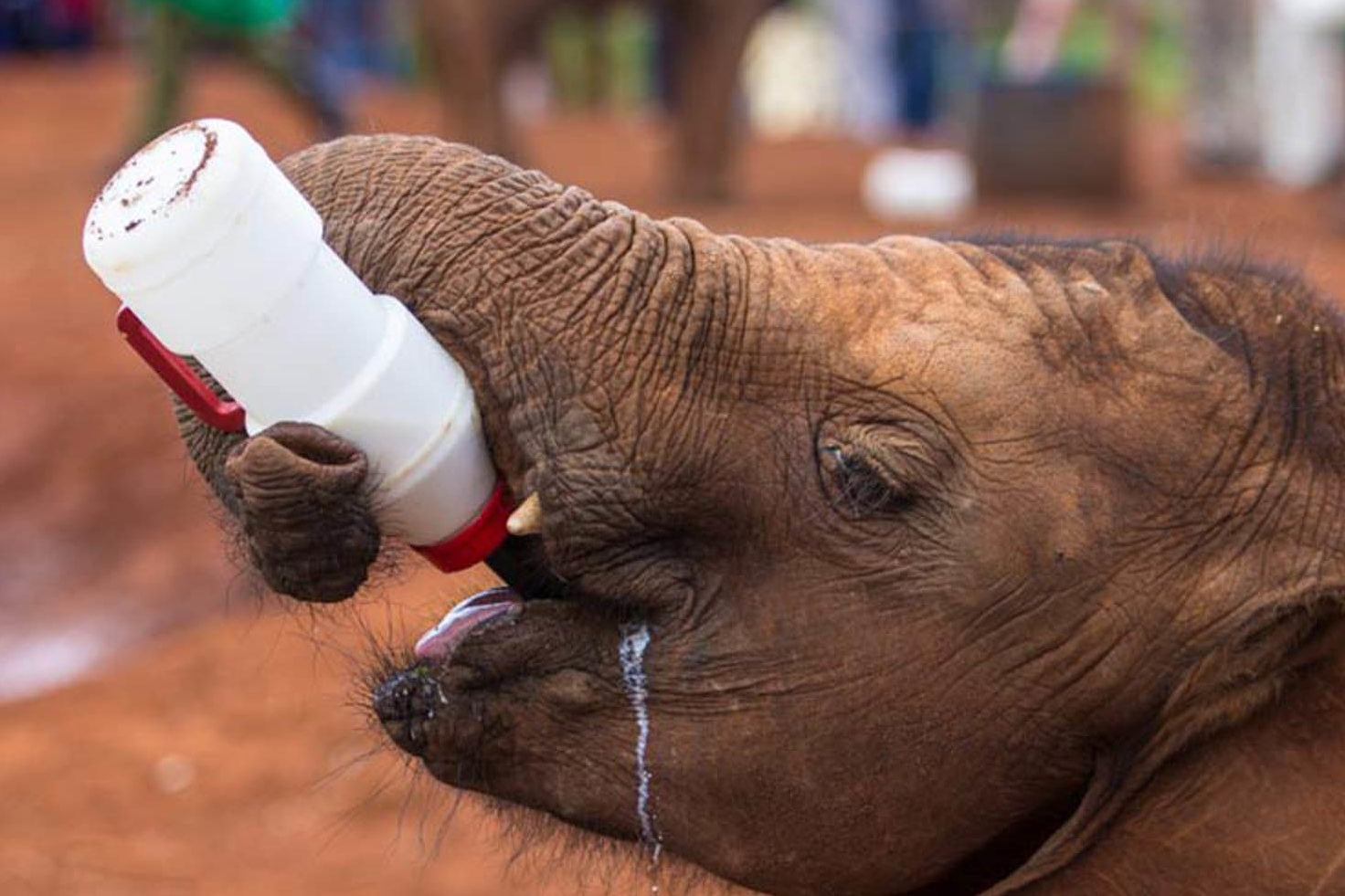
Whenever we have gone on an organized safari tour in Africa, they have offered a mix of game drives mixed with cultural experiences. Most African safaris will include visits to villages, historic sites and other interesting stops on the tour. In Kenya we went to the elephant rehabilitation center and the Born Free Foundation. Both were spectacular experiences. Read more: Born Free Lives on in Kenya
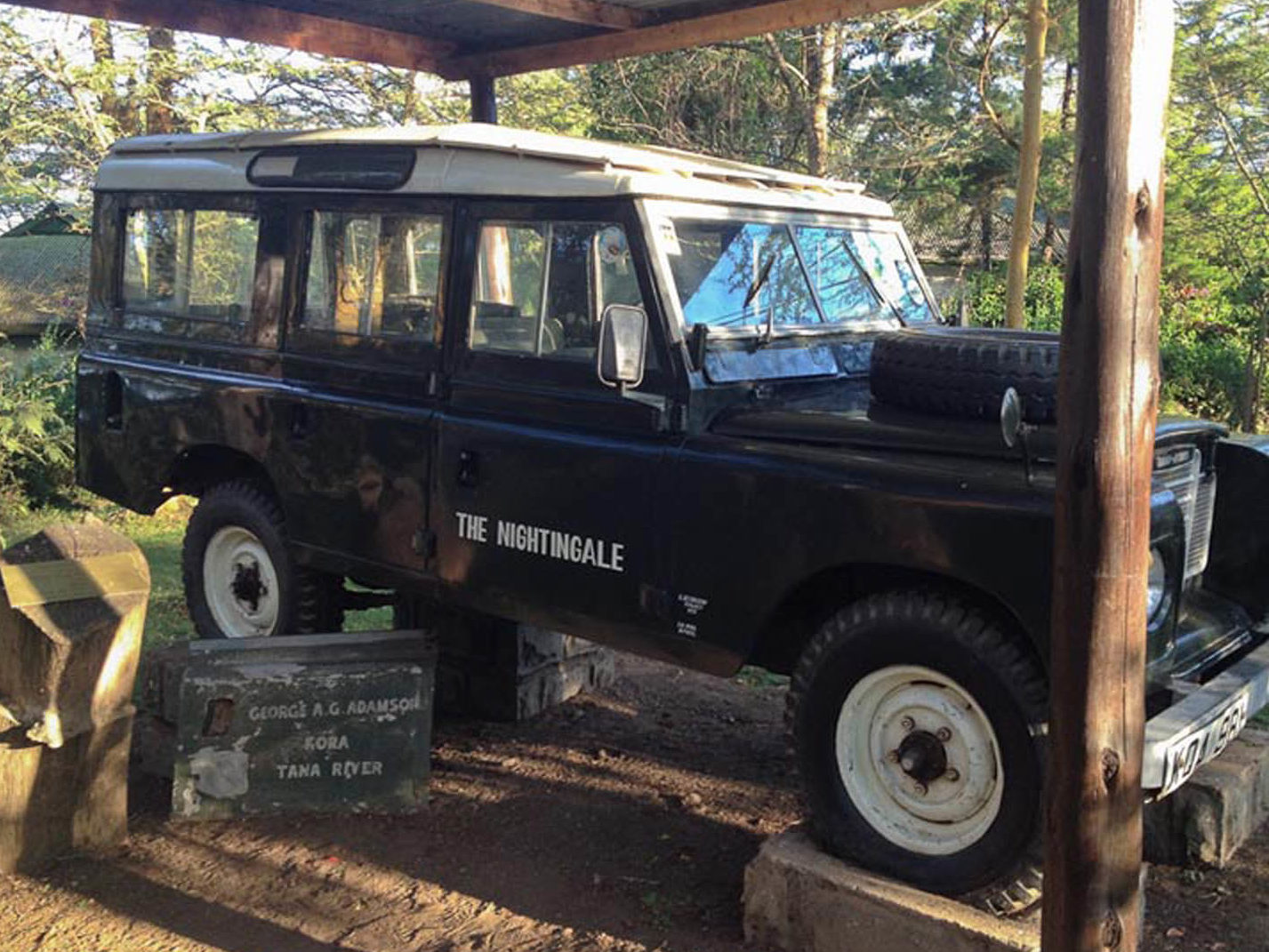
Also, consider the maximum size of the group that they offer. We have been on private safaris and this is by far the best. If you can have the safari vehicle to yourself you are free to do whatever you please. But we have also done small group tours with 4 -6 people in a truck. These work great as well and it is fun to have the camaraderie of making new friends.
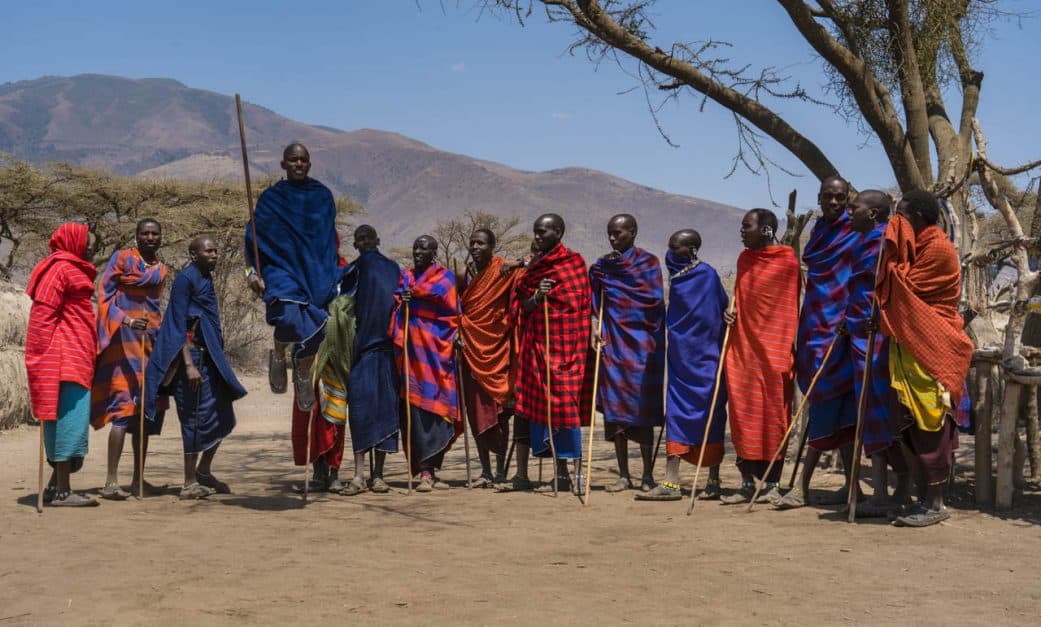
You don’t want to be in a huge group. They may be cheaper tours, but you won’t get the best experience as you’ll be jockeying for position to see the wildlife. Sitting in a hot and crowded truck looking over people’s heads can be an awful experience. Read more: The Maasai Tribe: What a Visit is Really Like
Accommodations on Safari in Africa
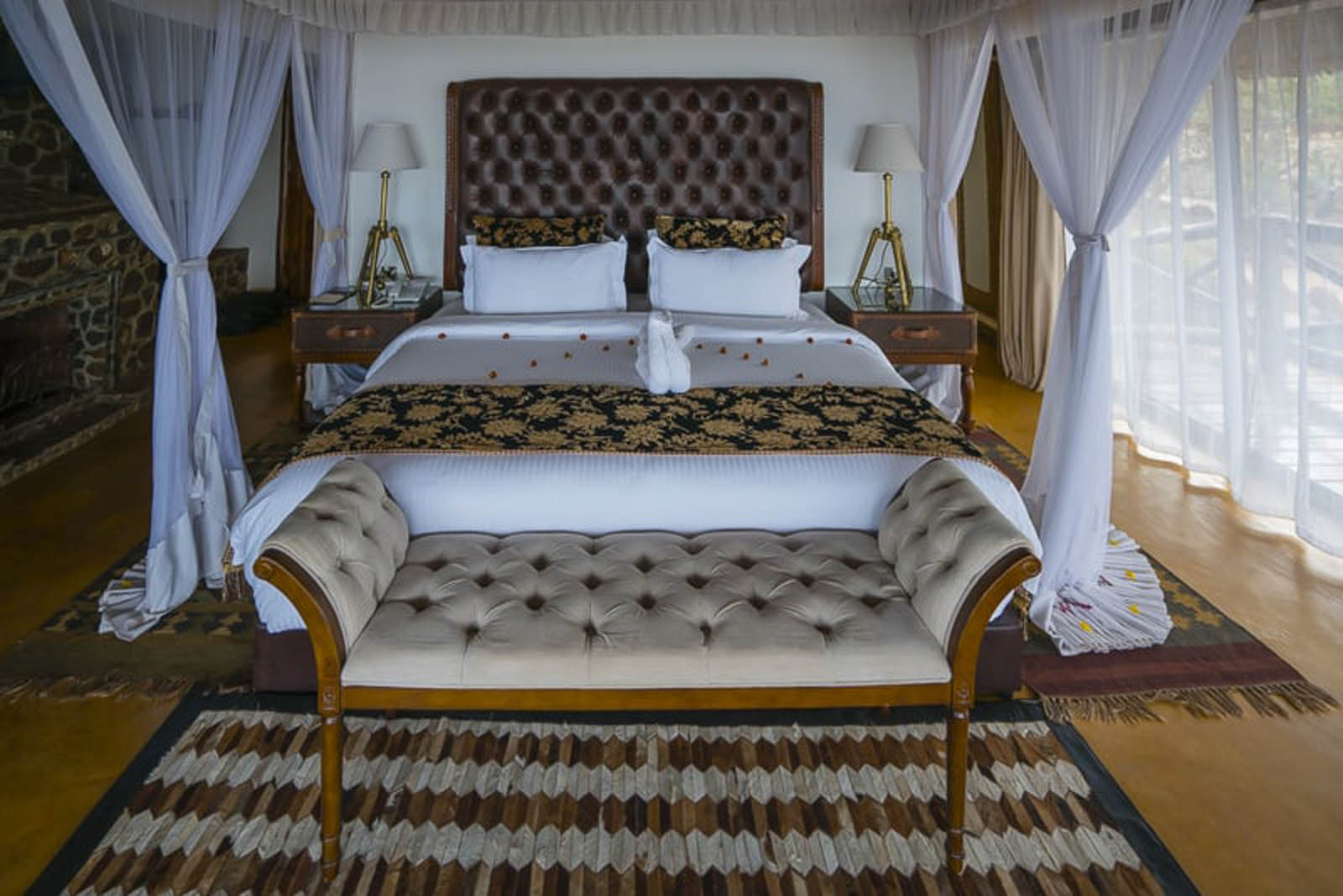
Safari companies offer several different options of accommodations on safari from tented camps to hotels complete with buffet meals and swimming pools to complete luxury resorts.
If you are on a budget, you may be staying in basic tents. Mid range safaris usually stay in lodges and hotels. Luxury safaris are usually in tented camps that feel fit for a maharaja.
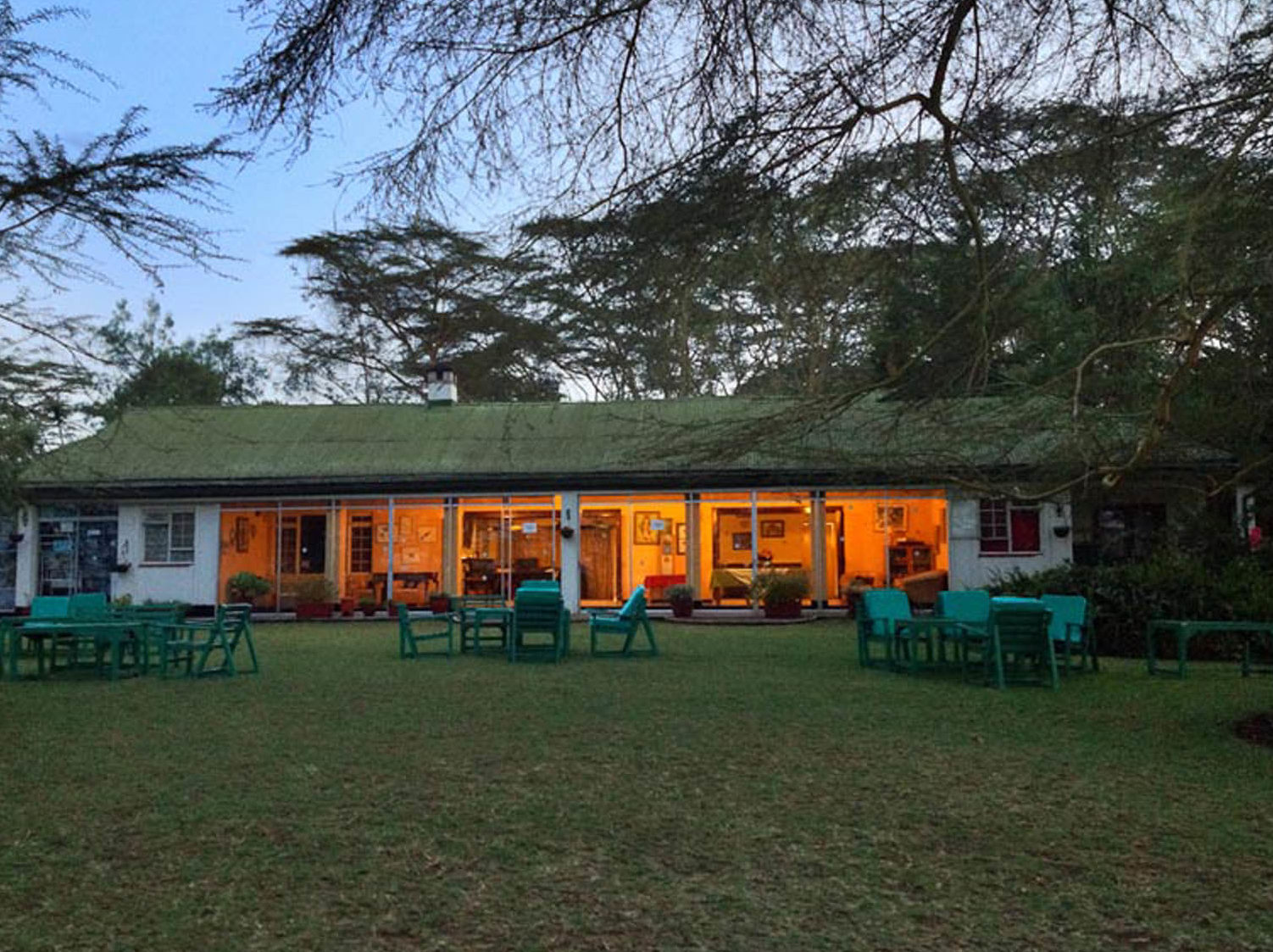
Our last safari with GoAhead Tours was more of a mid-range safari costing $6100 USD per person and it had a mix of luxury tented camps and mid-range safari lodges to luxury hotels. It gave the guests the chance to experience all different types of accommodations. This was ideal for us as a couple in our 40s.
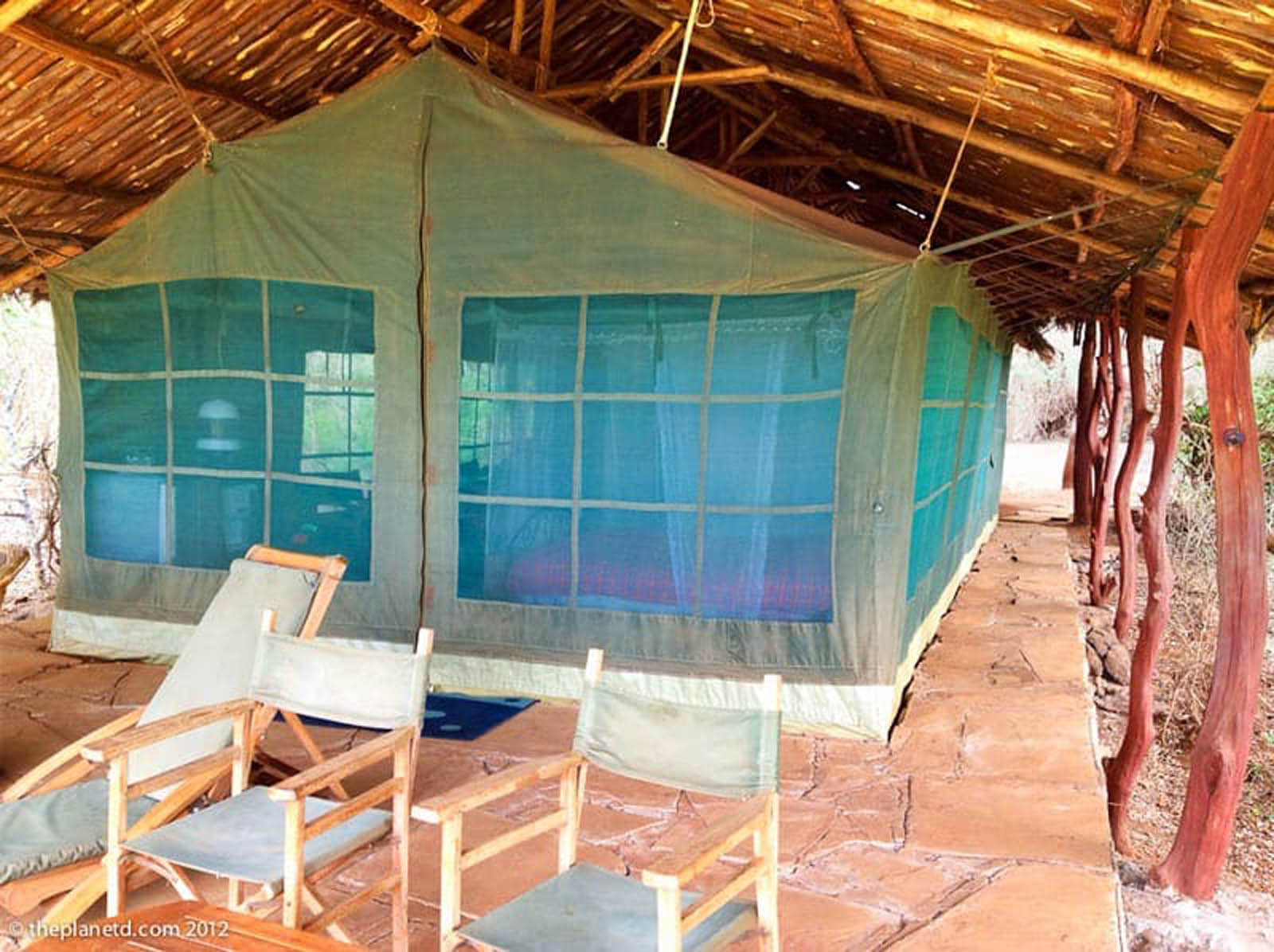
But when we were younger our basic safari in a tent was totally fine. And another safari in mid-range hotels suited us well too.
What to Expect on And African Safari
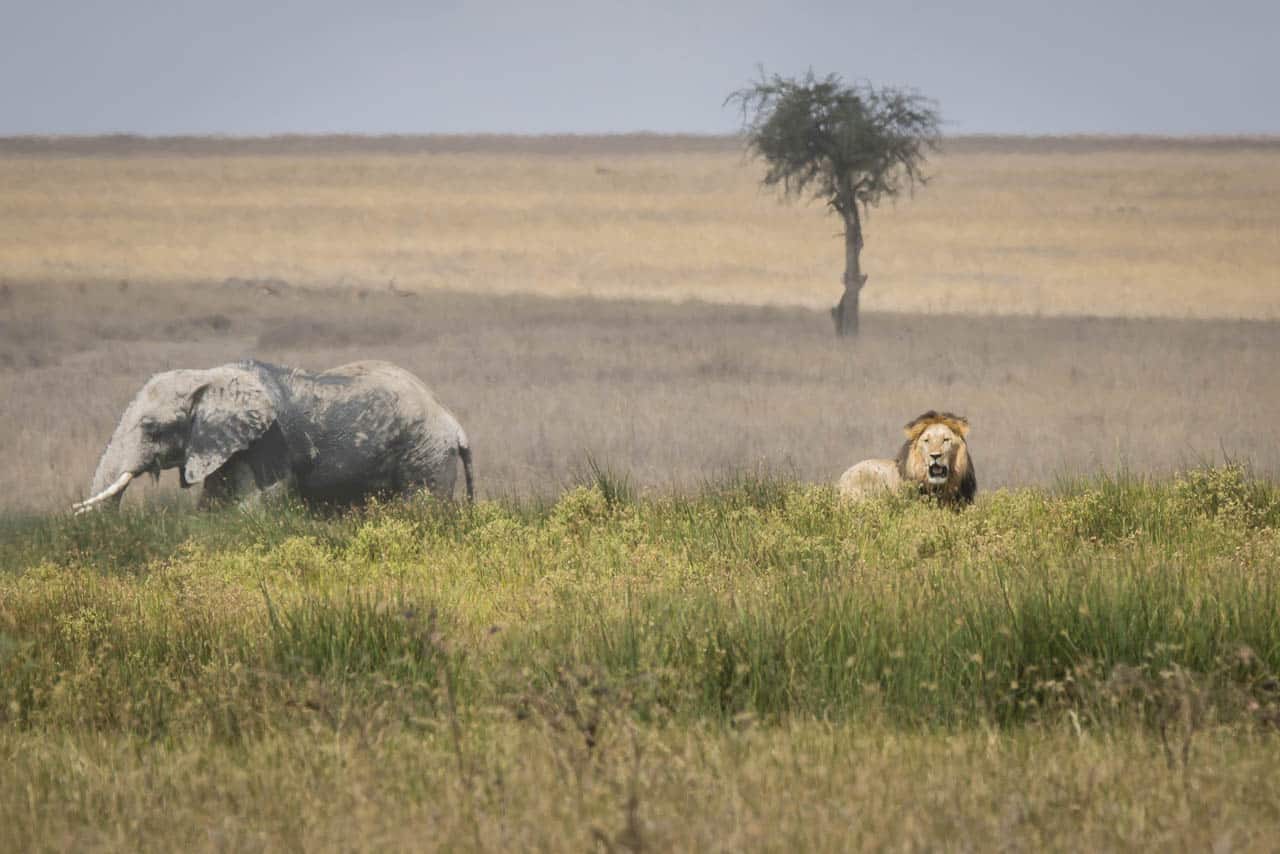
When you arrive in your location, you will be picked up at the airport and taken to your hotel where you’ll either stay overnight or go right into orientation. Orientation will go through your tour, and what to expect. You’ll meet your fellow travelers and then you’ll be separated into groups. Usually you will be with the same people on a truck for the duration of the trip. You’ll have the same guide and driver and you’ll really get to know each other well.
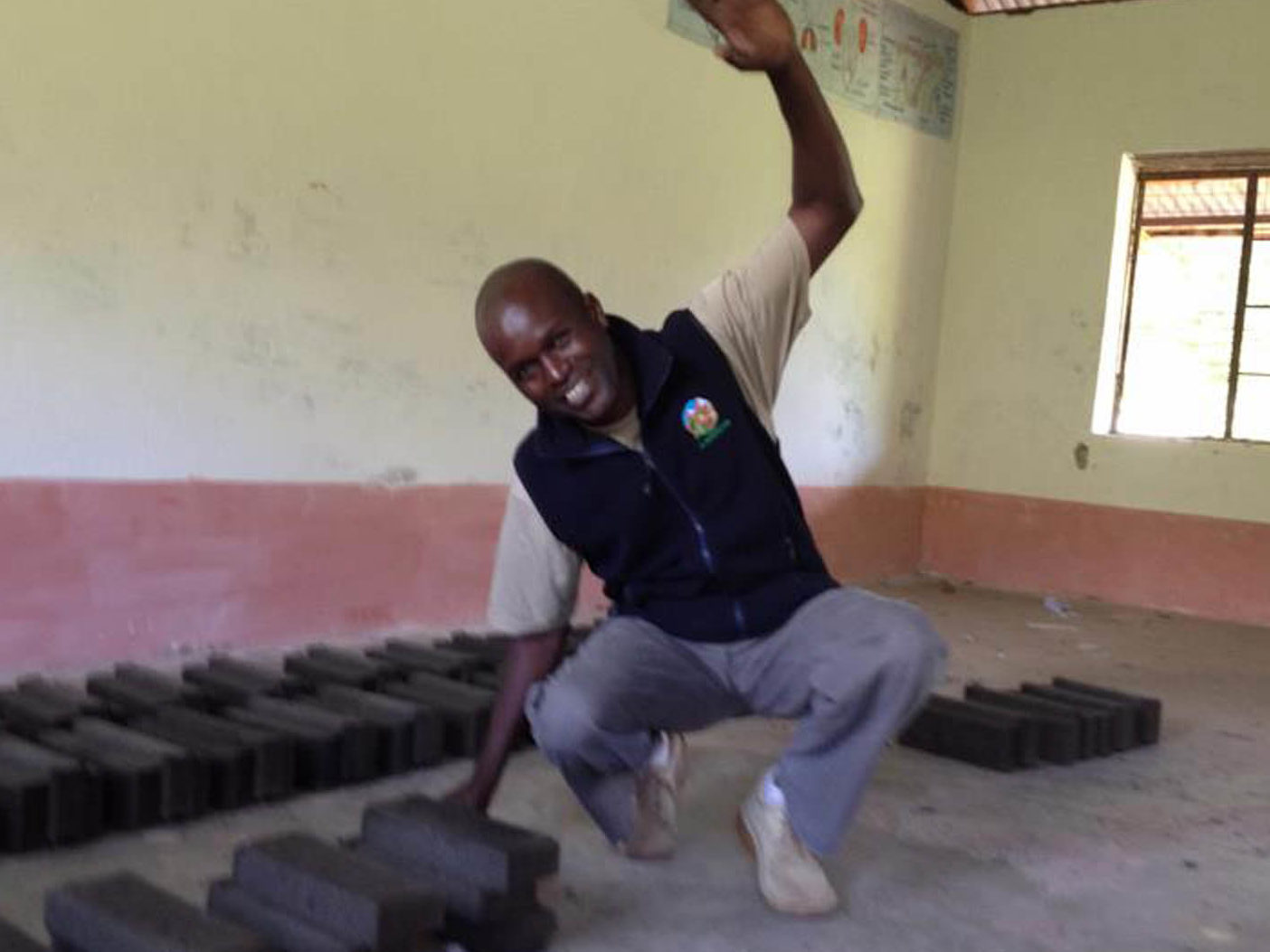
“Guides change lives. They may not remember us once the trip is over but we will always remember their names and the special moments they helped us achieve on the African savanna.” Kenya Village Visit – Empowering People One Brick at a Time
Safari Vehicles
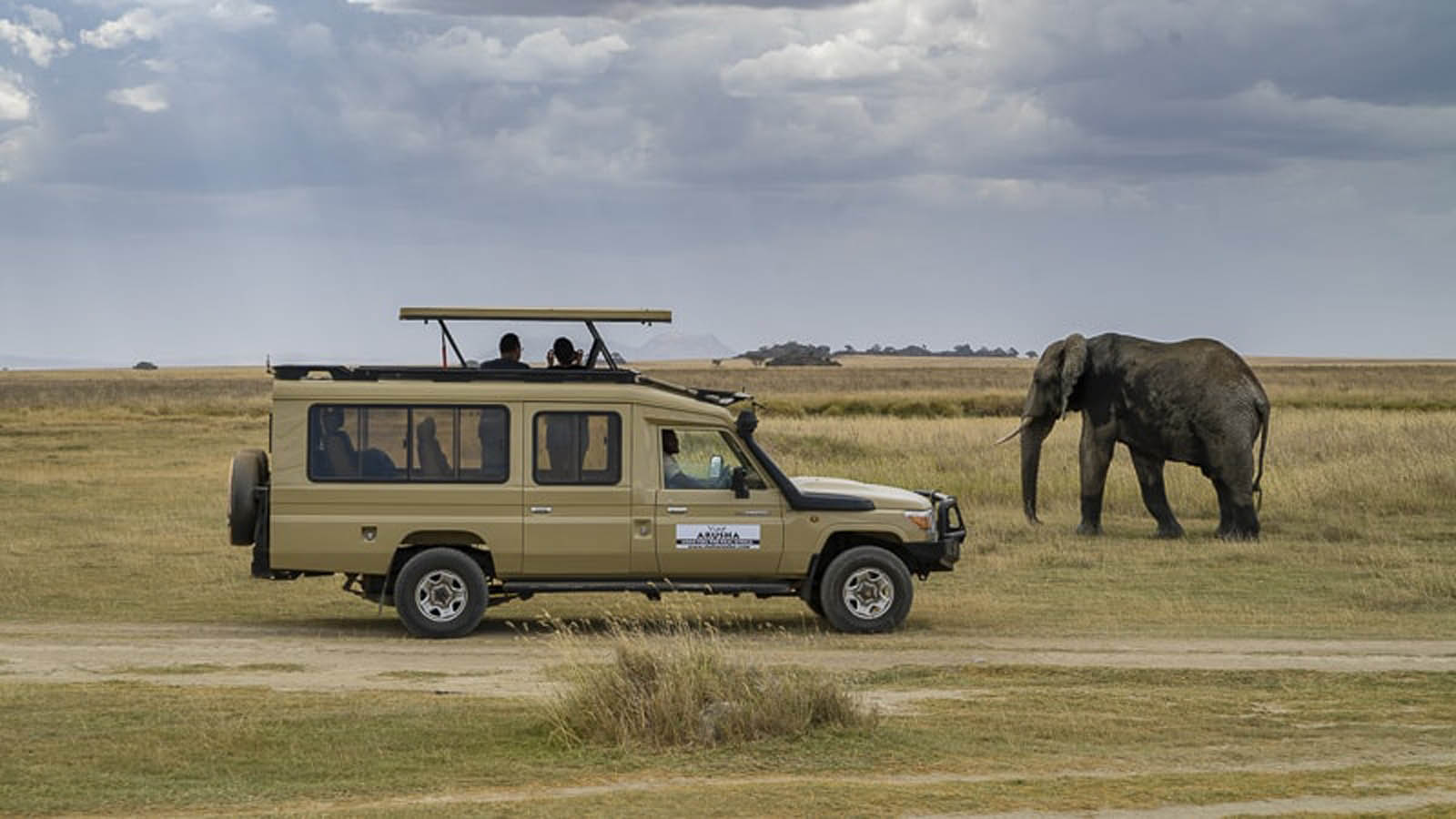
Africa has safaris down to a science and safari vehicles are made for optimal viewing. We’ve been on open air jeeps and in vans that have roofs that open and close. We had a large jeep with a pop up roof that was perfect. It is great to keep the sun out while letting you look out at the wildlife unobstructed.
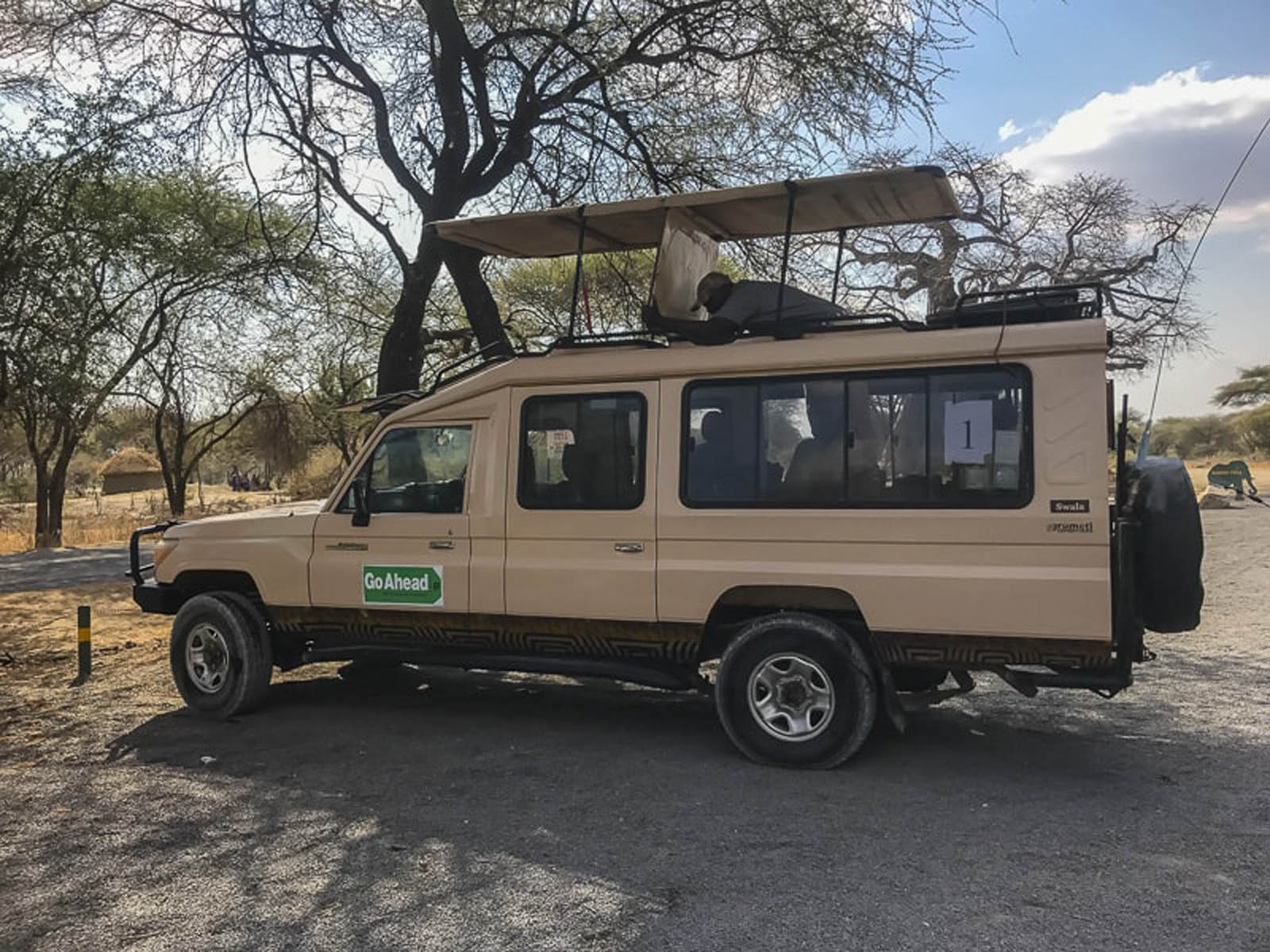
Safaris are long and hard days. You are up at sunrise and out until sunset so be prepared for long days viewing wildlife. But you don’t want to miss a thing because this is a once in a lifetime experience. There are opportunities galore for unique wildlife viewing and you will see different wildlife at different times of the day.
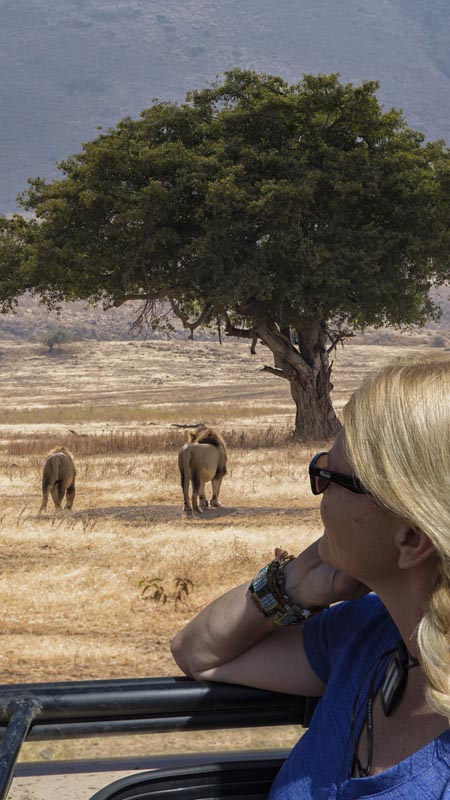
You may be tempted to stay at the lodge to enjoy a nap, but that one time you stay back may be the only time your group spots a leopard, or black rhino. You will want to go out each and every time.
When you are out on a game drive, be considerate of the people around you. Don’t hog the best spot and don’t stand in front of other people. When we are on the best viewing side, we duck down so others can see over our heads. (and visa-versa)
Communicate with Your Driver
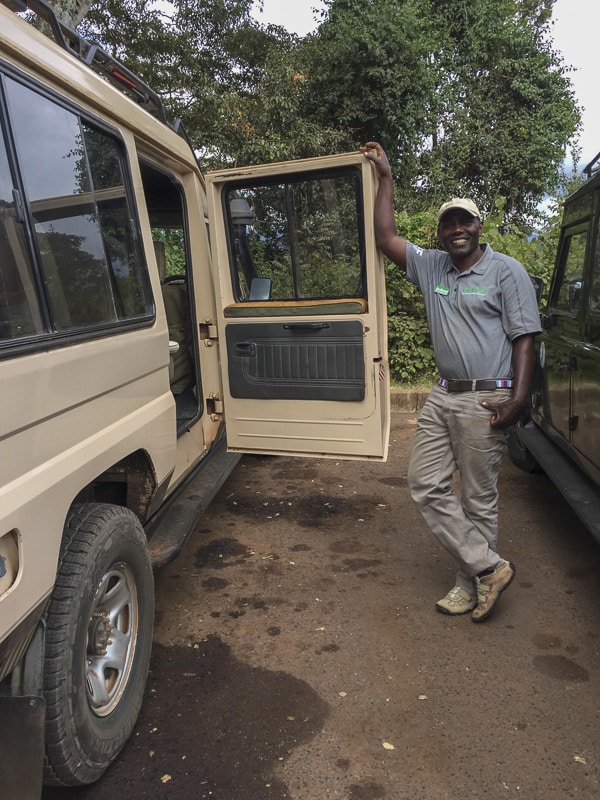
When on safari, take advantage of your driver’s expertise. Your driver is also your guide and they are very knowledgable. They know their wildlife, the culture and the area. We constantly ask questions on safari and by the end of the trip, we are good friends.
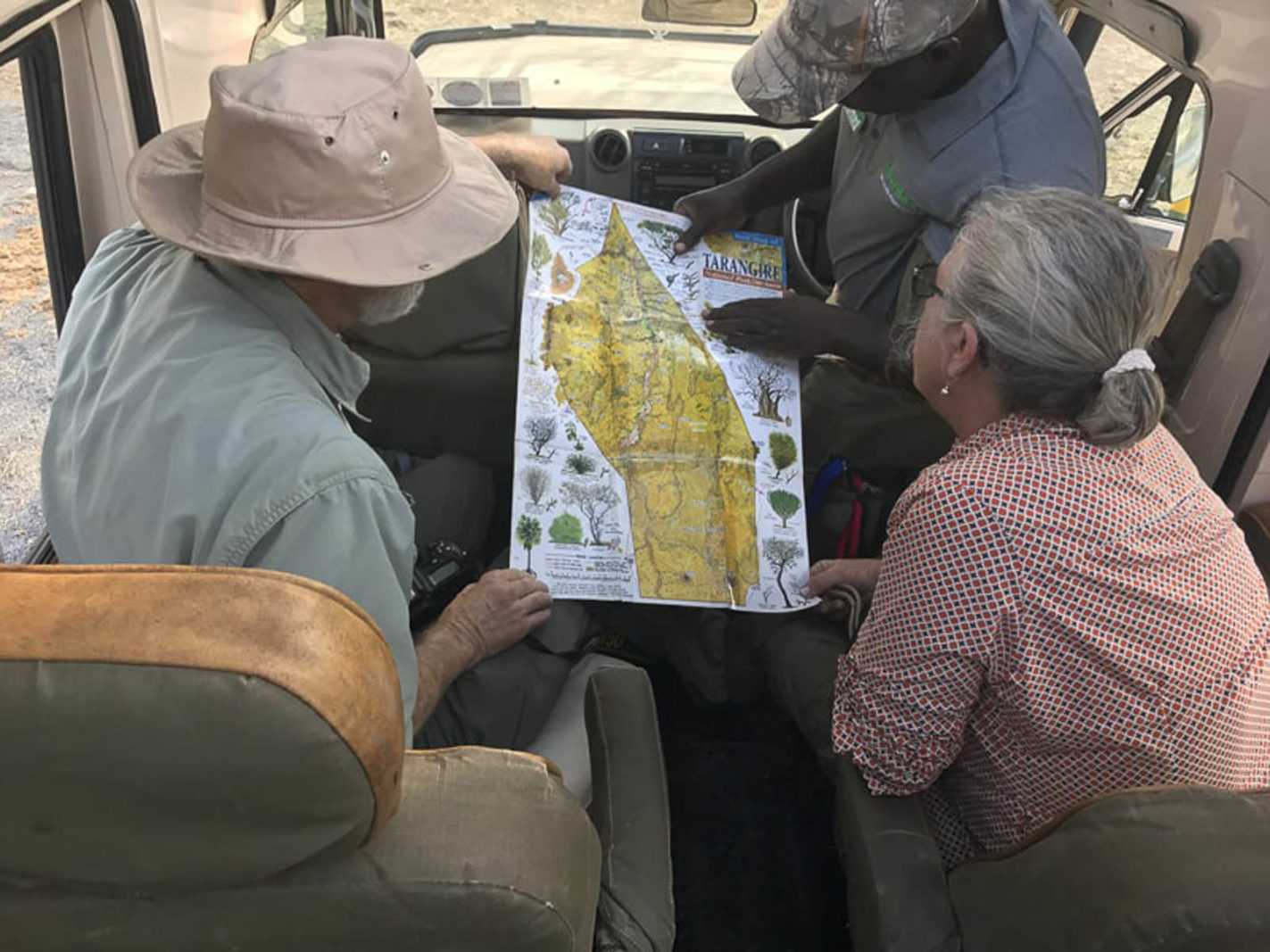
It is also important to let your driver know your expectations. Do you want to see the Big 5? Are you a bird watcher, do you want to see cheetahs or ostrich? Let them know. They usually know where the lion’s regular watering holes are or where the hippos will be rolling in the muddy waters. The more you can tell your guide what you want to see, the more they can help you.
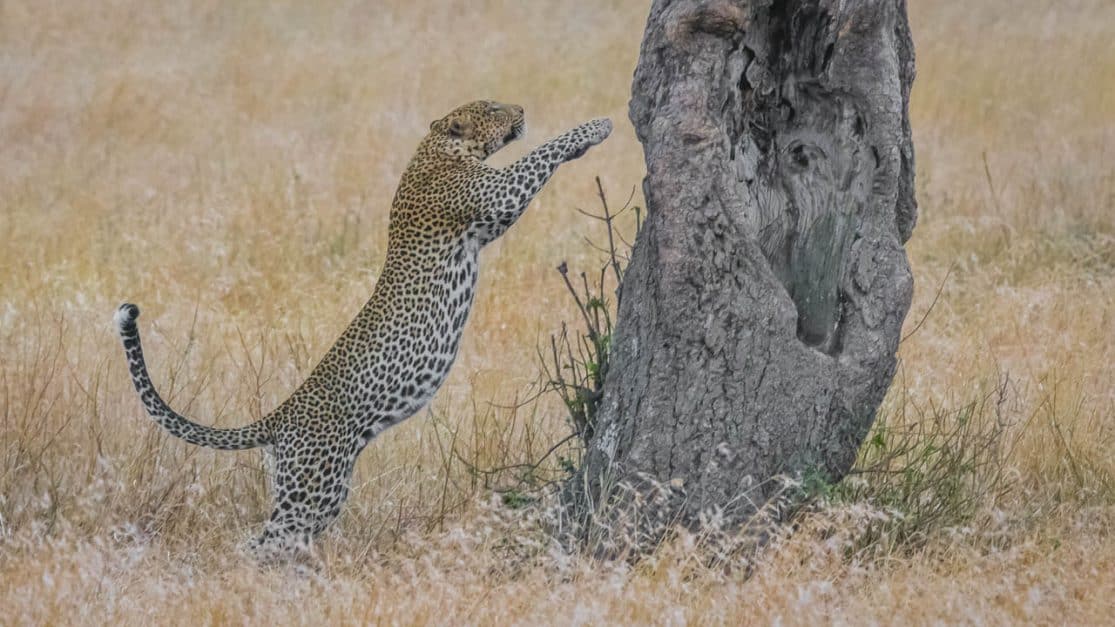
Don’t be afraid to ask your driver to stop when you see something. And if you need them to back up for pull forward for a better view, ask them if they can. They can’t read your mind, so let them know if a tree is obstructing your view or if you are only seeing the back end of an animal.
Safari Etiquette
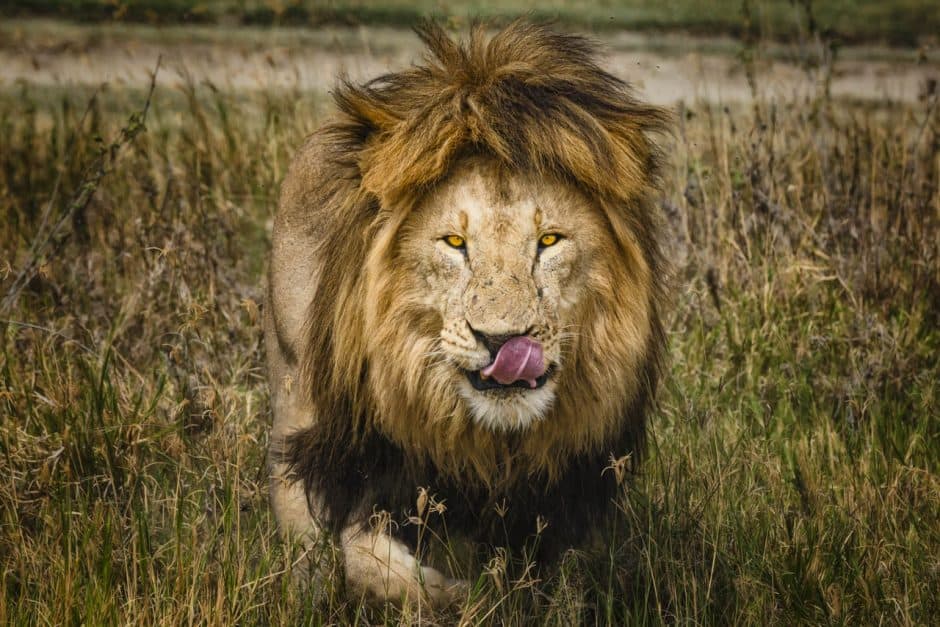
When on safari in Africa, listen to your guide for rules and tips for staying safe. We have had lions walk within inches of our cameras. Keep your hands inside the truck and don’t reach out to touch them. The animals could take a hand off in a heartbeat if they want to.
Do not get out of the vehicle unless your guide says it is safe. There are some opportunities to get out of the truck and when it is safe to do so, take advantage of it.
Don’t pressure your drive to chase animals. If you have a good tour company, they will never chase animals or get too close but you should also not ask your driver to go close. It isn’t cool to pressure your guide to get too close to animals. Let them have their space and try not to intrude on their lives.
Be quiet and don’t disturb other people, but more importantly, don’t disturb the wildlife. You are in their house.
Keep reasonable expectations
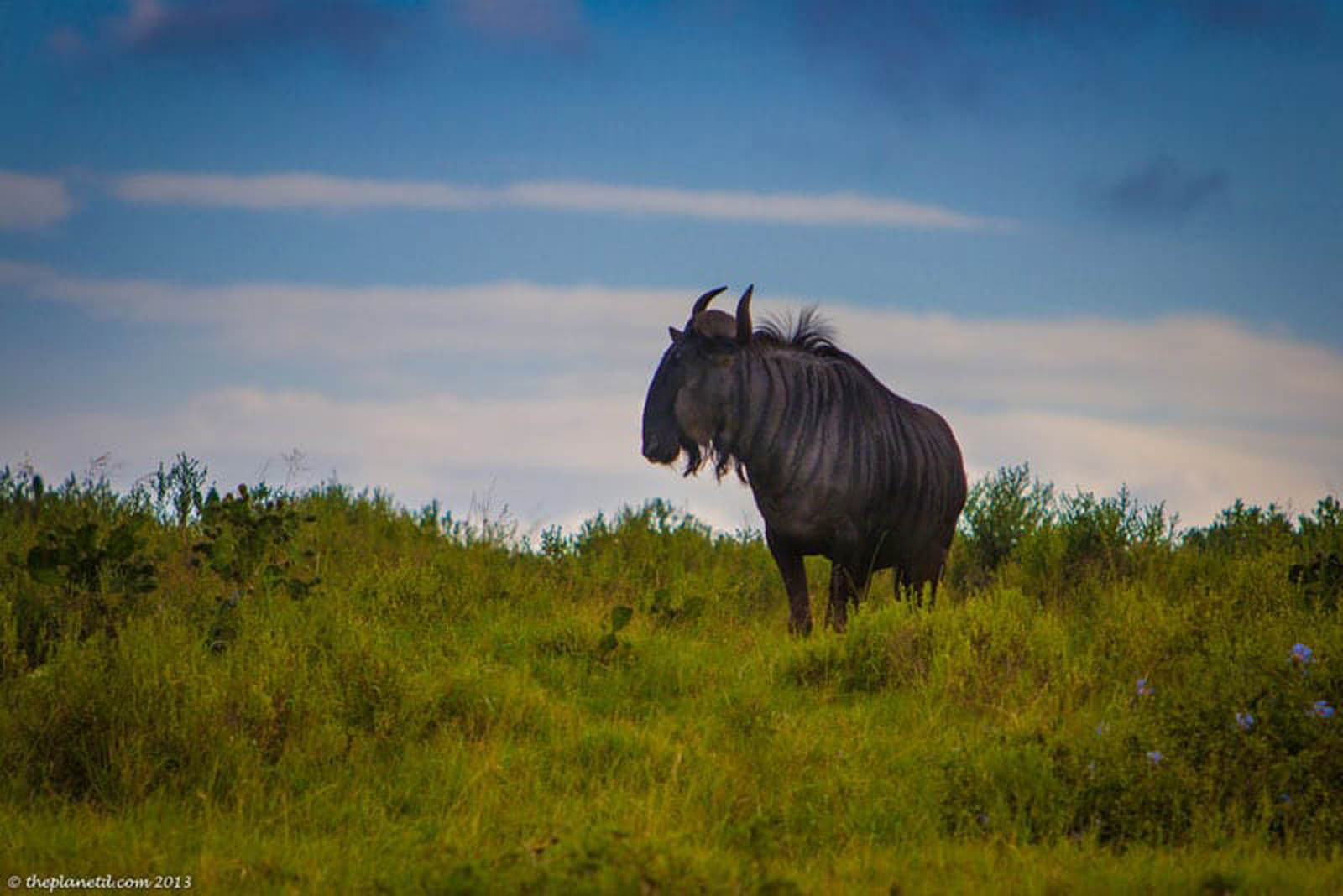
Remember, it is wild animals you are viewing. This is not a zoo and just because you want to see a leopard, doesn’t mean you will see one. You may not see everything you are looking for. We were once on safari in Kenya for 5 days before spotting a leopard.
There was another trip in Tanzania where we never saw a rhino. And on our first safari in Botswana, we never did see a lion. Be happy with what you do see and appreciate what you do encounter rather than dwelling on what you missed out on.
In the Vehicle
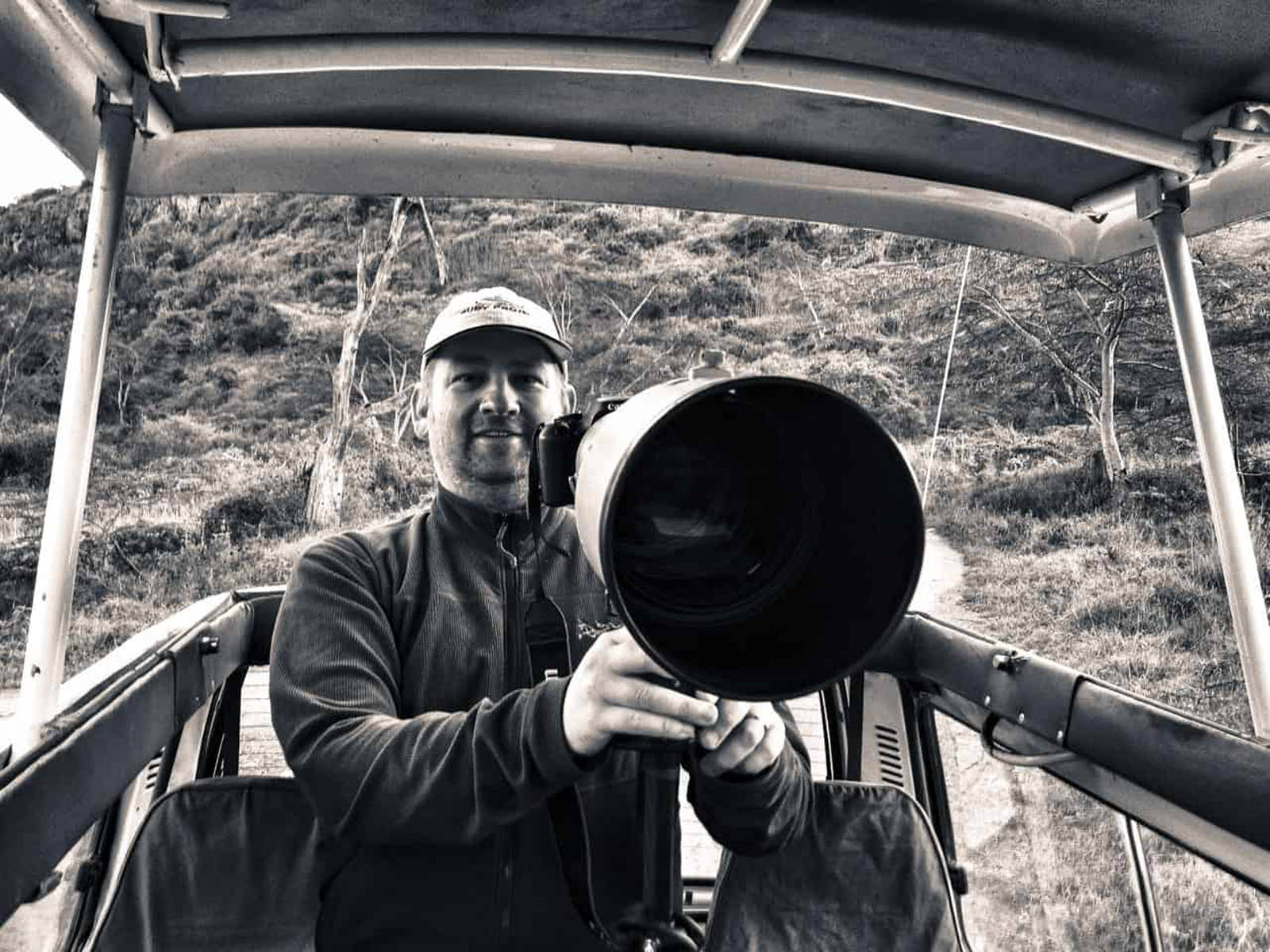
Be prepared for a bumpy ride. No matter how good the vehicle or how luxurious the trip, the roads on safari are rough and rugged. You will be bumped and tossed around. The vehicles will be open so you will be hot at times and in the mornings you will be cold. So be prepared for everything. The most important thing is to sit back, relax and look at your safari in] Africa as a great adventure. Because that is exactly what it is.
What to Pack on an African Safari
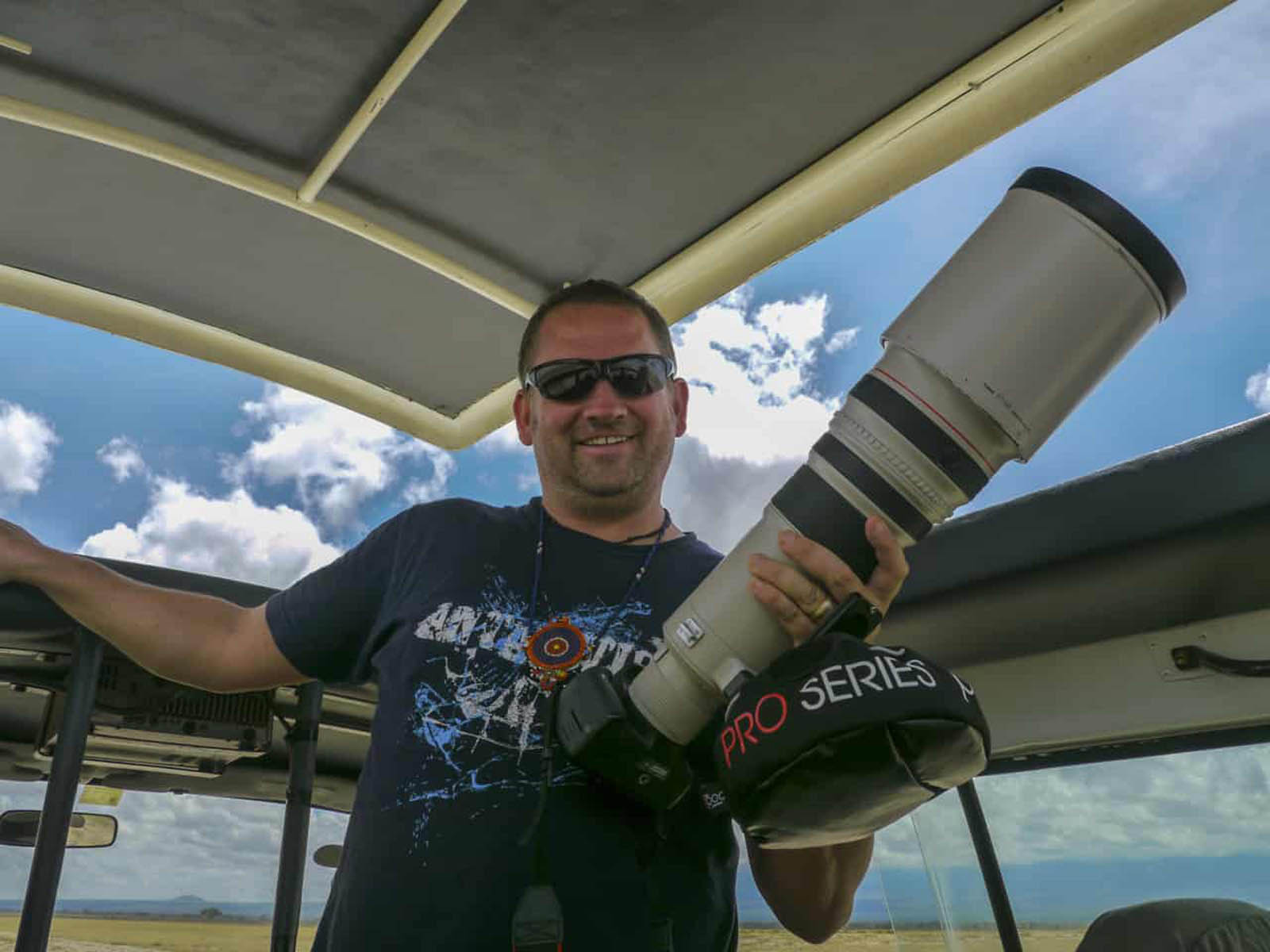
We have an entire post on what to wear on a safari in Africa that you can check out here. But to get you started, here are a few staples that you must pack for an African safari.
- Tilly Hat or Safari Hat
- Water Bottle – to refill your water rather than use plastic bottles
- Camera and Camera Bean Bag to rest on. See our camera list here.
- Read our full post – What to Wear on Safari – Africa Travel Inside and Out
Cultural Experiences

One of our favourite things to do when on Safari is to meet the locals and have cultural experiences. Visiting villages and local communities is an enriching experience. It is important to respect local culture and embrace the moment.
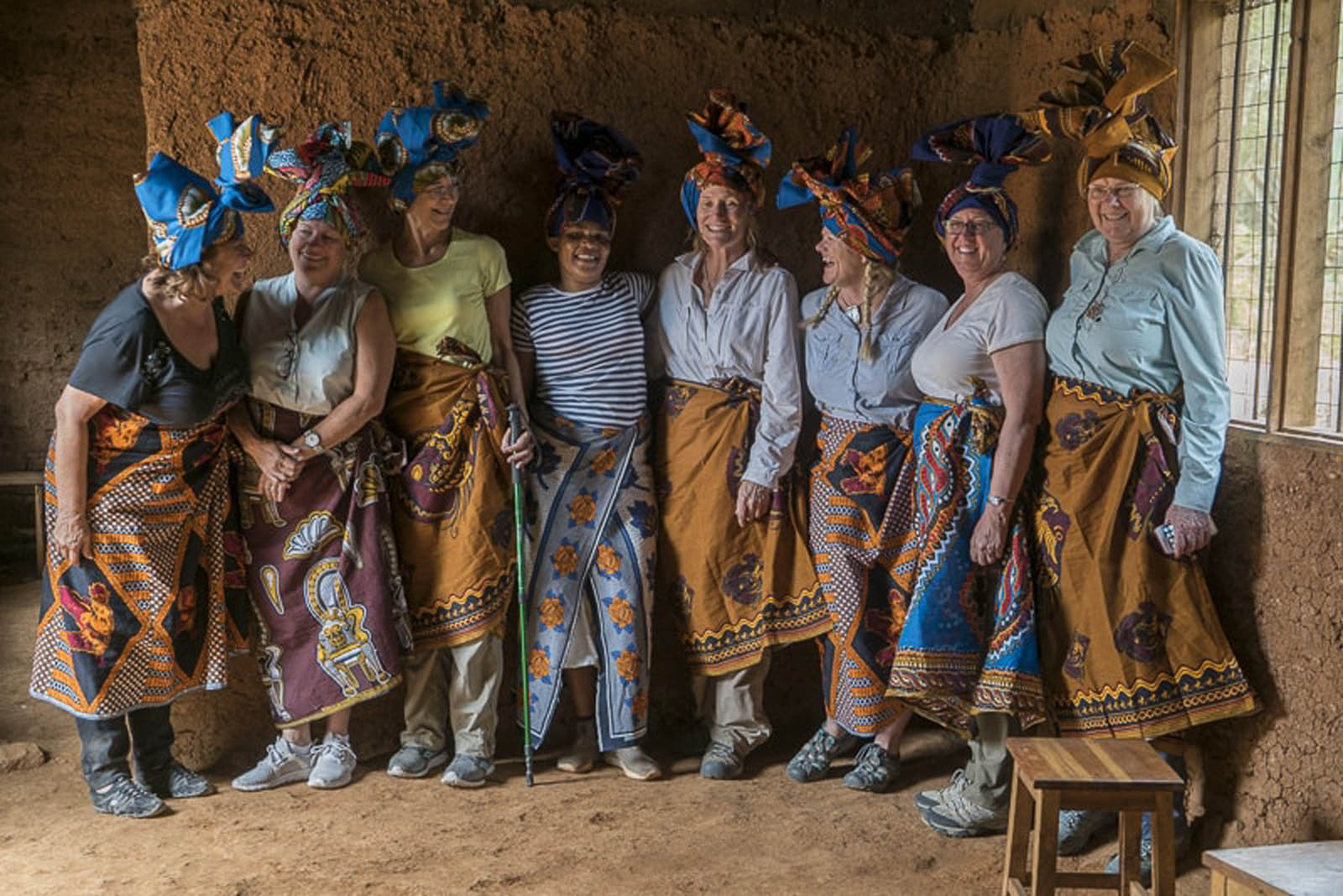
Take part in the dancing and singing, join in on any festivities and support the local artisans.
Food on Safari
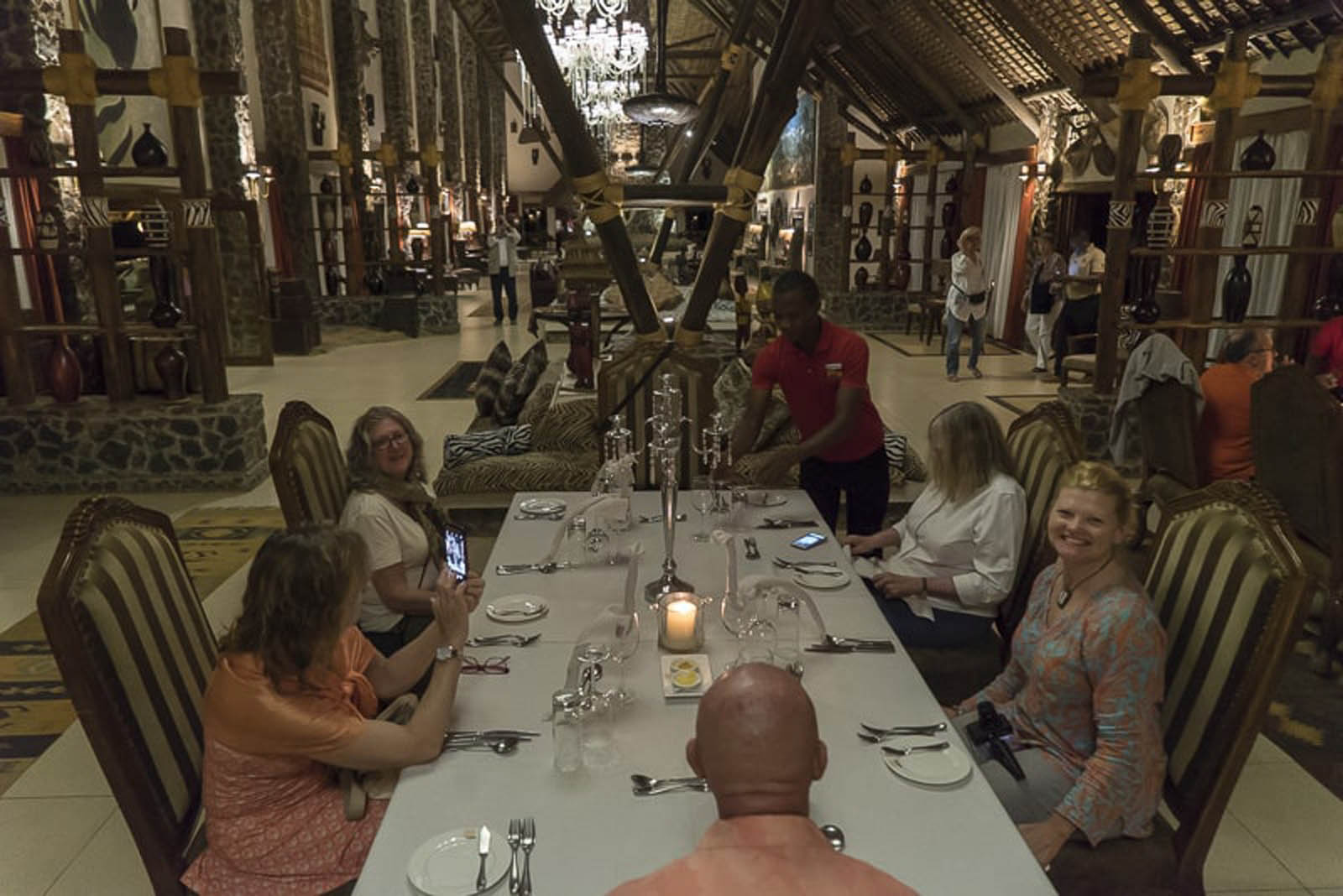
When staying at lodges you will most likely be eating buffet dinners. There are some places that take orders and are proper restaurants.
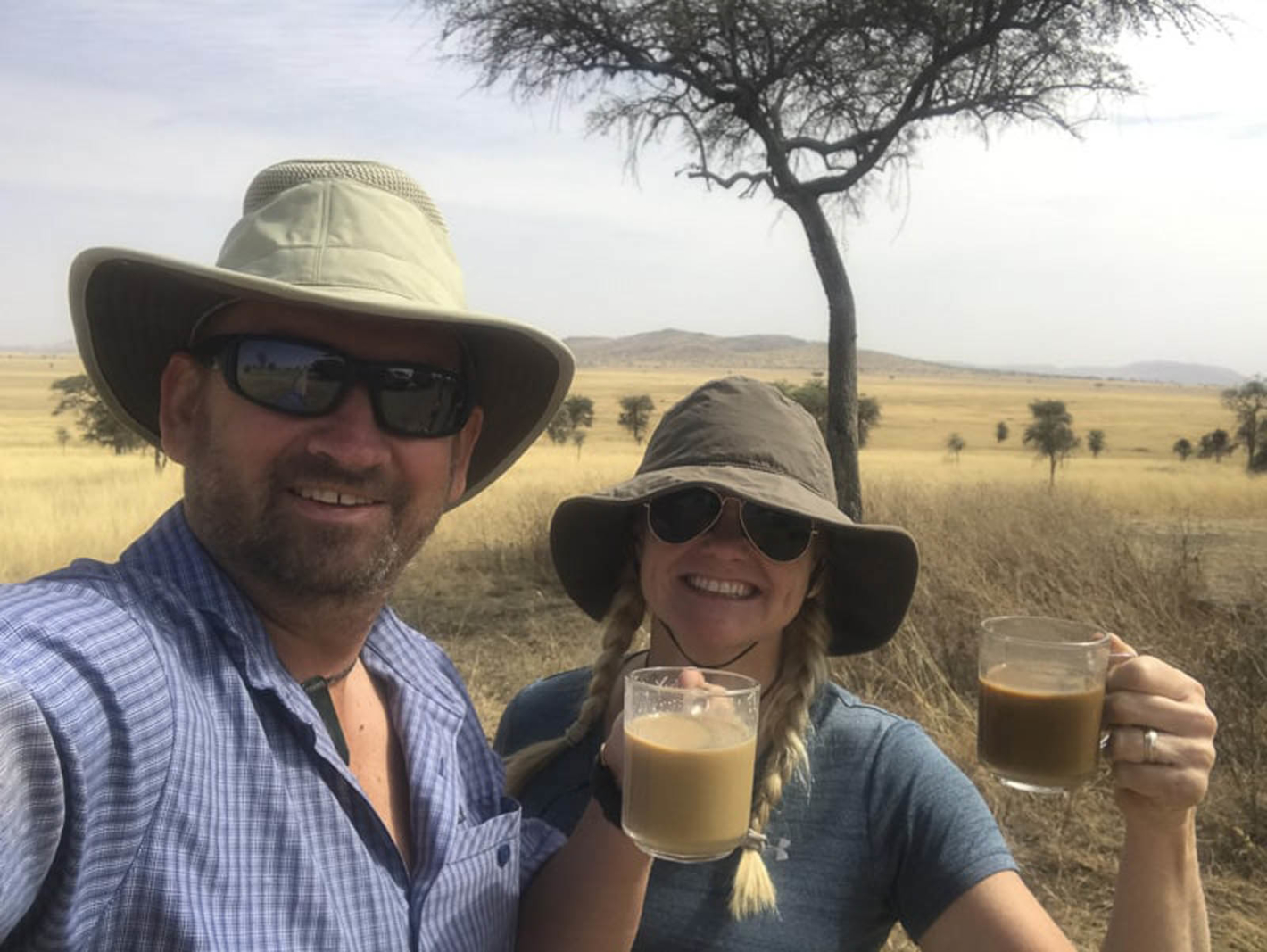
There will be days where you will also have a packed lunch on the savanna. During one safari, we had a picnic lunch complete with beer and wine on the Serengeti. Many of our lunches were outside in designated eating areas.
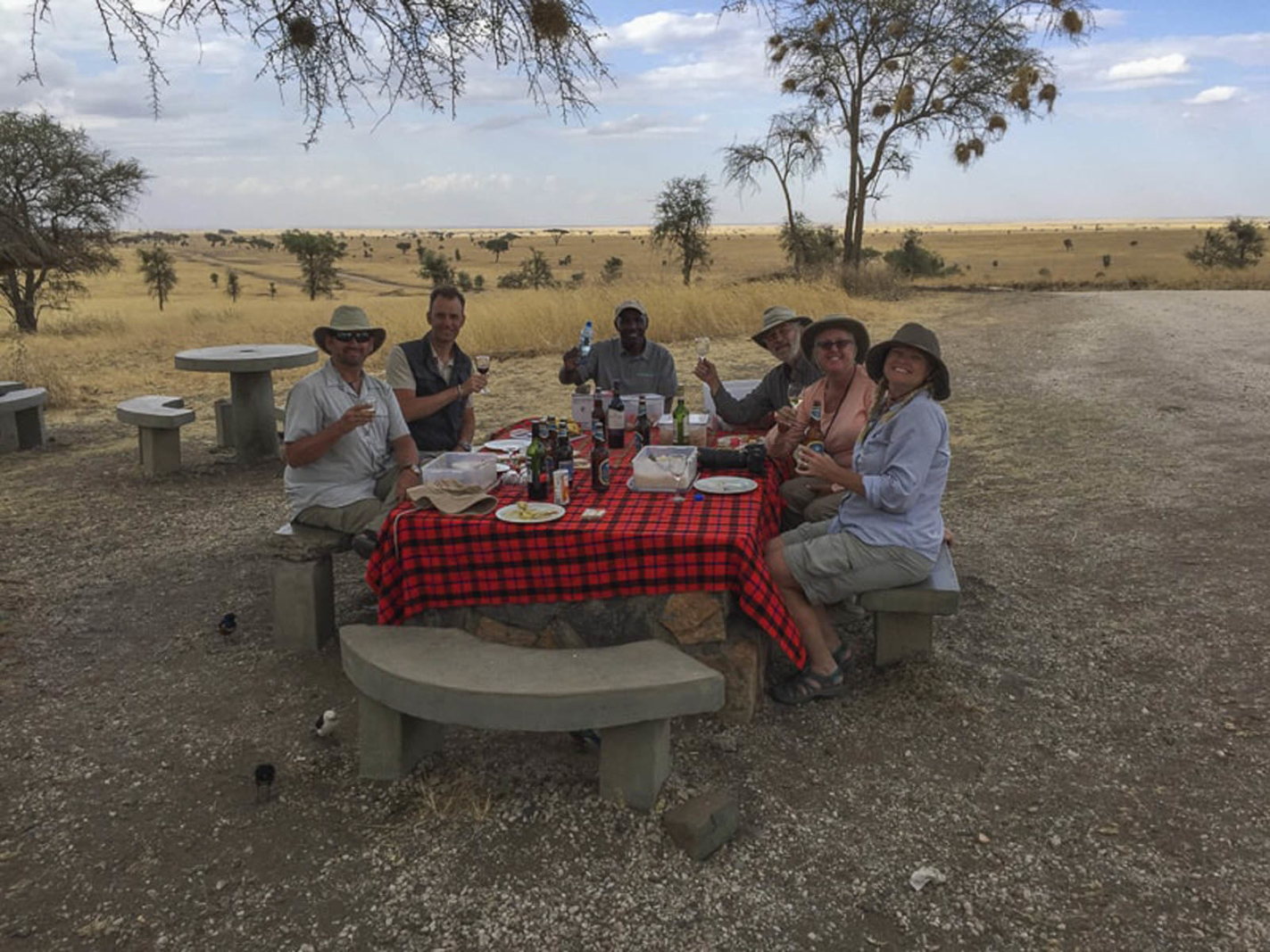
We sat overlooking a watering hole watching elephants pass by in Tarangire National Park, we bought fresh coffee on the Serengeti from the local touring barrista and we dined in our trucks overlooking the lake in the Ngorngoro Crater. It’s moments like these that make things as simple as dining a memorable experience.
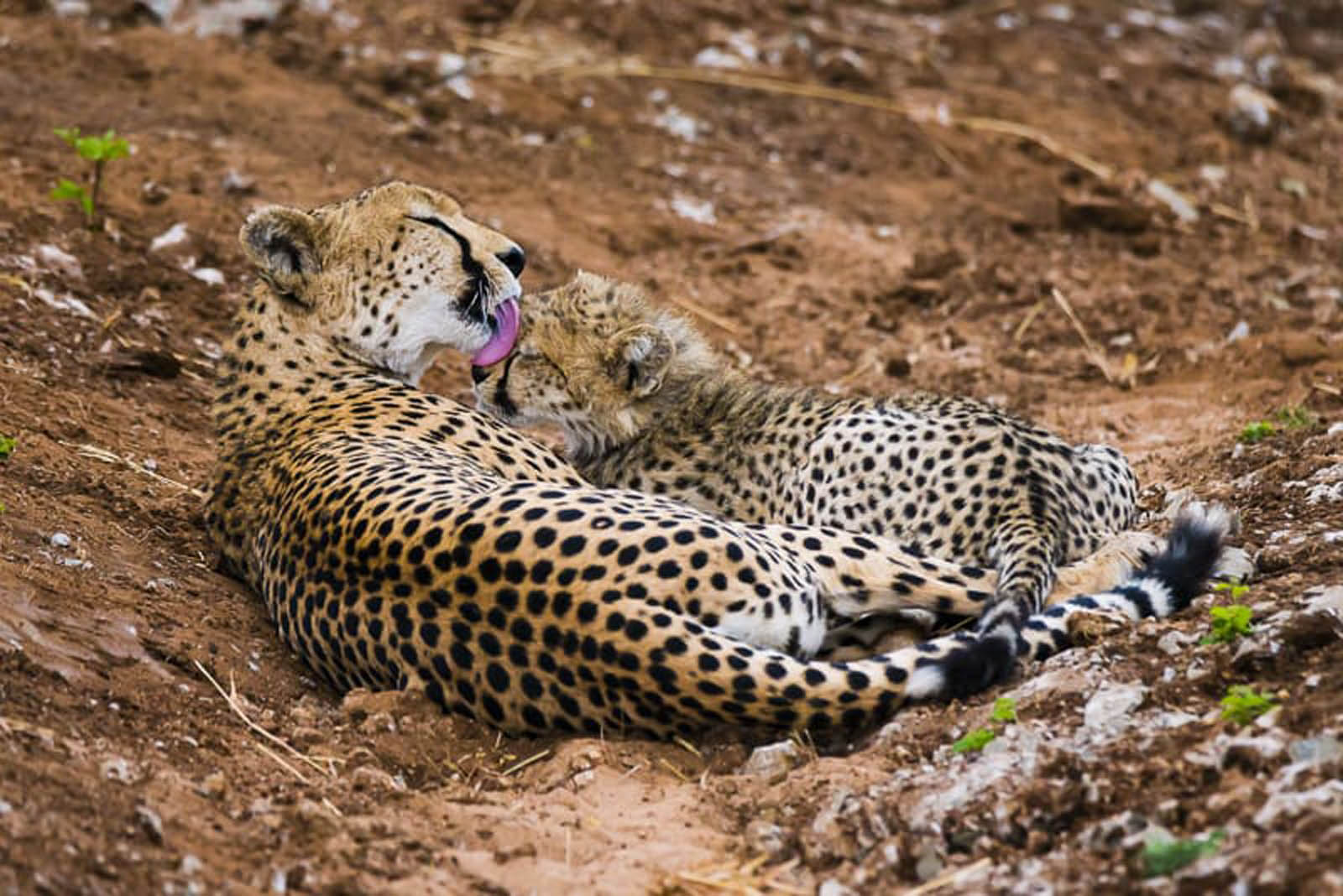
We have always wanted to stay in tented camps on safari and we did that! We have always wanted a luxurious villa to ourselves on safari, and we got that!
There are so many memorable moments. An African safari truly does create memories to last a lifetime.
- What to Wear on Safari – Africa Travel Inside and Out
- Kenya Safari – The Masai Mara Experience
- African Safari Animals: 34 Photos to make you want to visit Tanzania
Travel Planning Resources
Looking to book your next trip? Why not use these resources that are tried and tested by yours truly.
Flights: Start planning your trip by finding the best flight deals on Skyscanner
Book your Hotel: Find the best prices on hotels with these two providers. If you are located in Europe use Booking.com and if you are anywhere else use TripAdvisor
Find Apartment Rentals: You will find the cheapest prices on apartment rentals with VRBO .
Travel Insurance: Don't leave home without it. Here is what we recommend:
- Allianz - Occasional Travelers.
- Medjet - Global air medical transport and travel security.
Need more help planning your trip? Make sure to check out our Resources Page where we highlight all the great companies that we trust when we are traveling.
You May Also Like
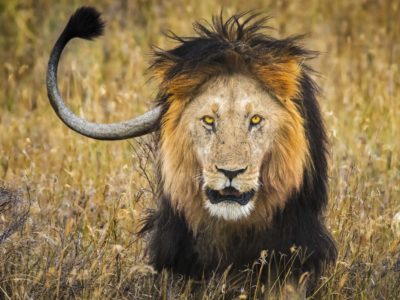
29 Best Things to Do in South Africa In 2024

Traditional Moroccan Food to Eat in Morocco or At Home
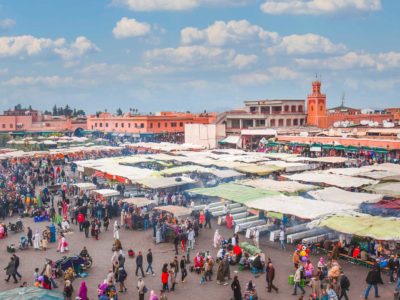
22 Best Things to Do in Marrakech, Morocco
About The Planet D
Dave Bouskill and Debra Corbeil are the owners and founders of The Planet D. After traveling to 115 countries, on all 7 continents over the past 13 years they have become one of the foremost experts in travel. Being recognized as top travel bloggers and influencers by the likes of Forbes Magazine , the Society of American Travel Writers and USA Today has allowed them to become leaders in their field.
Join thousands of others who get our monthly updates!
Leave a comment cancel reply.
Save my name, email, and website in this browser for the next time I comment.
3 thoughts on “Tips for Going on a Safari in Africa”
Excellent piece about Africa..Africa is magic once you visit, you will always want to visit again.
Safaris in Africa really are a magical exoerience. Its so important to pick tours and services that promote ethical and environmental consciousness travel experiences and I appreciate you mentioning that in your article. A great read and great tips!
Amazing experience at your and thanks for sharing with us.

safari tips
Make the most of your african adventures while on safari.
Whether this is the one and only safari you ever plan to take or this is just one of many, we know you want to have an amazing African adventure. No matter what, this isn’t a small trip, and you deserve to get everything you want out of it. So, to make sure you have a fabulous experience, here are our tips and tricks for making the most of your safari.
GET OUT ON SAFARI GAME DRIVES
Yes, your camp will be set up in the middle of a park and animals could walk by your tent at any time, but if you want to see the animals and experience them as much as possible, you need to be out on safari game drives. That’s why we offer all-day safari game drives , so you get the best chance possible of seeing animals.
This also means that early mornings and late evenings are a MUST. The animals are most active right around dawn and dusk when the weather is cooler. So, if you’re looking to sleep in, a safari focused on incredible African adventures is not the right activity for you. We’ll be waking up before dawn and staying out all day, and believe us, it’s worth it.
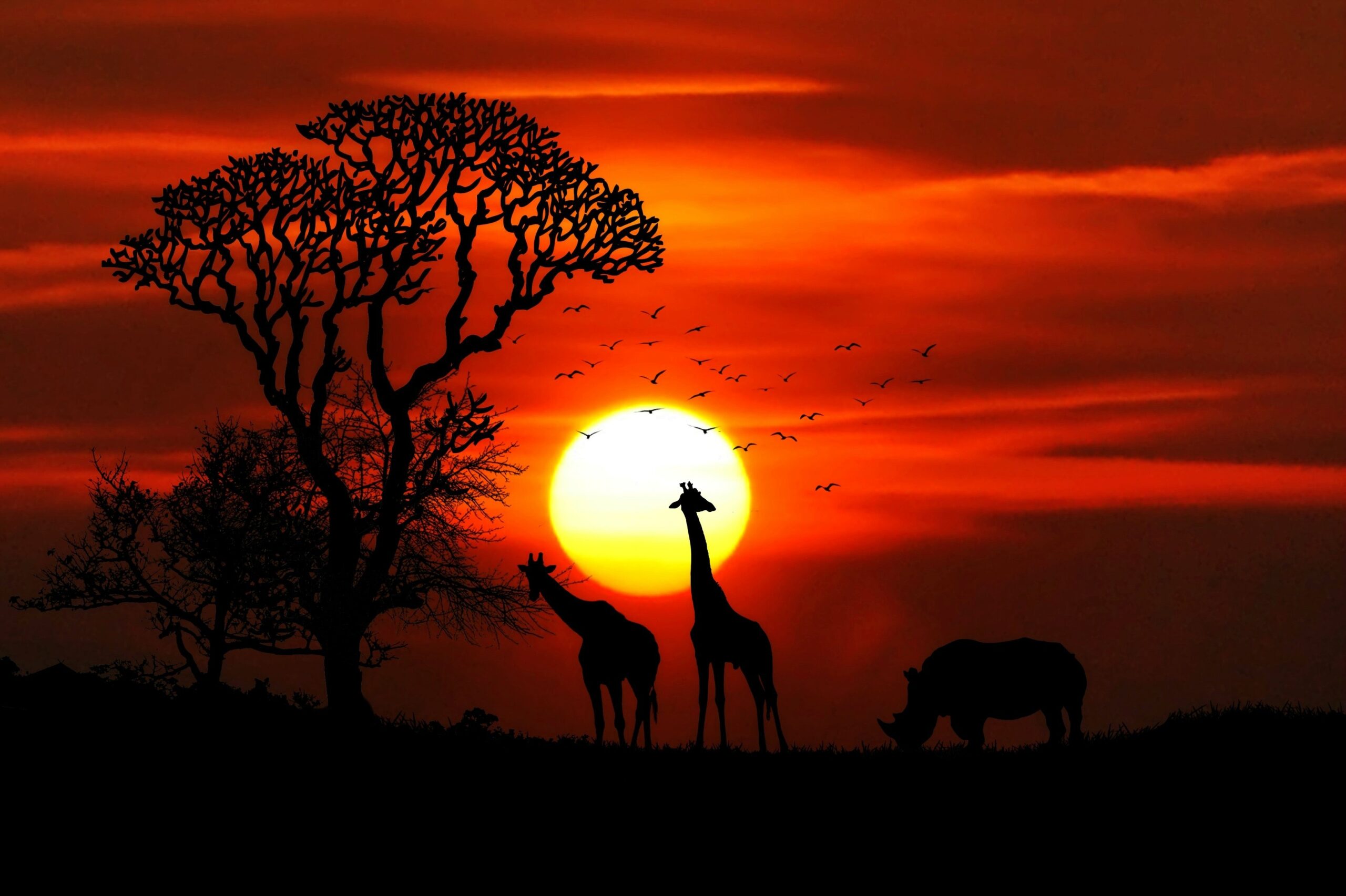
TAKE LOTS OF PICTURES
You can always delete extra pictures when you get back to camp, so go a little crazy and take as many pictures as you want. You never know when an animal will turn just the right way or behave in a brand new way and you want to catch it on camera.
And since you’ll be taking so many pictures, make sure you have the batteries and memory space you need to handle all those pictures. The absolute worst thing that could happen is if your camera dies in the middle of the day and there’s still more to see.
It’s also why we recommend bringing more than one camera. Bring your fancy camera equipment and a point-and-shoot camera. Sometimes, you’re going to have seconds to snap the shot and you’ll want a quick-response camera to capture the picture before it’s too late.

PUT THE CAMERA DOWN
We know you want AMAZING pictures from your safari, and we promise that you’ll get some. There will be plenty of opportunities to take picture after picture. Just don’t get so caught up on getting the perfect shot that you miss the entire safari from behind your camera lens. Don’t be afraid to put down the camera and just enjoy your African adventures. There’s so much to see, smell, and enjoy. Get into it.
DON’T FORGET BINOCULARS
Yes, we get up close and personal with many animals, but that doesn’t mean that you won’t want a pair of good binoculars. Every time the car stops there will probably be some incredible bird watching nearby where binoculars would come in handy. Also, sometimes we’re in open areas where you might think you see something exciting off in the distance. Binoculars will help you see what’s out there and then your guide can get you close as needed.
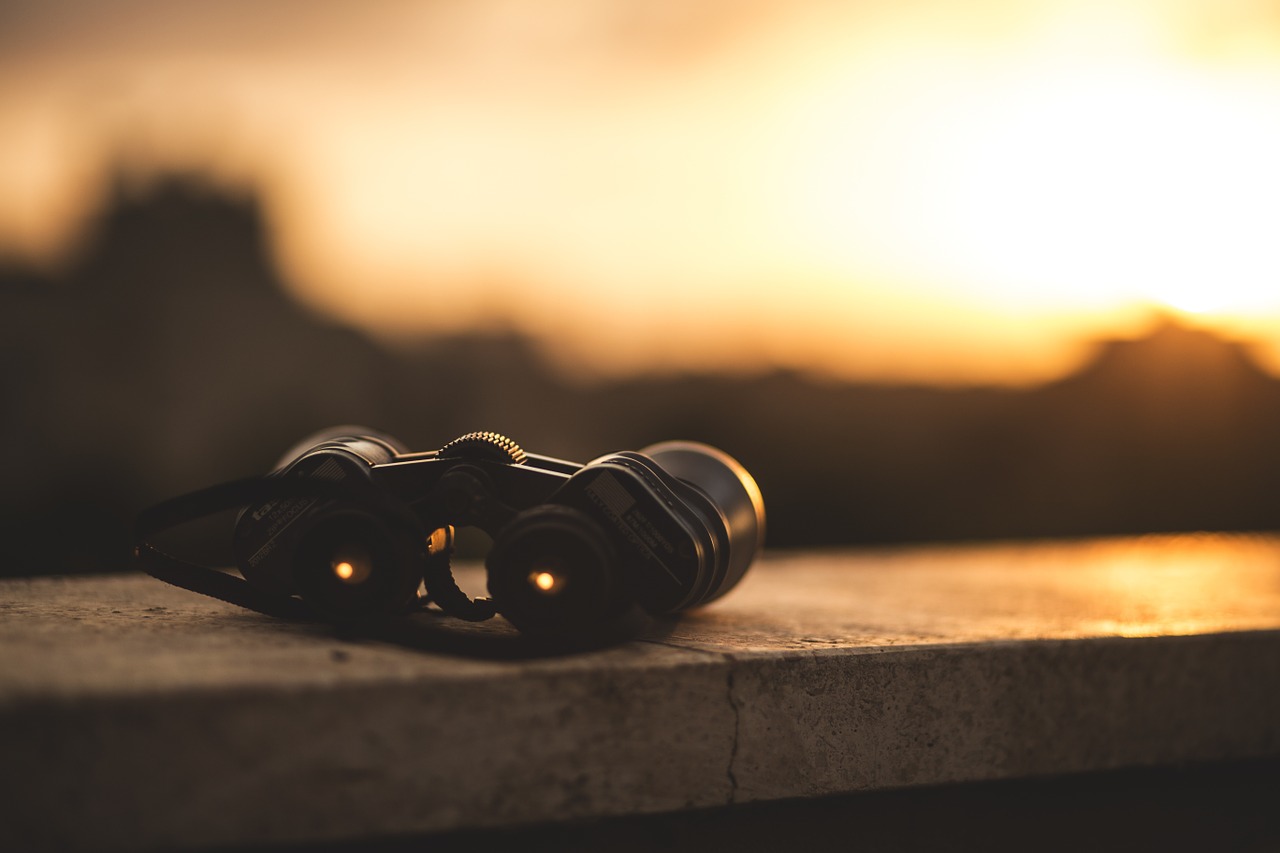
BRING A DAY BAG
When you’re out on a safari game drive, heading back to camp because you forgot something isn’t possible. Instead, you’ll want to bring everything you could possibly need for a day out in the bush with you in a daypack. You’ll be in a car, so feel free to stuff your bag as full as possible with everything you can think of.
Some things to include in your daypack are:
- Extra batteries
- USB chargers
- Extra memory sticks
- Clothing layers (it’s cold in the morning and evening and hot in the afternoon)
- Hand sanitizer
- Plastic baggies (for trash)
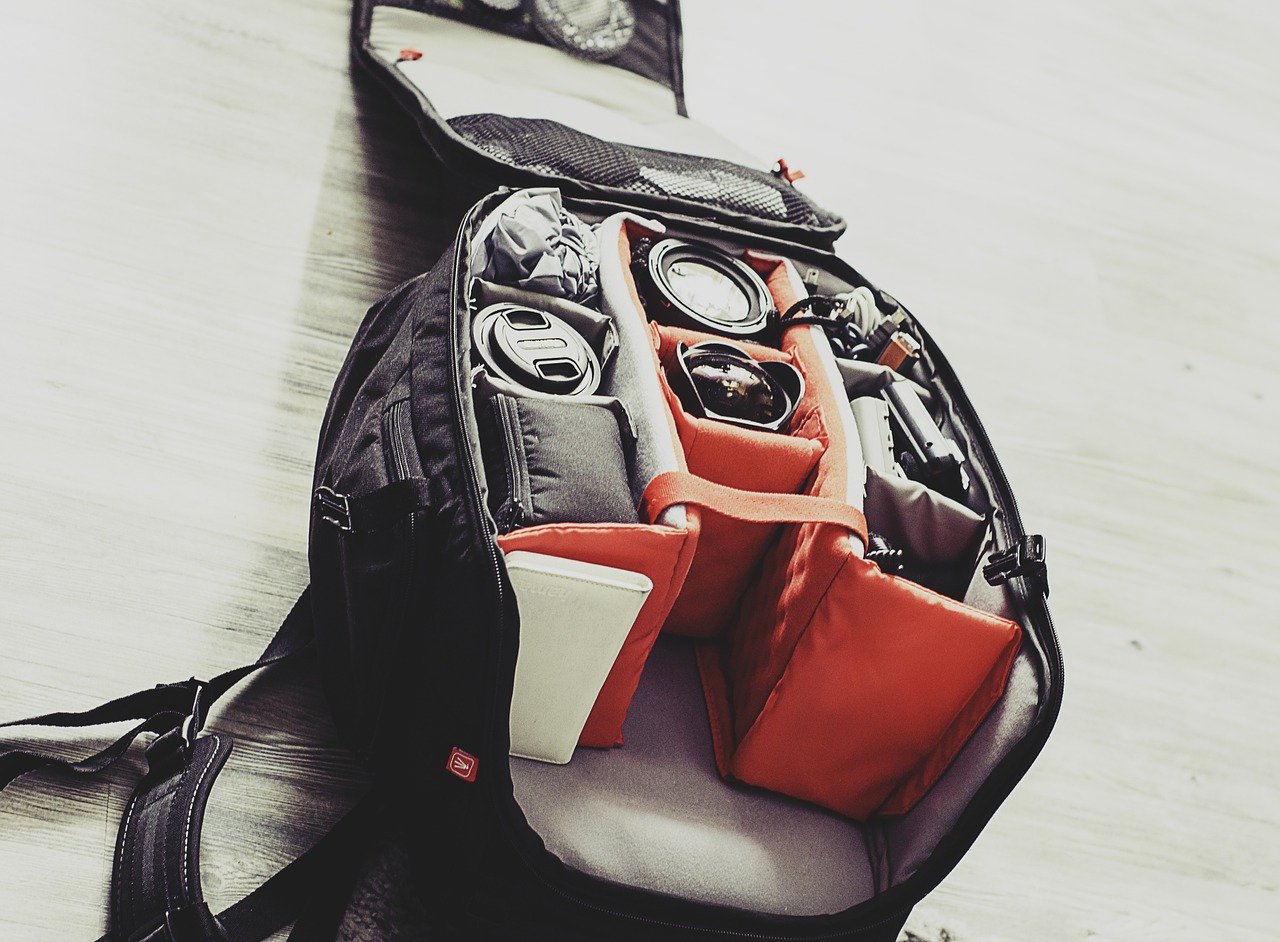
When you choose Brave Africa for your safari experience, we force you to disconnect. There’s no Wi-Fi or cellphone service in the Botswana bush, and that’s how it should be. Put the phone and computer away and just enjoy the safari experience. Make friends with the other guests in camp. Spend your evenings reminiscing about the day around the fire and looking forward to the day ahead. Instead of checking messages or worrying about what’s going on back in “civilization,” enjoy every moment you can on your African adventures and let civilization worry about itself.
ASK! ASK! ASK!
Don’t be afraid to ask as many questions as you can, and not just about the animals and wilderness. If you’re at all concerned about any part of your safari experience or you want to know more about how something works, ASK! That’s what we’re here for. Our staff will be happy to answer any questions you might have, no matter how crazy they are.
The same goes for asking what you want. Whether you want to have an all-day safari or you want to head back to camp, we don’t know what you want unless you ask. It’s the same out on a drive. If you want the car to stop because you see a cool bird or viewpoint that you want to snap a picture of, ask your guide to stop. We’ll always do our best to accommodate every request.

TALK AND LISTEN TO YOUR GUIDE
Your safari guide is your greatest resource for all things Botswana. He’ll be your eyes and ears in the bush, pointing out the animals, finding tracks, and telling you about various animal behaviors you might witness. Your guide is a wealth of information. He has years of experience guiding safaris and learning all there is to know about the animals, plants, weather, and more. The more you communicate with your guide, the better your safari experience will be.
Also, our guides are amazing and we know you’ll love getting to know them!
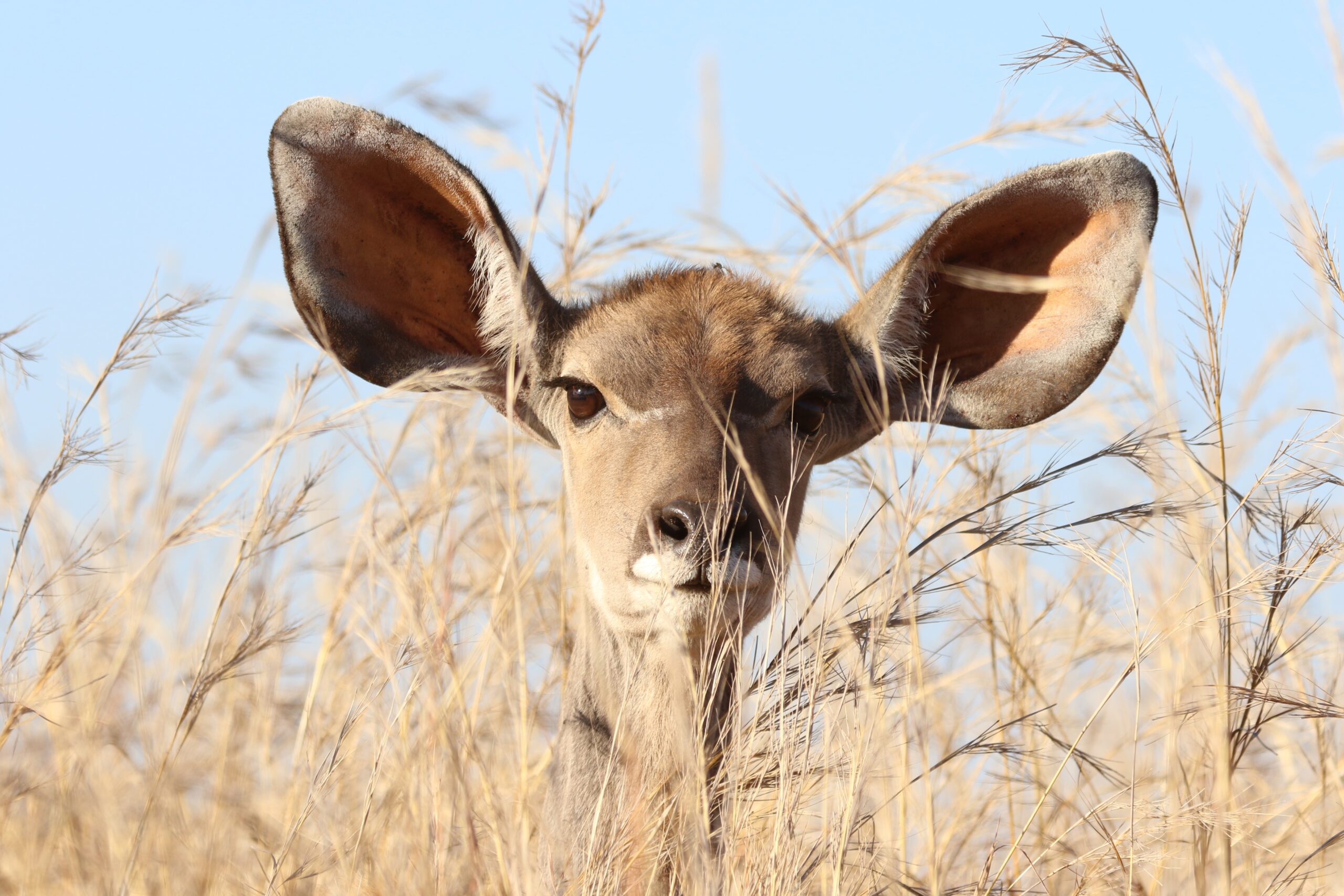
BE OPEN TO ANYTHING
So, you want to see a kill? That’s great! We do too. However, we cannot control what happens on any game drive. Sometimes, you’ll see everything on your bucket list and sometimes you won’t. That’s nature. And while it’s great to head out on safari with animals and items you want to see, don’t hold onto those ideas so tightly that you miss everything else that’s incredible.
For example, on our first safari, we desperately wanted to see a kill. It didn’t happen. Instead, we got to see two lions mating, which was completely unexpected and incredible. On our second safari, we were woken up in the middle of the night because a pack of wild dogs killed an impala just outside of our guide’s tent. The next morning, the dogs were still hanging out fat and bloody from their dinner.
The key is that you might have dreams of seeing a cheetah but see 23 lions instead. Or you could be dying to hang out with a pack of wild dogs and instead find yourself in the midst of a baboon mating ritual where the males are fighting to the death for the female. You just never know what could happen—that’s what our African adventures are all about. So, come with your dreams but be open to anything.
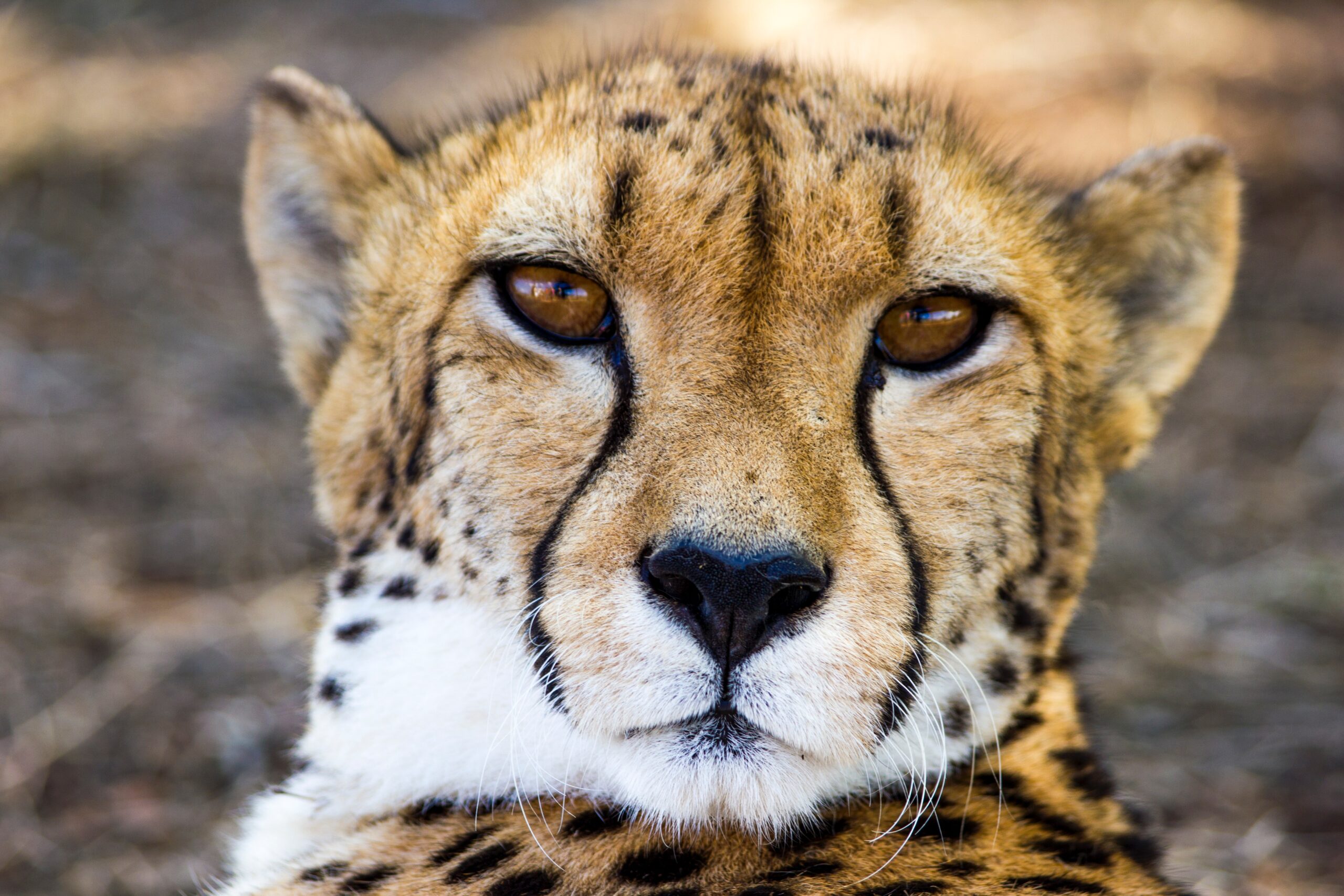
ENJOY THE MOMENT
Don’t get so anxious to see the next thing that you miss whatever you’re currently looking at. Botswana is incredible. There’s always something to see, experience, smell, and listen to. You can find beauty in everything. Take time to enjoy the fact that you’re in the middle of nowhere, in a place that’s unlike anything you’ve experienced before. You might be seeing your 100 th elephant, but that elephant could be the first elephant to trumpet at you or get on its hind legs while eating from a tree. You just never know, so enjoy the moment.
Be curious about everything out on safari. Ask about trees, flowers, insects, snakes, and more. If you hear an interesting sound, ask about it? If you think you see a footprint in the sand. Ask what it could be. You’ll be amazed about how many interesting things there are out in the African bush that your guide can shed a light on. Every curiosity will enrich your experience and enhance your memories.

DON'T COMPARE
Every safari experience is different, and comparing your trip to someone else’s is the best way to lose your joy in the experience. This is even true when comparing this safari trip to a previous trip.
It’s incredibly difficult to do, but try to just enjoy the experience that you’re having and don’t compare what you’ve seen, experienced, and felt with someone else. Your African adventures are yours and yours alone and everything you experience is a gift. Don’t let anyone take away how amazing your experience is because they had a different gift.
Travel Agents
DESTINATIONS
Getting Here
What to Pack
Safari Tips
SAFARI PACKAGES
10 Day Safari – Moremi, Khwai, Savuti
7 Day Safari – Khwai & Savuti
7 Day – Moremi & Khwai
- You are here:
10 Travel Tips When Going on an African Safari
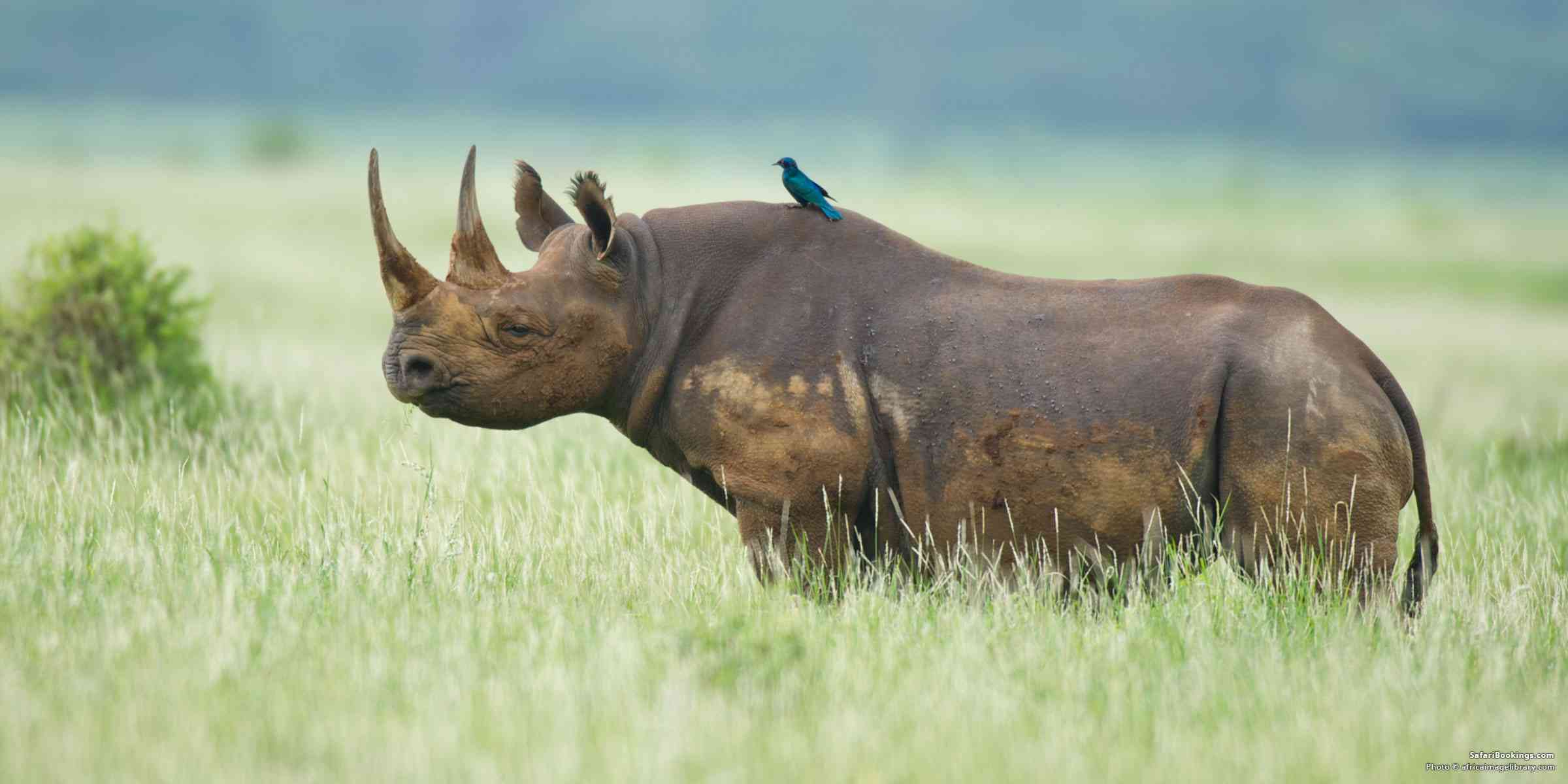
Patrick has been an Africa travel specialist, based in Australia, for over 10 years and prior to that was a safari operator in Mana Pools in Zimbabwe.
As the saying goes, "It's better to be safe, than sorry." At SafariBookings, we know this only too well. That's why we want to equip you with some of our tried and true Safari Travel Tips. They will help you plan a safari without any mishaps.
1. Travel Insurance
As soon as you confirm your travel plans, take out travel insurance. Select a policy that covers cancellation, medical illness, emergency evacuation and associated hospital treatments. Be sure to take your travel insurance emergency phone numbers and your policy number/details with you.
2. Personal Safety
Your personal safety and security is mostly a matter of common sense. So take the same precautions while travelling in Africa on safari that you would in any major city at home:
- Do not carry large sums of cash (see below for more information on Cash, Credit Cards & ATM’s).
- Carry your cash (plus passport and other travel documents) in a money pouch hidden under your shirt. Keep it out of sight or stowed in your camera bag or knapsack (which should remain in sight at all times).
- Keep a close watch on your personal bags when walking in crowded areas (airports, markets, restaurants and on the street).
- Do not walk alone at night.
- Leave your passport, airline tickets and cash in a safe place (the hotel/lodge safe) when venturing out.
- Keep tempting valuables (including phones, cameras, wallet pouches, handbags) out of sight. Lock them up in the room safe or hand them in to management.
- If possible, leave your jewelry at home.
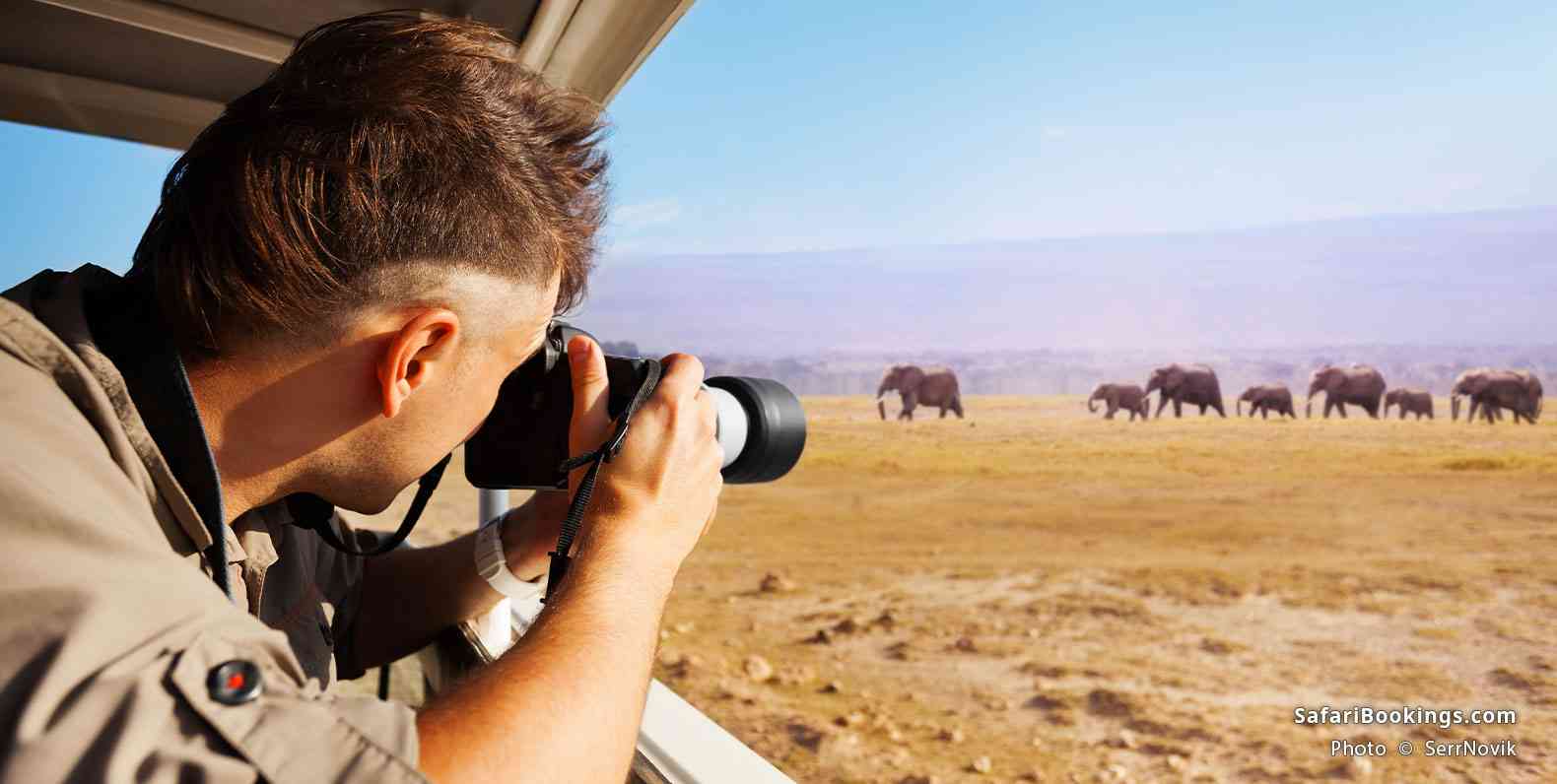
3. Cash, Credit Cards & ATM’s
Carry a combination of cash (preferably US$ for most countries…and Rand for South Africa) and at least one credit card.
Travelers cheques (checks) are not widely accepted in African countries (i.e. Tanzania ) anymore. The United States Dollar remains the most widely accepted, followed by the Euro and Sterling.
A very important Travel Tip relates to money. Take at least US$150 to $250 per person/per week in cash from home. Visas secured on arrival must be paid in cash and in the exact amount.
Some countries do not accept US$ bills dated before the year 2000, due to suspicions of counterfeiting.
Be wary of streetside money-changers! If you do use one, be sure to count each note separately to satisfy yourself that the whole amount is there before handing across any of your own cash. Once counted, be sure not to let the pile out of your sight. It is an old trick to switch bundles and for you to later discover that the new bundle is mostly newspaper. If the money traders are legitimate, they will not be offended!
Credit & Debit Cards
Most establishments accept international credit cards. Use them as a method of payment wherever possible. It makes sense to carry more than one brand of credit card as not all types are accepted by all outlets/hotels. On the downside, credit card companies do not offer the best exchange rates going around and will often add a foreign transaction fee for good measure!
Credit cards in Africa carry attract a surcharge - up to 5% in some cases, and possibly more! Be sure to ask about any surcharges before you hand over your credit card.
Important Travel Tip: Most banks and credit card companies advocate that you advise them before you travel overseas. This is so that their credit card monitoring systems do not suspend your card when they detect any unusual purchases. Such purchases will trigger the suspension of your card and leave you with embarrassing consequences.
Also, be cautious of providing your credit card details when travelling. And do not let your card out of your sight when paying your bill.
ATM Machines
In Africa, ATM machines supply only local currency and you may need an international PIN code. Be sure to check with your bank/credit card facility at home about how this should work. Not all ATMs in Africa will accept every credit card type. VISA has the best coverage in Africa. Use an ATM at a bank, so if your card is retained for any reason, you can go in and get it back. Don’t rely on ATMs as your main source of cash while on safari!

4. Electric Current
Electricity in Africa is all 220-240V/50Hz AC, as is much of Europe, the UK, Australia and New Zealand and virtually all the Asian countries and India. Those of you from North America must bring an adapter for the proper plug configuration and a converter.
Plugs/Types:
C (European) : Two-prong round (unearthed) D (Old British plug) : Three-prong round (small) F (Schuko plug) : Two-prong round (with 2 x earth contacts) G (UK plug) : Three-prong rectangular M (South African plug) : Three-prong round (large)
Type M (standard in South Africa) , Type D (standard in Namibia ) plug sockets and Type G (the UK standard) plug sockets are the dominant plug types in Africa. However, some countries do offer Type C & F plug sockets (see Table below). A number of hotels have international wall sockets which will take an array of both two-prong and three-prong plugs. North America and Japan use Type A & B plugs, and Australia a Type I plug. All will require an adaptor plug!
Country : Plug Type
Botswana : D & G Rwanda : C Kenya : G South Africa : D & M Malawi : G Swaziland : M Mozambique : C, F, & M Tanzania : D & G Namibia : D & M Zambia : C, D, & G Uganda : G Zimbabwe : D & G
Not all safari camps and lodges have electrical outlets in the tents/rooms but they always have a place where you can recharge your camera/video and phone/iPod batteries.
Some camps run their generator at certain times of the day – so be sure to check with the manager when you arrive.
A number of mobile safari operators have inverters in their vehicles, so you can charge your camera/video batteries on the move.
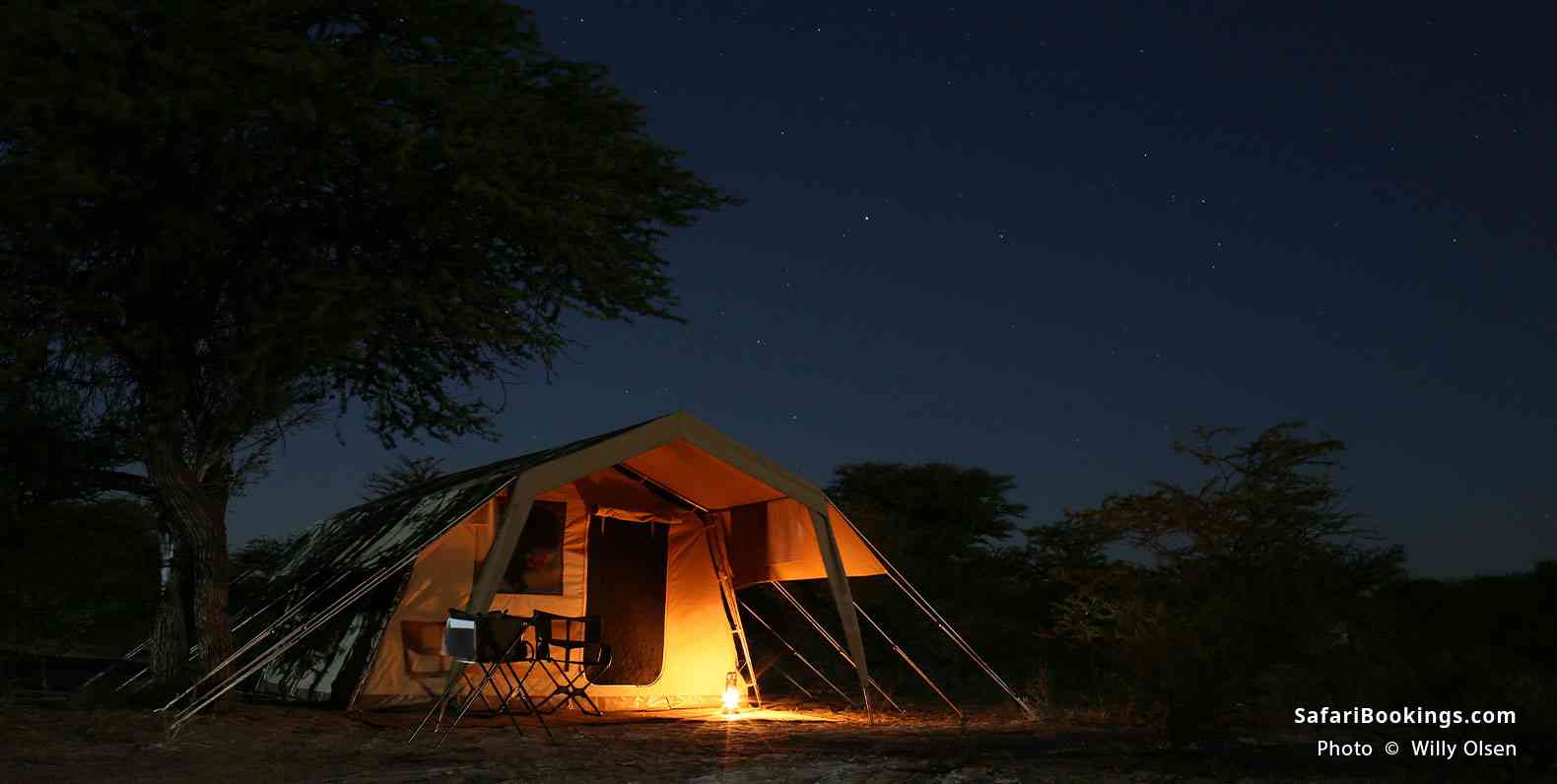
5. Mobile (Cell) Phone & Internet Access
Generally speaking, communications in Africa are not what you are accustomed to at home but mobile (cell) phone coverage (and even Wi-Fi) is certainly more widespread throughout Africa – although not in some of the more remote safari destinations (thankfully).
A Travel Tip before you leave home: check with your service provider that your phone is registered for international roaming (and check that the phone you have is compatible with the networks in Africa. Most operate on GSM digital networks, running at a frequency of 900 MHz (and some 3G networks too). If your phone is a dual or tri-band GSM phone it will work just fine.
More and more we are seeing Wi-Fi being offered at safari camps/lodges – some as an extension of that countries communications grid, and some connected via satellite. Check with your Africa Travel Specialist before you leave home about which camps/lodges have WiFi. Better to use WiFi than your mobile phone. Avoid exorbitant international roaming charges!
Please note: Not all conventional communication options (phone, fax, internet and email) are available at the more remote safari camps (and mobile camps particularly). Communications are sometimes only available via HF radio.
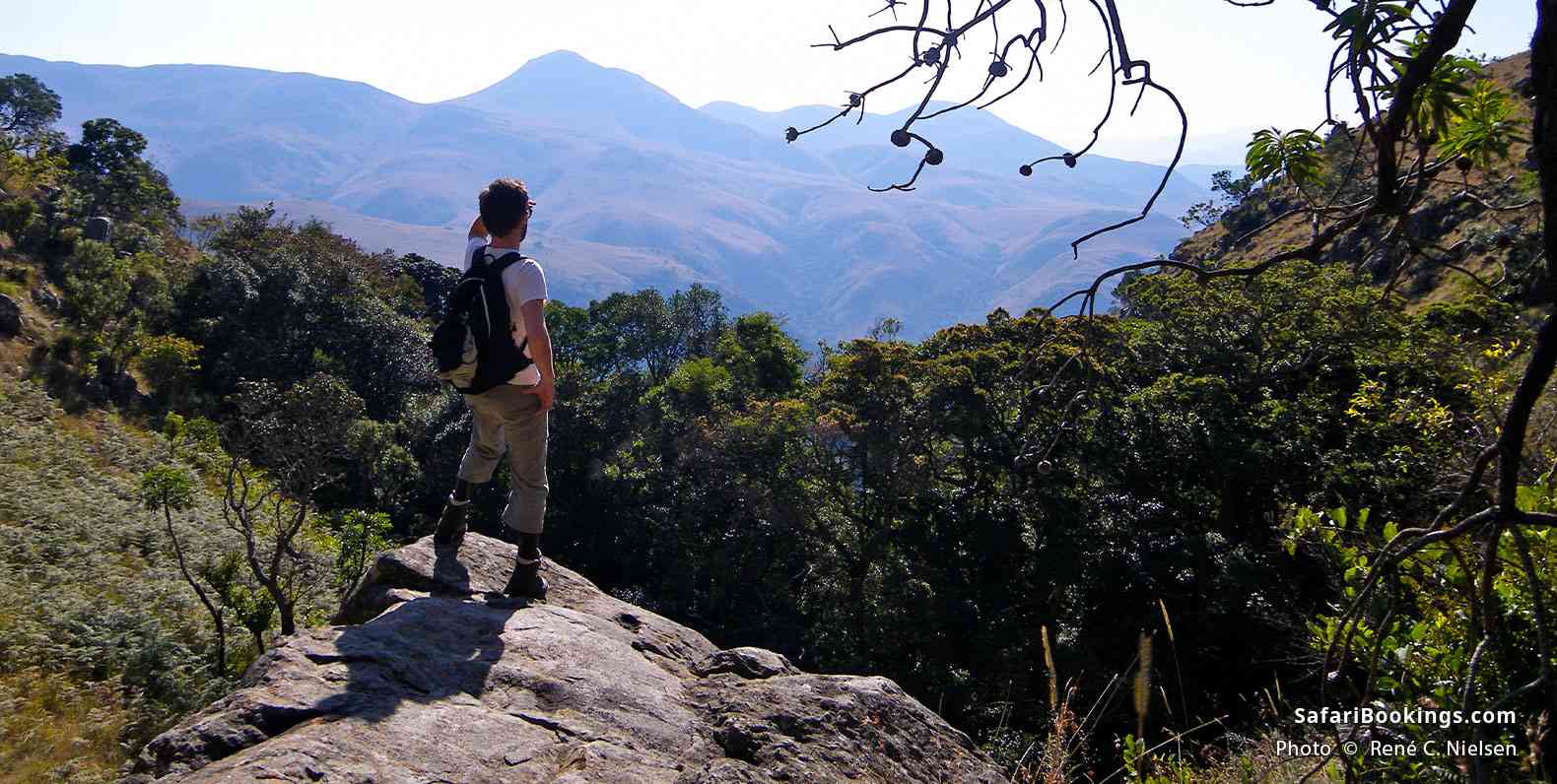
Drink bottled water. You are always safe drinking the bottled water that is readily available at all the camps and lodges. Carry a bottle of water with you at all times – including on transfers between camps. If you are at all apprehensive about the quality of water where you are staying, check with the staff. And if the water is not treated or bottled, then avoid ice in your drinks or cleaning your teeth with the tap water. Take water purification tablets for emergency use if you think bottled water will not be available.
The safari industry is making a concerted effort to reduce the use of plastic water bottles - try to work with them.
A number of safari operators are making sterilized water bottles (mostly stainless steel) available for you to fill with purified water at their camps and lodges. This is an initiative that you should adopt wherever possible as this will have a significant and positive environmental impact. By doing away with the factory-filled (sealed) plastic water bottles you will not only save fuel in transporting these bottles to remote regions (by their thousands) but also solve the problem of the enormous pollution to roadsides and towns that these plastic bottles foster.
Caution: Dehydration is a real danger on safari. Make sure to drink at regular intervals and have water at hand at all times.
In the winter months (June to October), the game reserves can be extremely dusty. Contact lens wearers should bring eye drops and eyeglasses, to avoid eye irritation. Clean camera and video lenses regularly and store in a camera bag, while on safari.
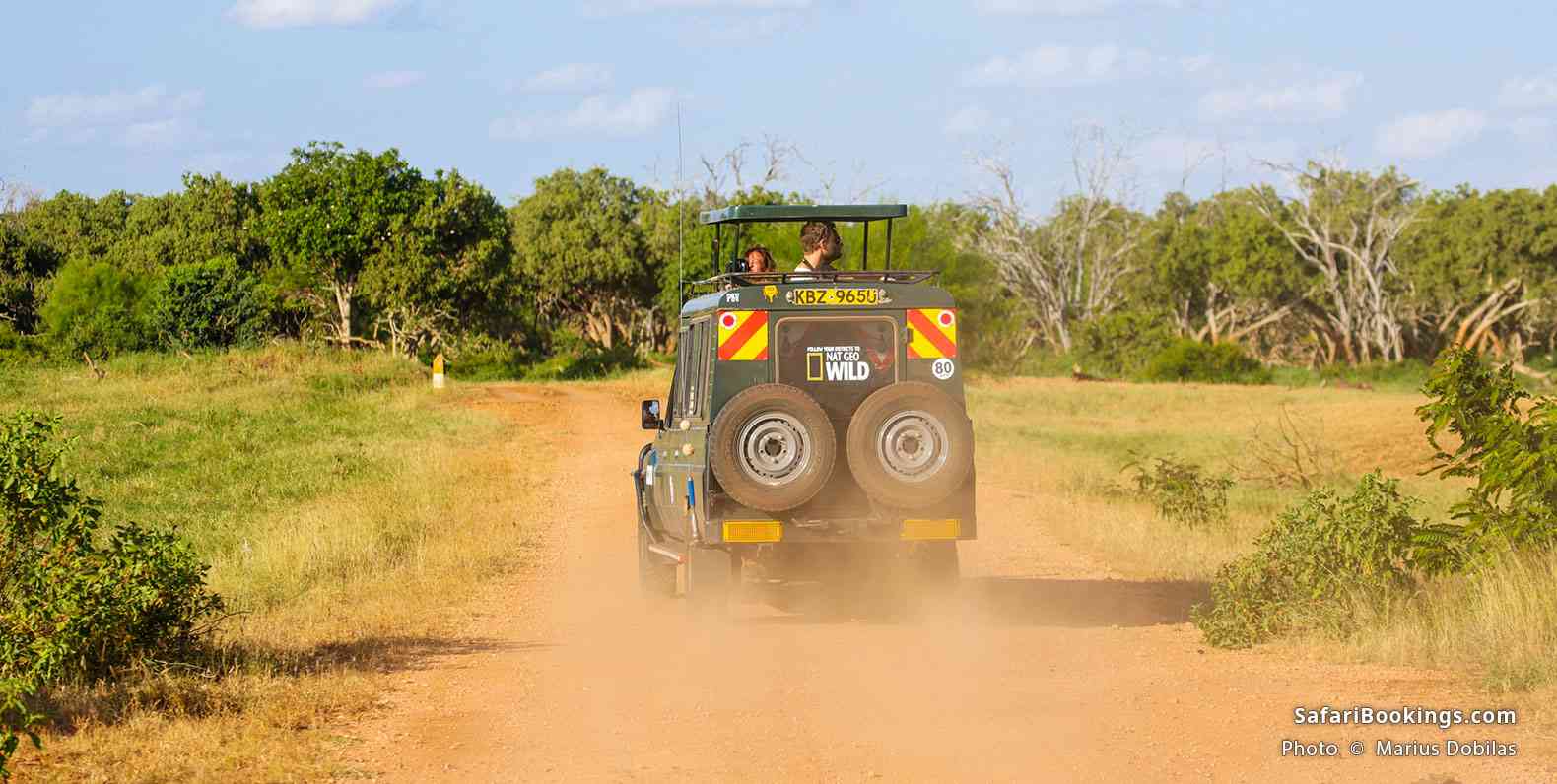
Should we tip, and if so - how much?? This is a common dilemma for most visitors to any foreign country! In Africa, tipping is not expected but is customary. The traditional gratuity to safari guides or camp staff is not included in the price of your tour and is completely discretionary.
Bear in mind that what may seem like an inconsequential amount to you may be significant to local African staff and will certainly be received with a display of gratitude that is genuinely humbling.
Most safari lodges will have a ‘tip box’ at reception for the staff – this covers all the ‘unseen’ services you have enjoyed during your stay, including the housekeeper and kitchen staff.
Guidelines: Tip moderately and in accordance with the level and quality of service provided – and only if you are satisfied with that service. Tips can be paid in US dollars or local currency. Use the following guide:
Driver/guide - US$10 and upwards per day. Private safari guide - US$25 and upwards per day; Camp staff - US$10 to $20 per day, as a pooled tip to be shared among the housekeepers, waiters, bartenders, etc.
If you spend a great deal of time with a single guide, consider increasing the above amounts in accordance with the enthusiasm and effort displayed (or your overall satisfaction level).
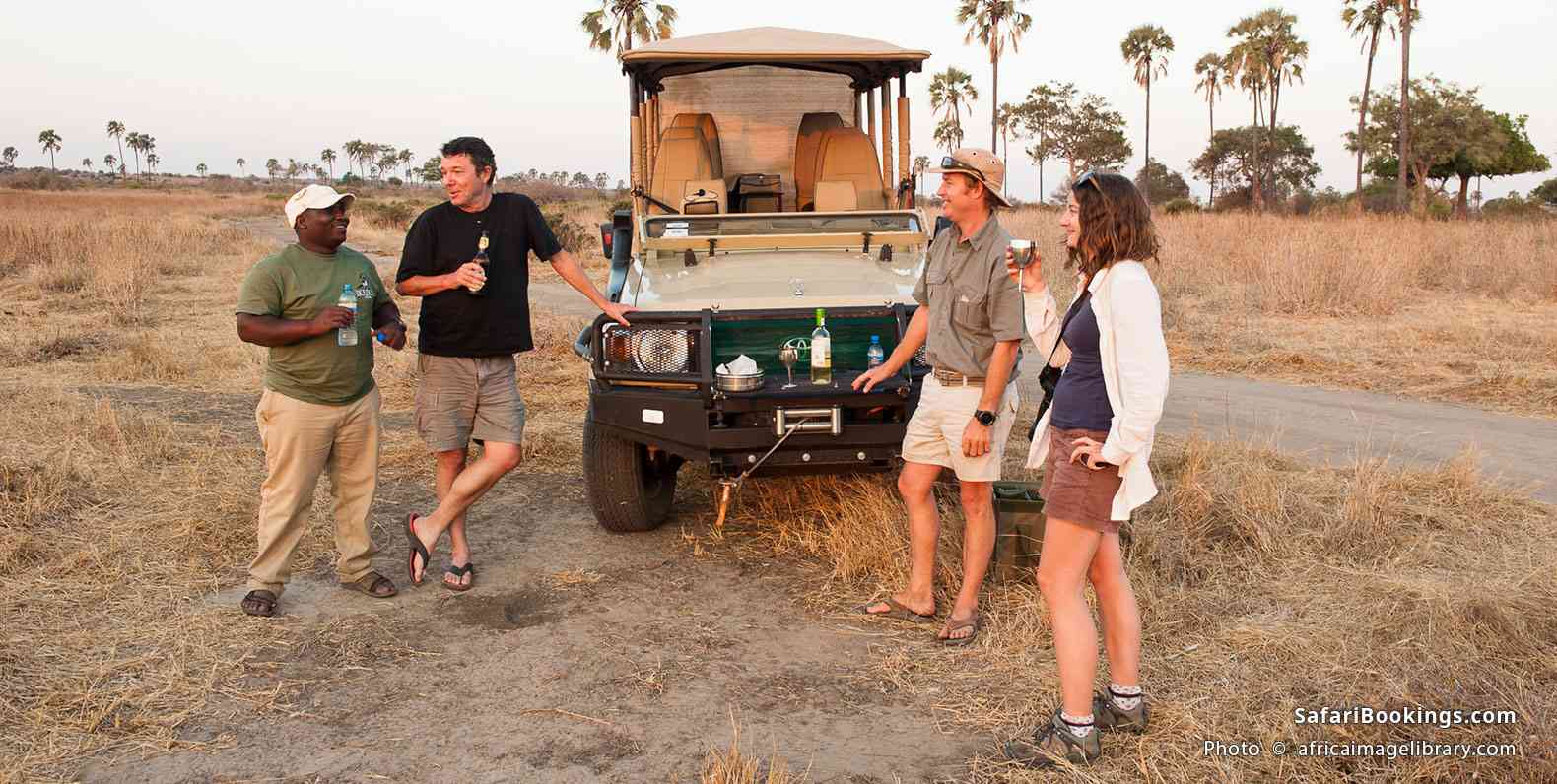
9. Charity on Safari
Many visitors to Africa feel a strong urge to help the less fortunate whom they encounter on a safari, or when visiting a local village or school. It is best to seek an appropriate opportunity while you are traveling, rather than carry along gifts from home. Many safari camps and lodges are actively involved in working with their local communities to sustain schools, clinics and other projects. Ask about this when you are there and visit the school, clinic or project if you can. A donation to something you have seen on the ground will bring you more satisfaction (and directly help the neediest). Contribute in a way that helps a person (or community) help themselves, and enhance their way of life.
Resist the temptation to offer ‘handouts’ to kids on the side of the road. This only encourages dependency on such generosity and teaches these children that begging brings reward. There is no dignity in begging and the harassment it fosters will not endear you to the next group of tourists either!
A rather fun idea is to gift a football (soccer ball). Africans love soccer yet not all the children have a ball with which to play. For more ideas, visit Pack For A Purpose website.
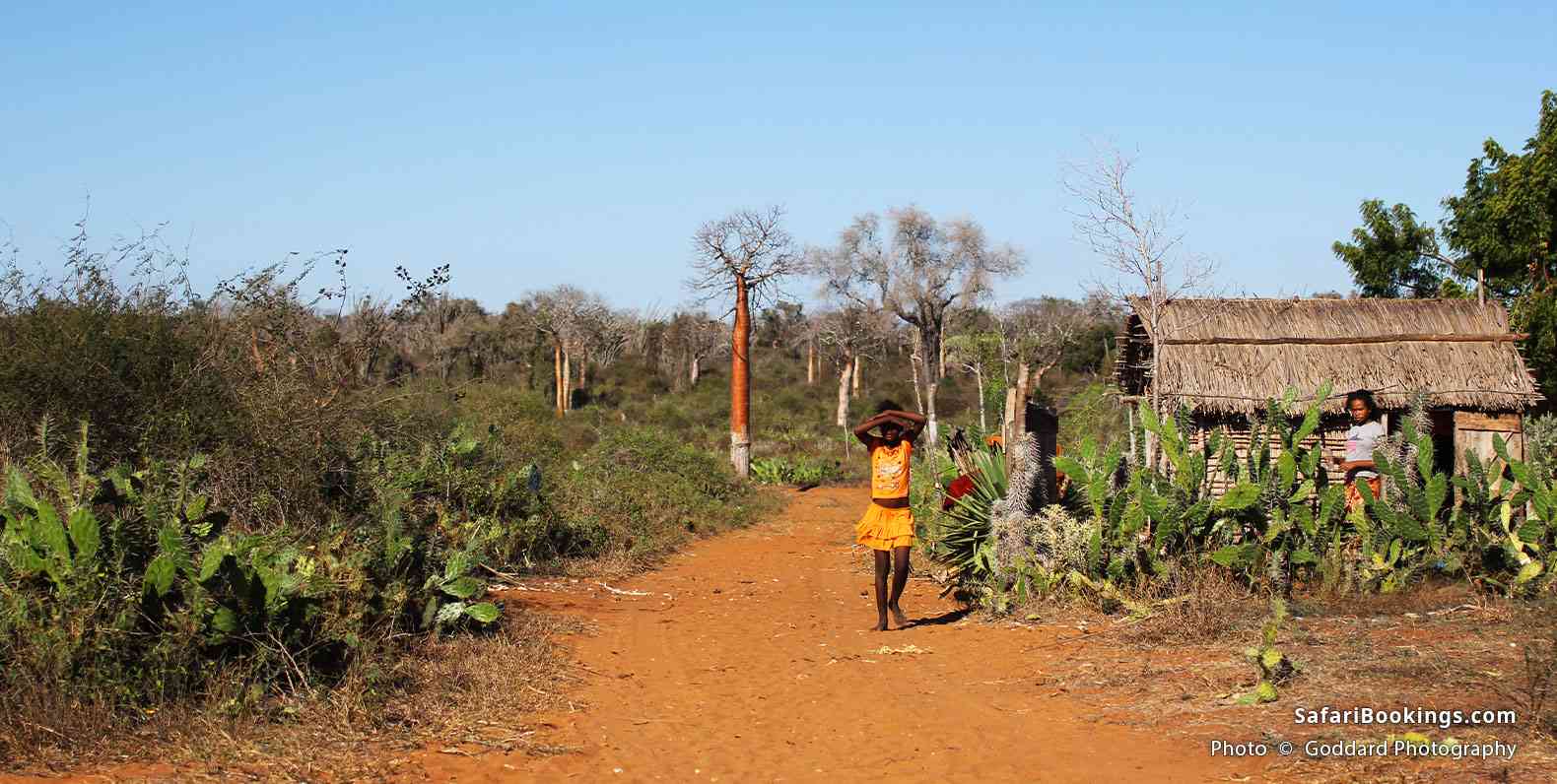
10. General
Most African countries have stringent exchange control regulations and it is illegal to enter or leave the country with anything other than nominal amounts of local currency. To avoid problems, do not exchange too much money into local currency at any one time. There is normally no restriction on the amount of foreign currency that may be imported.
Are You Ready for Your Safari Adventure?
We hope these 10 Travel Tips have been helpful to you. For more information or to book a safari tour , Contact Us . It is our pleasure to assist you with your safari plans.
Safaris & Tours
Post on Pinterest:

About SafariBookings
SafariBookings is the largest online marketplace for African safari tours. Easily compare offers from top-rated tour operators. Make decisions like a pro by using our 103,567 reviews and 223 destination guides. More About Us
Safaris by Type
- Luxury Safaris
- Budget Safaris
- Gorilla Trekking
- Chimp Trekking
- Family Safaris
- Private Safaris
- Group Safaris
- Photo Safaris
- Overland Tours
- Camping Safaris
- Fly-in Safaris
- Walking Safaris
- Birding Safaris
- Self-drive Safaris
- Canoe Safaris
Most Popular Blog Posts
- Best Time for African Safari
- Best Safari in South Africa
- Family Safari in South Africa
- African Safari Tips
- Game Reserves Near Cape Town
- What to Pack for a Safari
- Best African Safari Parks
- Top 5 Best African Honeymoon Safaris
- Top 5 Best Tanzania Family Safaris
- Best Places to See Cheetahs in Africa
- How Much Does an African Safari Cost?
- Best Places To Visit In Africa in 2024
Blog Categories
African safari tours.
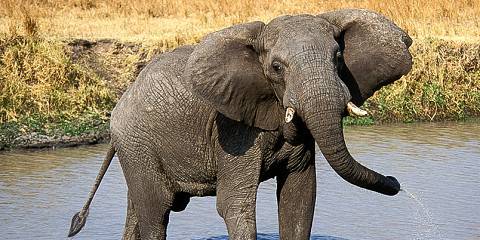
7-Day Experience Big Five Safari in Tanzania
$2,092 pp (USD)
Tanzania: Private tour Mid-range Lodge & Tented Camp
You Visit: Arusha (Start) , Tarangire NP, Serengeti NP, Ngorongoro Crater, Lake Manyara NP, Arusha (End)
Full Package Adventures
5.0 /5 – 61 Reviews

11-Day Serengeti and Zanzibar Safari
$3,905 pp (USD)
You Visit: Arusha (Start) , Foothills of Mt Kilimanjaro, Tarangire NP, Ngorongoro Crater, Serengeti NP, Zanzibar (End)
Safari Soles
5.0 /5 – 246 Reviews

7-Day Honeymoon Safari Adventure - Mid-Range
$2,019 to $2,057 pp (USD)
You Visit: Arusha (Start) , Tarangire NP, Serengeti NP, Ngorongoro Crater, Lake Manyara NP, Kilimanjaro Airport (End)
Kale Voyage Expedition
5.0 /5 – 14 Reviews
Where to go on your first safari in Africa

Feb 20, 2024 • 17 min read
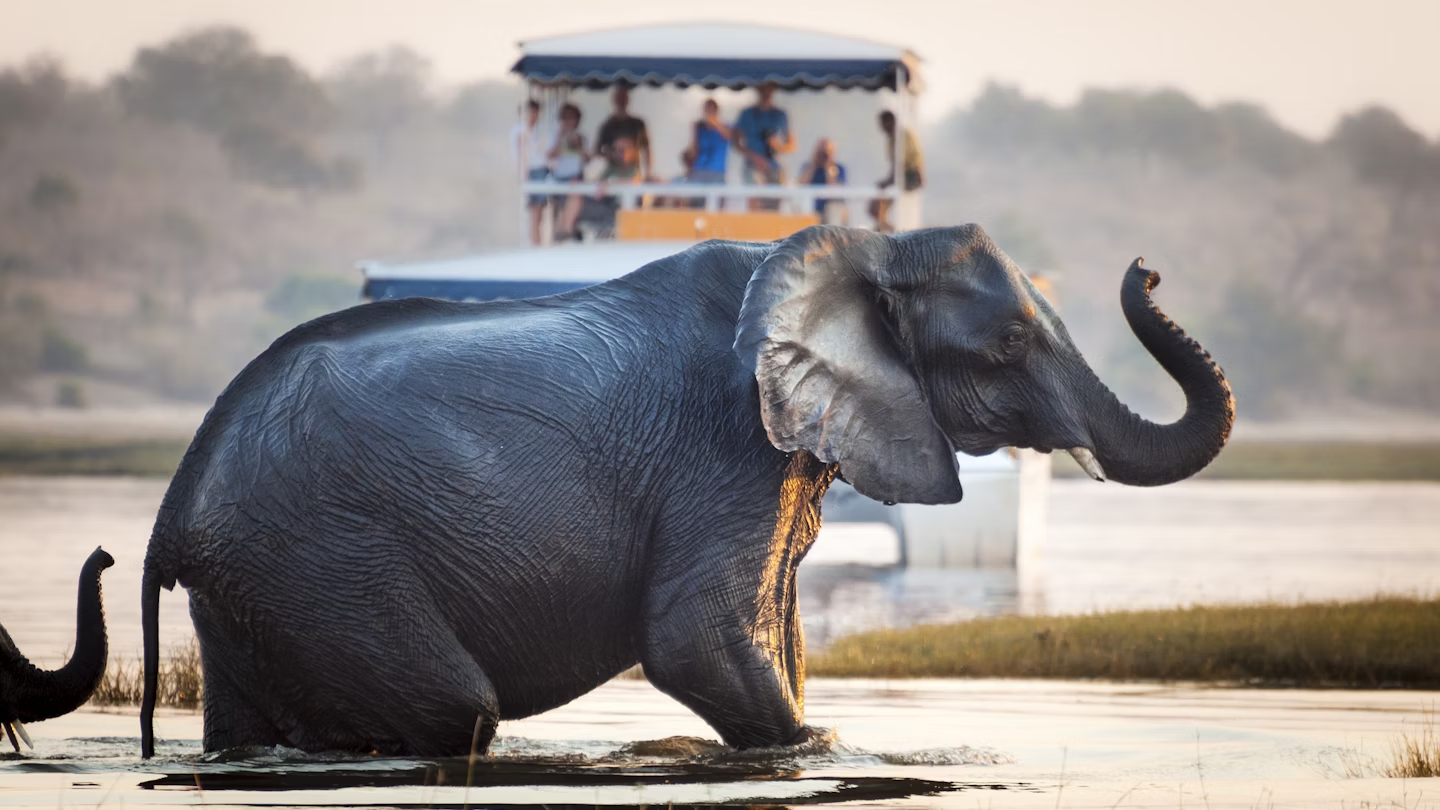
Botswana is an excellent choice for a well-rounded, first-time safari – though it can be a pricey one © Getty Images
So you want to see a lion in the wild? Terrific. Now comes the tricky part: choosing where to go on your first safari.
Which countries offer the easiest introduction to the continent for first-time travelers? Which countries are best for wildlife?
Let us help you cut through the overwhelming options and plan your first safari to Africa for blockbuster wildlife watching – without feeling overwhelmed.

Planning a safari in Botswana
Why botswana.
Water-based safaris, exclusivity, privacy and high-quality camps in captivating areas: Botswana is one of Africa’s premier wildlife-watching destinations. Its prolific wildlife inhabits extraordinary landscapes, including the Chobe River, the Okavango Delta and the salt pans of Makgadikgadi .
The easiest choice for your trip, Chobe National Park is home to the world’s largest concentration of elephants, as well as a host of easy-to-spot big cats, buffaloes, giraffes and zebras, making it perfect for first-timers. The best way to see Africa’s elephant capital is to board a boat and cruise the Chobe River’s wildlife-rich shores. From here, you can travel into the Okavango Delta, where you can splurge on a luxury safari and take a mokoro (dugout canoe) through the wetlands, before forging on into the Makgadikgadi salt pans to mingle with meerkats.
Botswana’s appeal and ease, however, come with a (big) caveat: the cost. To avoid the pitfalls of mass tourism, most luxury lodges and camps lie in concession areas rented out by the government to enforce a high-value, low-volume responsible-tourism strategy. The best reserves sit in the swamps of the Okavango Delta, and visitors fly in on small bush planes from Maun or Kasane. Mobile safaris – group trips that take you from site to site, often involving camping along the way – are a more cost-effective alternative: you can combine time in Moremi Game Reserve with Chobe National Park.
Best time to visit for a safari in Botswana
The high and dry season from June to October is the best wildlife-watching time , and also when water levels are generally at their highest in the Okavango Delta, allowing you to glide along the channels in a mokoro .
Where to stay on safari in Botswana
In and around Chobe National Park, we recommend Chobe Game Lodge , Chobe Safari Lodge and Chobe Bakwena , with Chobe Game Lodge being the only one inside the park. For photographers, Pangolin Chobe Hotel has specialist boats with swivel seats and gimbal mounts to snap that Attenborough moment on the Chobe River.
You can combine Chobe with the Okavango Delta through scheduled group mobile safaris with Bush Ways or Letaka . If you’re after a luxury experience in an exceptionally wild, isolated area, Mombo Camp is probably the Okavango’s most exclusive and legendary lodge, with predators galore (and a pretty price tag). Mma Dinare Camp (which offers affordable road transfers), 4 Rivers Camp , Shinde Camp and Camp Moremi are well situated for spotting excellent big game. Xugana Island Lodge , Setari Camp and Mopiri Camp are wonderful for experiencing the waterways, and offer fishing and birding opportunities by boat. Mogotlho Safari Lodge is also accessible for self-drivers, and occupies a lovely position on the Khwai River near Mababe. Want a more adventurous, budget-friendly option? Try a fully catered, accommodated mokoro campout excursion that departs from Sitatunga Camp , south of Maun.
Trips to meet the cute meerkats of the Makgadikgadi salt pans can be arranged through San Camp, Jack’s Camp or Camp Kalahari, with Planet Baobab as the best budget-friendly option with self-drive access.
Budgeting and costs for a safari in Botswana
Stays at isolated camps in the Okavango Delta start at roughly $650 per person, per night and can go up to an eye-watering $4000 a night. At approximately $300, Chobe National Park lodges are more affordable – so stretch out your days here to keep costs down. For better pricing on accommodations, travel during the shoulder season (April to May and October to November). Finally, check the distance between your luxury lodge and Maun to reduce the return-ticket cost. Some camps offer road transfers or boating access between camps to minimize travel costs.

Planning a safari in Kenya
Kenya ’s wildlife offering is outstanding, with the Great Migration in particular at the top of many bucket lists – so it’s no surprise that safaris have been a thing in Kenya since the very concept was invented (indeed, safari translates to “journey” in Swahili). Do keep in mind, though, that this track record does make Kenya one of the busiest, most popular wildlife destinations on the continent.
A renowned annual phenomenon, the Great Migration sees millions of wildebeest and zebras cross the Mara River from the Serengeti in southern Tanzania into Kenya’s Masai Mara National Reserve . The country’s semi-nomadic Maasai communities and their time-honored warrior traditions are another source of fascination. Visitors can support community-powered tourism by visiting the private reserves surrounding the Mara, which are leased to different safari companies. A guided bush walk with a Maasai warrior will let you experience this culture’s deep connection with the land.
The main safari circuit couples Lake Nakuru with the Masai Mara and Amboseli (where Mt Kilimanjaro provides a staggering backdrop). Tsavo West , Tsavo East and Samburu are popular add-ons, if you have extra time. Any combination of these parks should ensure ample sightings of big cats, plenty of elephants, a few rhinos and all of the plains animals, such as buffaloes, giraffes, zebras, and all manner of gazelle and antelope species. Want even more? Extend your stay by another week and scale Mt Kenya , Africa’s second-highest peak (after Kilimanjaro).
Most travelers just pass through Nairobi , staying long enough to visit Nairobi National Park . An extraordinarily well-stocked park on the cusp of one of Africa’s largest cities and easily accessible, Kenya’s original game reserve has wildlife in abundance, from lions, leopards, and buffaloes to the endangered black rhino and around 400 species of birdlife.
Generally, Kenya is viewed as a better choice for family safaris, those on a budget and those on a tight timeline.
Best time to visit for a safari in Kenya
July to October and January to February are the best times to see the Great Migration, when a million-plus wildebeest, along with hundreds of thousands of zebras and gazelles, cross the crocodile-infested Mara River to graze on the lush grasses of the Masai Mara. With unrestricted visitor numbers, some areas can get crowded.
Where to stay on safari in Kenya
Kenya has hundreds of excellent lodges and tented camps, standards of service from local staff are generally high, and tour operators are experts at the logistics of moving between national parks for each leg of your safari itinerary.
Cottar’s 1920s Camp has entertained guests in high style for over 100 years, while “gentle on the earth” takes on a whole new meaning at Emboo River Camp , whose team will have you floating through the grasslands of the Masai Mara in the region’s first electric game drive vehicles.
Good value but still luxurious, Ol Tukai Lodge sits within Amboseli Park, with views of Kilimanjaro from the bar; nearby Amboseli Serena Safari Lodge is a comfortable family-friendly option. In Nairobi, Giraffe Manor provides a memorable breakfast spread before a visit to the city’s park; all accommodations in the upmarket Karen and Langata areas are close to the main entrance.
Budgeting and costs for a safari in Kenya
Masai Mara National Reserve is the most wallet-friendly location for seeing the wildebeest migration. Despite having a shorter migration season, Kenya has more flights, more tourists, stiffer competition and a greater variety of affordable accommodations than next-door Tanzania. Expect to pay anything from $150 to $1000 per person, per night.
For a cheaper safari, book between the short and long rains (January to March), when prices are usually lower than during the peak season. Nairobi National Park charges $40 to non-residents for entry, while admission to Masai Mara is $80 for 24 hours if you stay outside the reserve, and $70 if you stay inside.

Planning a safari in Namibia
Why namibia.
Two reasons: self-driving independence and dramatic desert scenery. While a 4WD African safari is always an ambitious undertaking, Namibia has good roads, well-equipped campsites and reasonably priced rental vehicles. This is one of the easiest Southern African countries to explore from the driver’s seat.
The classic circuit starts in Windhoek , where you’ll rent a fully equipped 4WD camper van or a decent gravel-road car. From there, you’ll head to Sossusvlei in the Namib Desert for incredible vistas, circle up to Swakopmund for coastal adventures and end at Etosha National Park , where elephants, rhinos and giraffes strut their stuff.
Etosha is Namibia’s version of South Africa’s Kruger National Park, with roads and facilities suitable for a self-driving budget safari. Each public camp overlooks a busy water hole, where game moves in and out to drink during the dry season. The camp is floodlit by night, which means you won’t need to leave once you settle in.
Best time to visit for a safari in Namibia
Etosha is well-known for its productive water holes, and peak game viewing is from June to October, when wildlife flocks to these oases dotted throughout the park. This is also a cooler time of year to climb the dramatic dunes such as Dune 45 at Sossusvlei.
Where to stay on safari in Namibia
Arranging everything through the Gondwana Collection is hands-down the easiest and best way to organize a self-driving safari. This group has a portfolio of accommodations in all the key tourist spots, ranging from well-serviced campsites to glamping tents and swank lodges filled with character. Favorites include the quirky Desert Grace and Namib Dune Star Camp (with its alfresco beds) near Sossusvlei, and The Delight in Swakopmund. A sister company, Namibia2Go , offers car rentals with comprehensive insurance.
As an alternative, you can book campsites and chalets inside the parks with the government-run Namibia Wildlife Resorts . Okaukuejo Rest Camp lies inside the perimeter of Etosha and is the place to watch at the water hole.
Budgeting and costs for a safari in Namibia
At about $800, a full week’s vehicle rental is cheaper than a single night’s stay at a luxury lodge in the Okavango Delta. Due to the vast distances between destinations in Namibia, however, fuel expenses can add up fast. National parks and private campsites offer affordable camping fees, though luxury accommodations will (understandably) be more expensive. For camping, expect to pay $20 to $50 per person, per night for camping; for lodges, $100 to $300.

Planning a safari in South Africa
Why south africa.
Expect bush, beach and fine wine. From iconic Kruger National Park to the picturesque landscapes of KwaZulu-Natal , South Africa offers a safari experience that caters to all levels of adventurers.
Kruger is the easiest and most rewarding safari destination for first-timers and budget travelers. You can see the Big Five (lions, leopards, rhinos, elephants and buffaloes), as well as cheetahs, giraffes, African wild dogs and hundreds of bird species. Drive the park’s paved roads yourself if you’re on a budget, or visit private reserves like Sabi Sands or Thornybush for exclusive guided experiences, plus a better chance to see the Big Five in a short period.
Lesser-known reserves in KwaZulu-Natal are equally impressive. Hluhluwe-iMfolozi is just as accessible as Kruger from the city of Durban , and has excellent facilities for travelers on all budgets; expect to spot rhinos, elephants, buffaloes, zebras, giraffes and wildebeest. (The big cats are a little more challenging to see here.) Nearby Phinda Private Game Reserve offers stunning high-end stays – plus the possibility of a beach day or scuba diving at Sodwana Bay .
Madikwe Game Reserve in North West Province is close to the Botswana border and a four-hour drive from Johannesburg , making it popular for South Africans looking for a safari. It’s also a malaria-free option for families with young children.
Combine any of these safari parks with a flight south to Cape Town , and you’ll add fine wine, world-class restaurants and a seaside safari – visiting the African penguins of Boulders Beach – to your itinerary.
Best time to visit for a safari in South Africa
While South Africa is a year-round destination , most visitors love the cooler, dry season between May and August. During these months, wildlife is easier to spot as vegetation is more sparse and animals gather around water holes.
Where to stay on safari in South Africa
There are plenty of affordable self-catering rest camps in Kruger National Park and Hluhluwe-iMfolozi run by SANParks , the government parks agency. Kruger’s southern zone is prime game-viewing territory, with Skukuza , Lower Sabie and Letaba rest camps all favorites. Hilltop Camp in Hluhluwe-iMfolozi has terrific views, while Rhino Ridge Safari Lodge is a superb, privately run option that supports the local community.
Plush camps and lodges in the private reserves come with highly trained guides who can take you out on foot or by vehicle. You can’t go wrong at Saseka in Thornybush, Dulini in Sabi Sands, Tanda Tula in Timbavati , Jaci’s Safari Lodge in Madikwe or any of the &Beyond accommodations in Phinda.
Budgeting and costs for a safari in South Africa
Rates range from $100 to $200 per person, per night in government-run camps. Mid-range prices start at $300 to $700 per person, per night, with a corresponding bump in accommodation and guiding quality.

Planning a safari in Tanzania
Why tanzania.
Limitless plains, the epic migration and relaxing dips in the Indian Ocean. Tanzania ’s northern safari circuit includes the amazing Serengeti National Park and Ngorongoro Crater . Exploring these places for 10 days to two weeks is a sure way to fall in love with Africa. You should consider adding a few days on the island of Zanzibar (officially called Unguja) to make your dream trip even more memorable.
Tanzania and Kenya share similarities, both having plentiful wildlife parks and excellent safari operators. Tanzania’s vibe, though, is generally less stressful – perhaps due to the fact that the Serengeti is nearly 10 times bigger than Kenya’s Masai Mara, offering endless horizons and greater habitat variety.
In the heart of the Serengeti, the Seronera River provides big-cat and herbivore sightings year round, making it popular with visitors. Kogatende and Lamai, on the Mara River, are ideal for observing river crossings – with fewer tourists. Private reserves such as Grumeti allow viewings of the migration without the crowds (and for a price).
The Ngorongoro Crater is only a short drive to the east from the Serengeti. In this giant collapsed volcano (or caldera), animals like lions, elephants and black rhinos are enclosed as they prowl a complete ecosystem of pretty plains and dramatic forests. Note that such assets do draw the crowds in peak season.
Best time to visit for a safari in Tanzania
Plan a visit between January and March to witness the migration of wildebeest – and their newborns – passing through the Ngorongoro and Ndutu regions. (Get as early a start as possible to avoid day-trippers.) The best time to witness the famous wildebeest river crossings in the Serengeti is during the peak season, from July to August.
Where to stay on safari in Tanzania
Serengeti Serena Safari Lodge is an upmarket accommodation inspired by traditional Tanzanian architecture; its popular mobile-safari offering is Kiota Camp. Run entirely by women, Dunia Camp is a luxury tented property situated in prime lion territory. Ngorongoro Serena Safari Lodge is a great value-for-money permanent lodge conveniently located near the entrance to the Ngorongoro Crater. For an even more budget-friendly option, consider Bougainvillea Safari Lodge . For a different kind of stay, book a stay Gibb’s Farm , which is situated on a working coffee farm and offers campfire storytelling and other fun extras.
On the coast, Chumbe Island in Zanzibar/Unguja is a highly rated, ecofriendly property that offers sensational snorkeling in a protected marine reserve. In the historic heart of Stone Town , the best-value stay is Zanzibar Coffee House , dating from the 19th century.
Budgeting and costs for a safari in Tanzania
Expect to pay anything from $250 to $950 per room, per night, during your stay in Tanzania. Entry fees at Serengeti National Park for foreign tourists are $70 (peak season) and $60 (low season). To visit the Ngorongoro Crater, you’ll pay $250 for a vehicle, in addition to the same entry fee. These fees are typically included in organized safari packages.
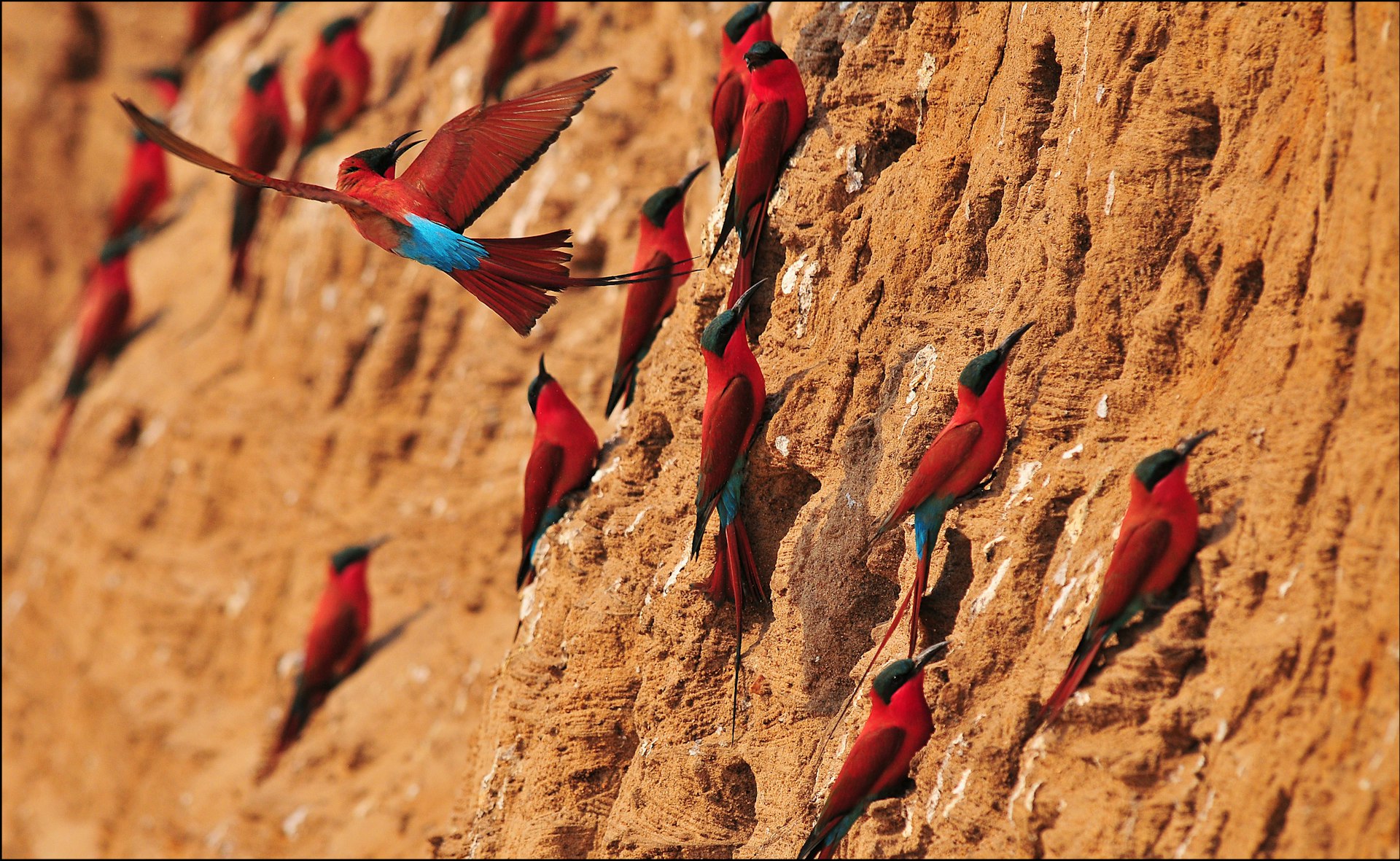
Planning a safari in Zambia
Why zambia.
Track rhinos, witness an awe-inspiring cascade and join a walking safari to experience nature up close. Indeed, Zambia is celebrated worldwide as the birthplace of the safari on foot, during which, under the guidance of two armed rangers, rhino tracking in nearby Mosi-oa-Tunya National Park will bring you close to these magnificent animals – only a taste of what’s to come at South Luangwa.
Livingstone , the tourist capital of Zambia, lets you gaze at another (non-living) marvel: mighty Mosi-oa-Tunya, better known as Victoria Falls . If the 935 cu meters (33,000 cu ft) of water that pours over the falls each second is not heart-pumping enough, there are plenty of other thrilling activities to enjoy , such as white-water rafting on the Zambezi River and bungee jumping (also available on the Zimbabwe side of Victoria Falls). During July and August, you can even take a refreshing dip in the natural infinity pool at the edge of the falls.
Several small and rustic camps in the Luangwa Valley cater just to walking safaris – a thrilling alternative to traditional game drives. These camps are mainly located in South Luangwa National Park .
Best time to visit for a safari in Zambia
Peak game viewing is from June to October, and Victoria Falls is at its best on the Zambia side from March to May.
Where to stay on safari in Zambia
Flatdogs Camp in South Luangwa National Park offers family-friendly luxury. In Livingstone, Jollyboys Backpackers provides a vibey base from which to explore town. The Victoria Falls Waterfront provides a free shuttle to the main event – but if you want to stay at the falls with unlimited access, the swish Royal Livingstone Resort is top-notch; the three-star Avani Victoria Falls Resort is next door.
Green Safaris operates a great circuit of camps in Zambia if you want to combine Victoria Falls with South Luangwa. Live the Robinson Crusoe life at Sindabezi Island Lodge on the Zambezi, and then head into the bush at Shawa Luangwa Camp . You can’t go wrong with walking-safari operators Time + Tide (its Kakuli is a classic camp that’s been open since 1950), or Robin Pope .
Budgeting and costs for a safari in Zambia
Consider getting the KAZA UniVisa , a special $50 pass that allows for unlimited crossings between Zambia and Zimbabwe, plus a one-day trip to Botswana (via the Kazungula border crossing), within 30 days. Budget $250 to $700 per person, per night for lodging.
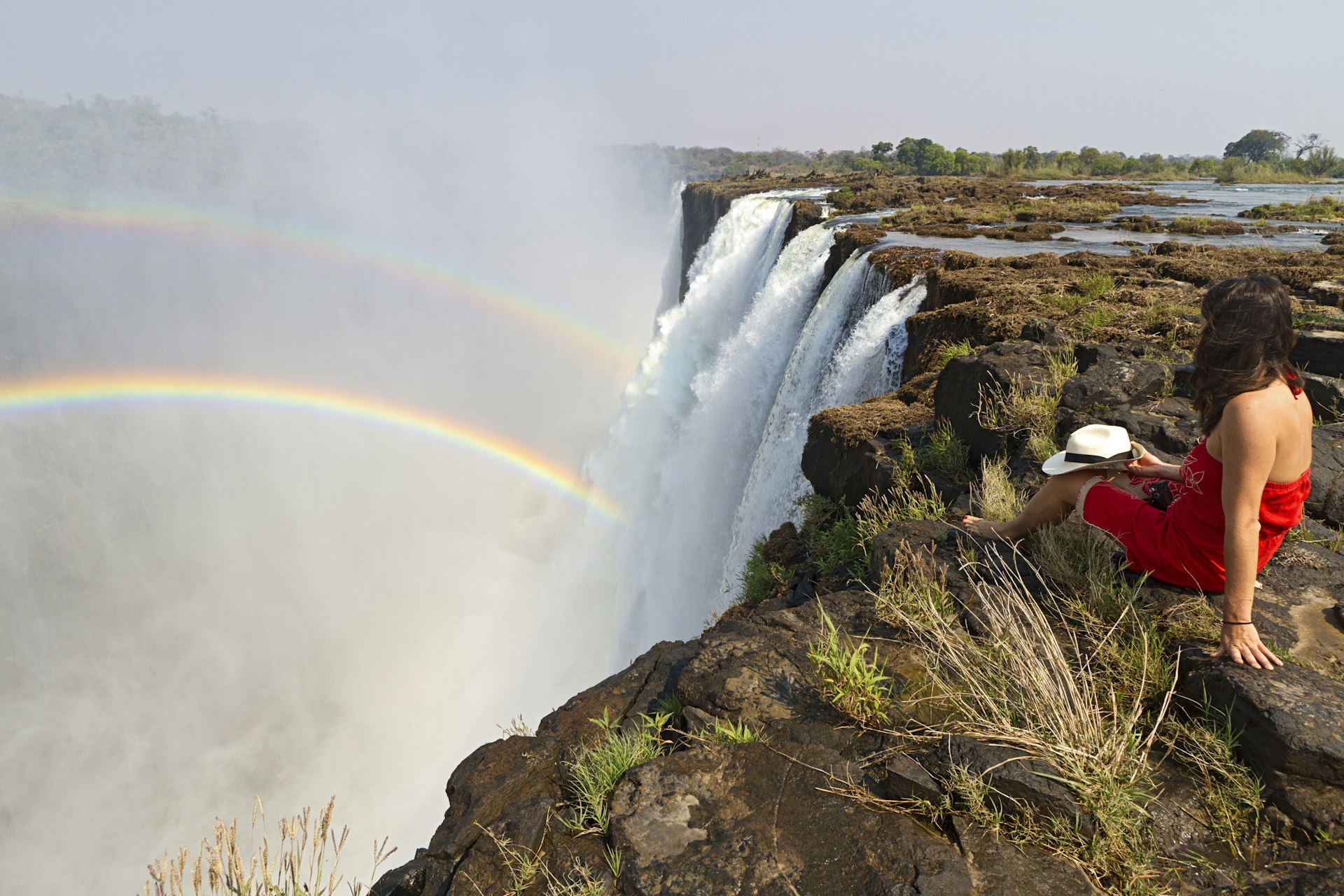
Planning a safari in Zimbabwe
Why zimbabwe.
The adventurous choice for a first-time safari, Zimbabwe has arguably the best guides in Africa. The easiest way to experience it all? Spend three days in Victoria Falls. Since it’s one of the country’s most popular tourist towns, you’ll find plenty to see, do and eat.
The meandering rainforest walkway in Zimbabwe is where the majority of Victoria Falls viewpoints lie. This is a better option for experiencing the falls during during the dry season (May to October), when water levels on the Zambian side lessen. On some evenings and during the full moon, Victoria Falls National Park in Zimbabwe remains open at night for dazzling stargazing.
After a day of adrenaline-fueled bungee jumping, white-water rafting, zip-lining or hovering in a helicopter above Batoka Gorge, afternoon tea at the Victoria Falls Hotel , served every day between 3pm and 6pm, offers some refined relaxation, as you share a tiered stand of pretty sandwiches and delicate pastries beside the manicured lawns. If this lies beyond your budget, enjoy a simple gin-and-tonic sundowner – or head to the Wild Horizons Lookout Café .
The wildlife around here is less prolific than nearby Chobe National Park in Botswana (which you can visit on a day trip or easily combine with Victoria Falls). Yet a boat cruise allows for spottings of hippos, crocodiles and the occasional elephant. A 45-minute flight or two-hour drive away, Hwange National Park is where you’ll find bigger game.
Best time to visit for a safari in Zimbabwe
There is fantastic wildlife viewing during the dry months, from May to October. Victoria Falls is at its peak from March to May.
Where to stay on safari in Zimbabwe
Victoria Falls Safari Lodge sits on a ridge and overlooks a water hole frequented by buffaloes and other beasts. Nkosi Guest Lodge is a pretty, upmarket inn, while Ilala Lodge Hotel is just a 10-minute walk from Victoria Falls. The Victoria Falls Hotel, the iconic grande dame, offers perhaps the best views. Further afield, you can ensconce yourself in the bush at Mpala Jena , about 40km (25 miles) upstream. In Hwange, The Hide , Camp Hwange and Somalisa are all visitor favorites.
Budgeting and costs for a safari in Zimbabwe
Entry to Victoria Falls is $50. With the wide range of accommodation options, you can spend $150 to $700 per person, per night.
This article was first published October 2019 and updated February 2024
Explore related stories
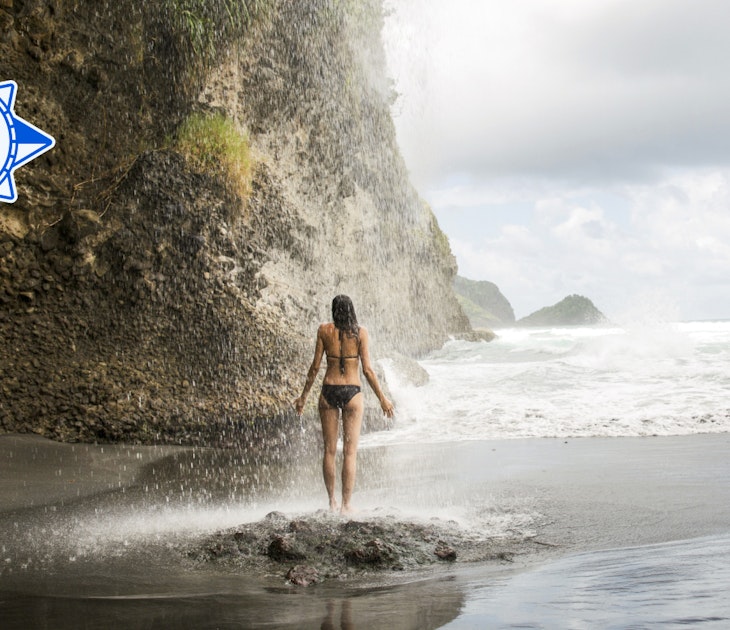
Wildlife & Nature
Feb 27, 2024 • 6 min read
April is the ideal time of year for mild-weather hikes, cherry blossom festivals, fresh produce and more.

Oct 16, 2023 • 9 min read
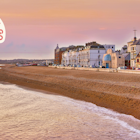
Aug 16, 2023 • 6 min read
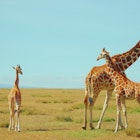
Aug 4, 2023 • 6 min read

Jan 2, 2023 • 12 min read
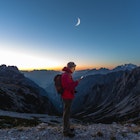
Sep 8, 2022 • 7 min read
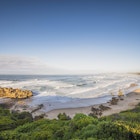
Dec 11, 2019 • 5 min read

Apr 25, 2024 • 7 min read

Mar 30, 2024 • 4 min read

Mar 20, 2024 • 8 min read

African Safaris On A Budget
11 ideas to make your next safari more affordable.
Are you wondering whether it is possible to do African safaris on a budget? The good news is that this is certainly possible.
It’s actually something of a myth that African safaris are always very expensive.
They certainly can be, especially if you stay in one of these luxury safari lodges in South Africa , but thankfully there are a number of tactics you can use to ensure your safari doesn’t cost you an arm and a leg.
The fundamental point of a safari, after all, is to experience the incredible wildlife Africa has on offer , and everything else is (mostly!) just icing on the cake.
This means that if you’re willing to strip back your overall safari experience to focus specifically on the game viewing aspect, your safari can end up costing an awful lot less.
Passing up on the champagne and hot tub – or even the air conditioning – doesn’t mean you’ll miss out on hearing the sounds of the savannah as you sleep, or spotting African animals up close in their natural environment.
However, finding an African safari on a budget will mean being flexible and willing to compromise – whether it’s on the country or national park you go to, who you book with, the time you go, and the standard and location of your accommodation.
With this in mind, here are our top 11 tips to make your safari budget stretch further:
1. Consider your destination carefully
The first step to finding an affordable African safari is to pick a destination to suit your budget.
East Africa tends to feature luxury safari lodges and relatively large park fees, making countries like Kenya and Tanzania less of a budget safari option. Check out these luxurious Kenyan safari lodges to get an idea of what we’re talking about.
Safaris in Botswana and Zambia are often very remote and sometimes inaccessible, increasing transport and transfer costs.
As a general rule, the most budget-friendly safari destinations are in Southern Africa. South Africa , Namibia , and Zimbabwe have plenty of fabulous safari options that are accessible, varied, and charge fees in local currencies rather than US dollars.
Roads and infrastructure in South Africa and Namibia, in particular, are very good, giving easy access to most parks.
2. Take a self-drive safari
Self-drive safaris are those where you rent a vehicle and drive independently, rather than having to pay for a driver and/or guide.
Some of Africa’s best safaris – including Kruger Park (South Africa) , Serengeti (Tanzania ) and Etosha (Namibia) – allow you to take your own car and guide yourself.
Aside from being a cheaper option, taking a self-drive safari one allows you to create your perfect itinerary, and change it whenever you like.
You make all the calls – what time to go on game drives , what routes through national parks, when and where to stop, and how long to wait at a waterhole, watching for game to appear.
Bear in mind that for some safari destinations you’ll need a 4WD car to have full access and get the best out of it, and there are some national parks – particularly in East Africa – where guides are mandatory.
Also, guides are in business for a reason – a good one will know the terrain and help you with spotting wildlife , what it’s all about!

Self-driving makes for an affordable safari
3. Compromise on accommodation
Whilst safari accommodation is often at the luxury end of the scale (with prices to match), there are a few options to help deliver your safari on a budget.
Given that accommodation is such a large portion of the overall safari cost, compromising on accommodation can help to reduce safari costs dramatically.
Try camping
Most national parks in Africa have one or more campsites, and Southern African national parks, in particular, are well set up with public camping options.
These can range from a campsite with electricity and barbecue facilities, restaurants, and onsite waterhole to a simple space in the wilderness to pitch a tent.
For most campsites, you’ll need your own tent, but there are some parks that hire basic tents per night.
Camping also gives you the option of taking your own food and self-catering. However, in some places, perversely, camping with your own tent is actually more expensive than the accommodation on offer, so make sure you do your research.
Stay outside the national park
There is often a handful of budget accommodation close to park gates, servicing day visitors and those looking for a budget safari experience. Staying outside the park and driving in early for a morning game drive (or even a full day) will more often than not mean a much wider choice of accommodation and prices.
As some national parks charge an entrance fee plus a concession if you stay overnight in the park, staying outside the gates means you won’t incur this additional concession.
One of the downsides of staying outside of the park is that you won’t be able to participate in night drives or pre-dawn games. Alongside this, the further from the park you stay, the longer the drive before you even start your game drive – something to factor in to your plans.
4. Take your safari in rainy or shoulder-season
If you’re planning on using a tour company or agency to arrange your safari, you’ll find that the time of year you go will affect the price of the package – in some cases quite dramatically.
The same is true of booking directly with a safari lodge.
In safari destinations, low season typically coincides with rainy season, meaning the cost of safari tours and accommodation falls considerably.
This makes rainy season a great time to consider swapping sunshine for an upgrade to more luxurious accommodation and still making a large saving.
Aside from potential issues of comfort and visibility on game drives in rainy season, the primary downside is that wildlife can be harder to spot.
This is because the rain promotes heavy growth of grasses and undergrowth, and at the same the abundance of water and food allows wildlife to disperse.
Rainy season also means some areas may become inaccessible due to poor roads and flooding.
There are plus sides to taking a safari in rainy season, however, apart from the considerable cost savings. The rains bring lush landscapes and scenery, and dramatically fewer crowds vying for the wildlife spotting opportunities.
Rainy season also coincides with calving time for many of Africa’s herbivores, which can be a spectacular sight.
See our guide on when to go on safari where for an idea of wet and dry seasons by country.
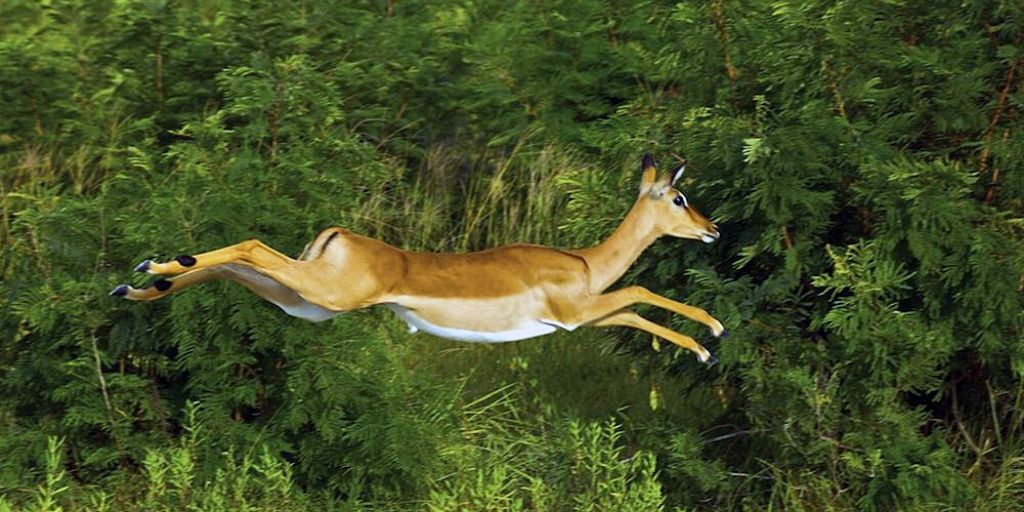
An impala leaps through the lush green vegetation in rainy season
5. Focus on just one national park or game reserve
Many safaris involve visit a number of different national parks and/or game reserves to experience a range of habitats and wildlife. Stripping this back to focus on just one park is a great way to cut down costs on vehicle rental, flights, or transfers.
This means making the call early in your safari planning process on what wildlife you really want to experience, then figuring out to the best place to go.
If you want to see the Great Migration then consider visiting just the Serengeti or the Maasai Mara .
If the big five are top of your safari bucket list, then pick just one park which is renowned for reliable big five sightings, like Chobe National Park in Botswana , Etosha National Park in Namibia or Kruger National Park in South Africa .
6. Heading to East Africa? Consider hiring a driver-guide
It may seem counter-intuitive, but in East Africa hiring a driver-guide for your safari can actually save you money – particularly if there are more than two of you.
With a private driver-guide, you get the exclusive use of a 4×4 or safari minivan vehicle for your group, with the driver also acting as a wildlife spotter.
How can this option save you money? Well, not only do you save on any transfer costs, but you’re able to stay at your lodge on a board-only basis. Not arranging your game drives via the lodge can end up saving you sizable amounts.
This is an option where you’ll have to do the maths of booking directly with lodge vs hiring a driver-guide.
7. Book with a local operator
Local safari operators typically offer better rates than international companies, so choosing a local operator can be a good option to keep costs down – particularly in East African destinations such as the Serengeti and the Masai Mara. ( See our list of safari operators by country. )
Making advanced bookings with local operators can be difficult, but if you can make it to your desired safari destination – and have the time to wait a day or two before taking a safari – you’ll have a much better chance of finding a bargain.
There are often cancellations or people changing their dates, meaning safari companies have last-minute places to fill.
You can take advantage of this by heading to the closest town to the national park and doing a tour or safari companies, explaining what you’re after, and giving them your contact details.
You may also be able to find other people who are looking to do a safari and arrange to share vehicle hire and guide costs with them. Which leads nicely on to…
8. Join a group safari
A group safari can be anything from a day-long minibus tour to one of the large overland companies travelling Africa’s highlights for weeks on end.
While not for everyone, group safaris are a great option for keeping accommodation and transport costs down. They also provide an opportunity to interact with other safari enthusiasts – which could be good or bad, depending on your point of view, and the individuals concerned!
The obvious downside of a group safari is that when travelling in a group there is a fixed itinerary, which can be restrictive.
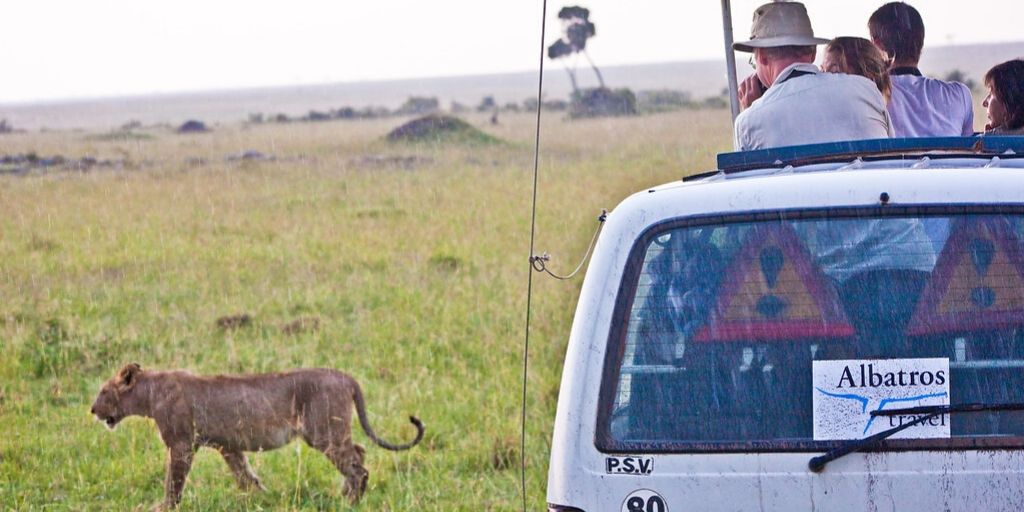
A safari group encounters a female lion
9. Plan your food and drink
Restaurants in safari lodges are notoriously expensive if you’re not staying on an all-inclusive basis, and it’s fairly standard for there to be no shops for supplies inside national parks.
As such, taking enough water to cover your time on safari is a good option to help you do your African safari on a budget. Perhaps also take something alcoholic for a sundowner along with some snack-type food.
Depending on where you’re on safari it can be worth leaving the park for meals, providing this doesn’t cut into your game drive time. If you’re camping then you can do the whole thing self-catering, and stock up before you enter the park.
10. Don’t be afraid to negotiate!
Whilst park fees, guide fees, and vehicle fees are non-negotiable, hotels and tour companies are often open for negotiation.
Having a group of people (three or more) means you may have some bargaining power… if you don’t ask you don’t get!
11. Keep your eyes open for deals
Something of an obvious one to finish our tips for arranging a budget African safari, but it’s well worth keeping your eyes peeled for offers at any time of year.
You can do this by signing up to email newsletters from safari lodges and tour operators, or by following them on social media.
When demand is low, lodges in particular often run short promotions such as 3 nights for the price of 2, or extra game drives included.
If you’re flexible enough to go to a safari lodge or destination you hadn’t previously considered, you might find that the deal on offer is special enough to go ahead and make that booking!
And that’s your lot for tips on making your safari more affordable. Do you have any tips on this topic? Please do let us know in the comments below – sharing is caring!
Top countries for safaris
- Botswana safaris
- Kenya safaris
- Namibia safaris
- South Africa safaris
- Tanzania safaris
- Uganda safaris
Safari basics
- Safari animals
- How to find the right safari company
- When to go on safari
- What to take on safari
- Safari clothing – what to wear
- Safari rules & etiquette
- Wildlife spotting tips
Most read articles
- All about the ‘big five’ animals
- Collective nouns for animals
- Safari movies to watch before you go
- The world’s fastest land animals
- Apex predators
- 10 Fascinating African tribes
- The biggest animals in the world
- 17 Epic hybrid animals
- The world’s ugliest animals
- Why are flamingos pink?
Africa’s best game reserves
- Chobe National Park, Botswana
- Etosha National Park, Namibia
- Kruger National Park, South Africa
- Masai Mara National Reserve, Kenya
- Moremi Game Reserve, Botswana
- Okavango Delta, Botswana
- Serengeti National Park, Tanzania

Session expired
Please log in again. The login page will open in a new tab. After logging in you can close it and return to this page.

Safari Photography: Tips, Best Cameras and More
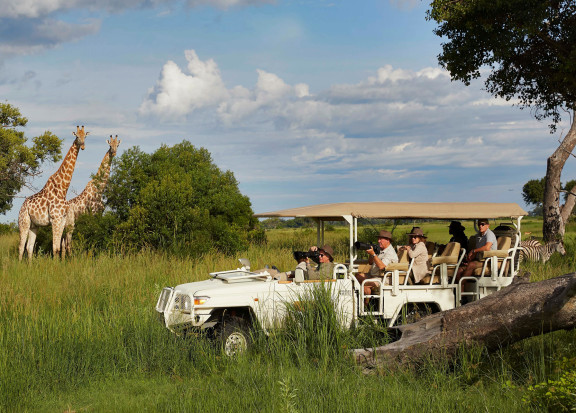
Africa’s emerald savannahs, a thick-maned lion silhouetted against a fiery sunset, elephants meandering by a serene waterhole or the intense gaze of a leopard concealed in the underbrush — these are moments that avid travelers and photographers dream of capturing. Safari photography isn't just about snapping pictures; it's about immortalizing the raw beauty, power and fragility of the wild. And, it offers a unique challenge, melding the unpredictability of wildlife with the nuances of an untamed environment, making safari photography distinct from any other photographic genre. Whether you're preparing for your first luxury safari adventure or seeking to elevate your existing skills, this chapter will guide you through the maze of best practices, camera equipment choices and insights that can transform fleeting encounters into timeless images you’ll treasure forever.
Safari Photography Tips and Techniques
Capturing high-quality images is a must on your luxury safari. They serve as priceless, tangible memories you can showcase in your home and look back fondly on years after your journey. Of course, snapping the perfect photograph of the effervescent African landscape and thriving wildlife is no small feat. No matter if you’re exploring the lush jungles or the sweeping savannah, Africa’s wild landscape is constantly in motion. The sun, shadows and moving creatures can make it difficult — but far from impossible — to take a great photo. All of this is to say that safari photography differs from your typical portrait session. And to help you along, many safari guides are themselves experienced photographers with an in-depth lived knowledge of the hows and whens of wildlife photography. However, you don’t have to be a professional photographer to take stunning pictures on your safari with these tips:
- Let the sun be your storyteller. Lighting can drastically affect your image quality, but there are no ring lights to be found on Safari. Furthermore, flash can appear unnatural and disturb wildlife.
It’s best to let the sun be your guide. The golden hours of dawn and before dusk provide the ideal light conditions for your photography. Embrace the magic of the golden hour as the sun paints the world in an amber palette and find beauty in the shadows.
- Respect the rhythm of the wild. Patience is key on a luxury African safari and the same is true for photographing wildlife. In the canvas of the wild, moments unravel at their own pace and you simply can’t rush nature. You may not get that “perfect shot” on your first day on safari, but you will certainly capture amazing moments and vignettes you didn’t know you were looking for.
The heartbeat of nature should guide your shutter and not be rushed. Each photograph is a testament to your patience and profound connection with the wild.
- Follow the rule of thirds. Simple photography tips can help you capture an impactful image. The rule of thirds is perhaps the most well-known “rule” of composition that helps transform a simple photo into a work of art.
While balance and composition are key, you can also discover new perspectives with your photography. Let nature inspire unique angles and heights in your photography.
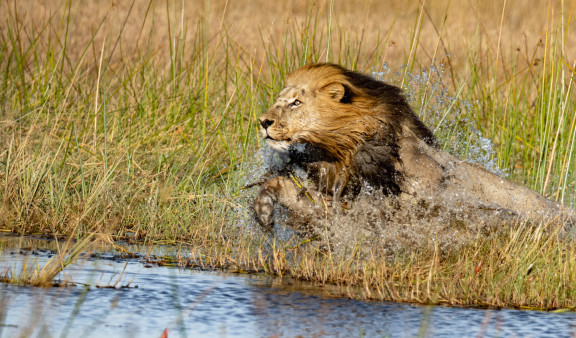
Best Cameras for Safari Photography
When you want to capture the essence of the untamed world, a smartphone, although convenient with a good camera, doesn’t quite do it justice. While you can certainly snap memorable moments on your phone to share with family and friends, nothing compares to a high-quality camera.
For outdoor photography and capturing wildlife in particular, enthusiasts and professionals alike often choose between two types of cameras: DSLRs and Mirrorless. Experts agree both have distinct advantages for taking wildlife photos and can be good options.
DSLR cameras offer fast shutter speeds to capture wildlife on the move. They also tend to be larger and have a longer battery life, ideal for a long day in the bush. However, Mirrorless cameras have come a long way and are often preferred for travelers on the go. They are more compact with an equally fast shutter speed and amazing image quality.
Ultimately, the choice is what you are more comfortable with.
Regardless of the type of camera you choose, keep these tips in mind for capturing the best photographs:
- The best lens for safari photography is a long one. A long lens allows you to capture high-quality images of wildlife from yards away on a game drive. You can switch to a wide-angle lens to better capture sweeping landscapes.
- Fast shutter speeds are a must for capturing moving animals or taking pictures from a moving safari vehicle.
- Get to know your camera settings . Many wildlife photographers consider aperture priority mode the best camera setting for safari photography. This allows you to capture properly exposed images of moving animals more easily while still allowing for a lot of manual control. Settings like autofocus also help immensely.
- To continue preserving priceless moments, you should take care to maintain your camera on safari. Keeping dirt and dust off your lens and preserving battery life is perhaps most important in the bush.
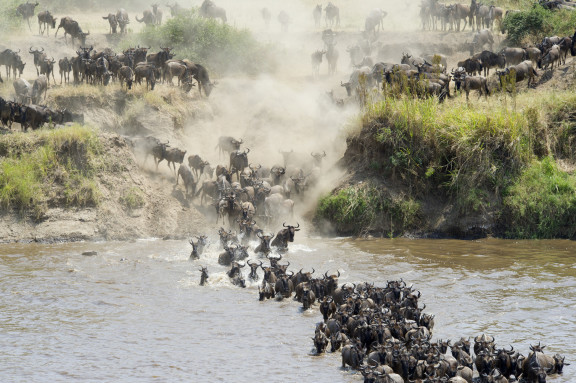
Essential Accessories
Finally, we cannot overlook the importance of the accessories that can elevate your safari photography. While it’s important to pack light for a day in the bush, these few additions can truly transform your images and overall experience.
- Binoculars: A pair of high-quality binos, often provided by your guide on safari, deliver an enhanced view of wildlife from yards away and the opportunity to see colorful birds in detail. This enhanced view allows you to spot the perfect image.
- Tripods and monopods: Stabilize your shots and snap stunning images of sunsets and landscapes. Also ideal for long-exposure images of the stars.
- Camera bags: Protect your equipment from the elements or wandering hands when not in use.
- Filters: Enhance colors and reduce glare during your photography session.
- Spare batteries and memory cards: Be prepared for long shooting sessions on your game drive.
Consider an African Safari Photography Tour
It can feel daunting trying to capture the untamed heart of Africa’s wilderness through the lens. A specialized luxury safari photography tour can help you capture the perfect shot on your trip. On a Tanzania photography safari, you can snap stunning pictures from high above in a hot air balloon. Or, keep things classic on a Kenya photography safari to take action-packed photographs of the Big 5. On a luxury safari photography tour, you will have the time and resources to take priceless images with the help of experienced guides who know the landscape inside out. Explore more of our Kenya photography safaris and more destinations where the opportunity to capture epic images awaits with ROAR AFRICA.
Subscribe to receive the latest updates

Contact Details
Connect with us, press inquiries, general inquiries.


- Ready-made safaris
- Experiences
- Special offers
- Accommodation
- Start planning
- Booking terms
- When to go on safari - month by month
- East or Southern Africa safari?
- Solo travellers
- Women on safari
- Accommodation types & luxury levels
- General tips & advice
- All stories
- Afrika Odyssey Expedition
- Photographer of the Year
- Read on our app
- 2024 entries
- 2024 details
- 2024 prizes
- 2024 entry form
- 2023 winners
- Collar a lion
- Save a pangolin
- Rules of engagement
- Job vacancies
- Ukuri - safari camps

Safari tips: Tipping while on safari
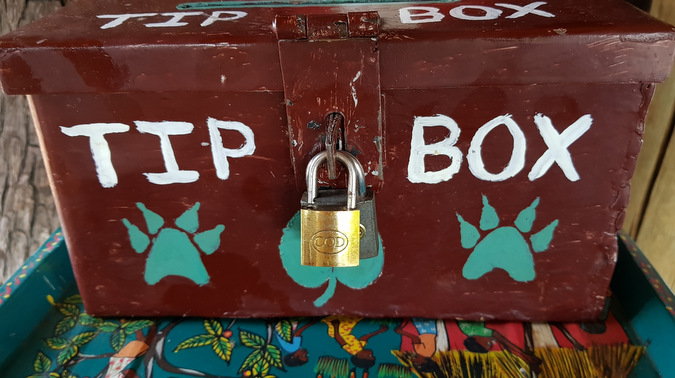
The simple act of tipping can be an anxious moment for many people while on safari, and the subject of much discussion and seeking advice.
We like to reward excellent service, but hate being worked over for a tip. Your tip can be empowering for all concerned and adds to the value that we all provide as safari-goers in Africa’s rural areas. Your tip does make a real difference, where it counts. On the other hand, there is nothing worse than lodge staff hovering expectantly nearby while you check out.
So, here then are a few ‘tips’ from some of our team and from safari clients about this prickly issue:
• “I tip only when I receive excellent service, and when I feel that the person has worked hard, going beyond the call of their job. And a happy smile also works for me. This firm line helps me avoid the stress of being undecided”;
• “I tip lodge/hotel staff at the end of my stay, to a communal tip box which many lodges have, or in an envelope handed to the manager. I do not tip porters and waiters for ongoing chores like carrying bags – unless there is no communal tip box, in which case I tip US$1 each time. I always ask lodge management beforehand about tipping, so that I follow the correct procedure for that lodge”;
• “For group safaris, it’s often a good idea to pool tips. I have seen some groups arranging a fun presentation at the end of their stay – which is a great idea. Some people in groups prefer to tip directly, and that’s also fine”;
• “I usually tip about US$15 – $20 per day of my stay to lodge staff (to be shared by them, usually via a communal tip box system), and an additional US$15 – $20 per day to my guide and tracker (handed directly to them and shared by them). Sometimes I also give my bird book to my guide – if he is interested in birds, and if he does not have the latest version”;
• “One golden rule: Never tell your guide/tracker that the tip is dependent on them finding specific species. This is unfair and may encourage bad behaviour and damage to the environment and wildlife”;
• “I give my tips in new, unblemished notes – many banks do not accept damaged notes and many do not accept US$ notes that are older than 2013. Also be aware that some banks reject less commonly encountered currencies such as Yuan, Rubles and Rupees”
Lastly, remember that tipping is entirely at your discretion. There are no rules, only guidelines.
For accommodation options at the best prices visit our collection of camps and lodges: private travel & conservation club . If you are not yet a member, see how to JOIN below this story. Also, go here to see some of our popular ready-made safari options .
HOW TO GET THE MOST OUT OF AFRICA GEOGRAPHIC:
- Travel with us . Travel in Africa is about knowing when and where to go, and with whom. A few weeks too early / late and a few kilometres off course and you could miss the greatest show on Earth. And wouldn’t that be a pity? Browse our ready-made packages or answer a few questions to start planning your dream safari .
- Subscribe to our FREE newsletter / download our FREE app to enjoy the following benefits.
- Plan your safaris in remote parks protected by African Parks via our sister company https://ukuri.travel/ - safari camps for responsible travellers
We're an eclectic pack of safari experts, storytellers, admin and tech nerds and digital natives whose sole mission is celebrating Africa and doing good. We do this by creating life-changing, responsible safaris just for you, publishing informative, factual articles about Africa's incredible natural wonders and raising donations for worthy causes. This MANIFESTO explains our approach to travel and conservation.

Friend's Email Address
Your Email Address

IMAGES
VIDEO
COMMENTS
First Time Safari Tip #3: Now! Now! Anyone familiar with "Africa time" will understand that there are several meanings to the word now. There is "now," "just now," and "now now." "Now" could mean anywhere from five minutes to two months later. "Just now" means in the next hour or so.
15. Be Medically Prepared. Being medically prepared is one of the key African safari travel tips for first-timers. Before your trip, make sure you visit a travel clinic or consult with your healthcare provider, and check the CDC's recommendations to ensure you are up to date on any recommended vaccinations.
3. Be on the look-out to spot the wild animals. One of the important tips for an African safari for first-timers is to always be on the lookout while game-driving. Safaris are absolutely different from zoos which means that you can drive a long journey without seeing the big fives.
Tip #7: Know the safari daily schedule. Before you head out on your African safari, it's a good idea to get a sense for how your days will be scheduled. Most often, your daily schedule will be planned for you, so having a rough idea of each day's activities will help you with packing and planning.
For many, a safari represents the optimal escape and lifelong travel dream. If you're going to invest in turning this dream into reality, there are some things worth considering. Plus, we ...
Our Top 10 Essential African Safari Tips — ALONG DUSTY ROADS. You first ever safari should bring you tears. The experience of witnessing creatures and beasts, part mythical, part prehistoric and becoming fewer in number each decade, literally six feet in front of you with no cage, barrier or interlocutor is something which should stir, emote ...
Safari Tips. 1. Be open-minded and flexible. Every safari drive is unique and therefore unpredictable, so try not to stress about the things you cannot control. Sometimes you won't see much, sometimes you'll see a lot, sometimes the ride will take longer than expected, and sometimes it will be tougher than expected.
3. Best time to visit. The best time of the year for safaris is during the dry season. Indeed, in the rainy season, water and food are plentiful. Animals tend to be more dispersed throughout the parks and game reserves. Also, grass is much longer in some areas, making it more difficult to spot the wildlife.
In general, the greater the magnification, the narrower the field of view. For an African safari, choose a pair with a field of view of at least 330ft at 1000 yards. 5. Magnification Power. Binoculars are fitted with a series of numbers, like 8 x 42 or 10 x 50. The first number represents the magnification.
Safaris in Africa. What kind of safari you'll have depends on your budget. You can easily spend anywhere from $2000 to $15,000 on a one-week safari. Namibia and South Africa are the cheapest countries to go on a safari in, while Botswana and Tanzania are the highest.
Yellow Fever vaccination card. COVID-19 vaccination card (CDC cards were accepted in both countries) First things first: Make sure your passport has six months of validity past your arrival date in Africa. Kenya and Tanzania both require travelers to have six months of passport validity to enter the country.
Plan For Your Visas. After you decide where to go for your safari in Africa, you should consider visa requirements for the destination. As Americans, we can enter South Africa, Namibia, and Botswana visa-free. Zambia and Zimbabwe both require entry visas, but this can be done on arrival at the airport or land border.
After upgrading to a 200mm lens on my second safari trip, we wished we had a longer lens, such as 600mm. Having a small tripod or a beanbag is helpful when taking pictures from the safari jeeps. A bigger tripod was impractical except at the lodges. Bring extra batteries and camera cards with you while out on safari. Visas and Vaccinations
1. Choose Where You are going on Safari. Africa is a huge continent and there are so many places to go on safari. The main places for an African safari are in Kenya, Tanzania, and South Africa. Other amazing places for safaris in Africa are Botswana, Zambia, Uganda and Zimbabwe.
Whether this is the one and only safari you ever plan to take or this is just one of many, we know you want to have an amazing African adventure. No matter what, this isn't a small trip, and you deserve to get everything you want out of it. So, to make sure you have a fabulous experience, here are our tips and tricks for making the most of ...
Tans, light greens, and browns are your best bet. There will be bumps in the road: I literally mean this one. The jeeps are all-wheel drive for a reason. My husband brought dramamine. I packed extra sports bras. Dinner dress code - safari casual: Even at the highest end lodges, you don't need to dress up for dinner.
At SafariBookings, we know this only too well. That's why we want to equip you with some of our tried and true Safari Travel Tips. They will help you plan a safari without any mishaps. 1. Travel Insurance. As soon as you confirm your travel plans, take out travel insurance. Select a policy that covers cancellation, medical illness, emergency ...
Budgeting and costs for a safari in Botswana. Stays at isolated camps in the Okavango Delta start at roughly $650 per person, per night and can go up to an eye-watering $4000 a night. At approximately $300, Chobe National Park lodges are more affordable - so stretch out your days here to keep costs down.
After many years of exploring every nook and cranny of Africa, our travel team has drilled down their list of essentials to the following: • Good quality sunglasses - preferably polarised. • Light scarf - for hot and cold weather. • Sun hat or cap. • Golf-shirts, T-shirts and long-sleeved cotton shirts - neutral colours such as ...
6. South Luangwa National Park, Zambia. South Luangwa's wildlife viewing is among the best in Africa, particularly for big cats and elephants. You can spot rare subspecies unique to the area ...
With this in mind, here are our top 11 tips to make your safari budget stretch further: 1. Consider your destination carefully. The first step to finding an affordable African safari is to pick a destination to suit your budget. East Africa tends to feature luxury safari lodges and relatively large park fees, making countries like Kenya and ...
Safari Photography: Tips, Best Cameras and More. Safari Photography: Tips, Best Cameras and More. Africa's emerald savannahs, a thick-maned lion silhouetted against a fiery sunset, elephants meandering by a serene waterhole or the intense gaze of a leopard concealed in the underbrush — these are moments that avid travelers and photographers ...
The simple act of tipping can be an anxious moment for many people while on safari, and the subject of much discussion and seeking advice. We like to reward excellent service, but hate being worked over for a tip. Your tip can be empowering for all concerned and adds to the value that we all provide as safari-goers in Africa's rural areas.